The document is a presentation on advanced JavaScript. It covers EcmaScript 5 features like strict mode, which helps detect bad programming practices. Strict mode is enabled by including "use strict" in global or function scope. Other ES5 changes include a native JSON object for parsing and stringifying JSON, and new array methods like indexOf, map, and filter.
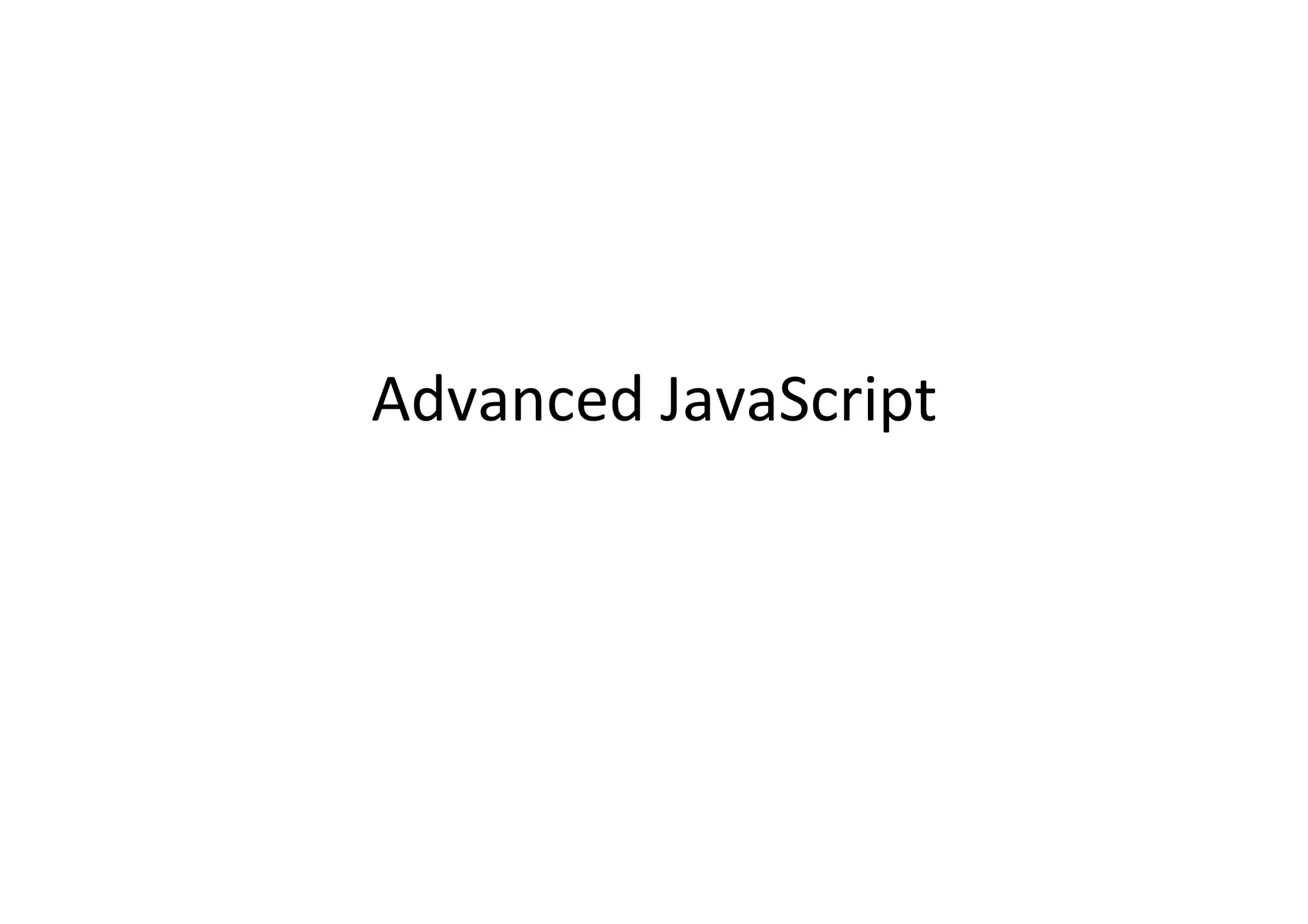
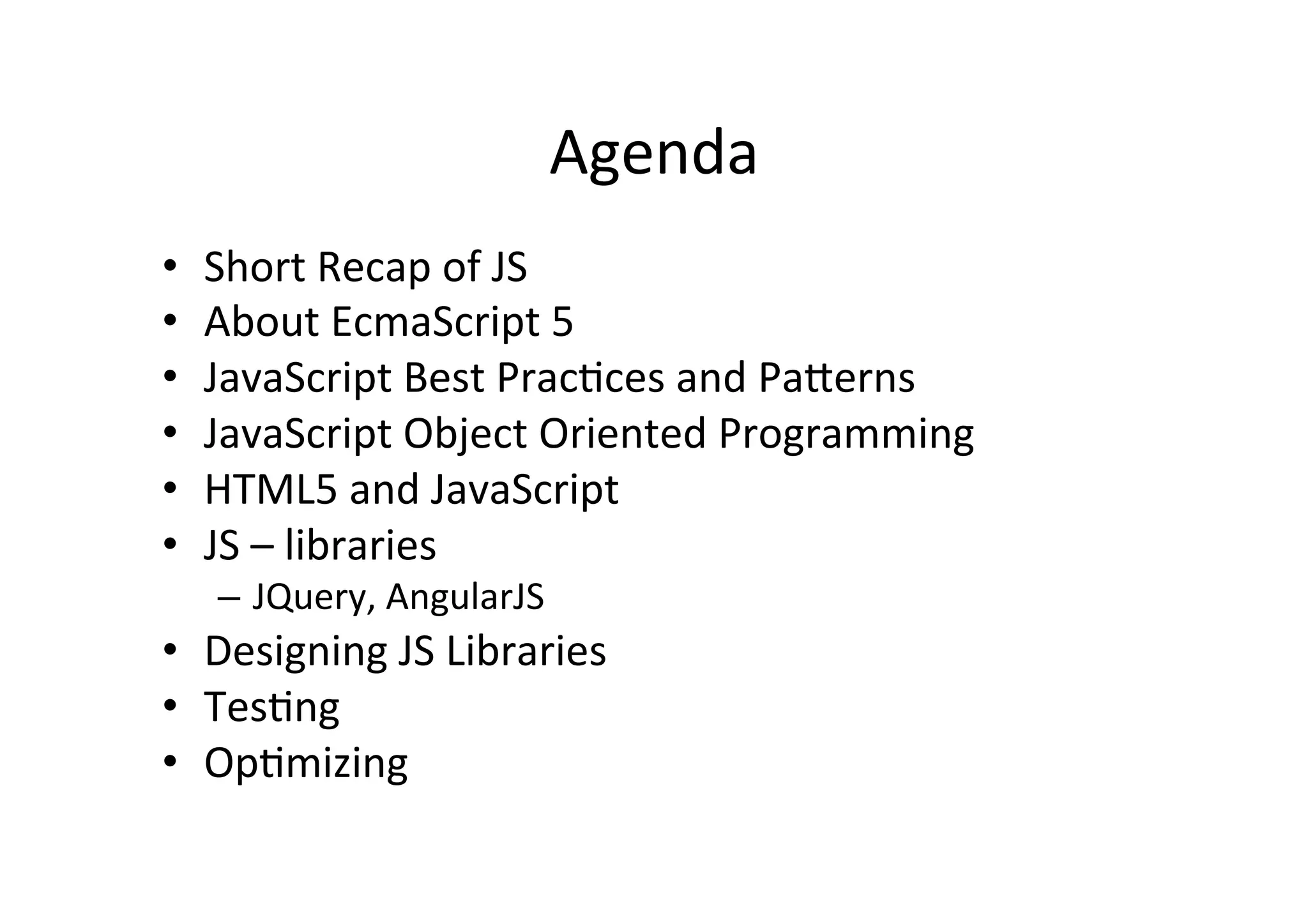
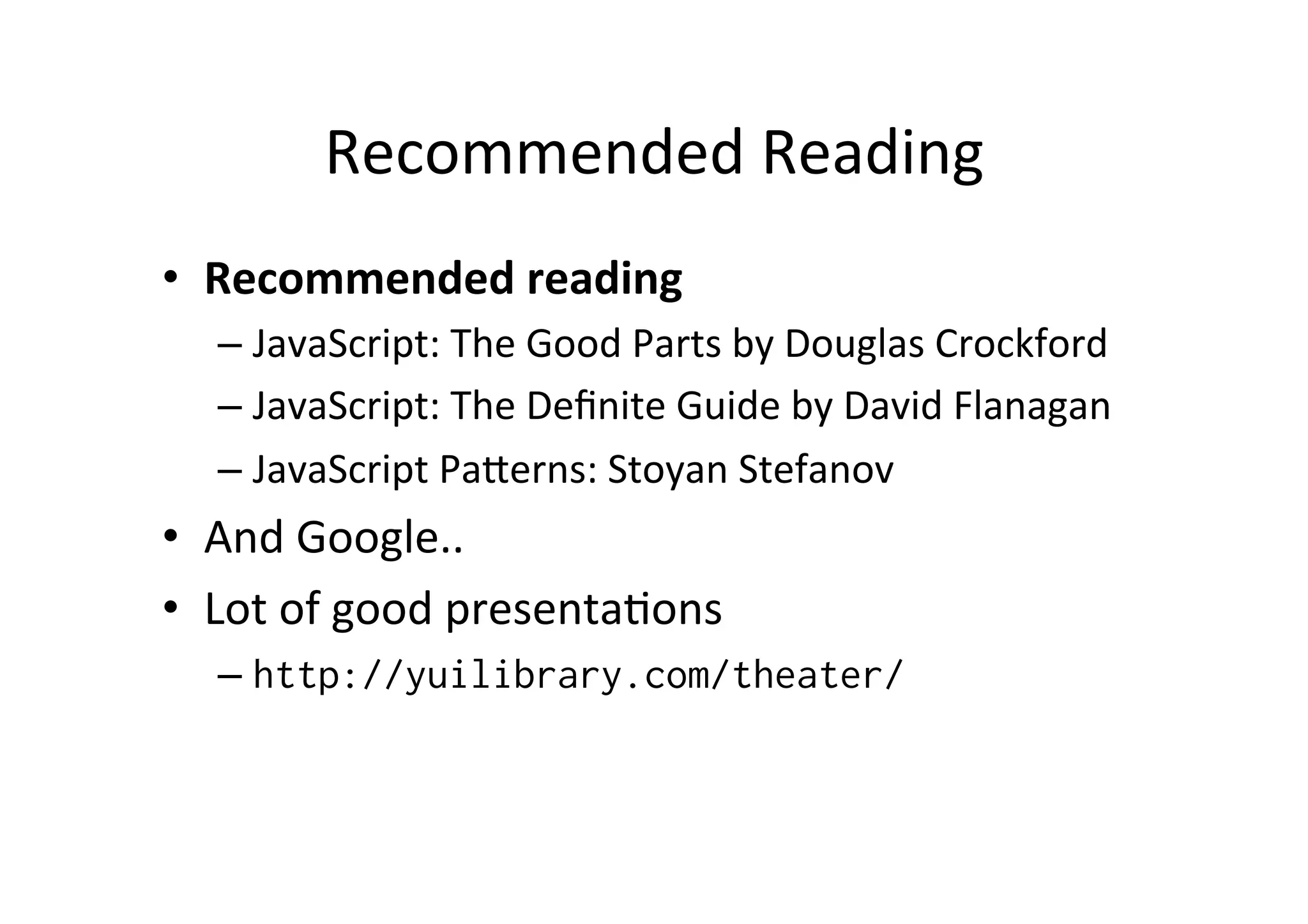
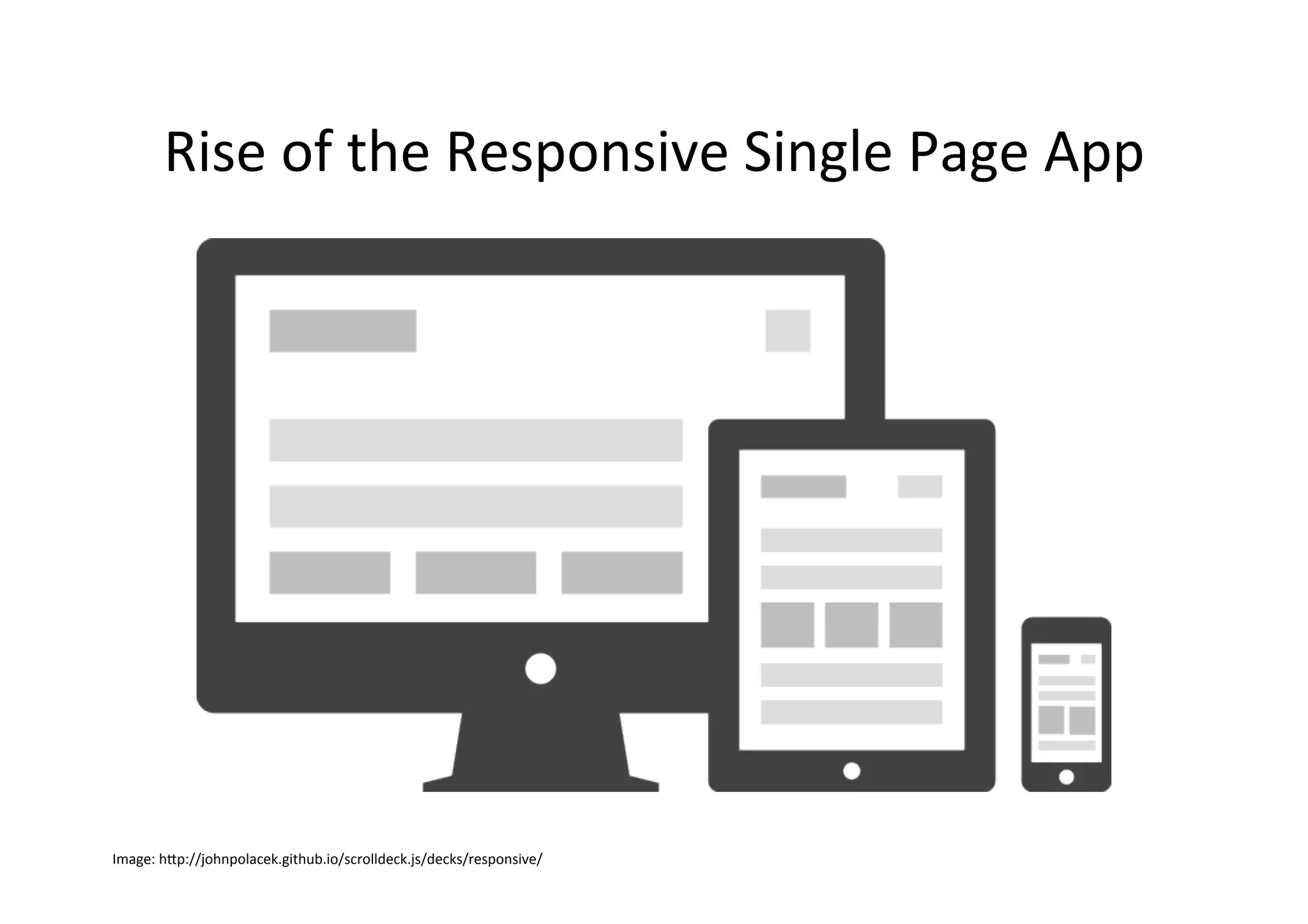
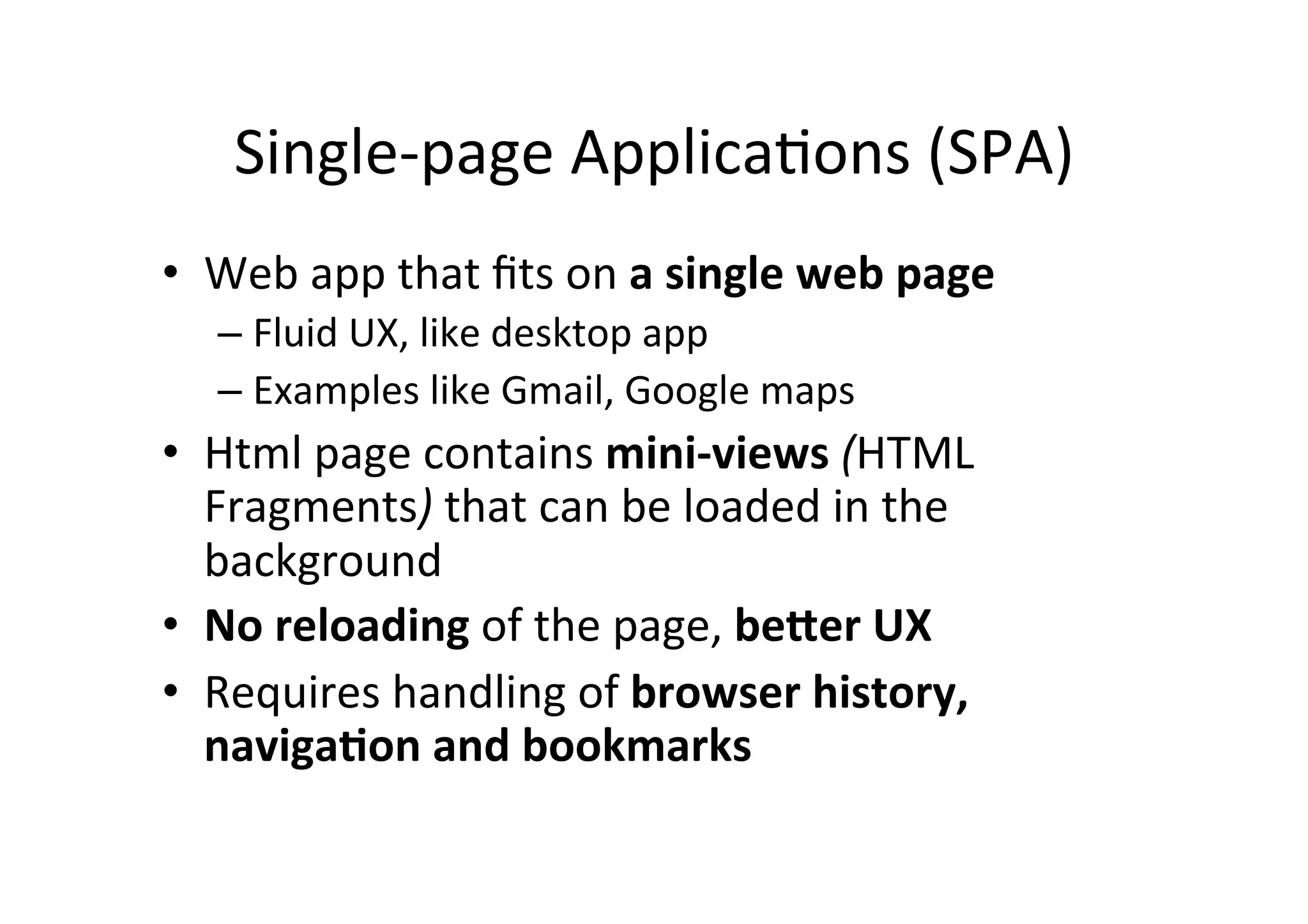
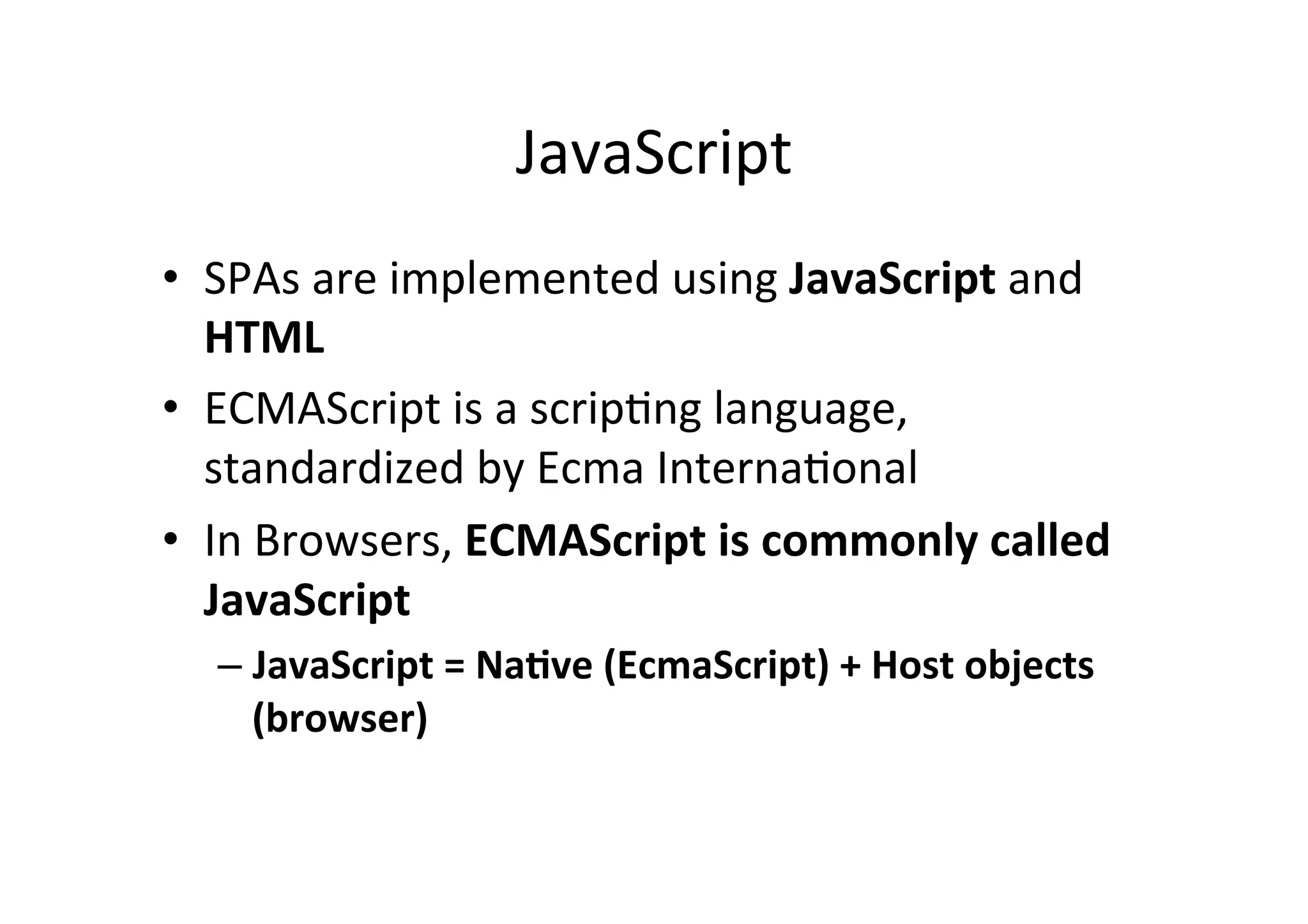
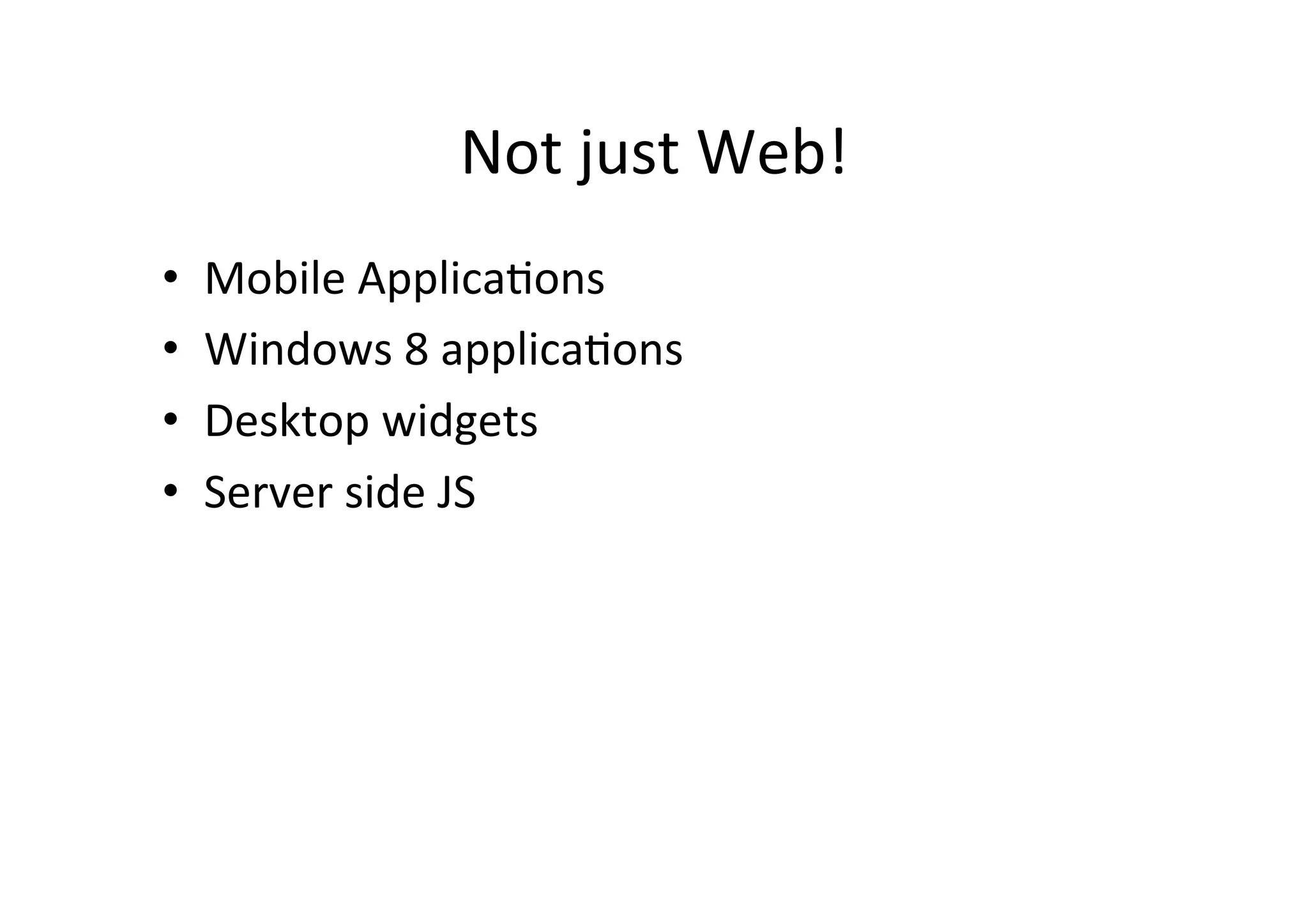
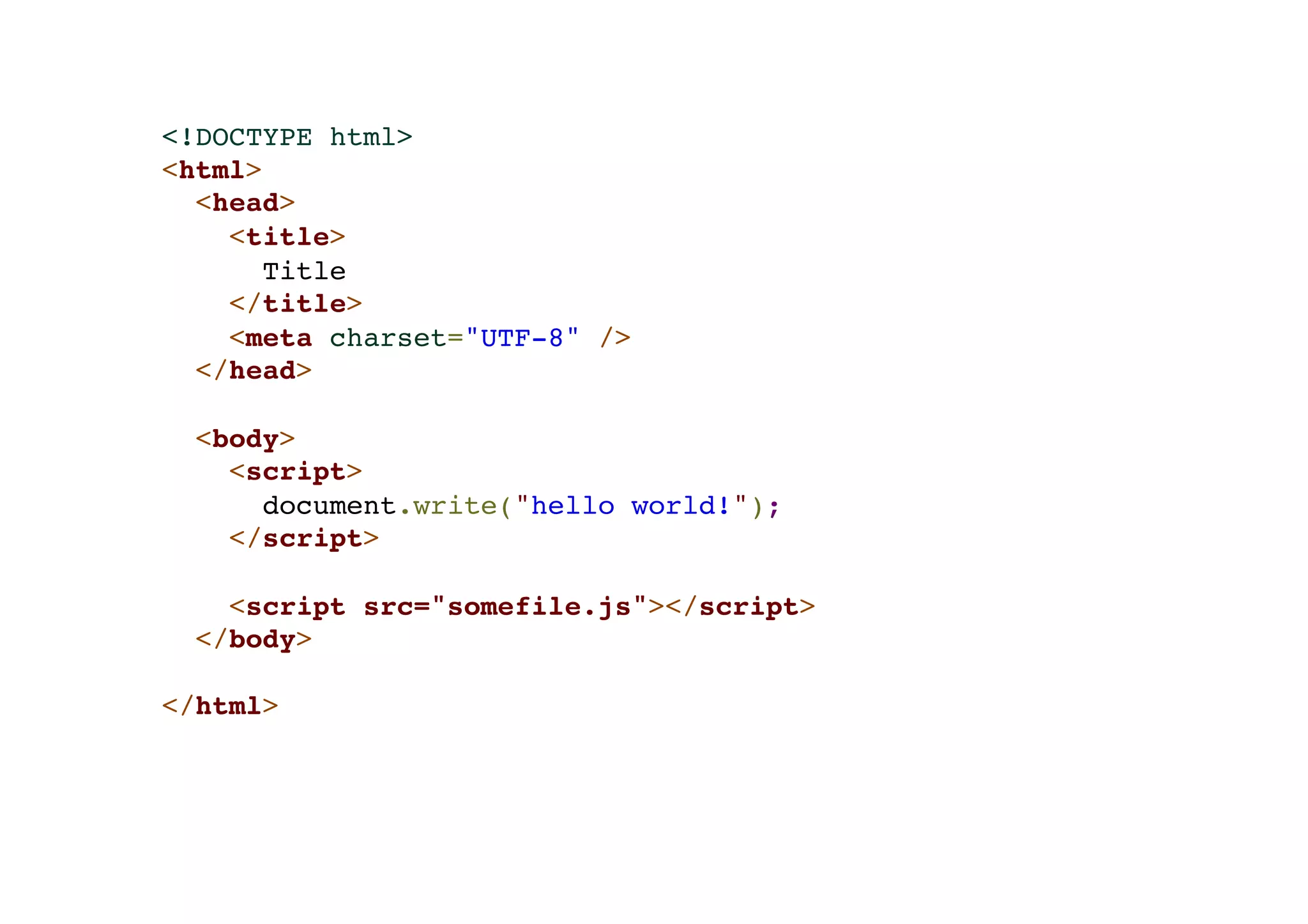
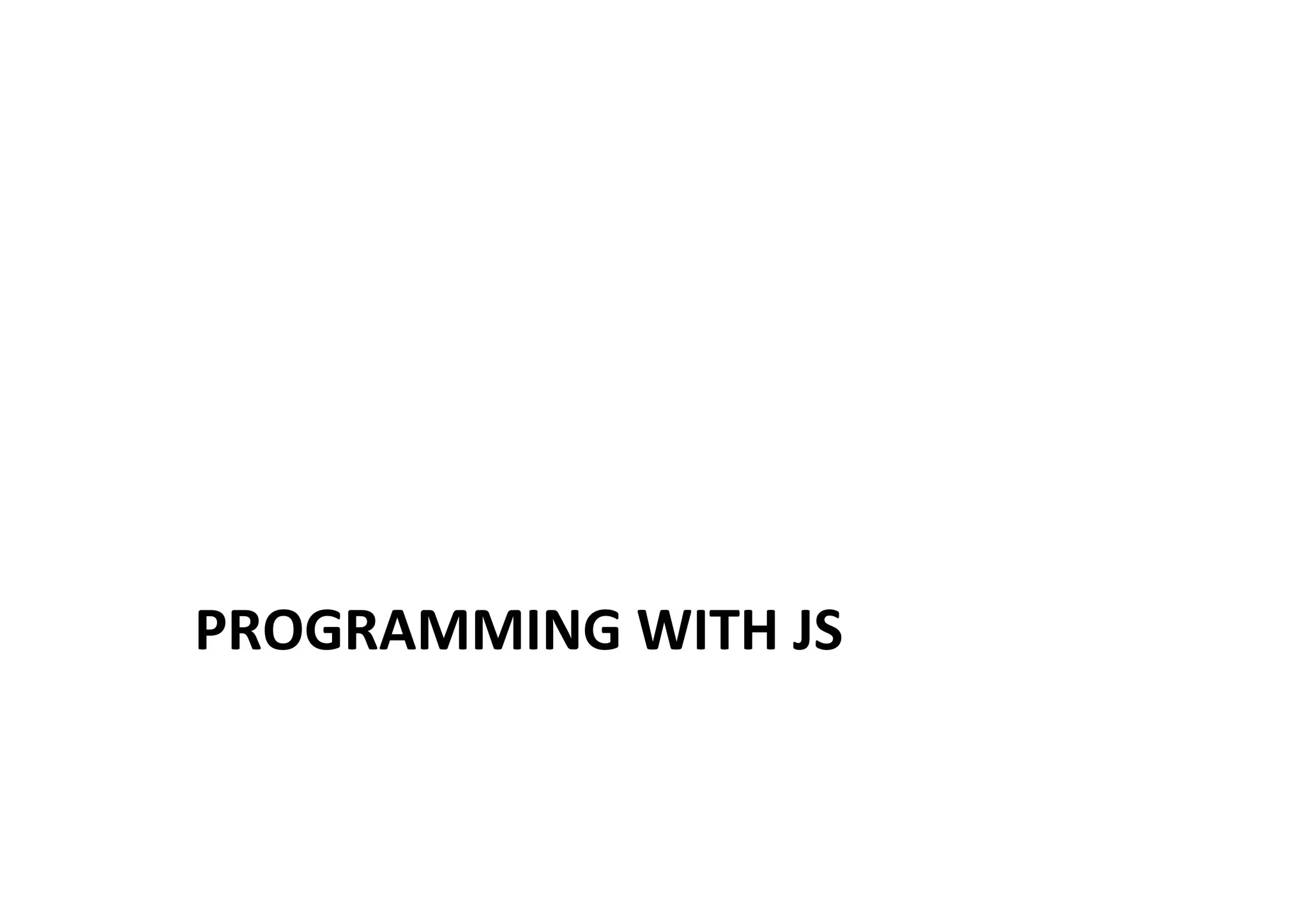
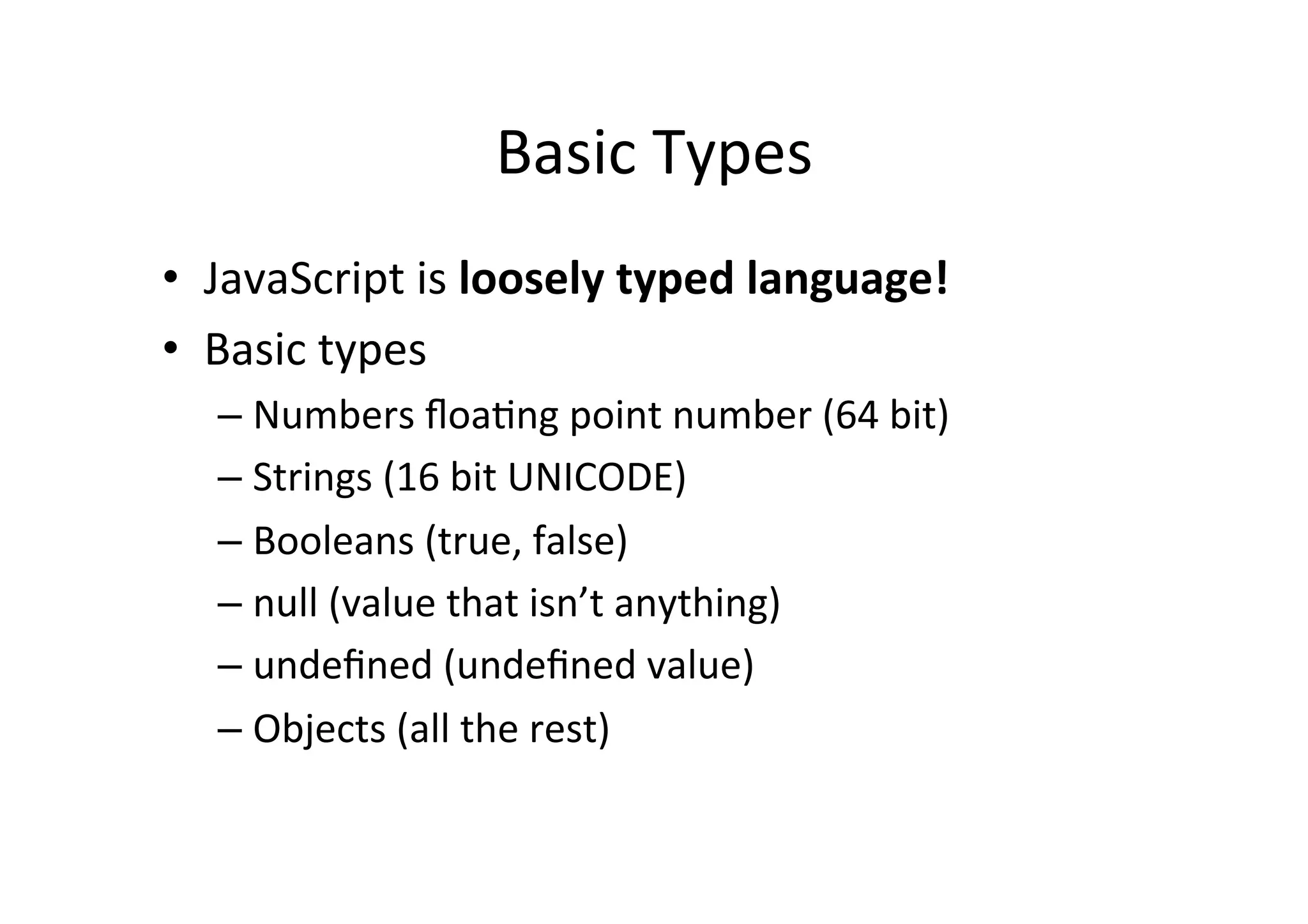
![About Numbers • Number(value), converts en>re string – var i = Number("12"); • parseInt(value[, radix]), converts start of the string – var i = parseInt("12px", 10); – Radix? • 10 => integer number, 8 => octal number, 16 => hexadecimal • While this parameter is op>onal, always specify it to eliminate reader confusion and to guarantee predictable behavior. Different implementa<ons produce different results when a radix is not specified. • NaN (Not a Number) – Result of erroneous opera>ons](https://image.slidesharecdn.com/00-advanced-intro-to-js-all-recovered-141201020204-conversion-gate02/75/Advanced-JavaScript-Development-11-2048.jpg)
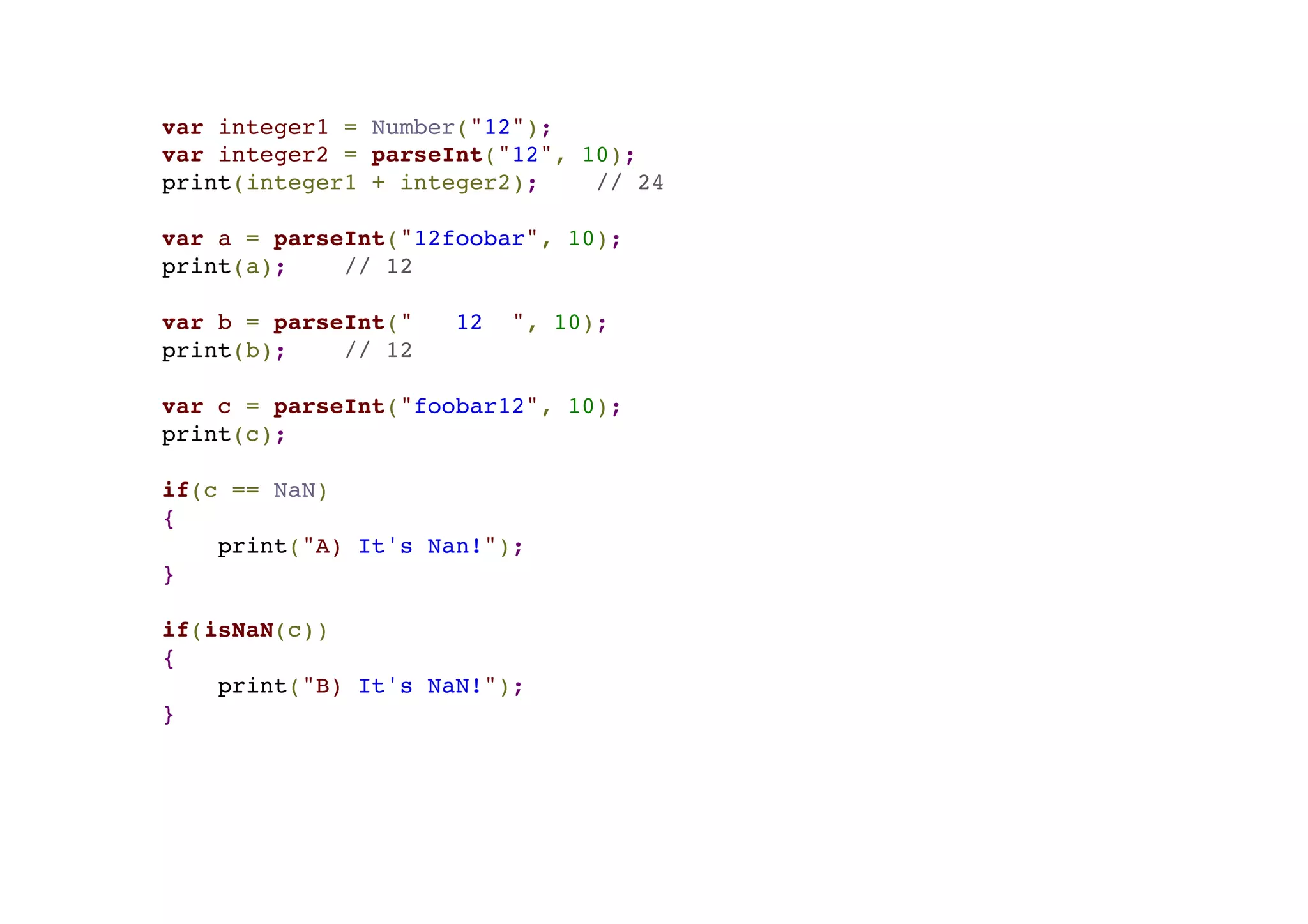
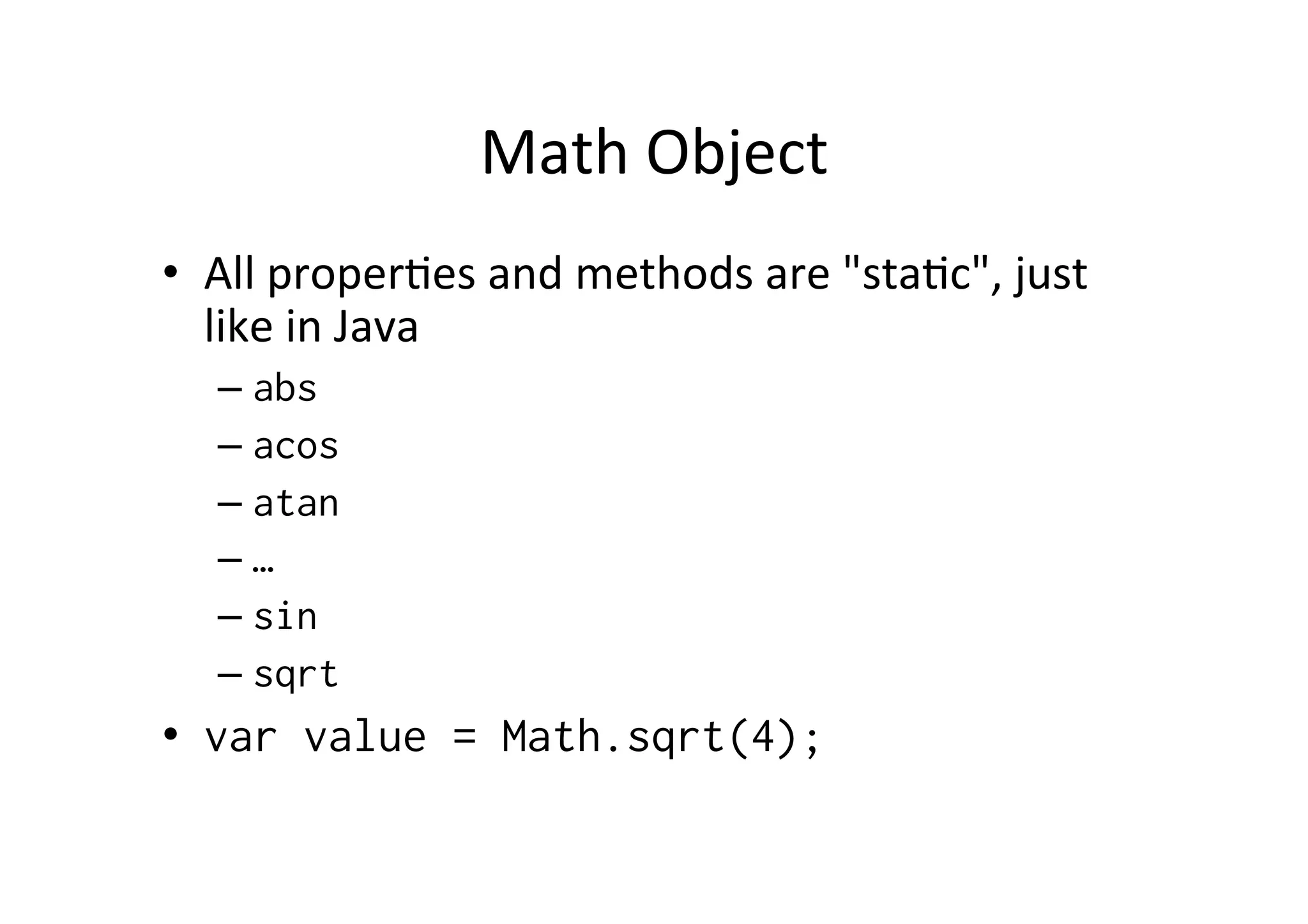
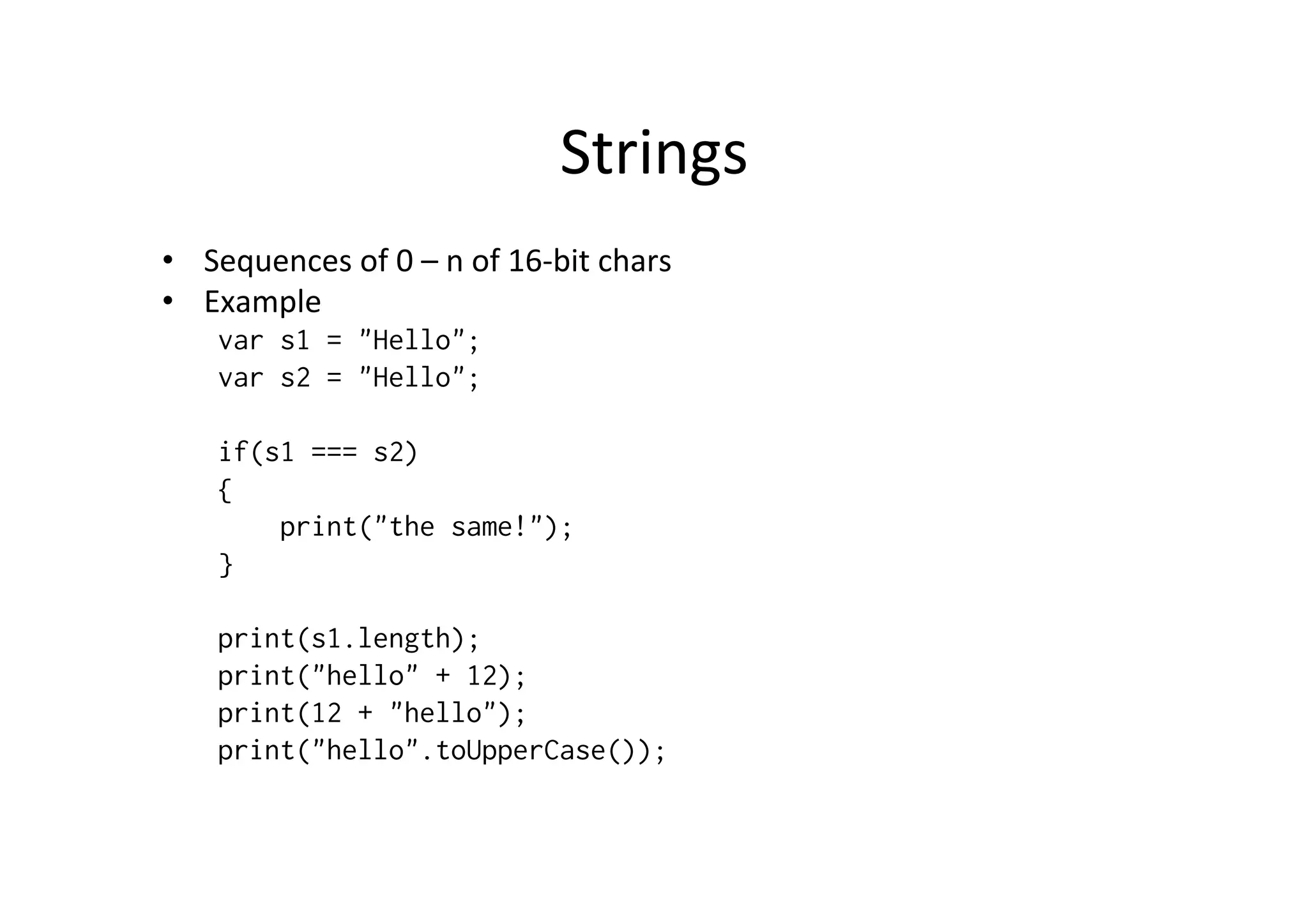
![True or false? var myArray1 = [false, null, undefined, "", 0, NaN]; // EcmaScript 5 feature! // Iterate the array myArray1.forEach(function(entry) { if(entry) { print(entry); // Here? } });](https://image.slidesharecdn.com/00-advanced-intro-to-js-all-recovered-141201020204-conversion-gate02/75/Advanced-JavaScript-Development-15-2048.jpg)
![True or false? var myArray1 = ["false", "0", "undefined", "NaN"]; // EcmaScript 5 feature! // Iterate the array myArray1.forEach(function(entry) { if(entry) { print(entry); } });](https://image.slidesharecdn.com/00-advanced-intro-to-js-all-recovered-141201020204-conversion-gate02/75/Advanced-JavaScript-Development-16-2048.jpg)
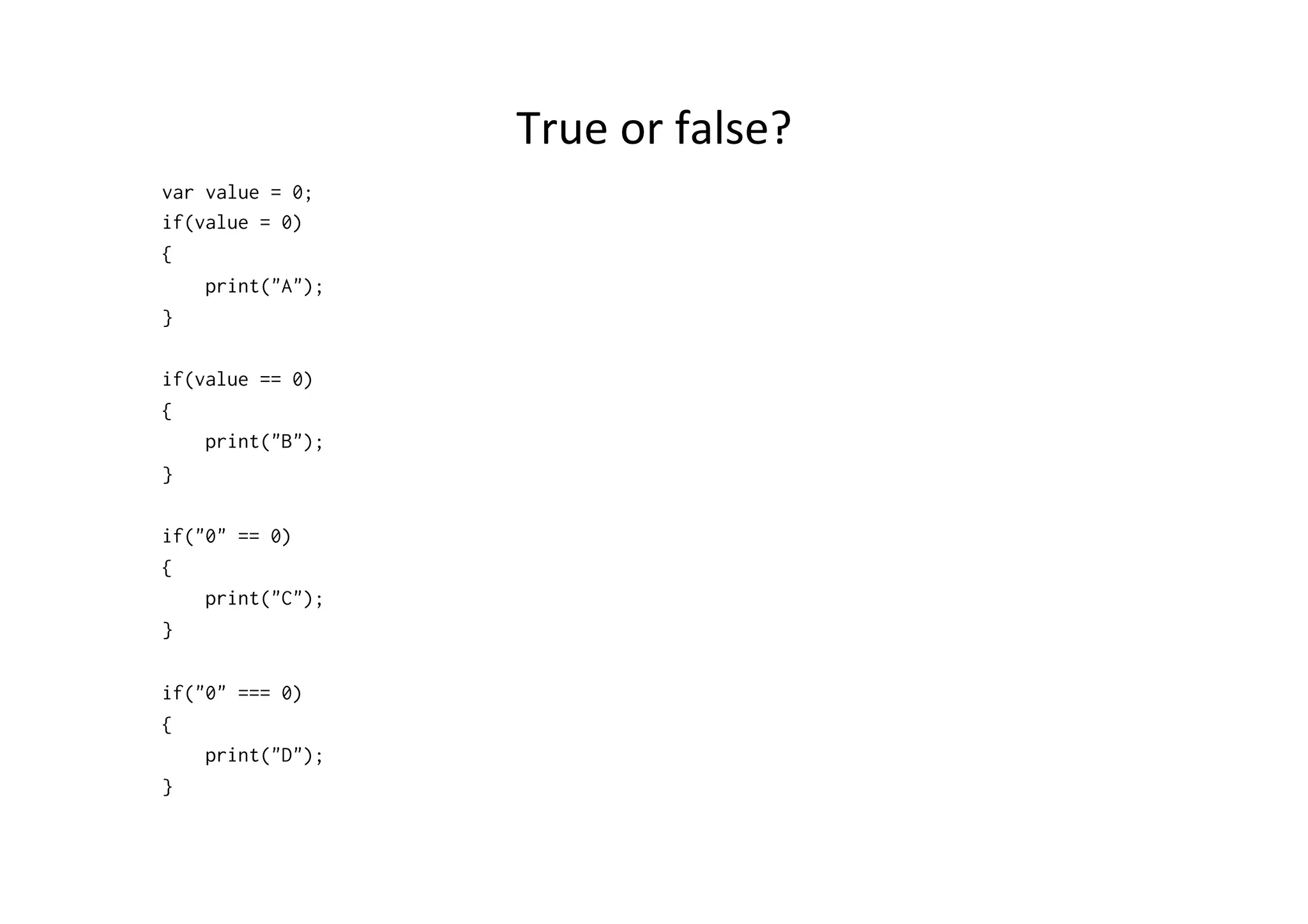
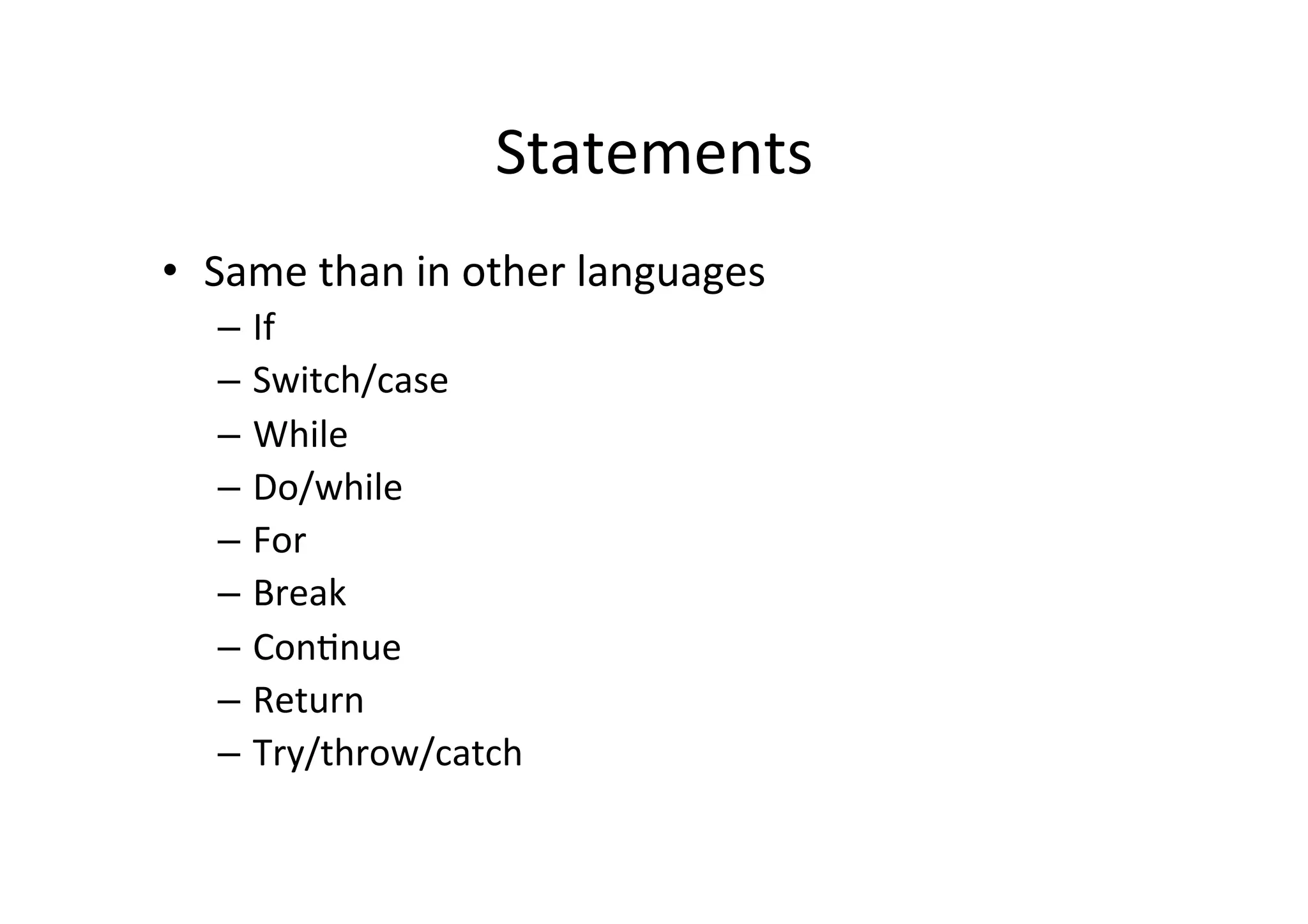
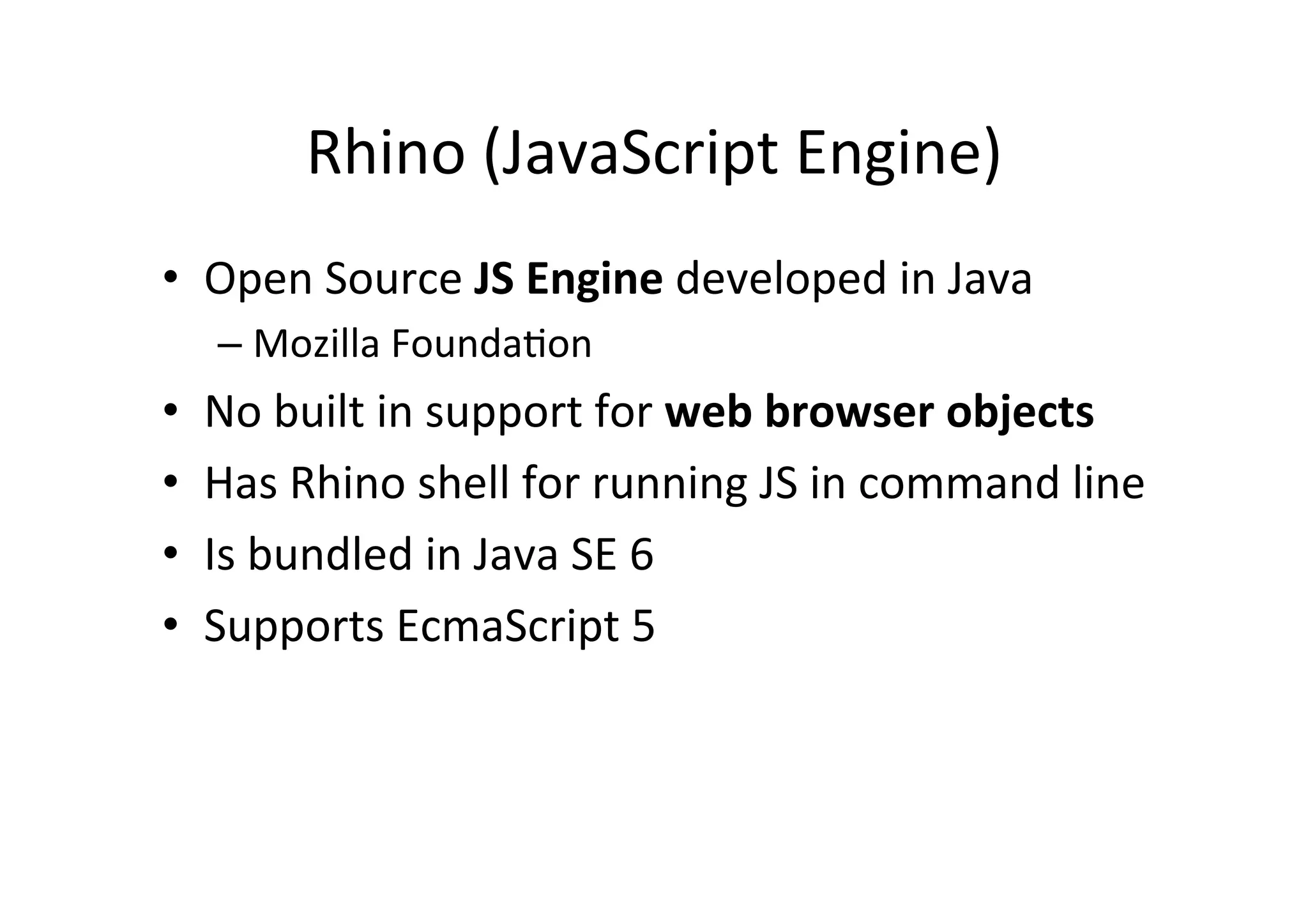

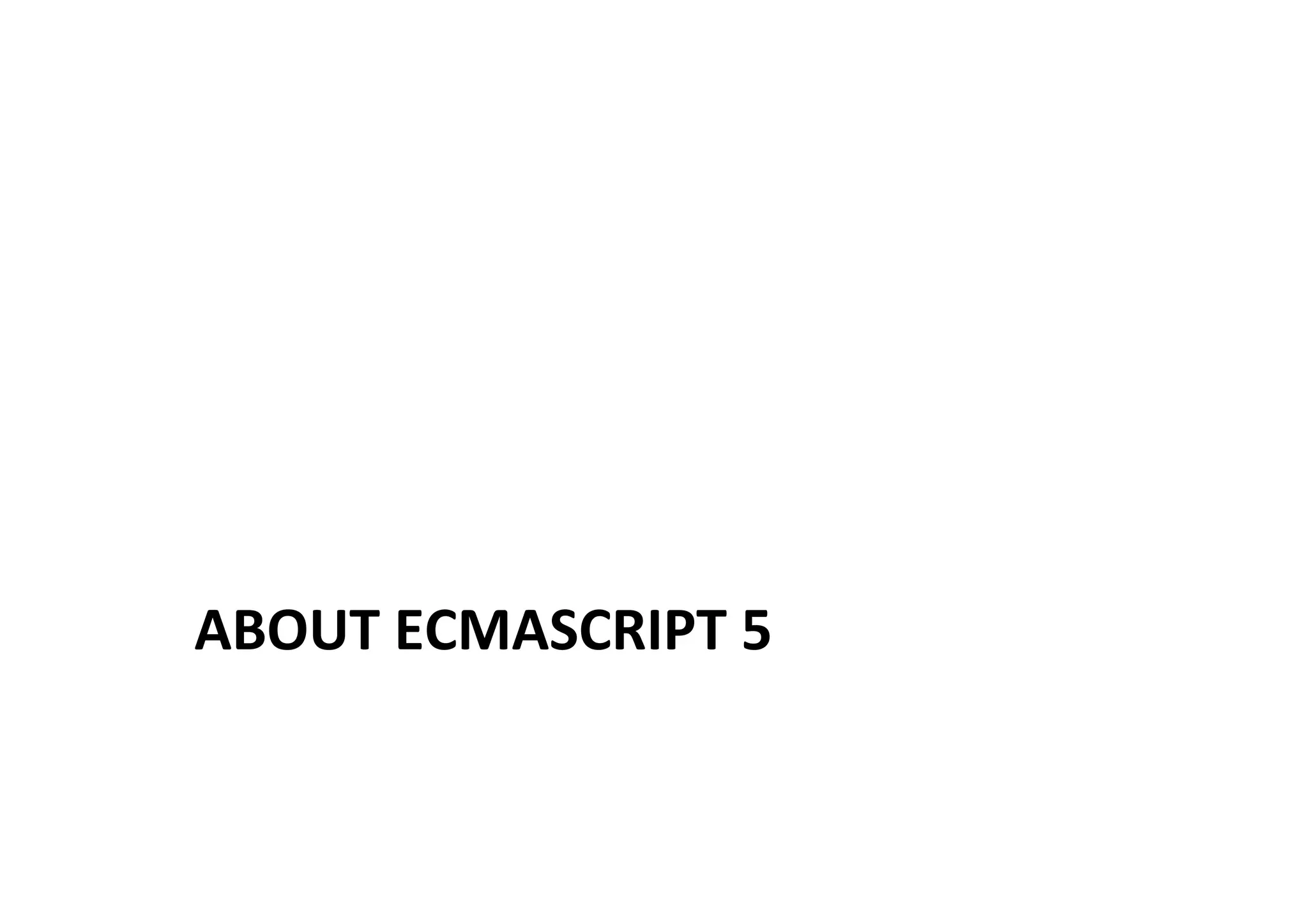
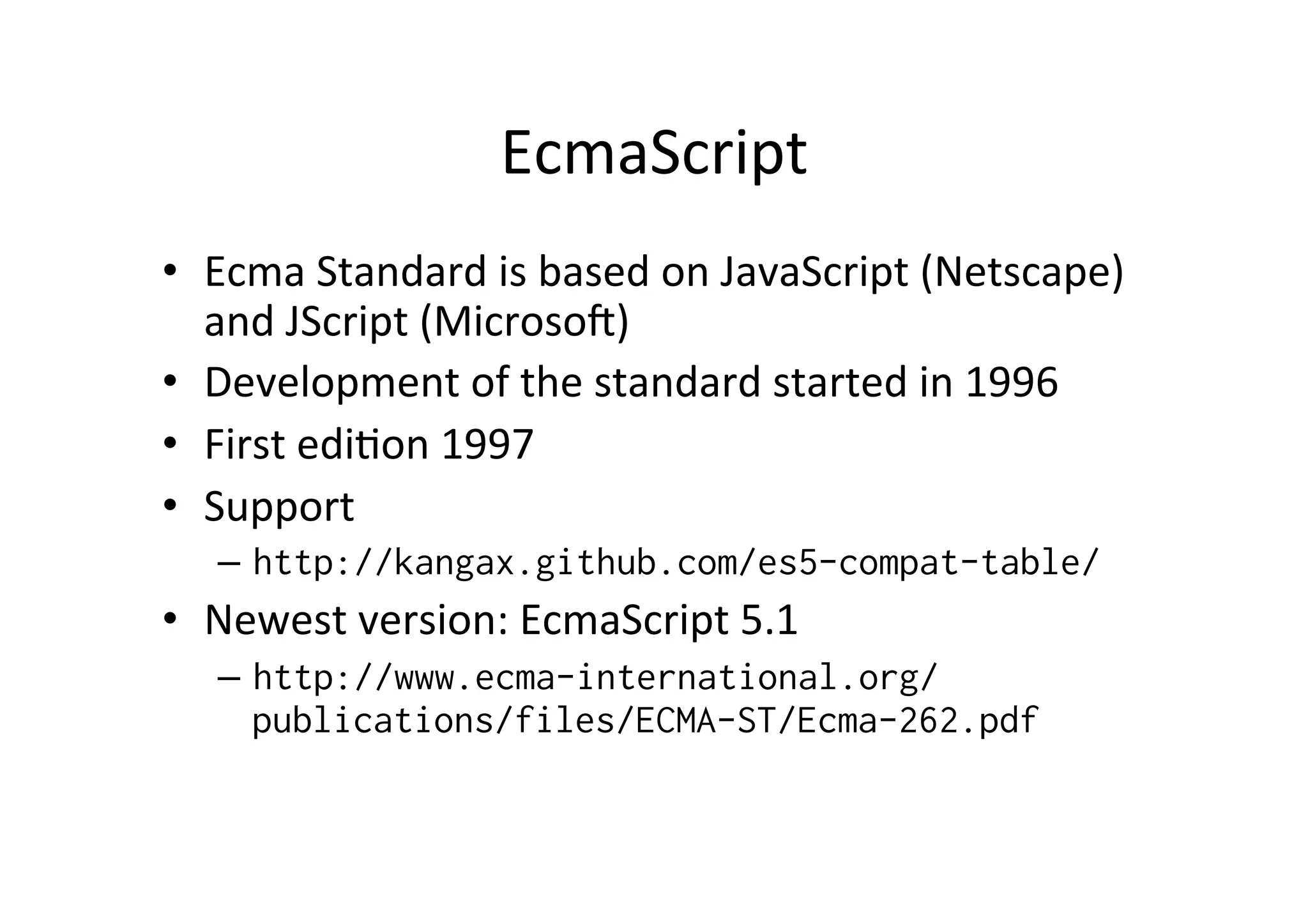
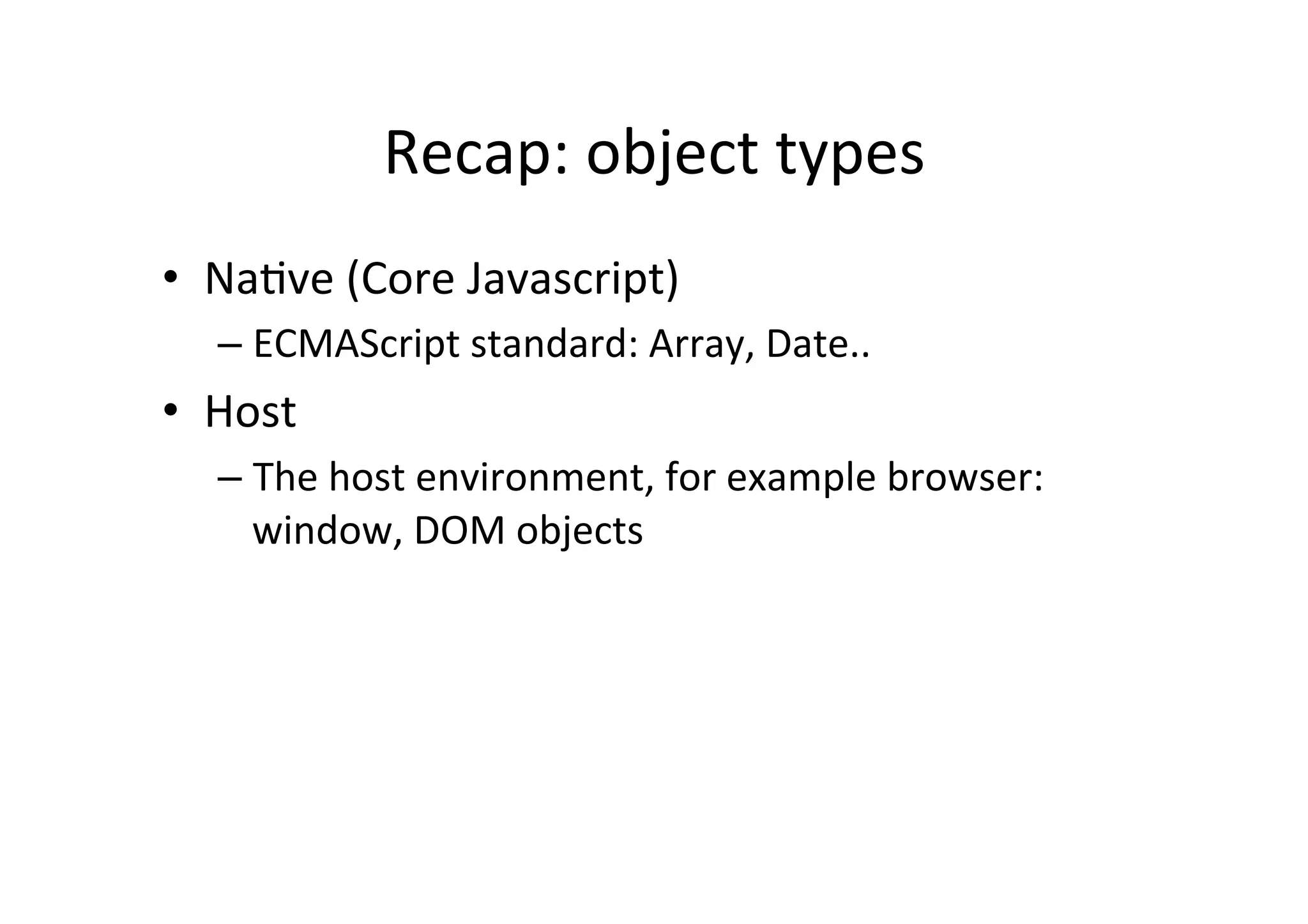
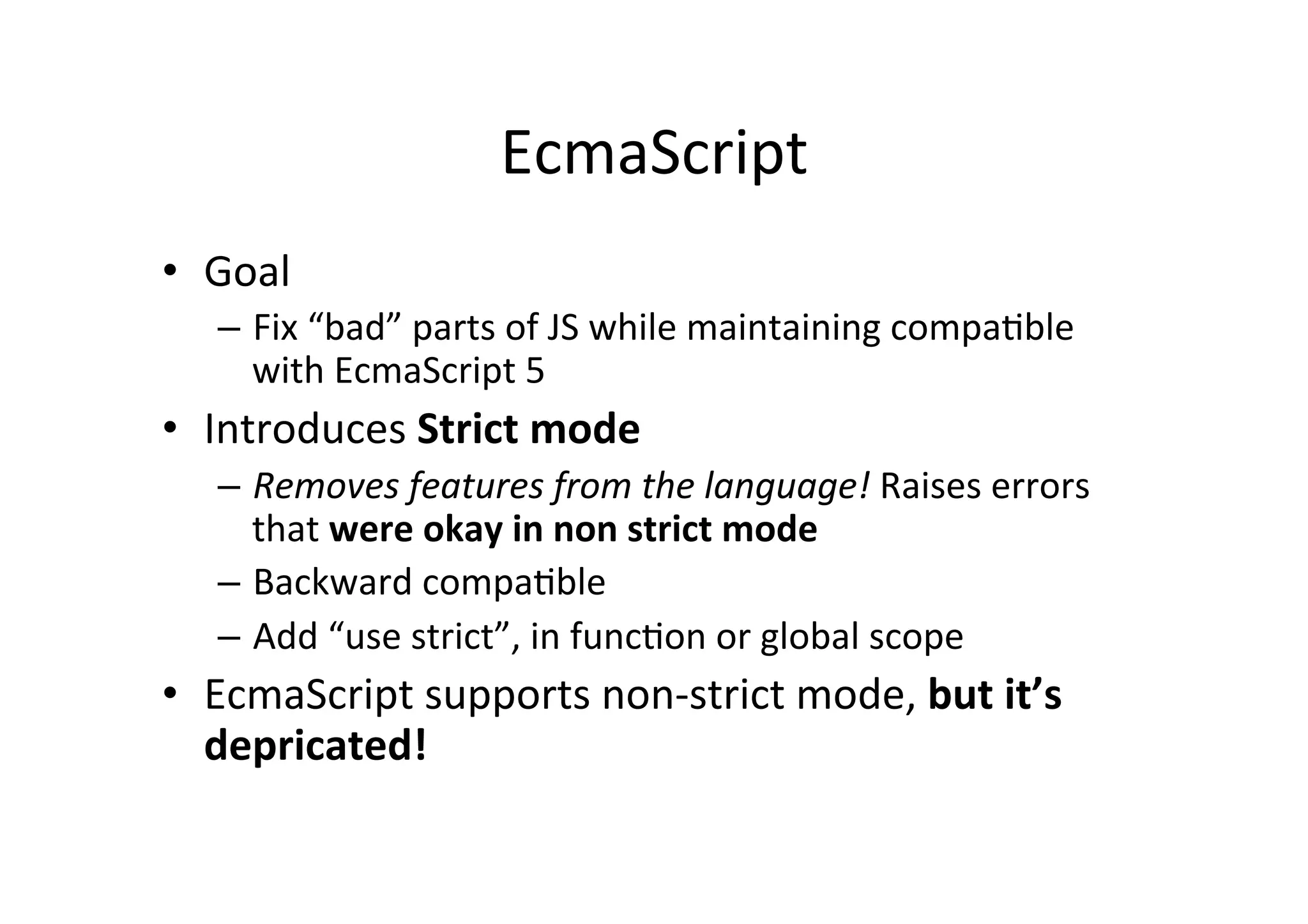
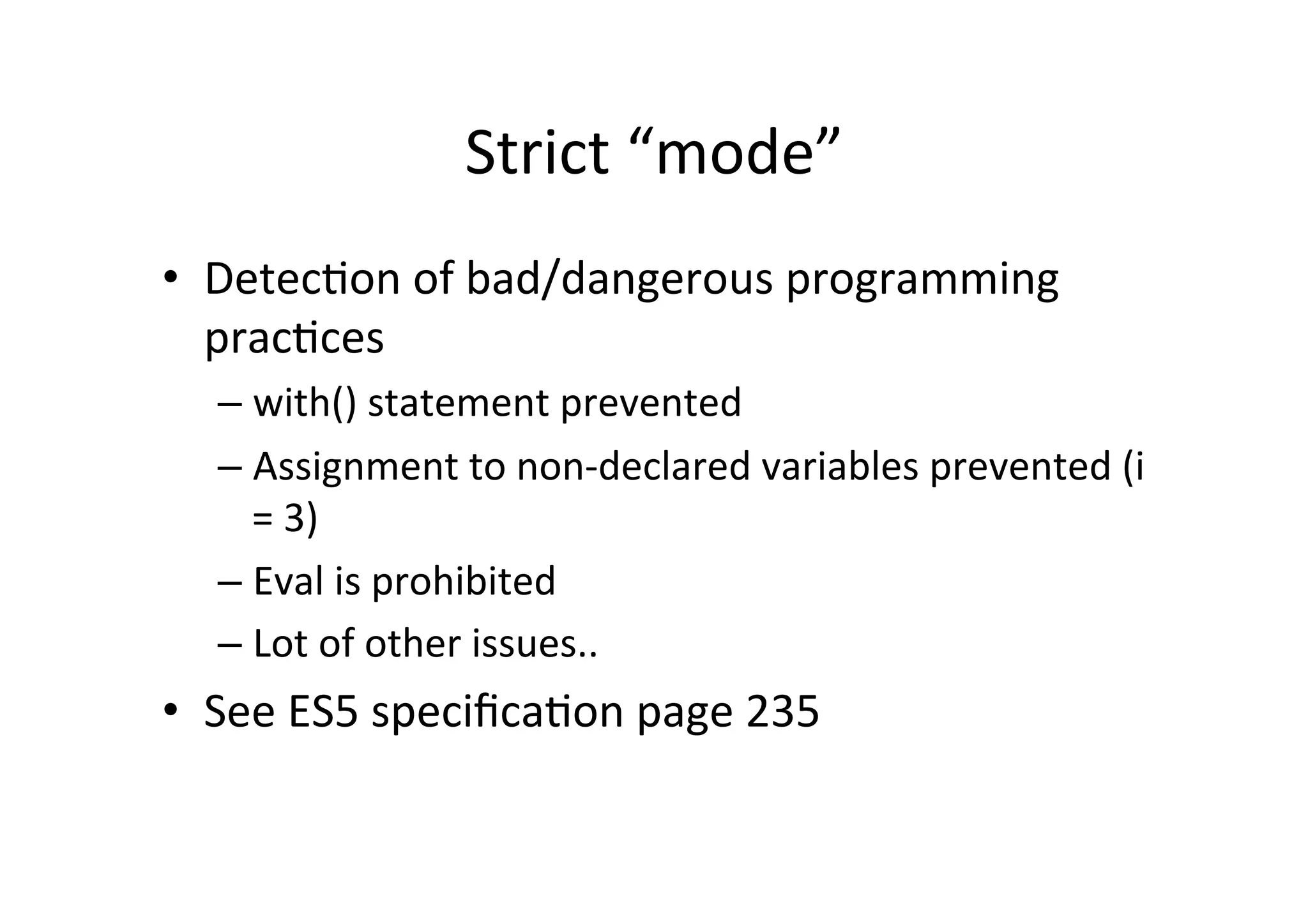
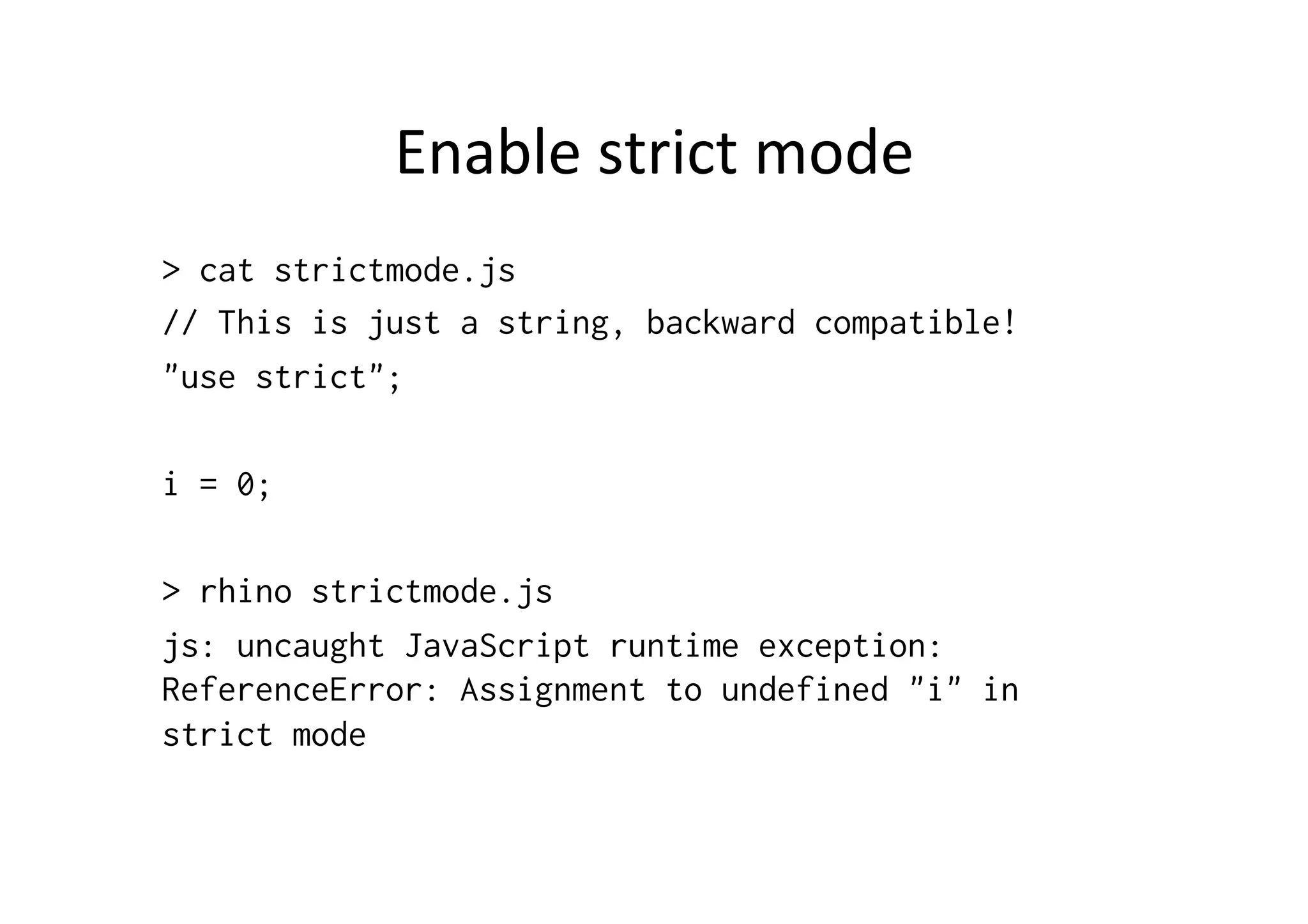
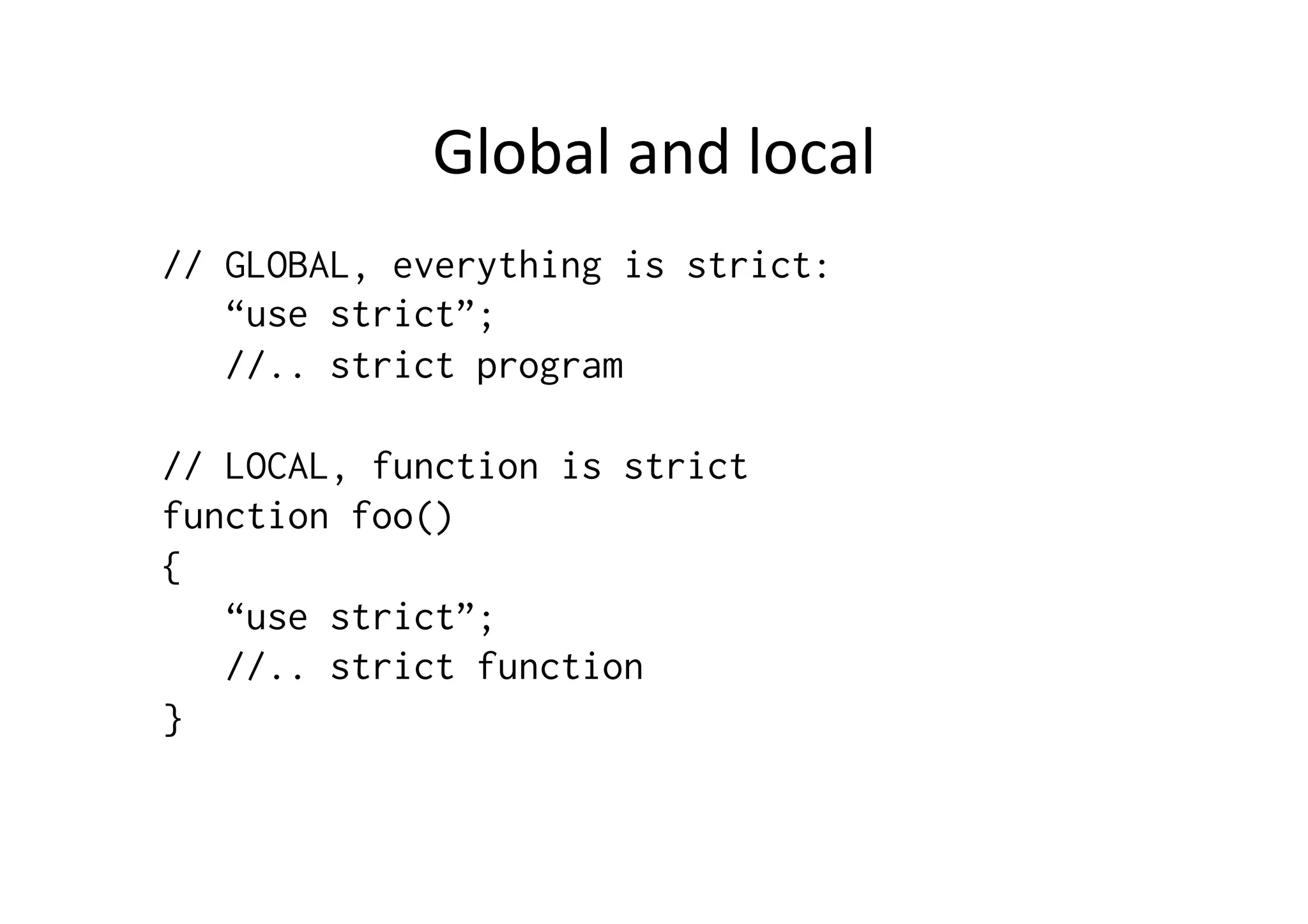
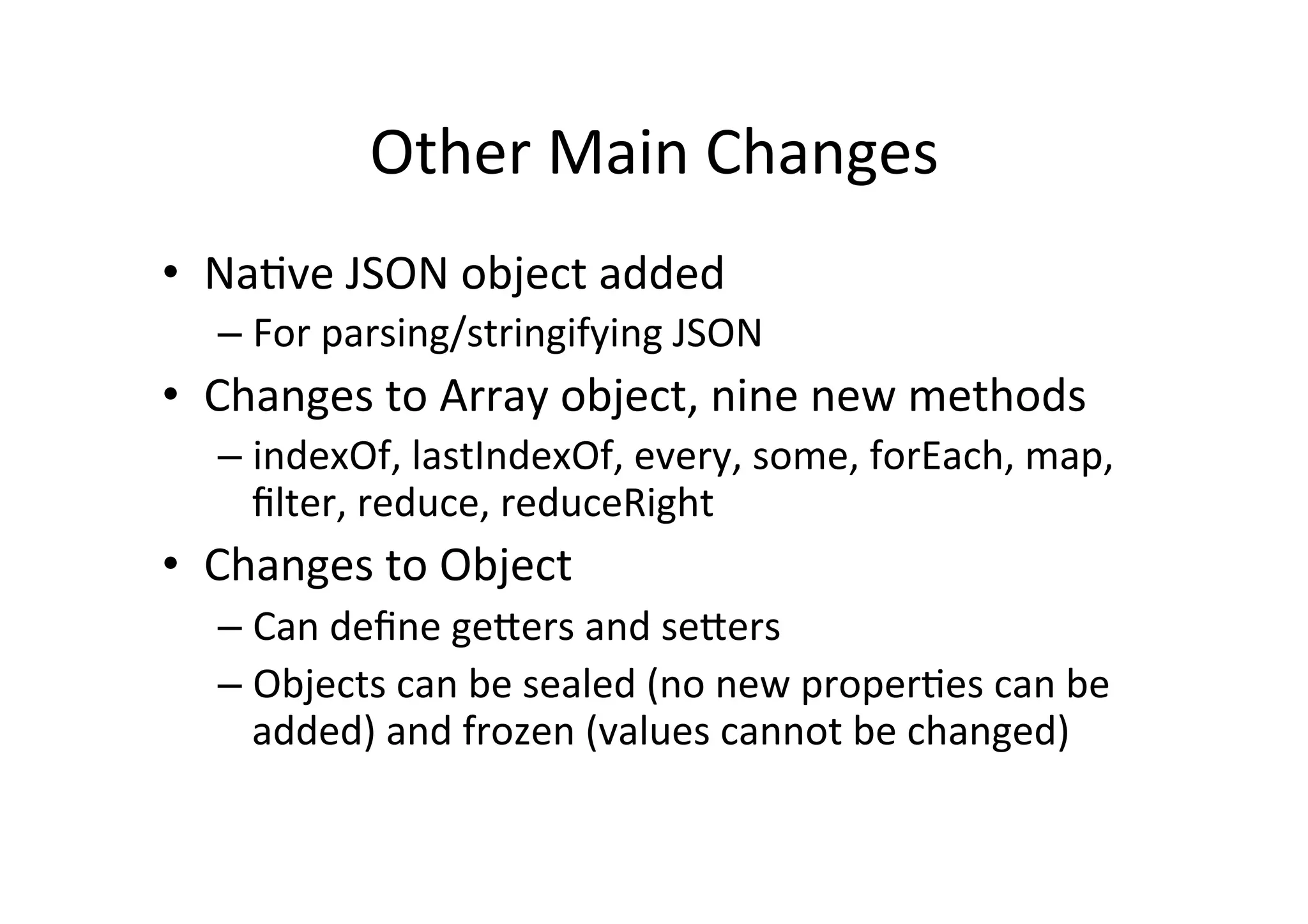
![JSON and Weather Underground myObject = JSON.parse(httpObj.responseText); city = myObject.location.city; now = myObject.forecast.txt_forecast.forecastday[0].fcttext_metric; icon = myObject.forecast.txt_forecast.forecastday[0].icon_url;](https://image.slidesharecdn.com/00-advanced-intro-to-js-all-recovered-141201020204-conversion-gate02/75/Advanced-JavaScript-Development-29-2048.jpg)
![forEach var arr = ["apple", "banana", "carrot", "apple"]; print(arr.indexOf("apple")); // 0 print(arr.indexOf("daikon")); // -1 print(arr.lastIndexOf("apple")); // 3 arr.forEach(function (entry) { print(entry) } );](https://image.slidesharecdn.com/00-advanced-intro-to-js-all-recovered-141201020204-conversion-gate02/75/Advanced-JavaScript-Development-30-2048.jpg)
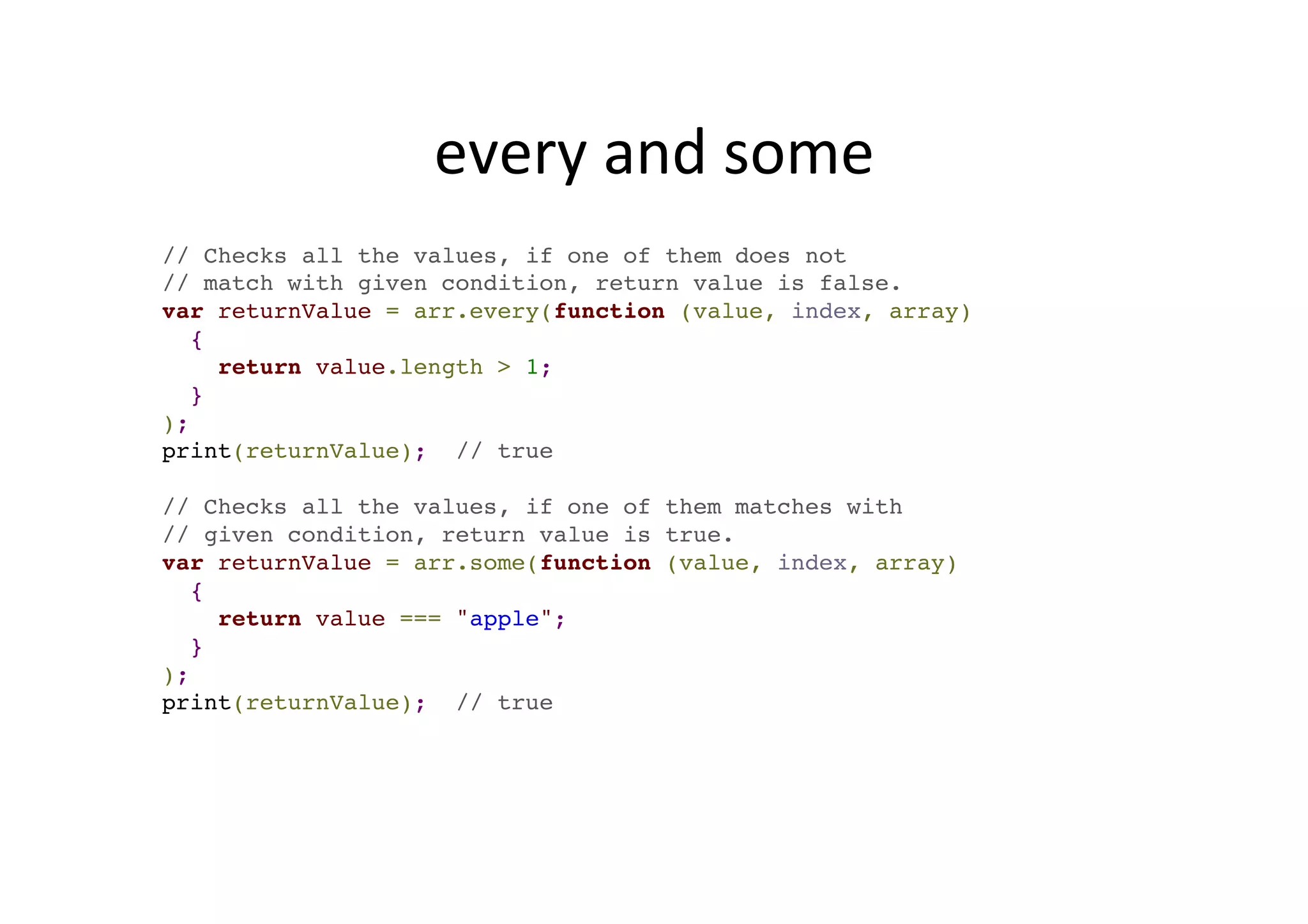
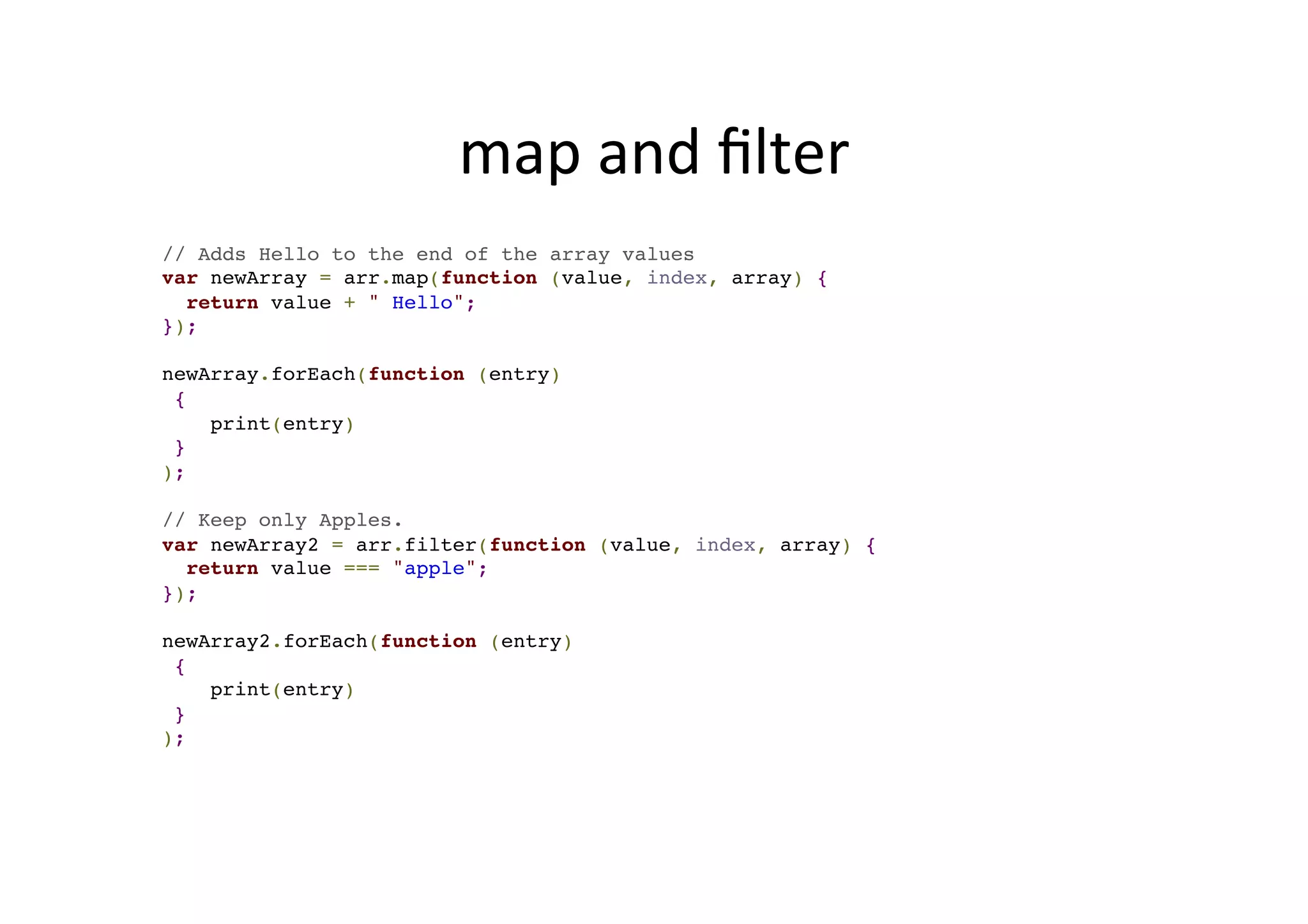
![reduce var value = [10, 20, 30, 40, 50].reduce(function (previousValue, currentValue, index, array) { print("previousValue = " + previousValue); print("currentValue = " + currentValue); return previousValue + currentValue; }, 0); print("result = " + value); /* previousValue = 0 currentValue = 10 previousValue = 10 currentValue = 20 previousValue = 30 currentValue = 30 previousValue = 60 currentValue = 40 previousValue = 100 currentValue = 50 result = 150 */](https://image.slidesharecdn.com/00-advanced-intro-to-js-all-recovered-141201020204-conversion-gate02/75/Advanced-JavaScript-Development-33-2048.jpg)
![reduceRight var value = [10, 20, 30, 40, 50].reduceRight(function (previousValue, currentValue, index, array) { print("previousValue = " + previousValue); print("currentValue = " + currentValue); return previousValue + currentValue; }, 0); print("result = " + value); /* previousValue = 0 currentValue = 50 previousValue = 50 currentValue = 40 previousValue = 90 currentValue = 30 previousValue = 120 currentValue = 20 previousValue = 140 currentValue = 10 result = 150 */](https://image.slidesharecdn.com/00-advanced-intro-to-js-all-recovered-141201020204-conversion-gate02/75/Advanced-JavaScript-Development-34-2048.jpg)
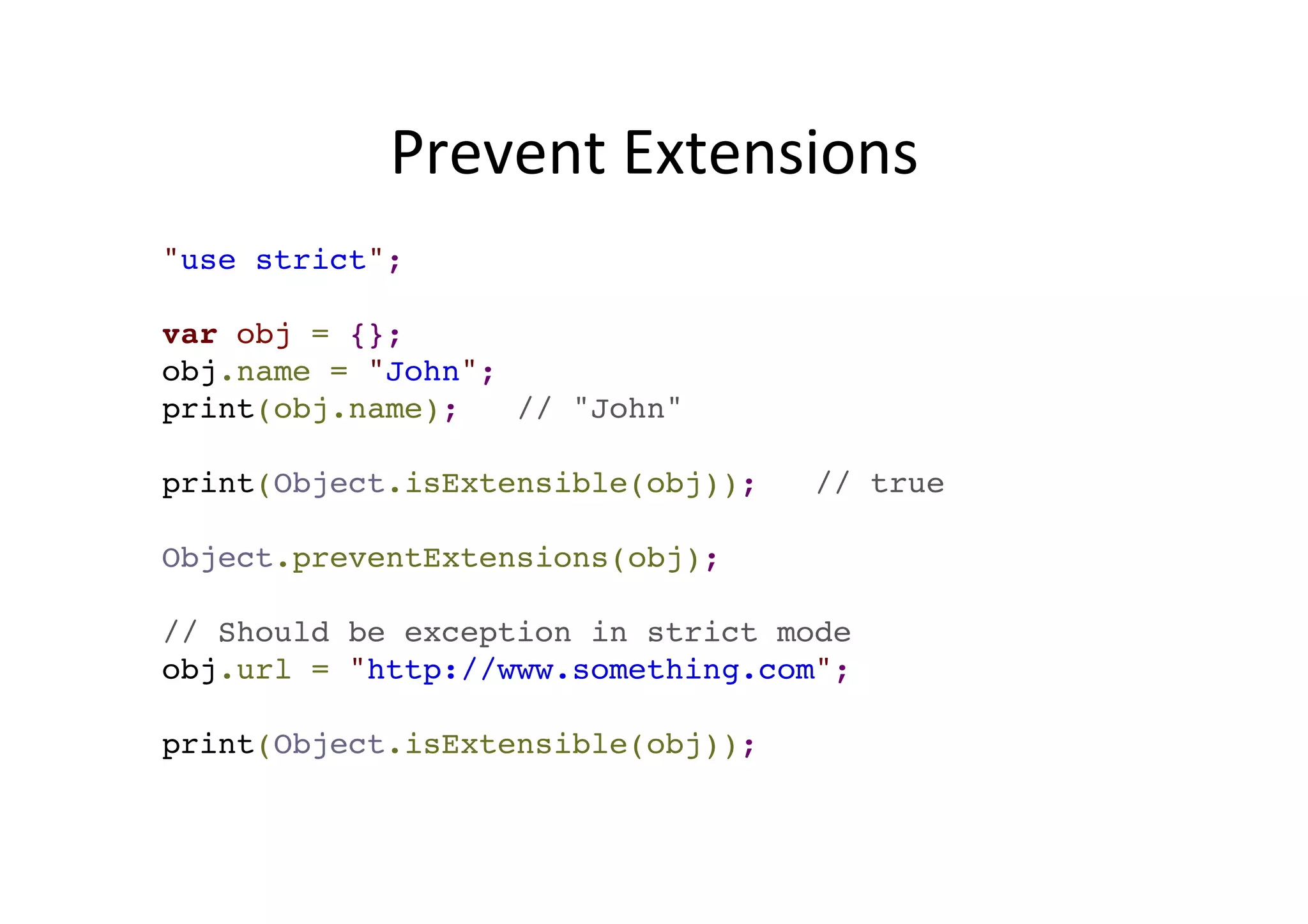
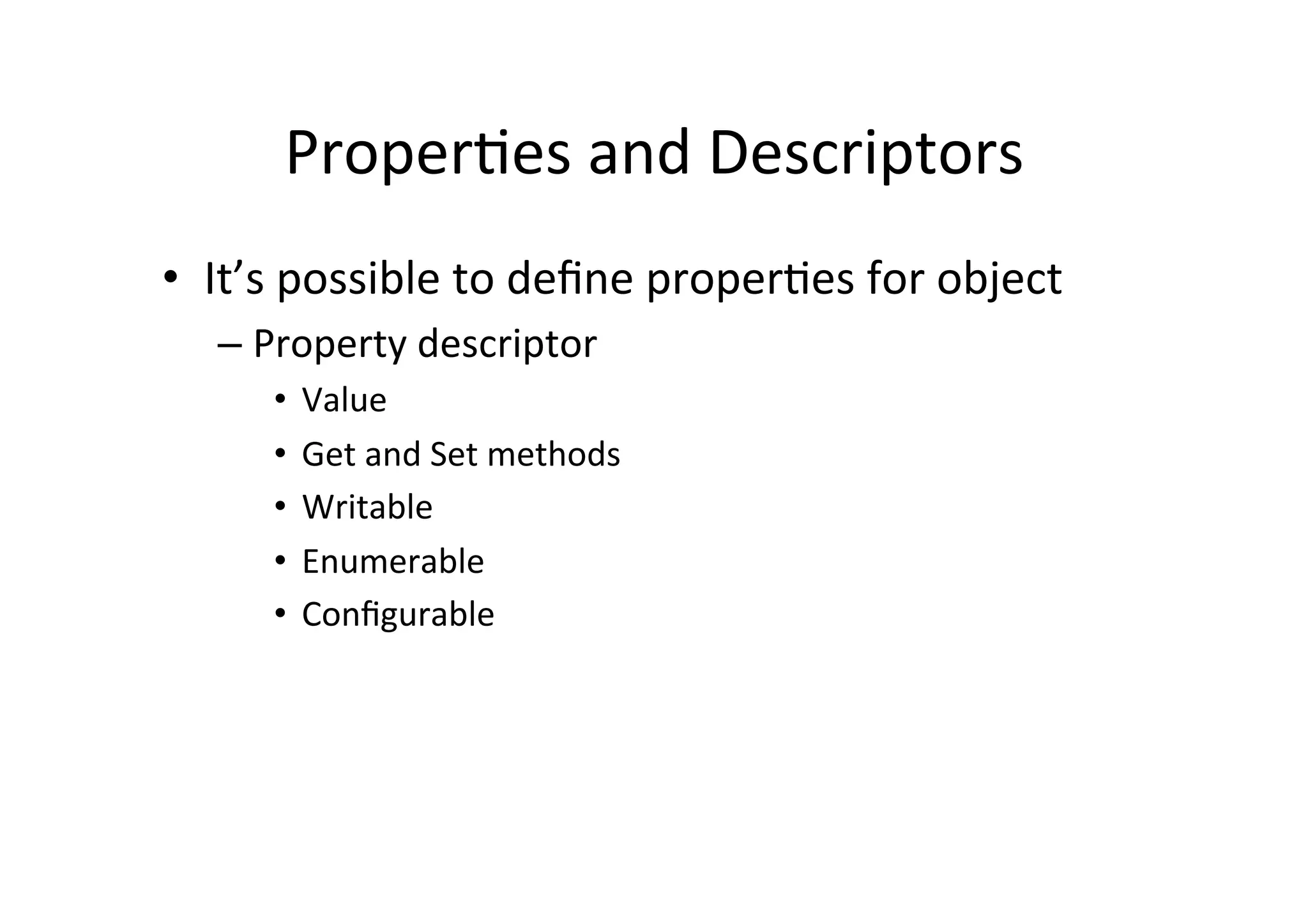
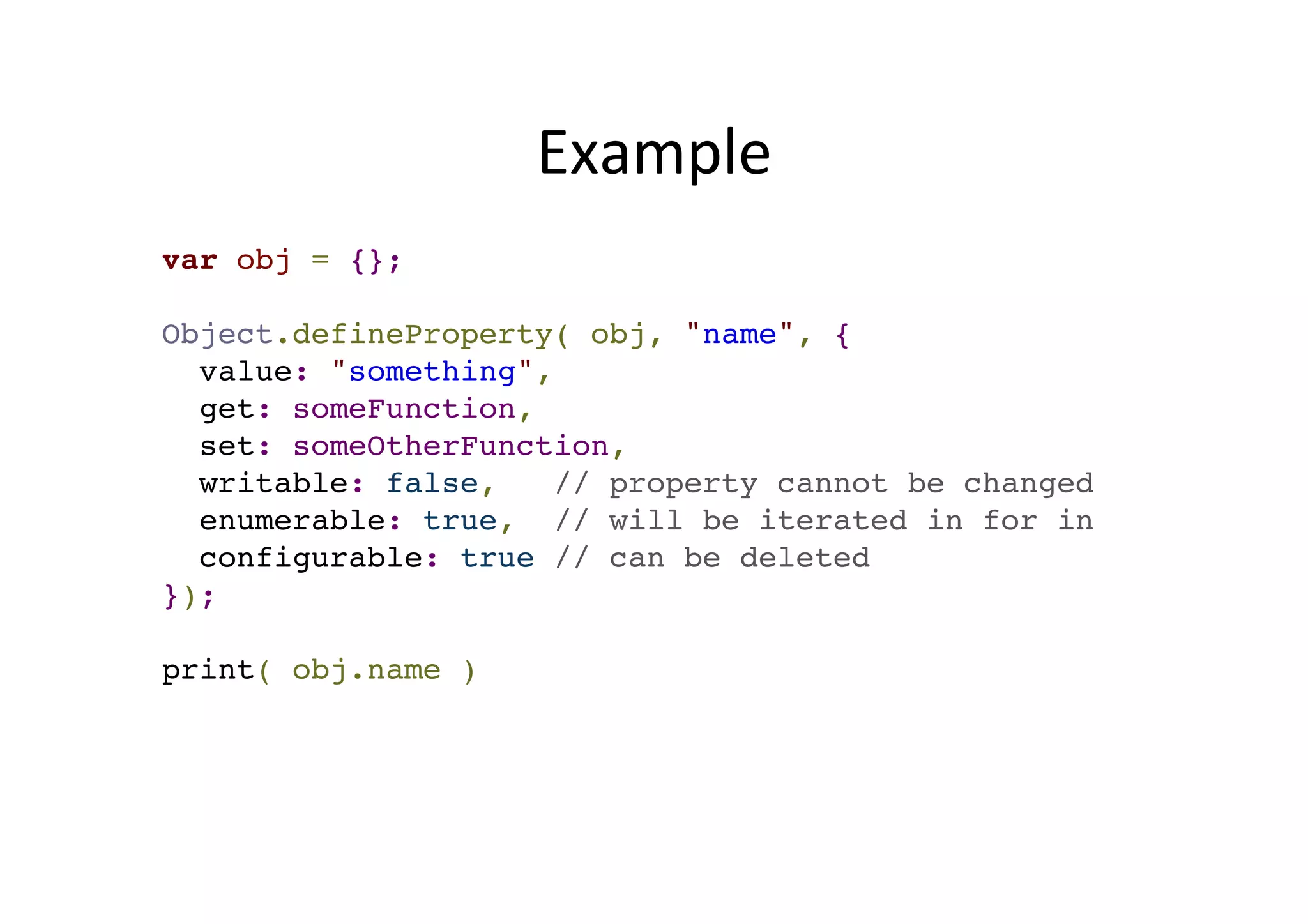
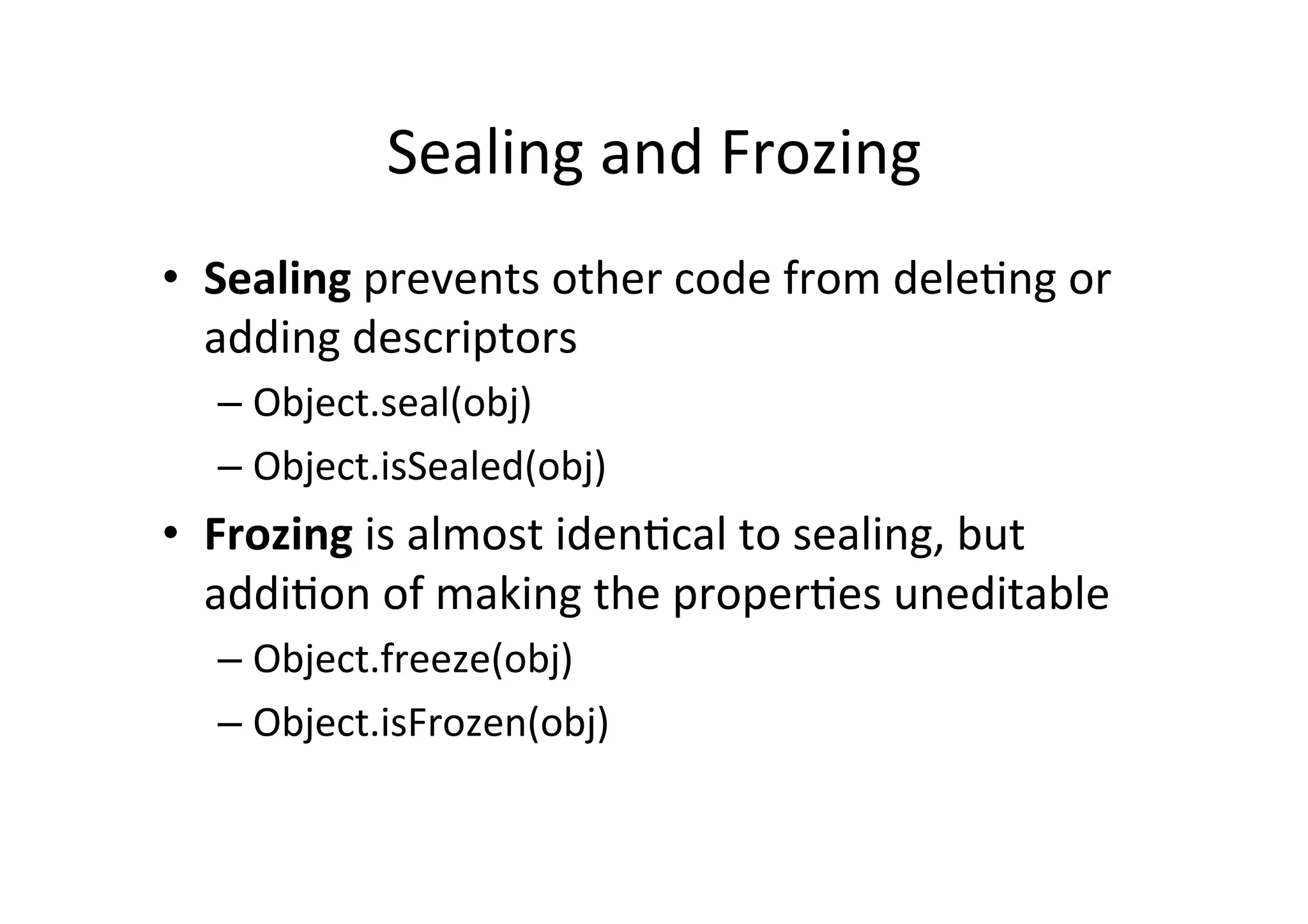
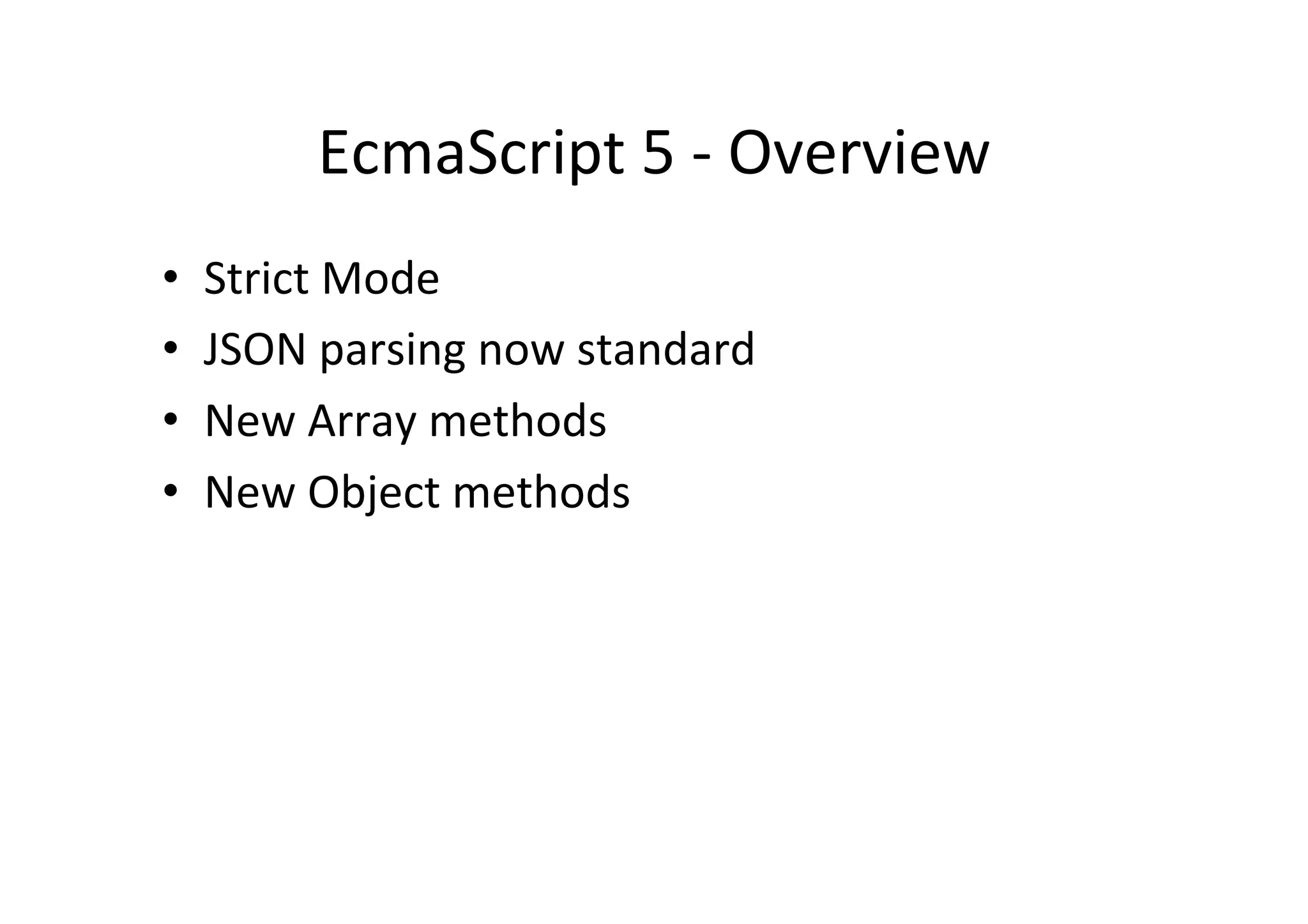

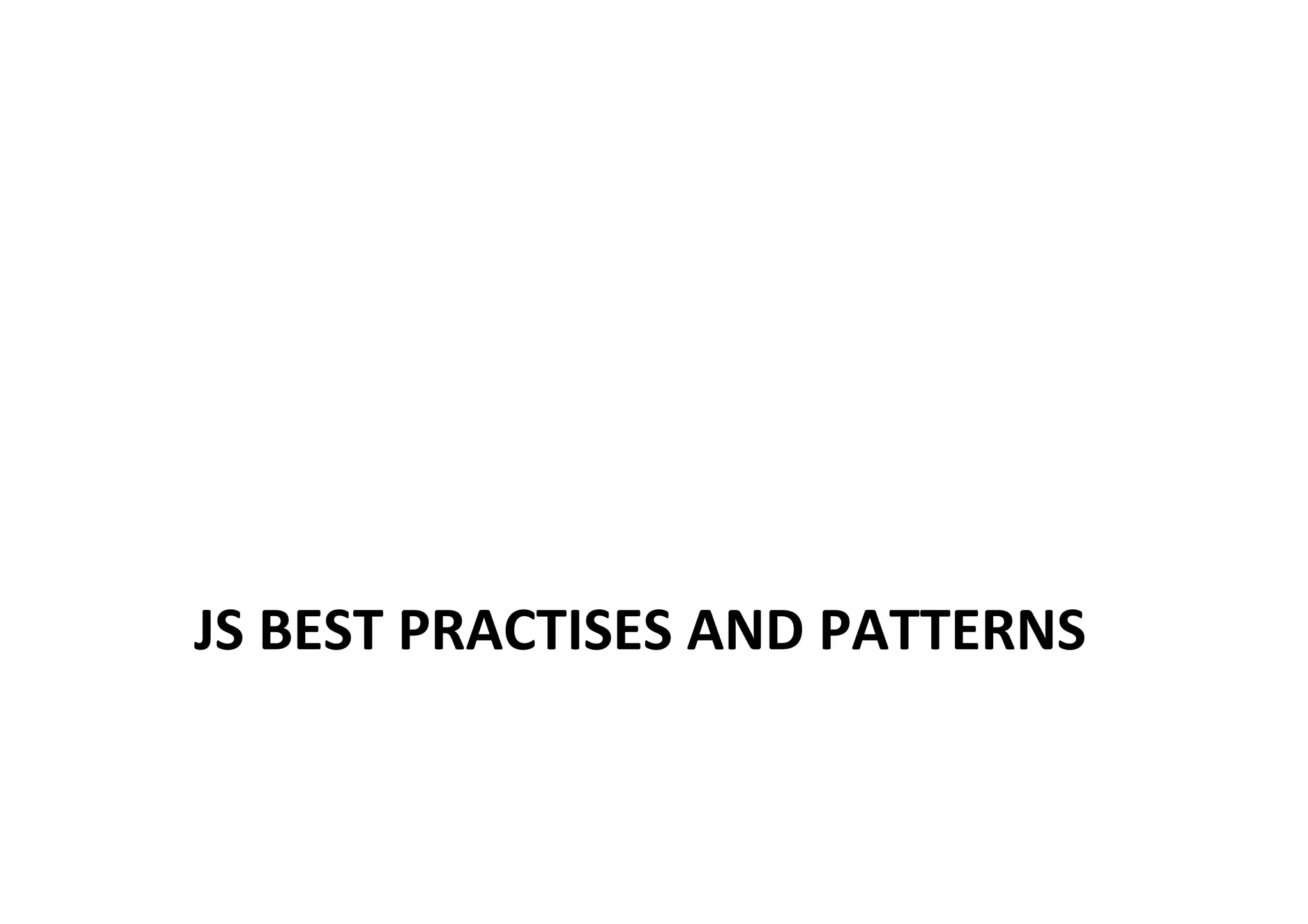
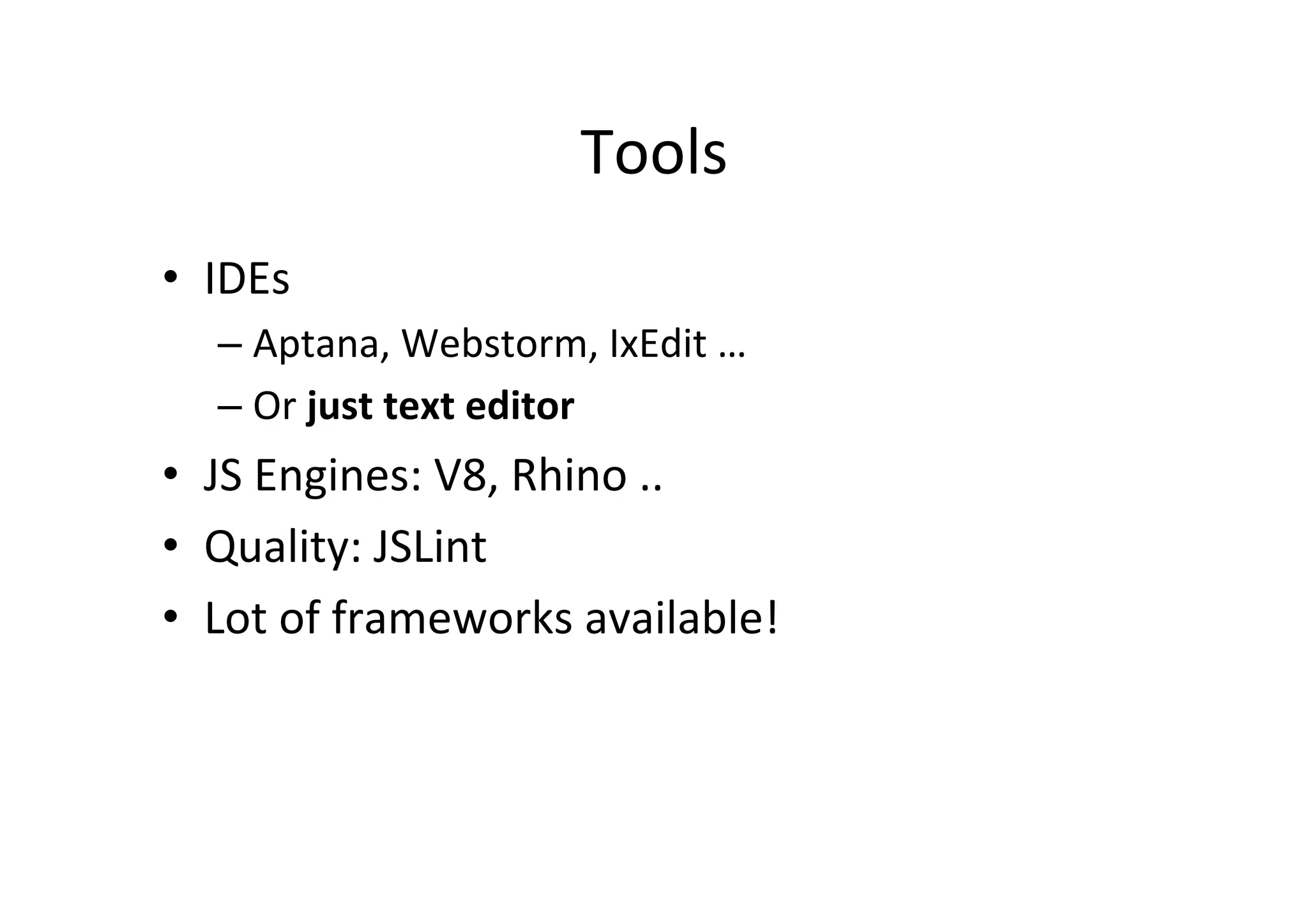
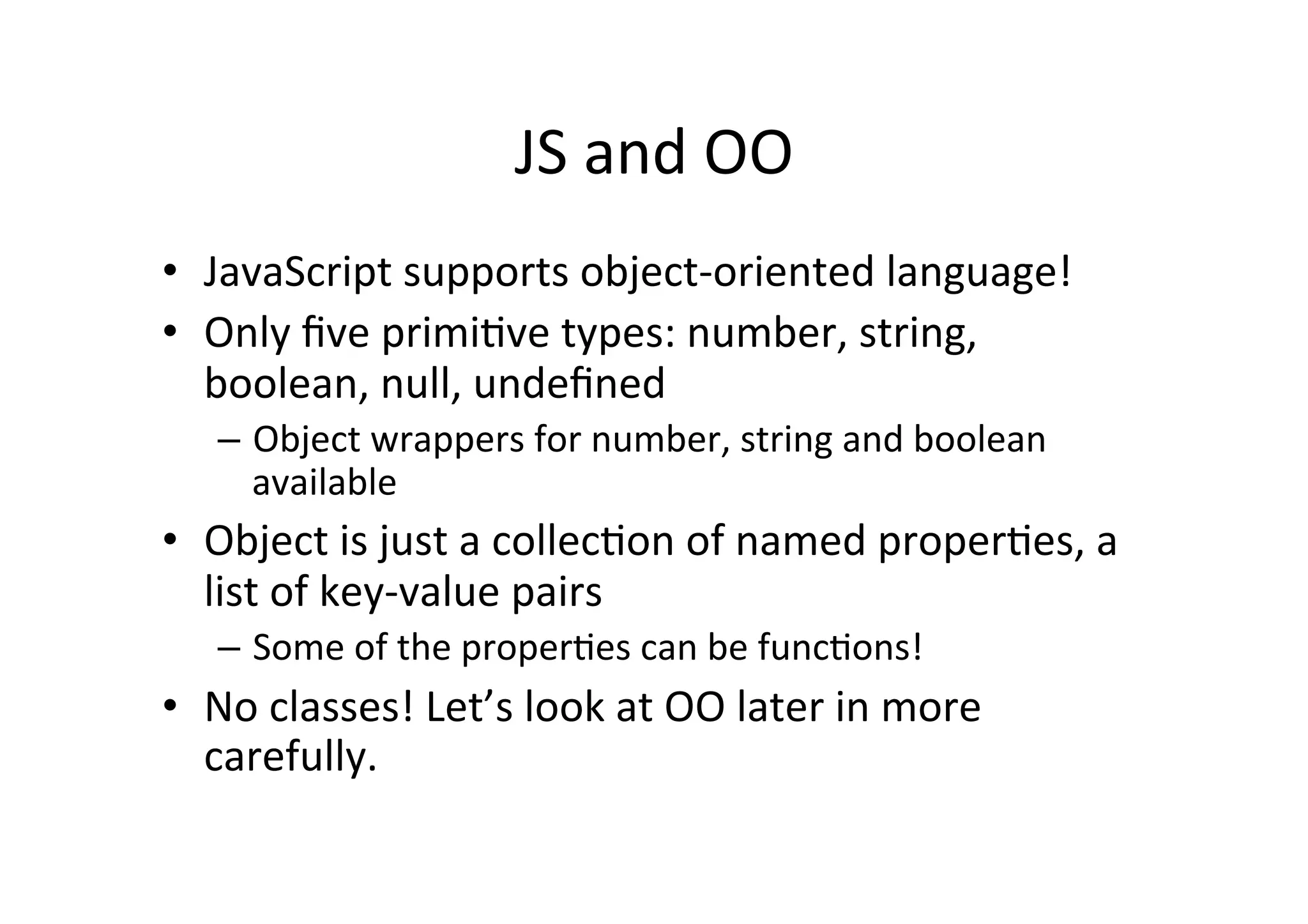
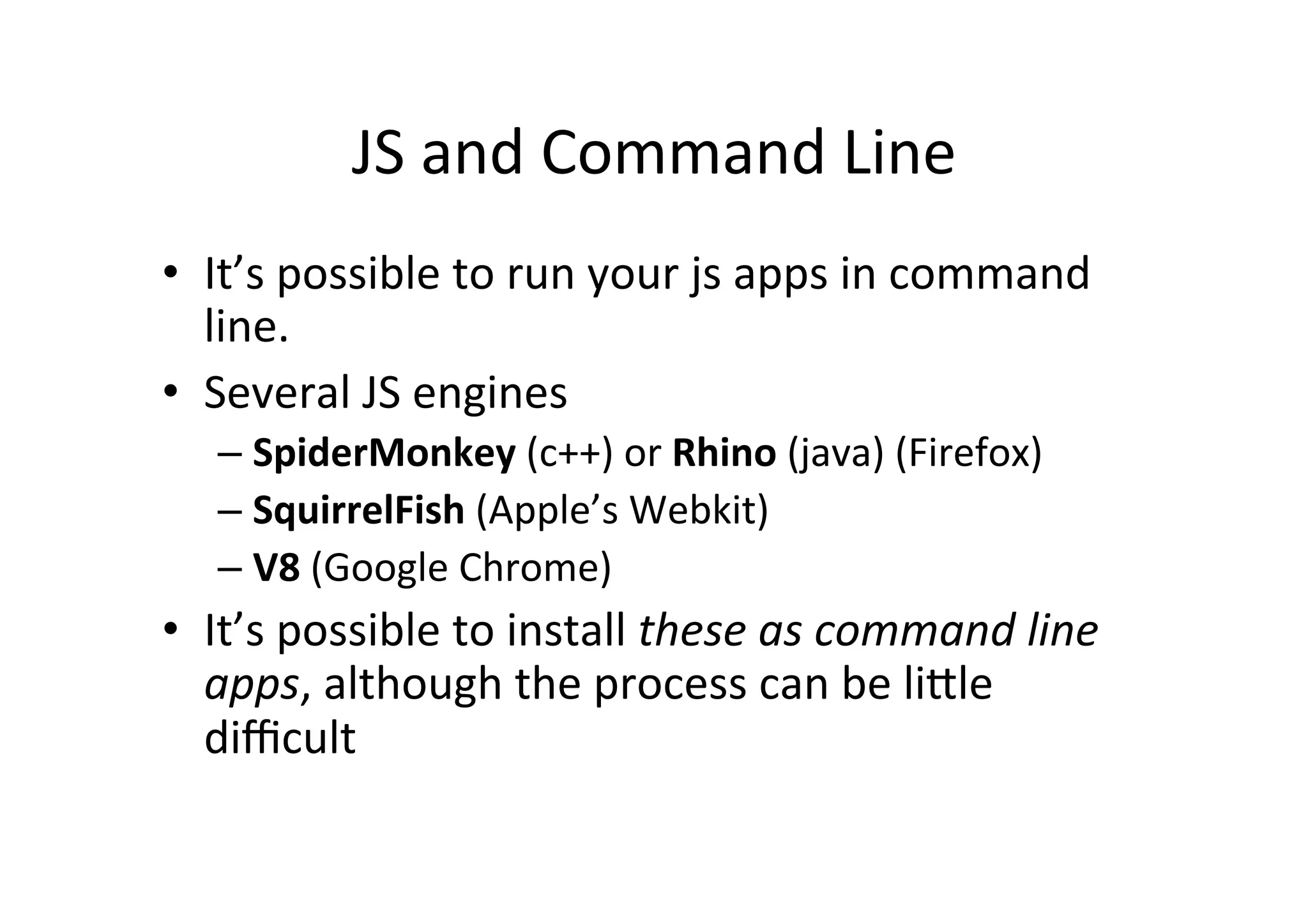
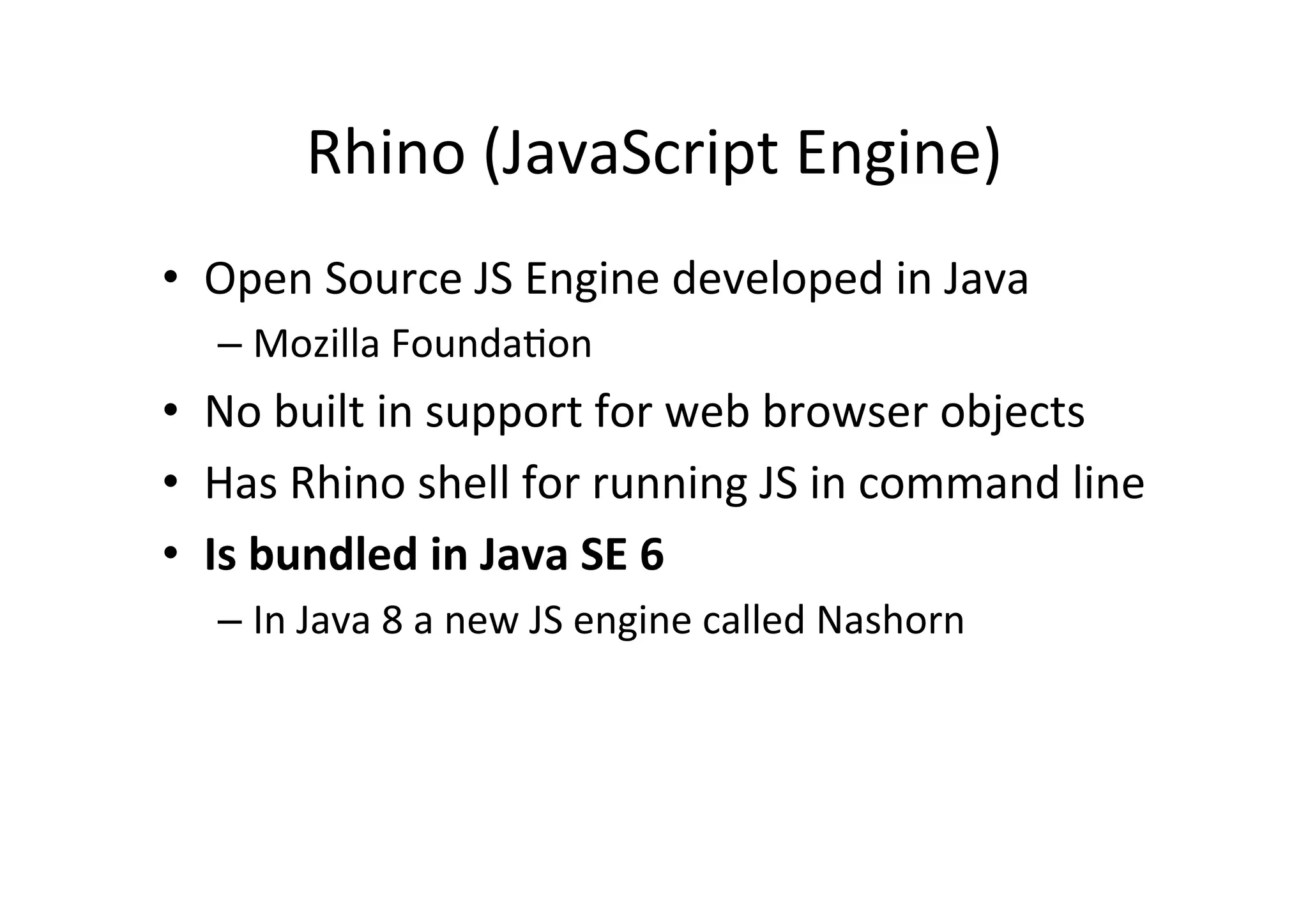
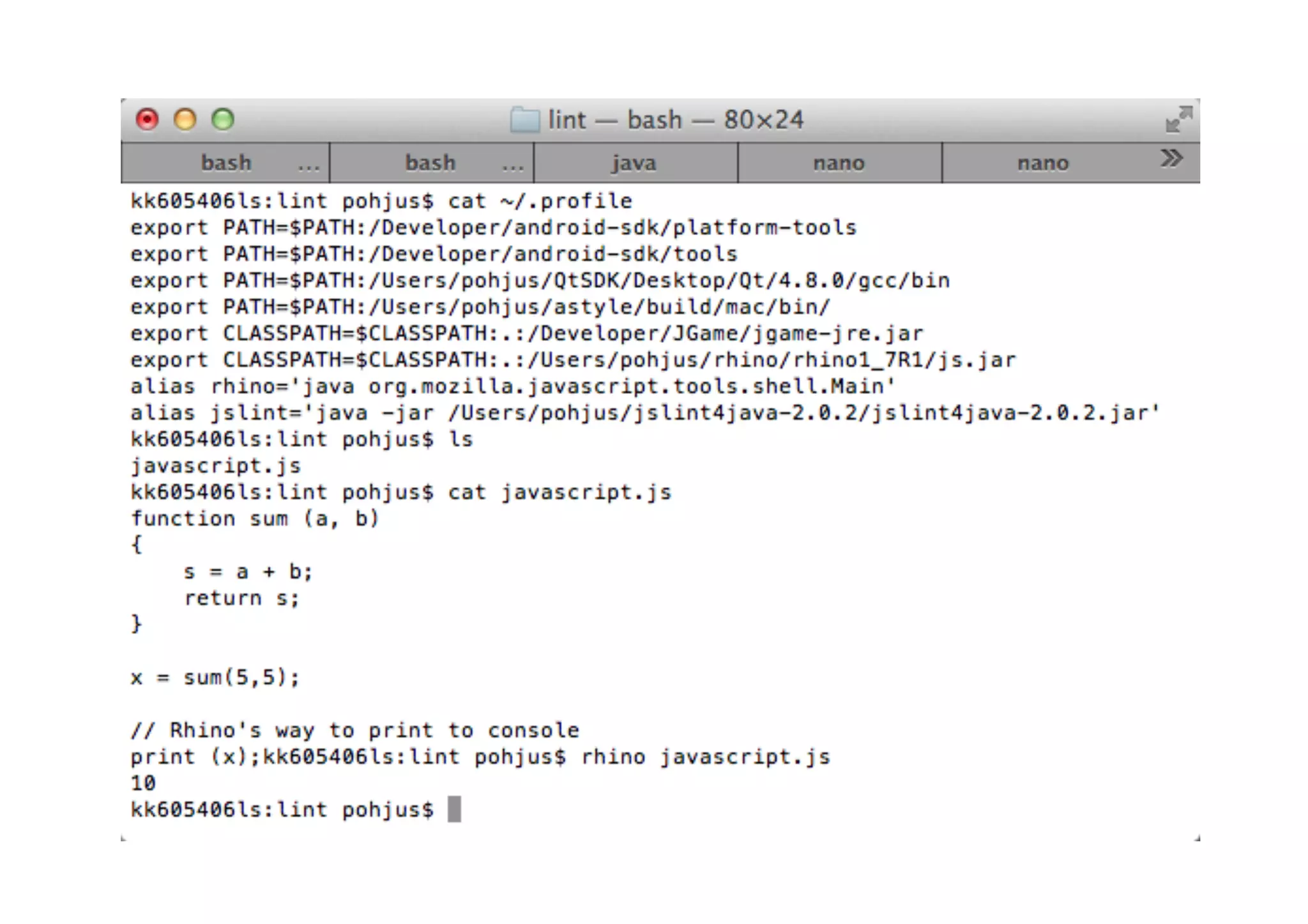
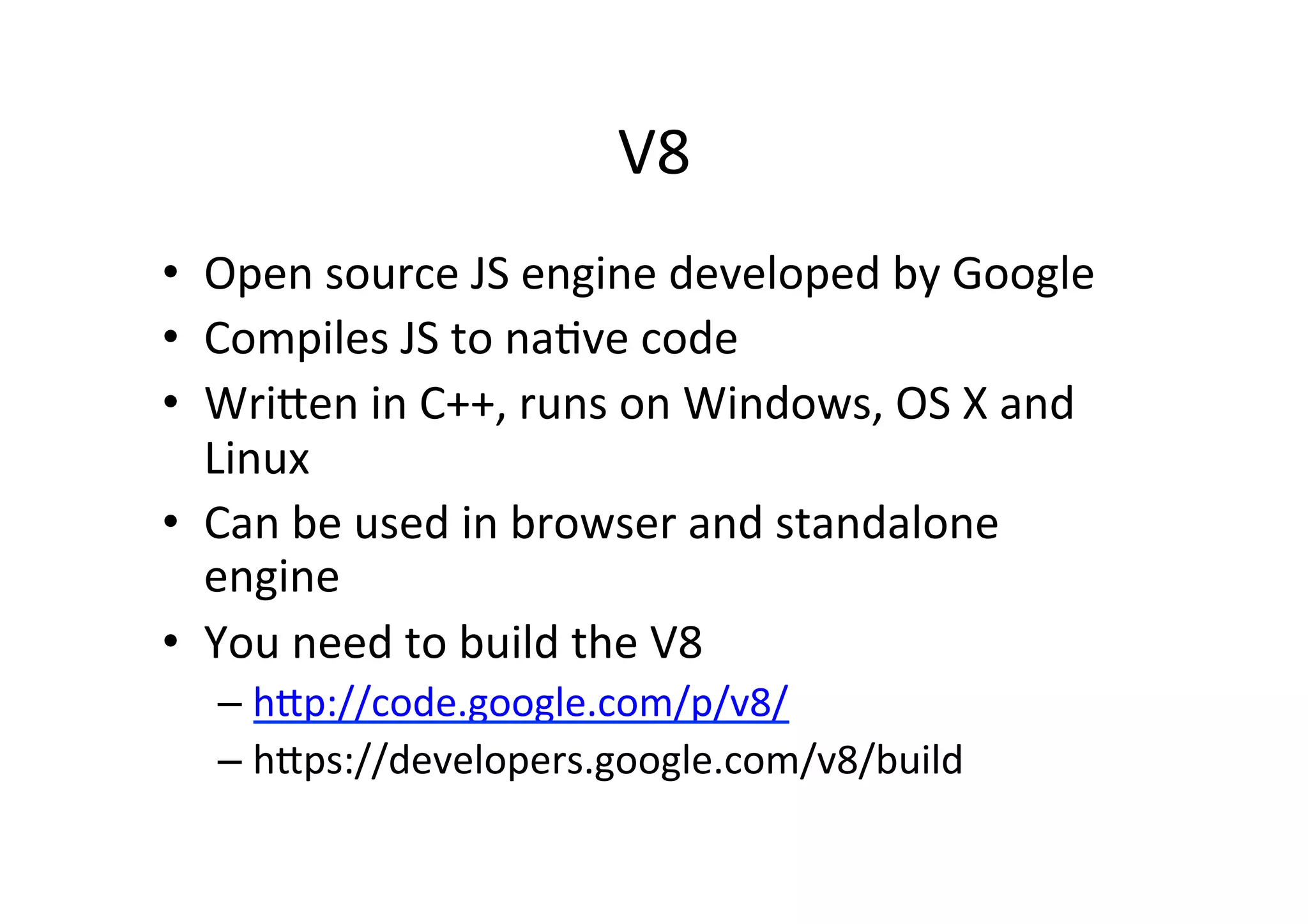
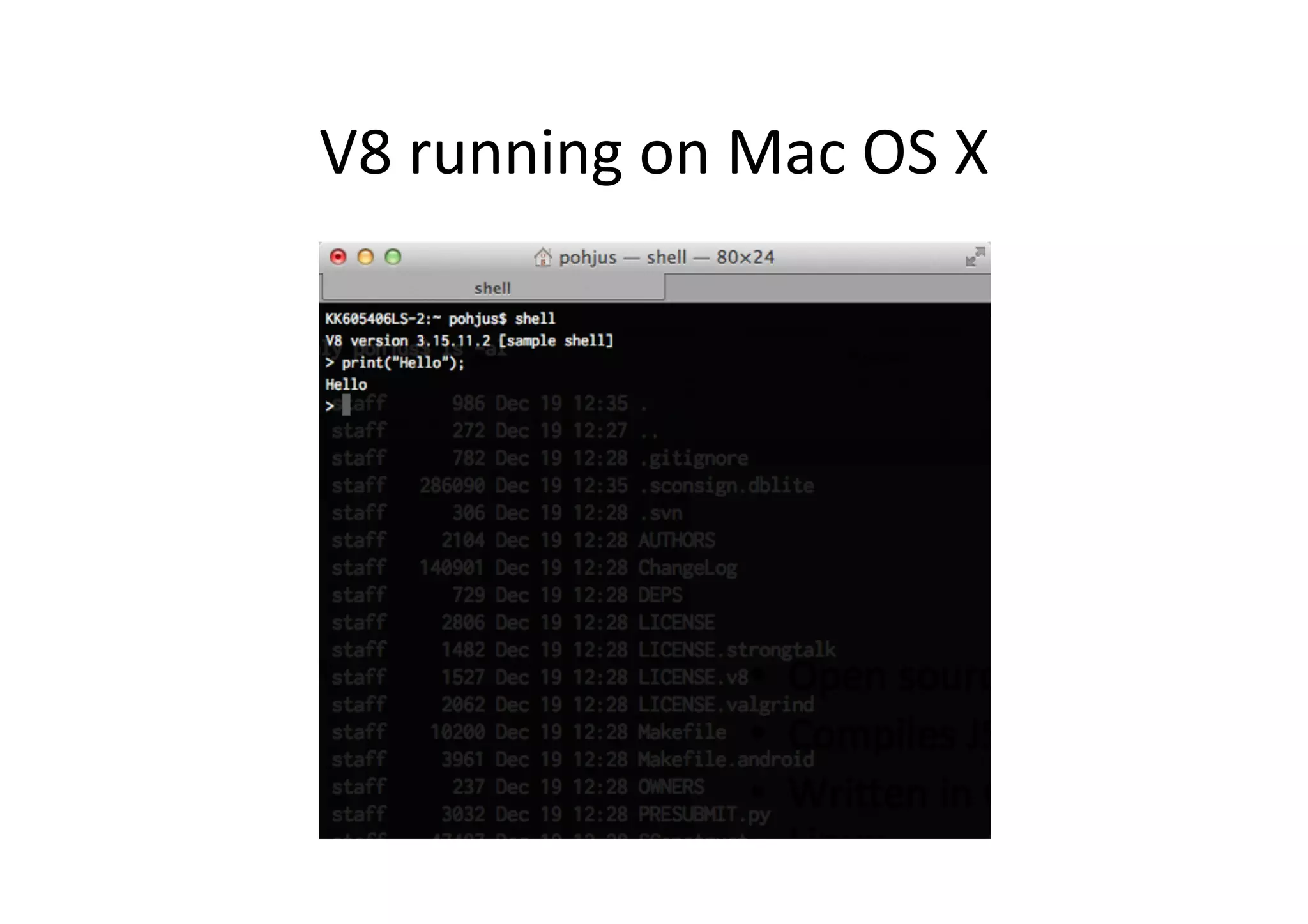
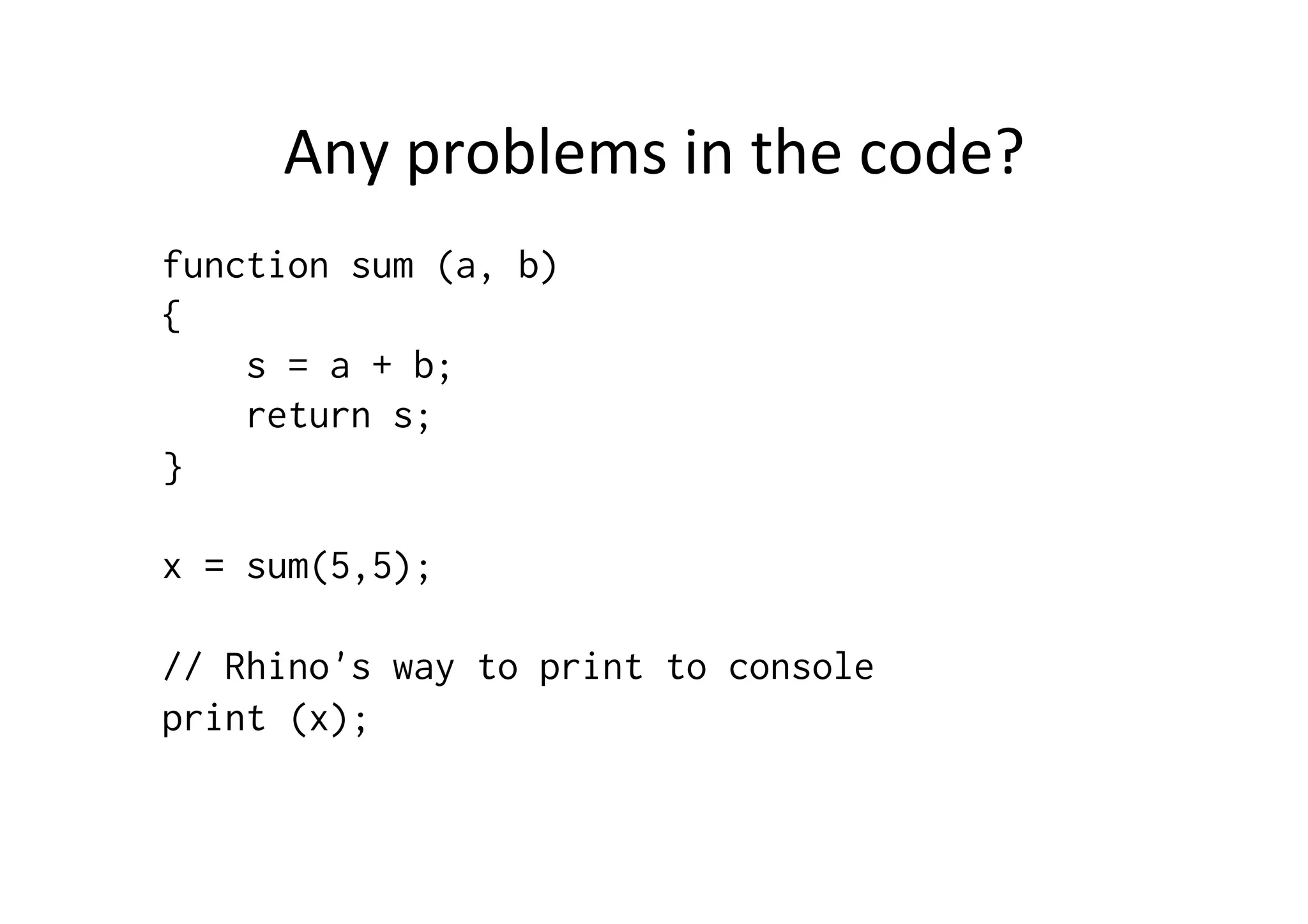
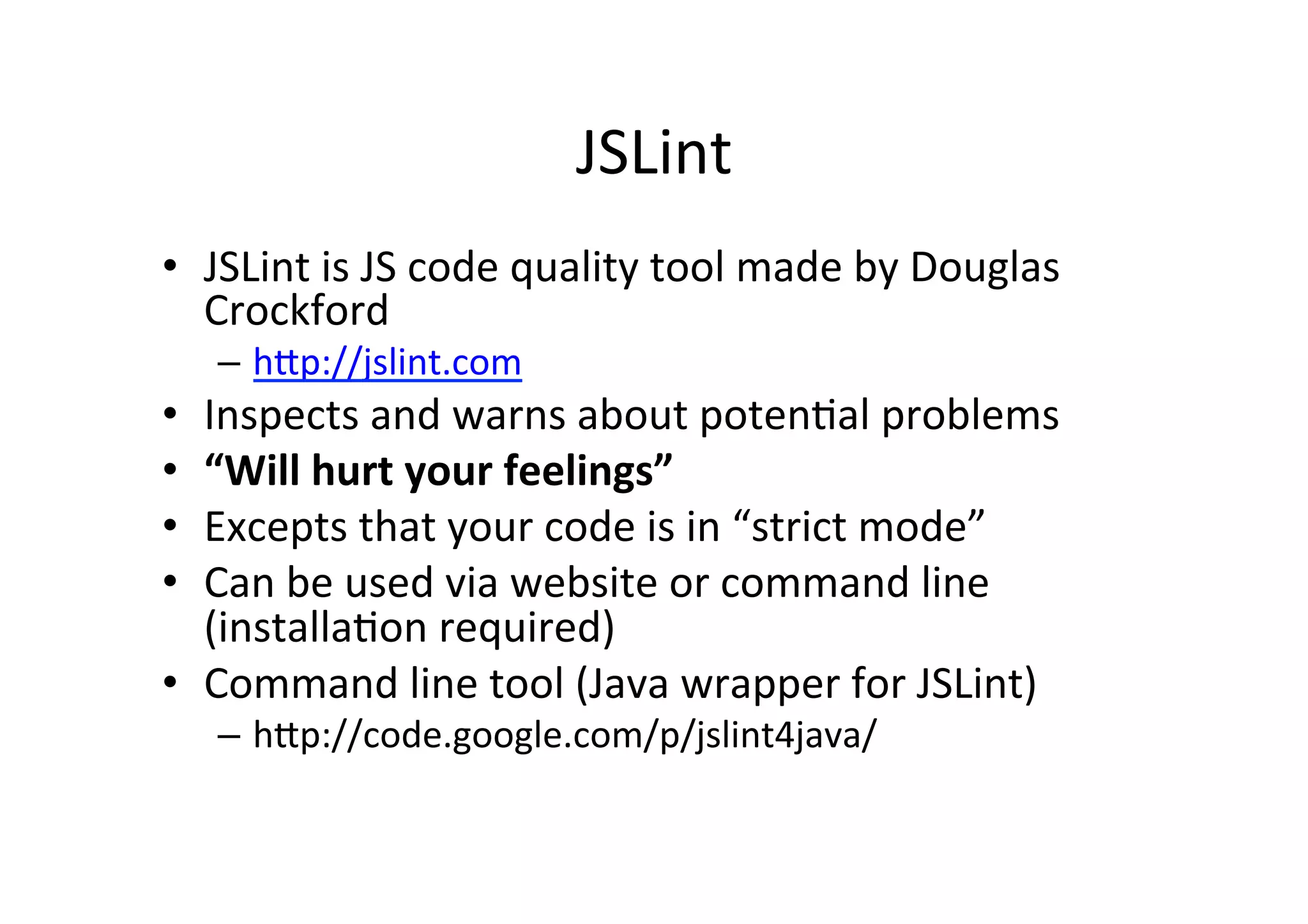
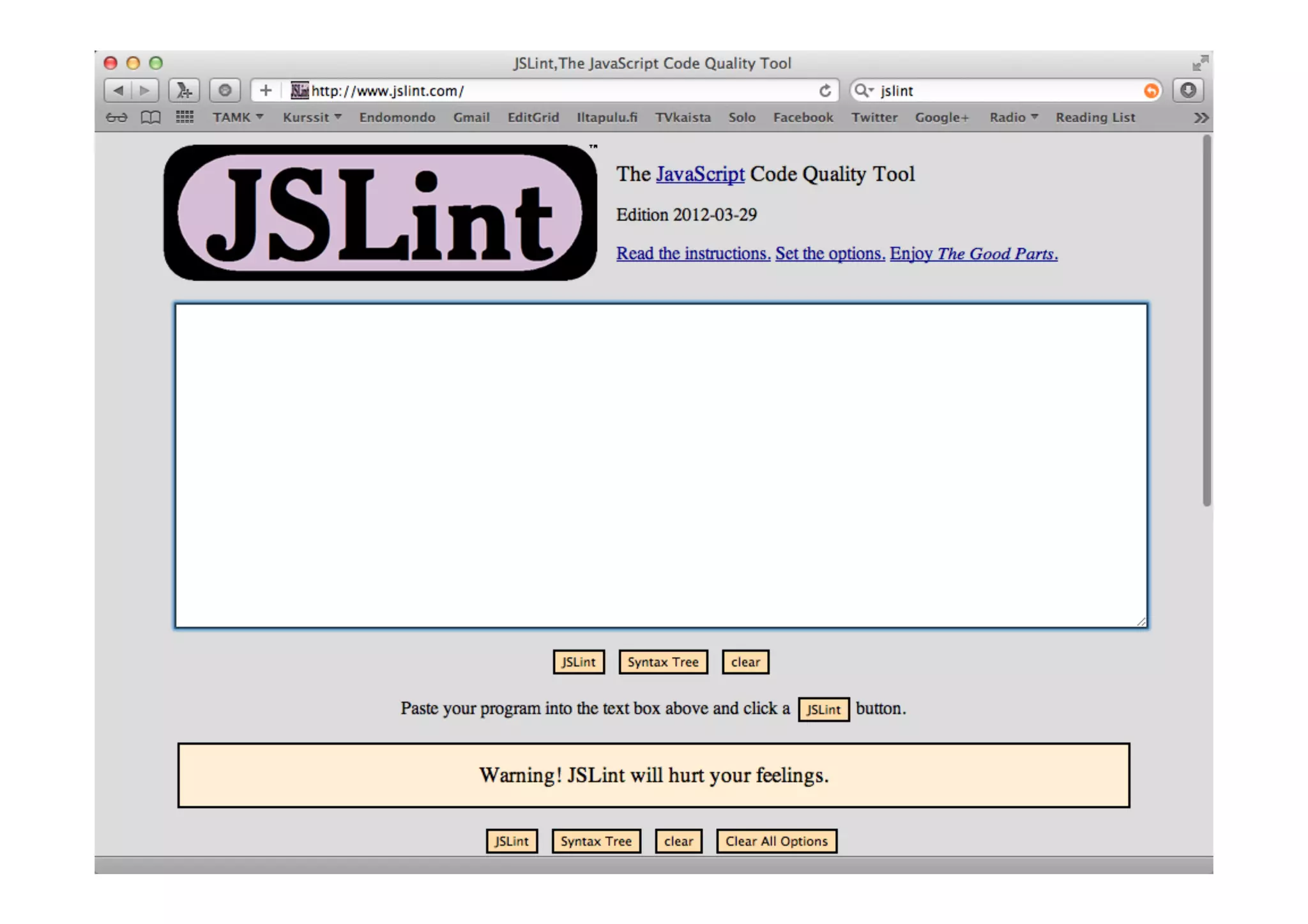
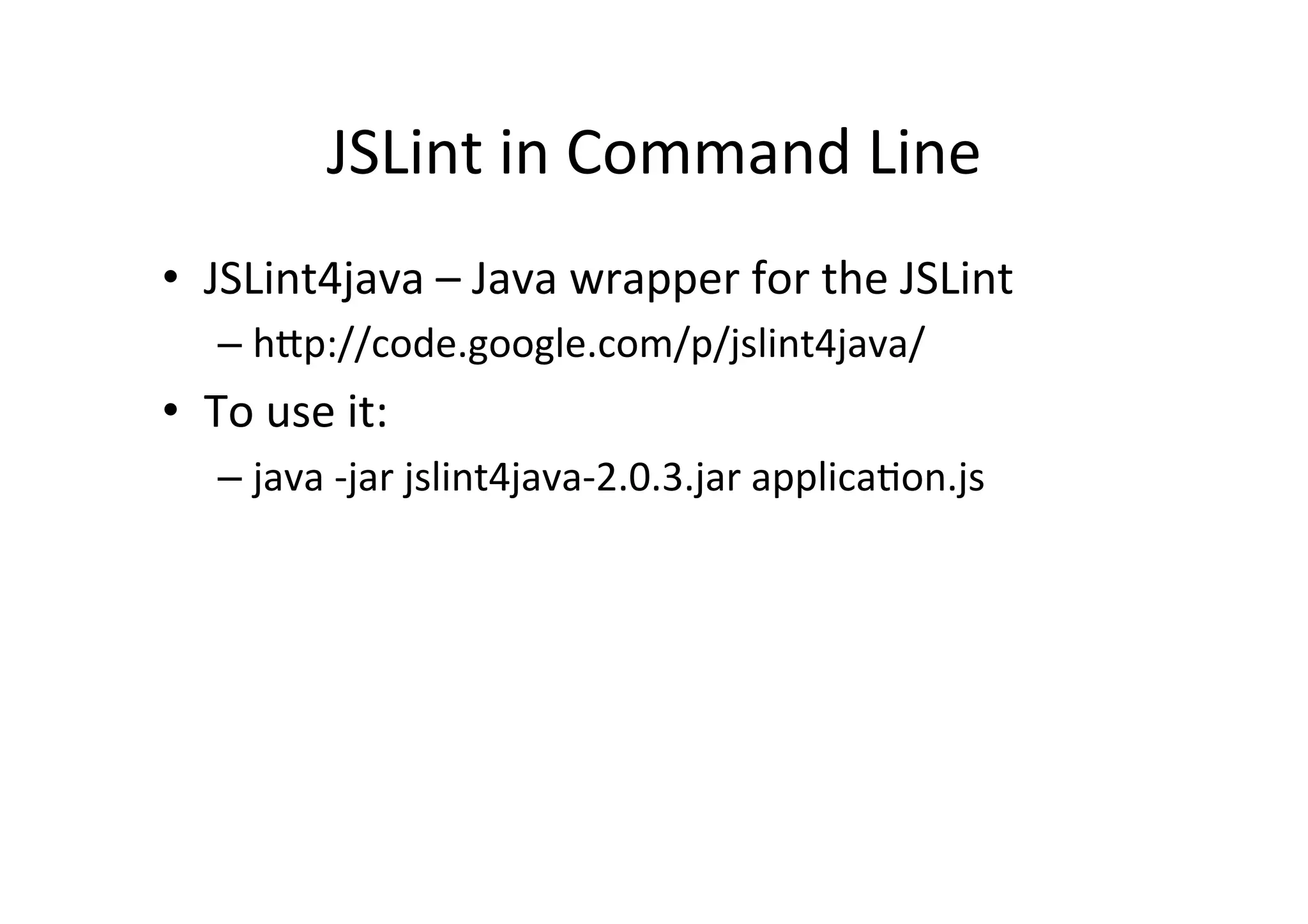
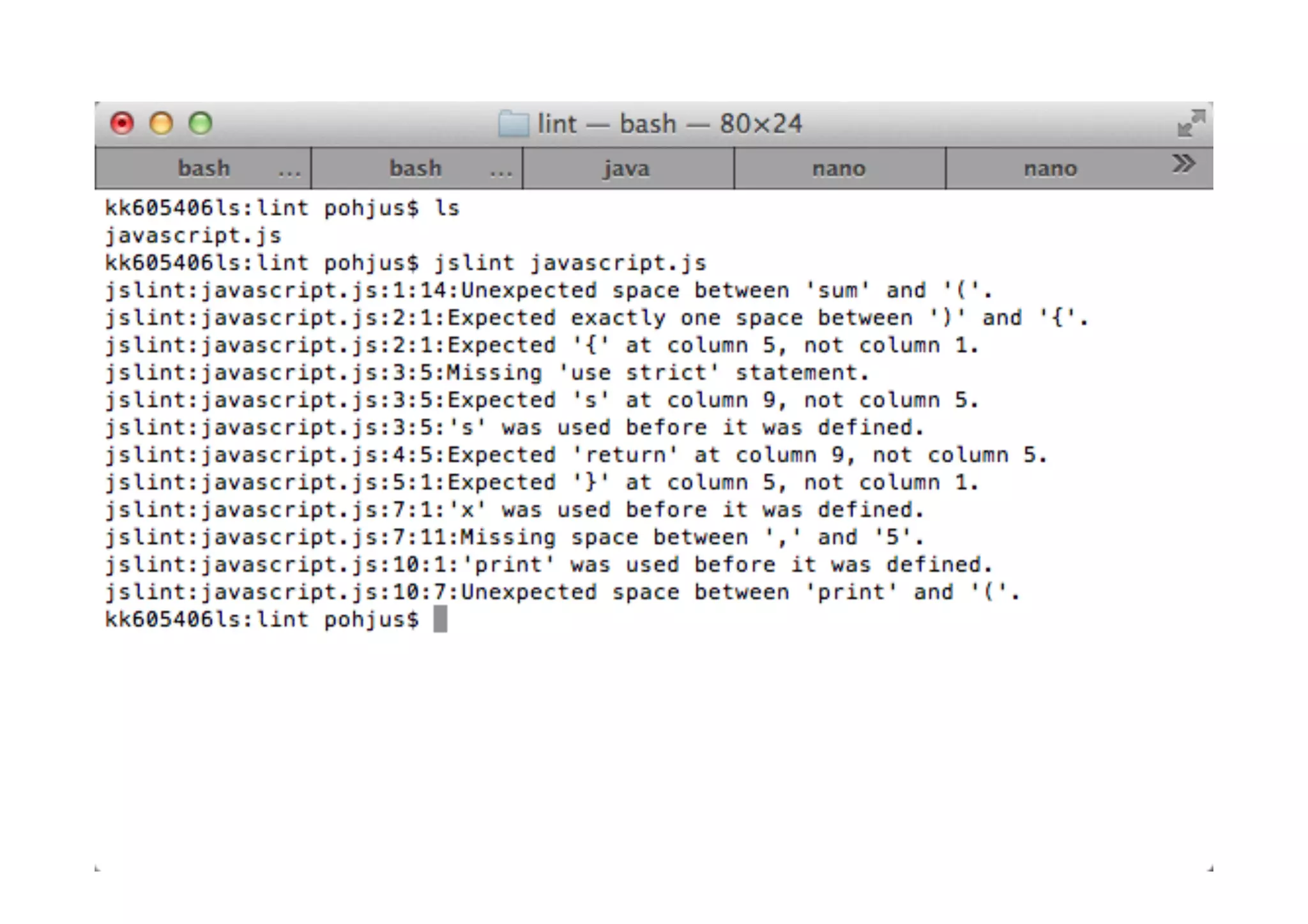
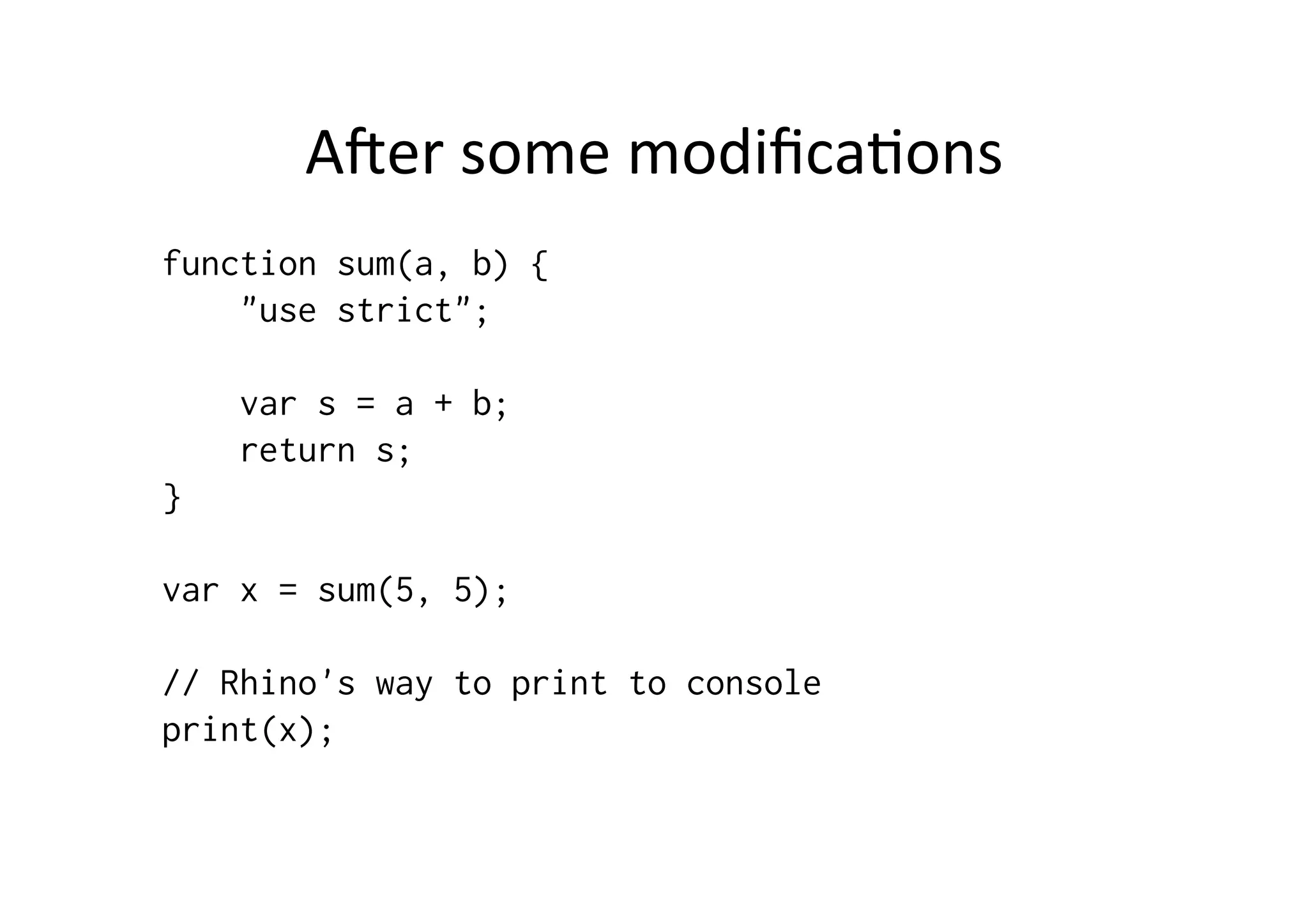
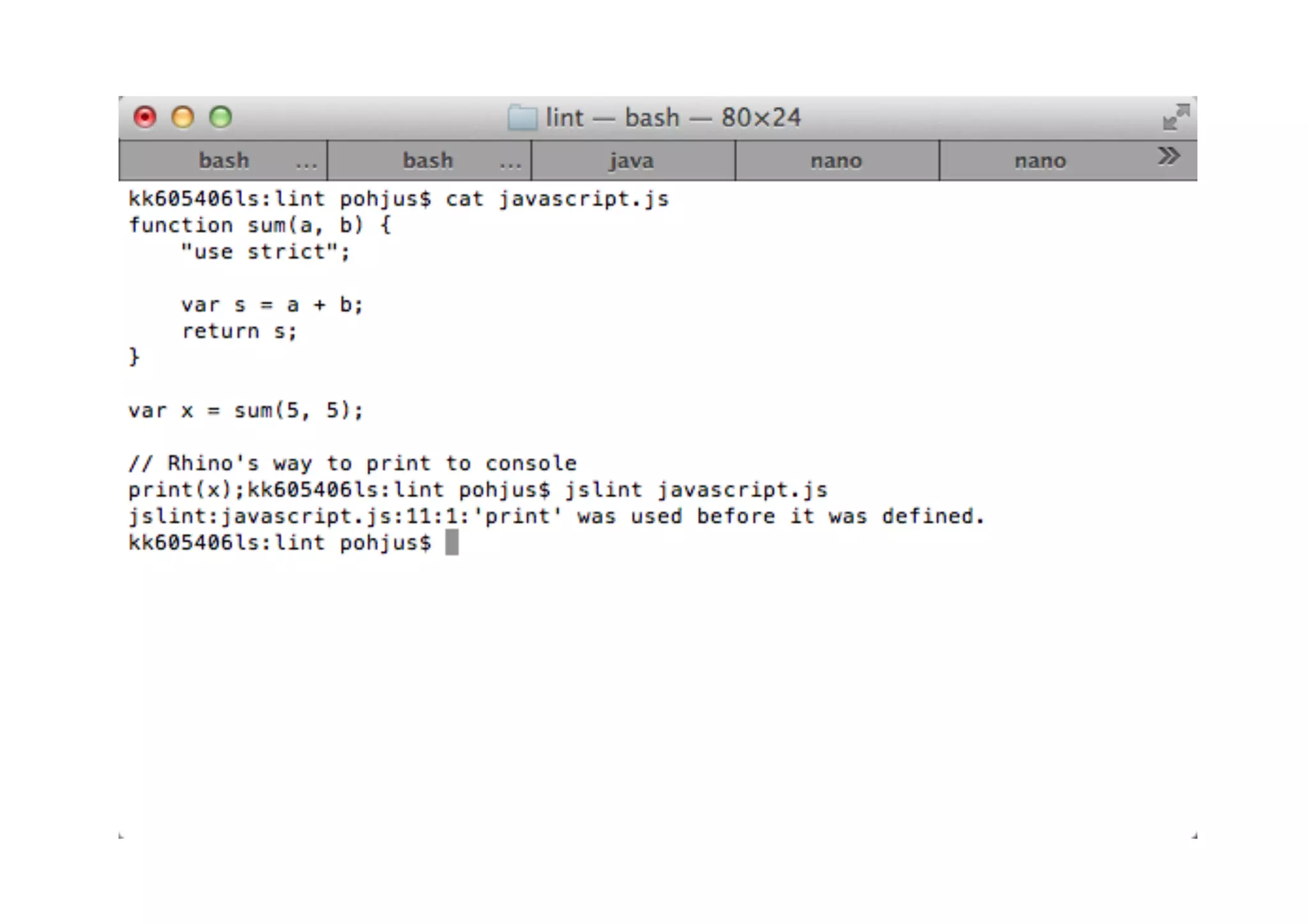
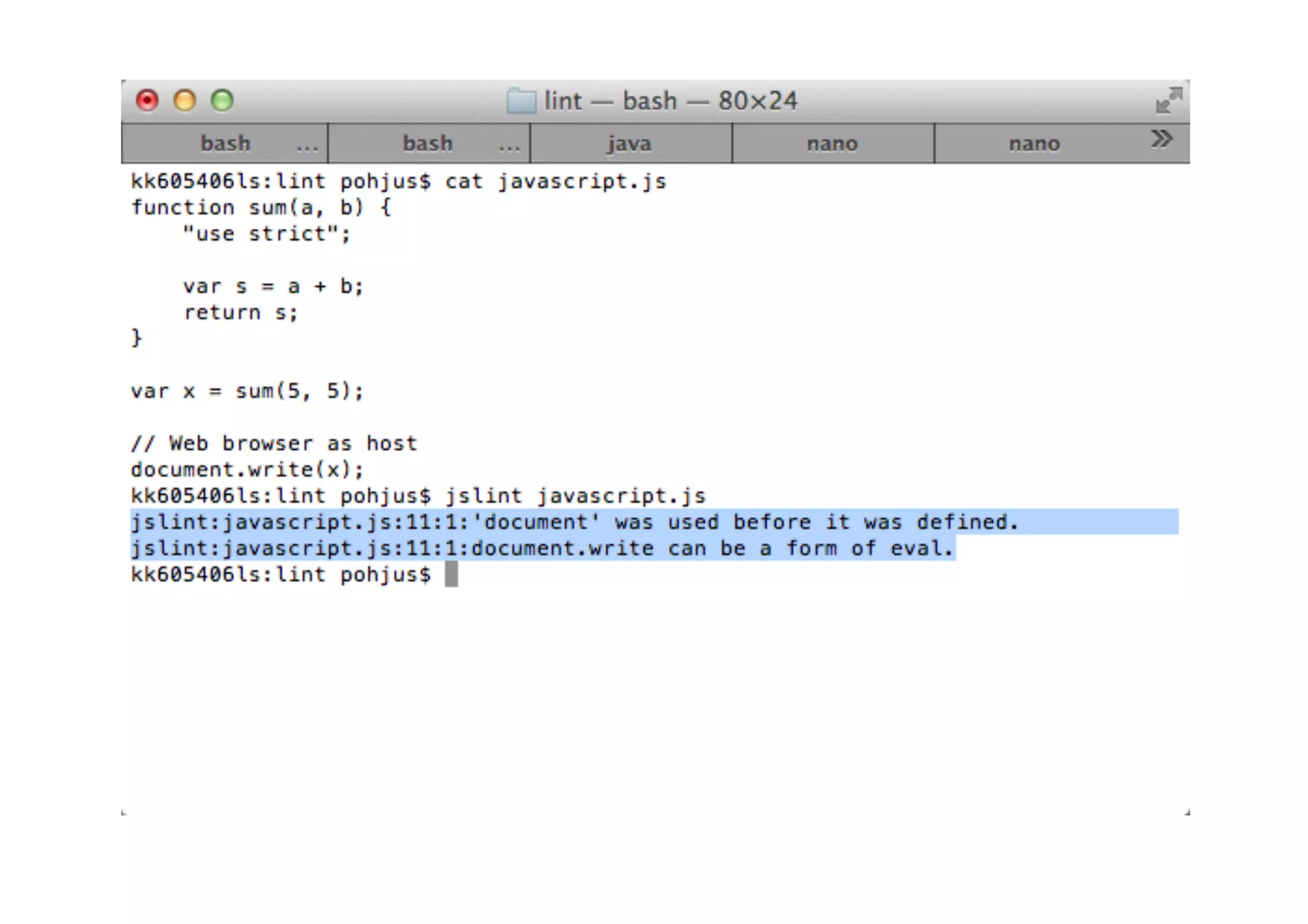
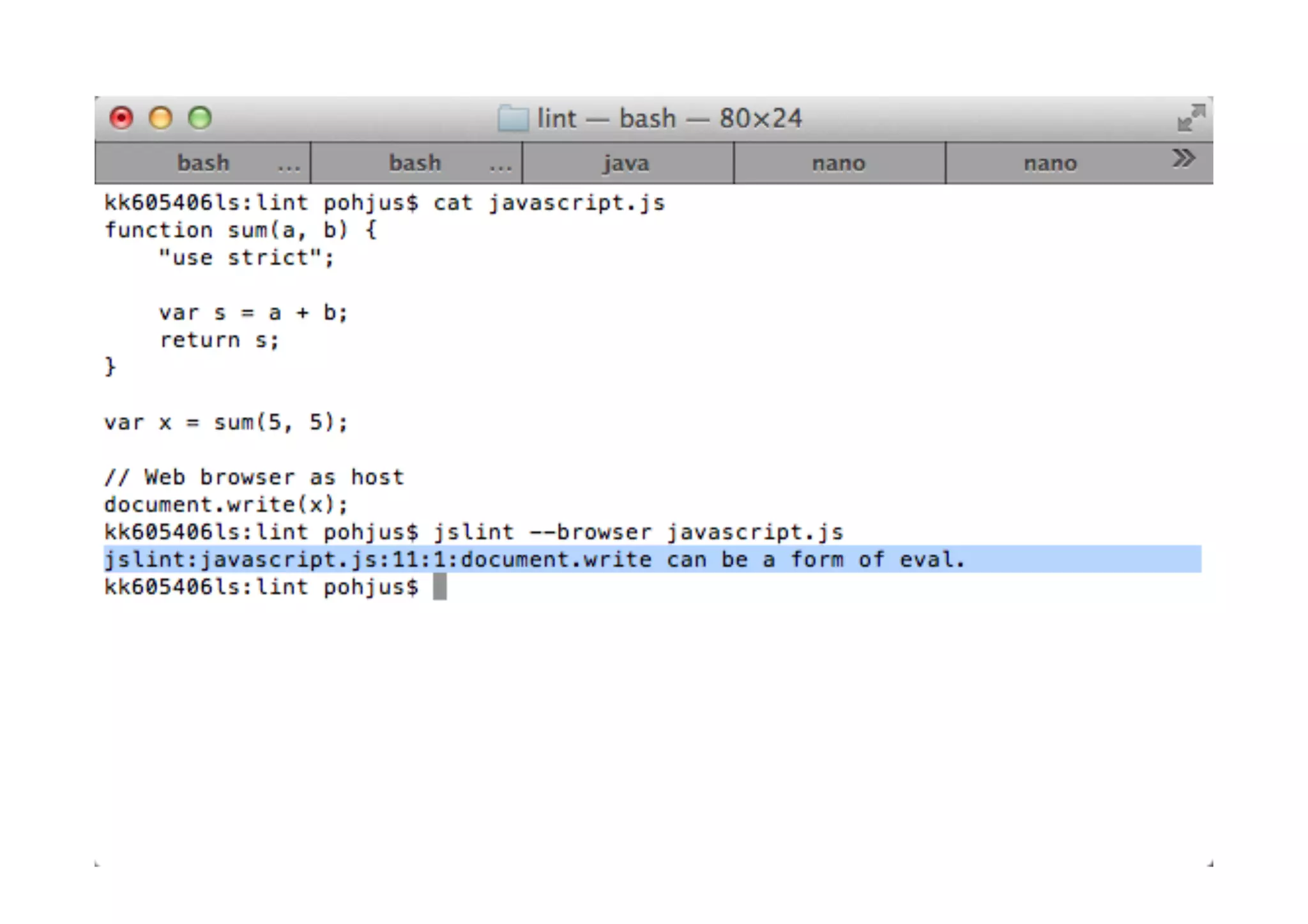
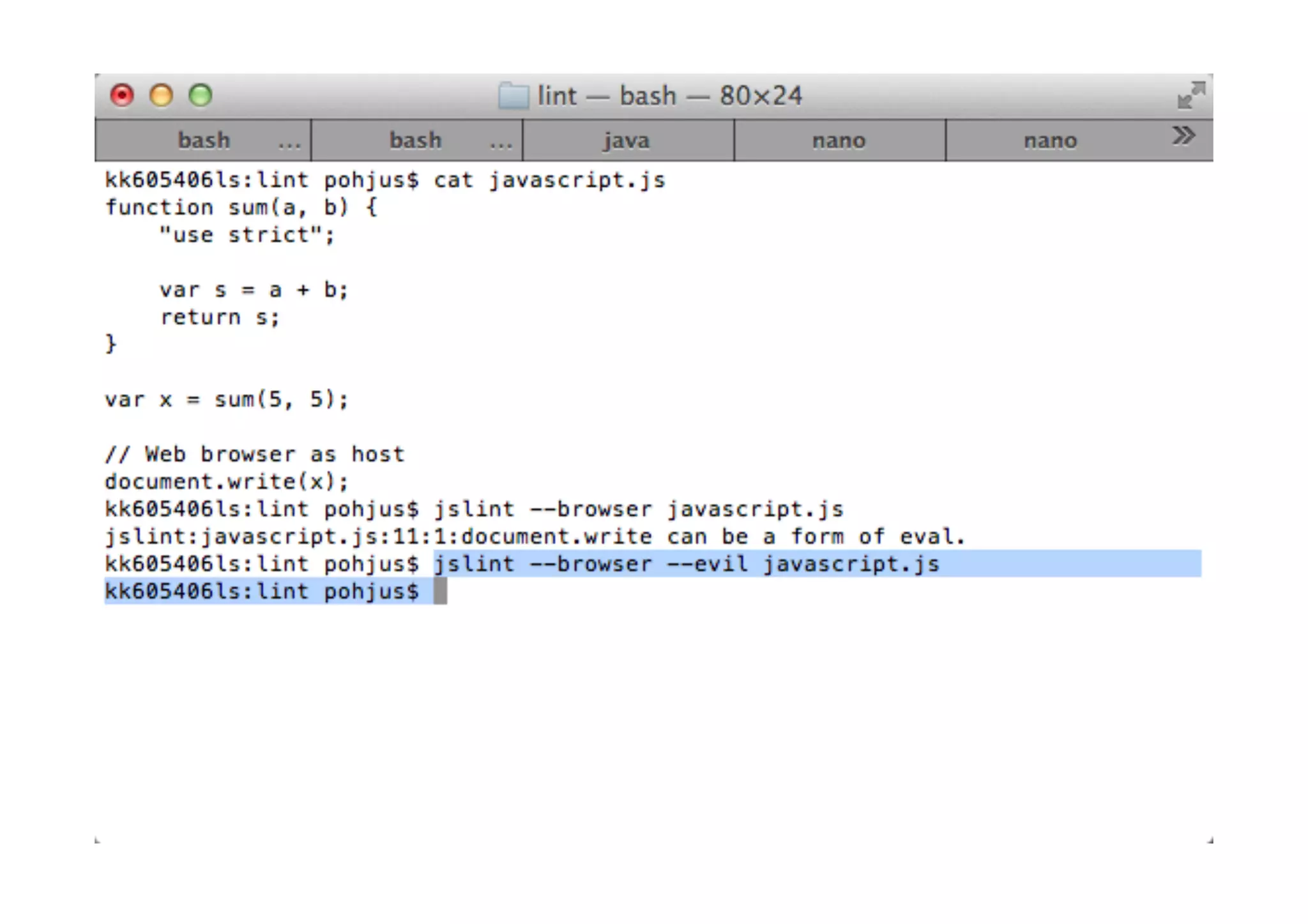
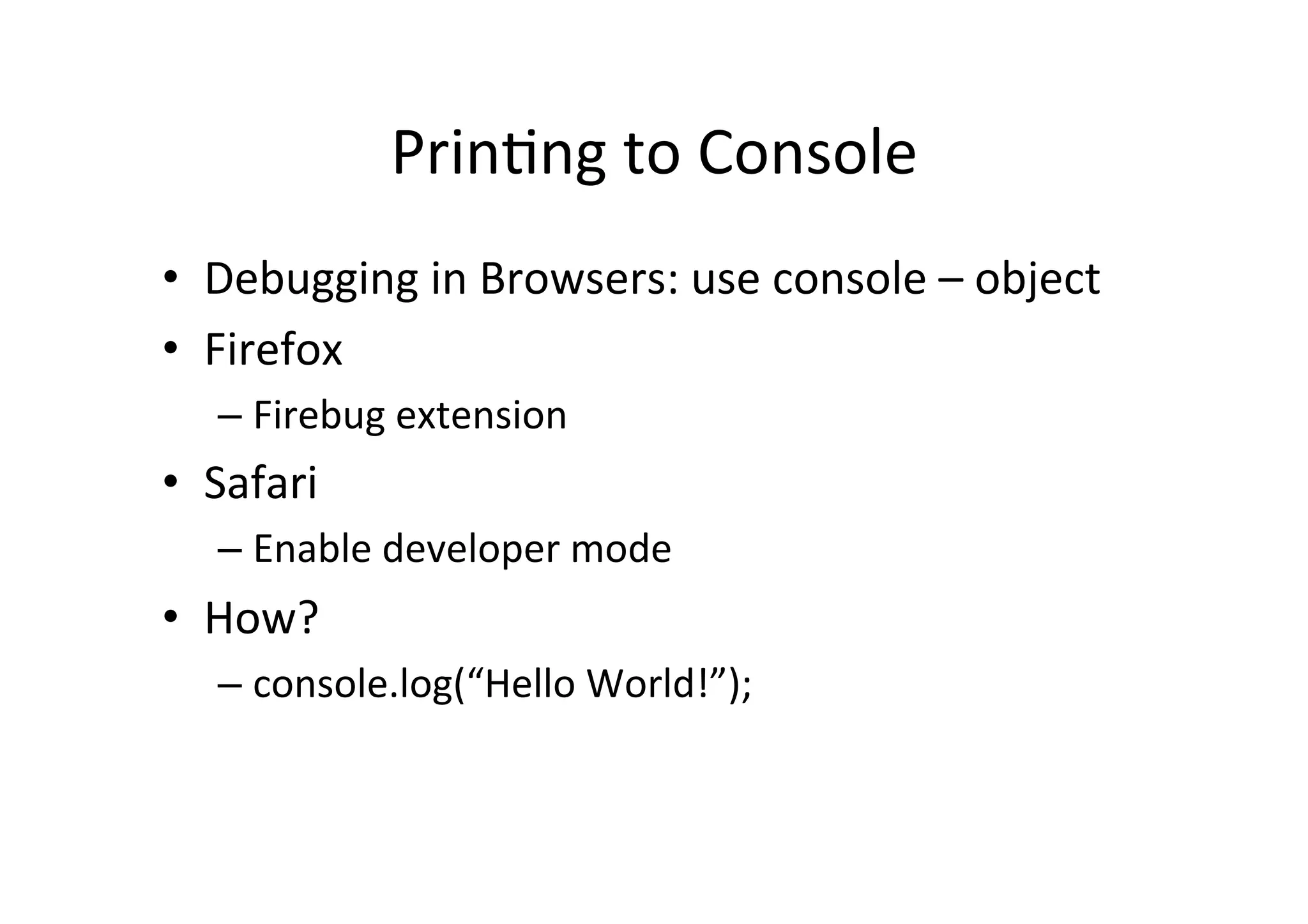
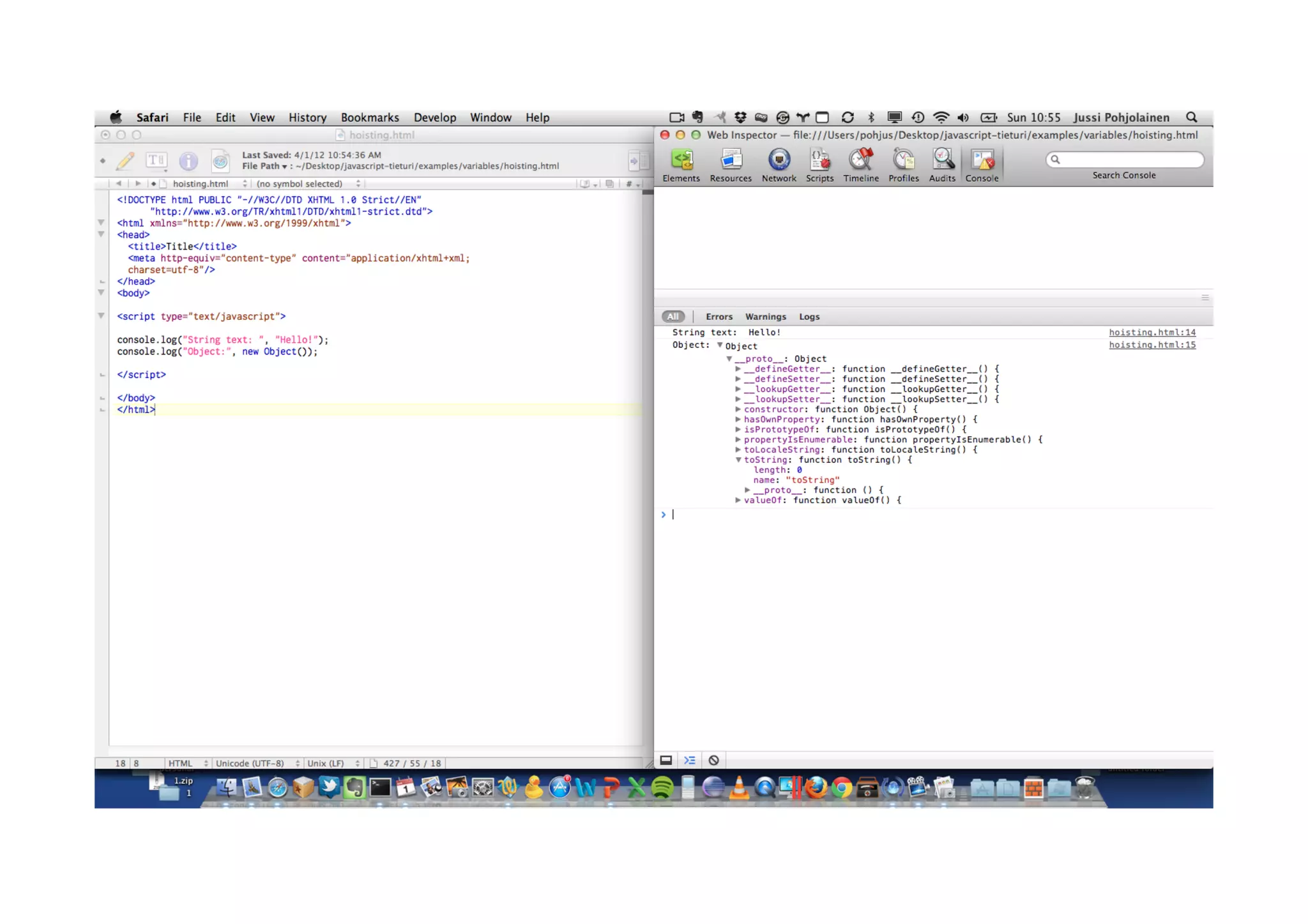
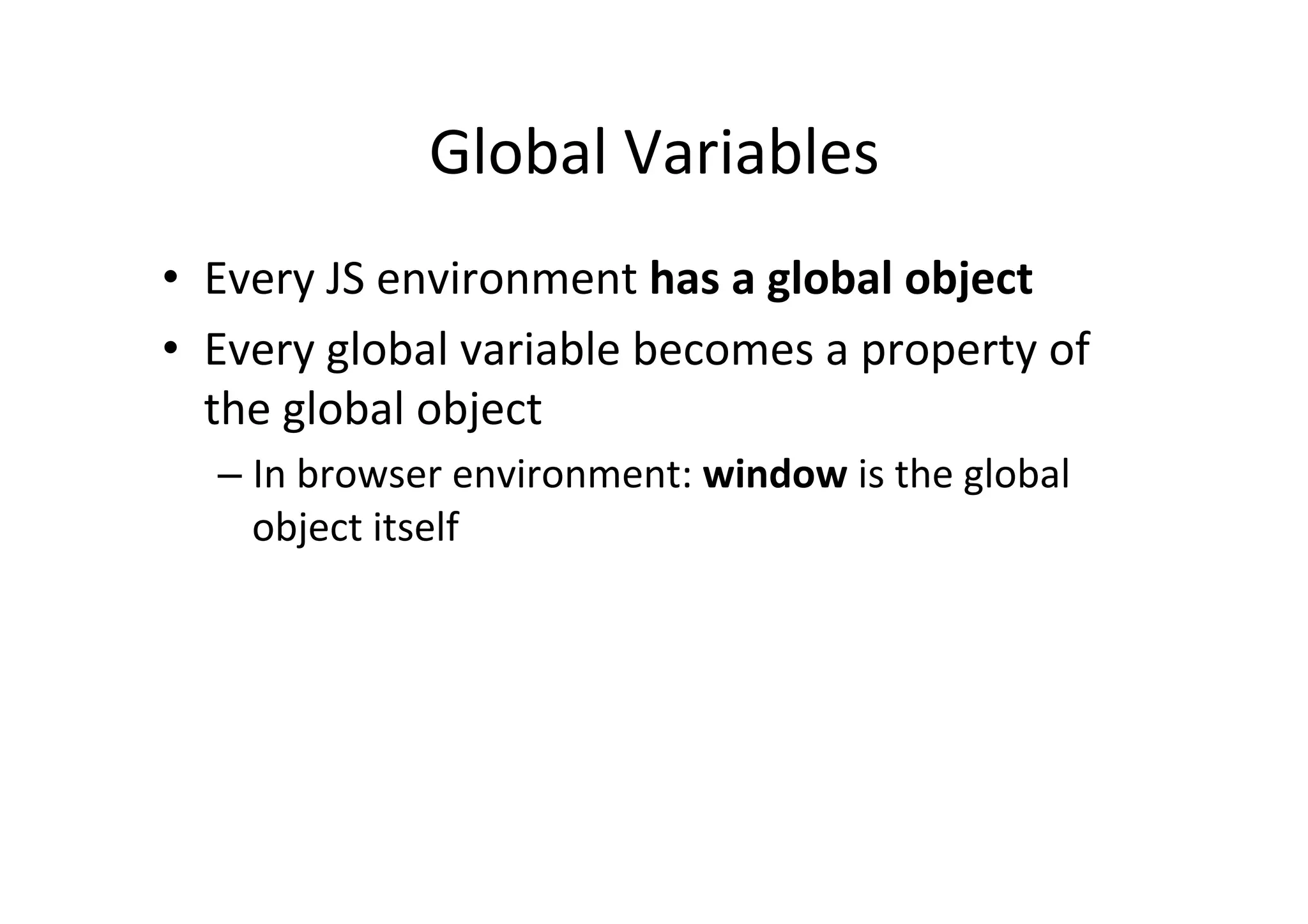
![Declaring Global variable // global object, window, will get a new property! variable = "hi there!"; console.log(variable); // And different ways to access the variable console.log(window.variable); console.log(window.variable); console.log(window["variable"]); console.log(this.variable); console.log(window);](https://image.slidesharecdn.com/00-advanced-intro-to-js-all-recovered-141201020204-conversion-gate02/75/Advanced-JavaScript-Development-62-2048.jpg)
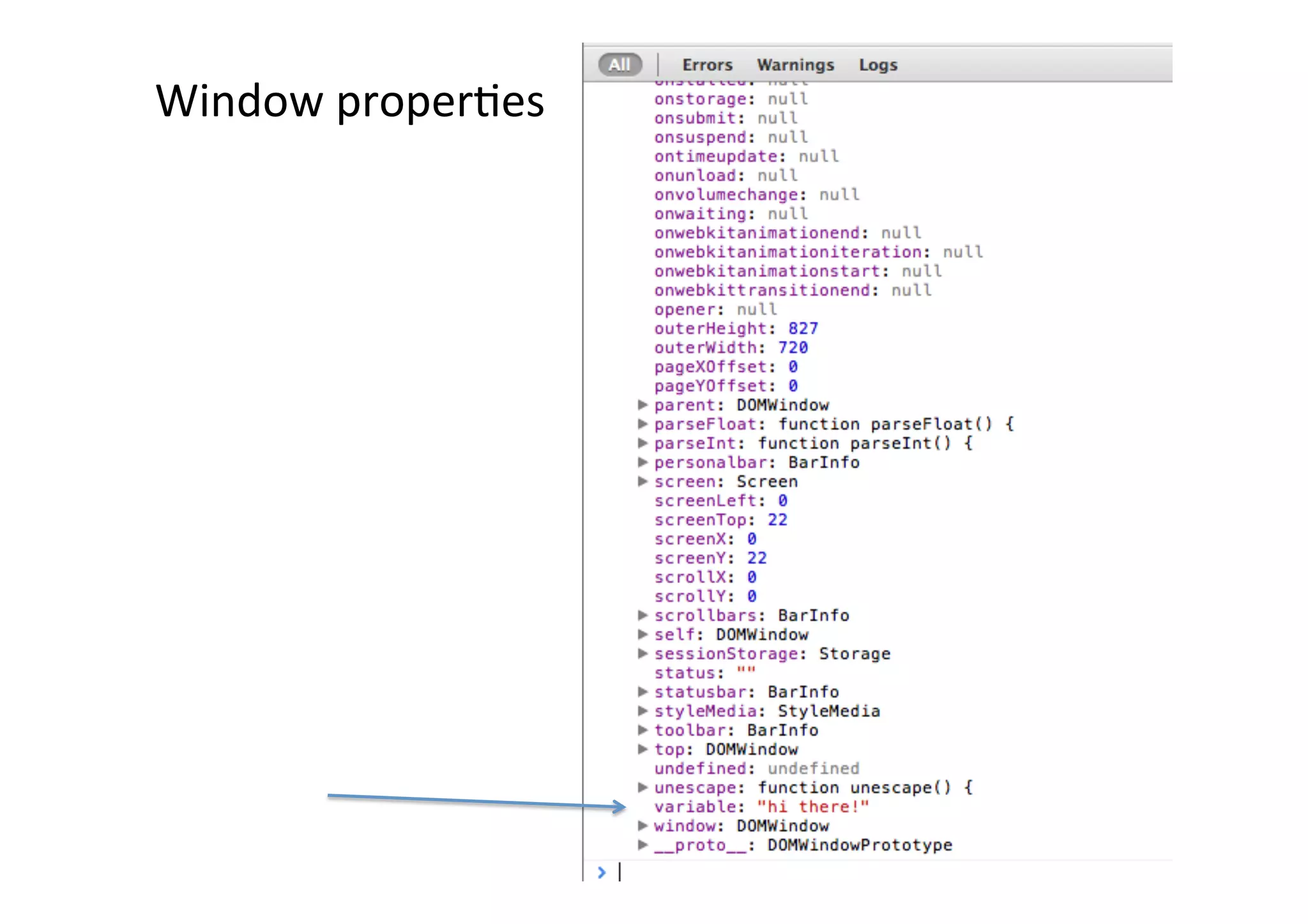
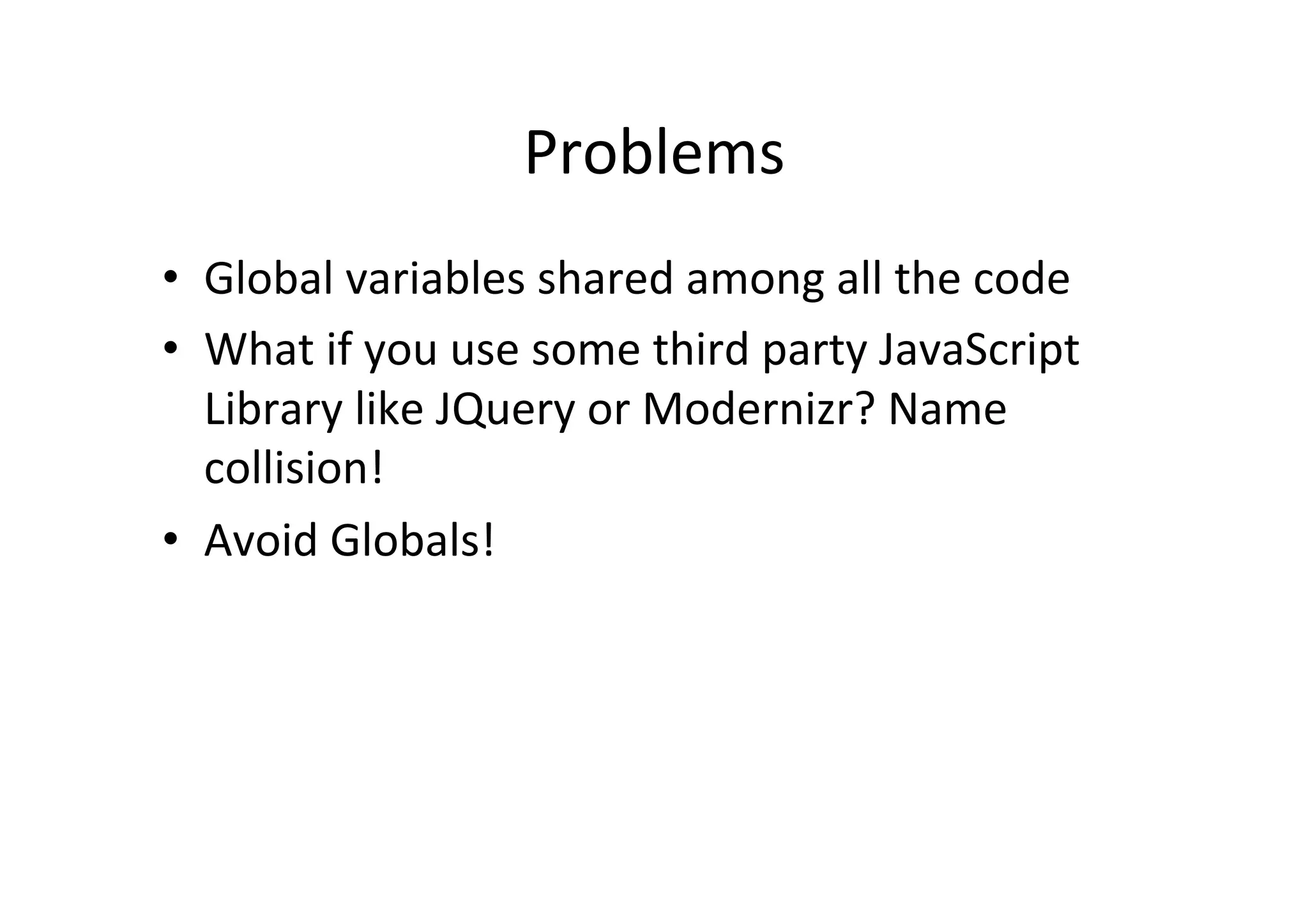
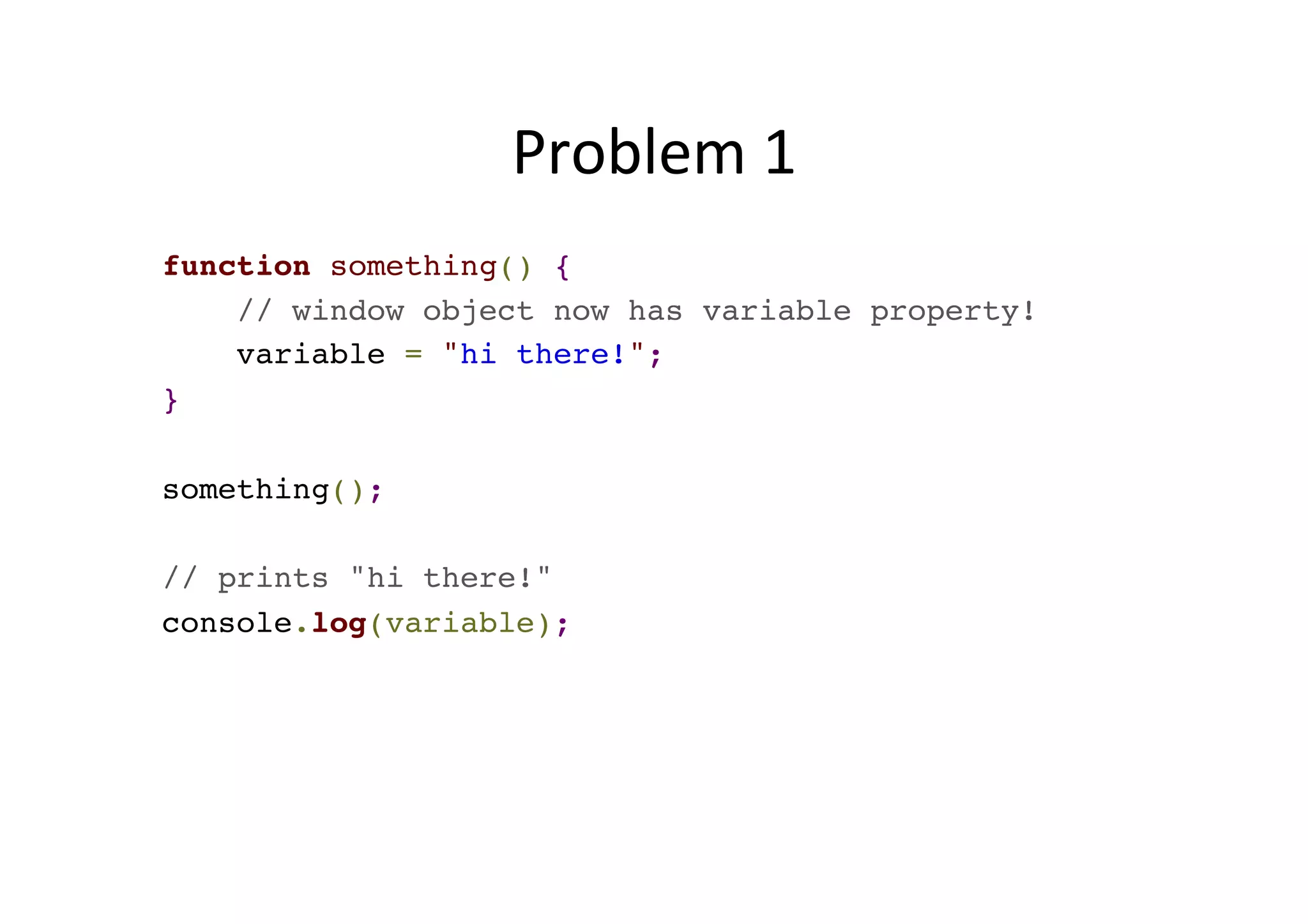
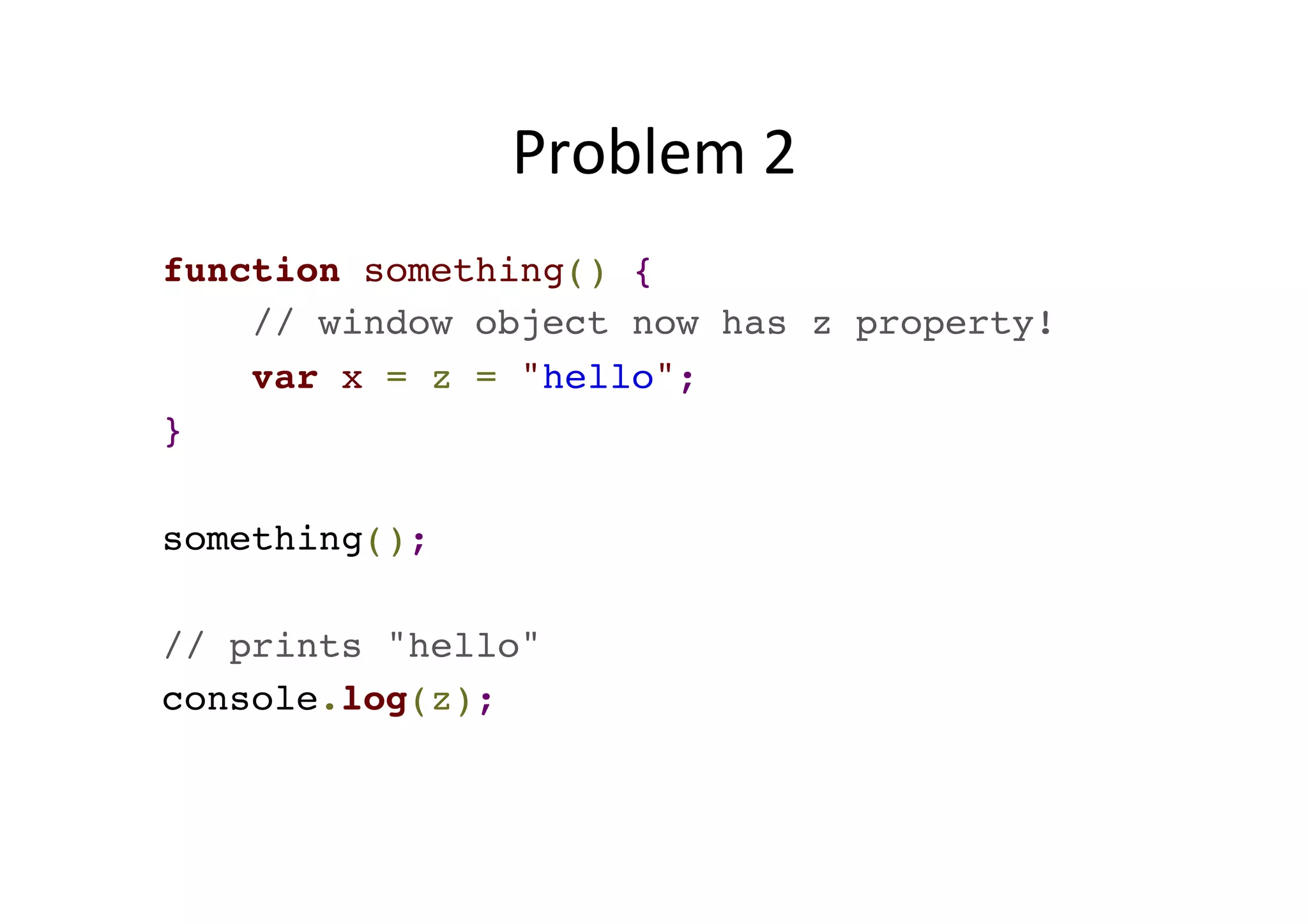
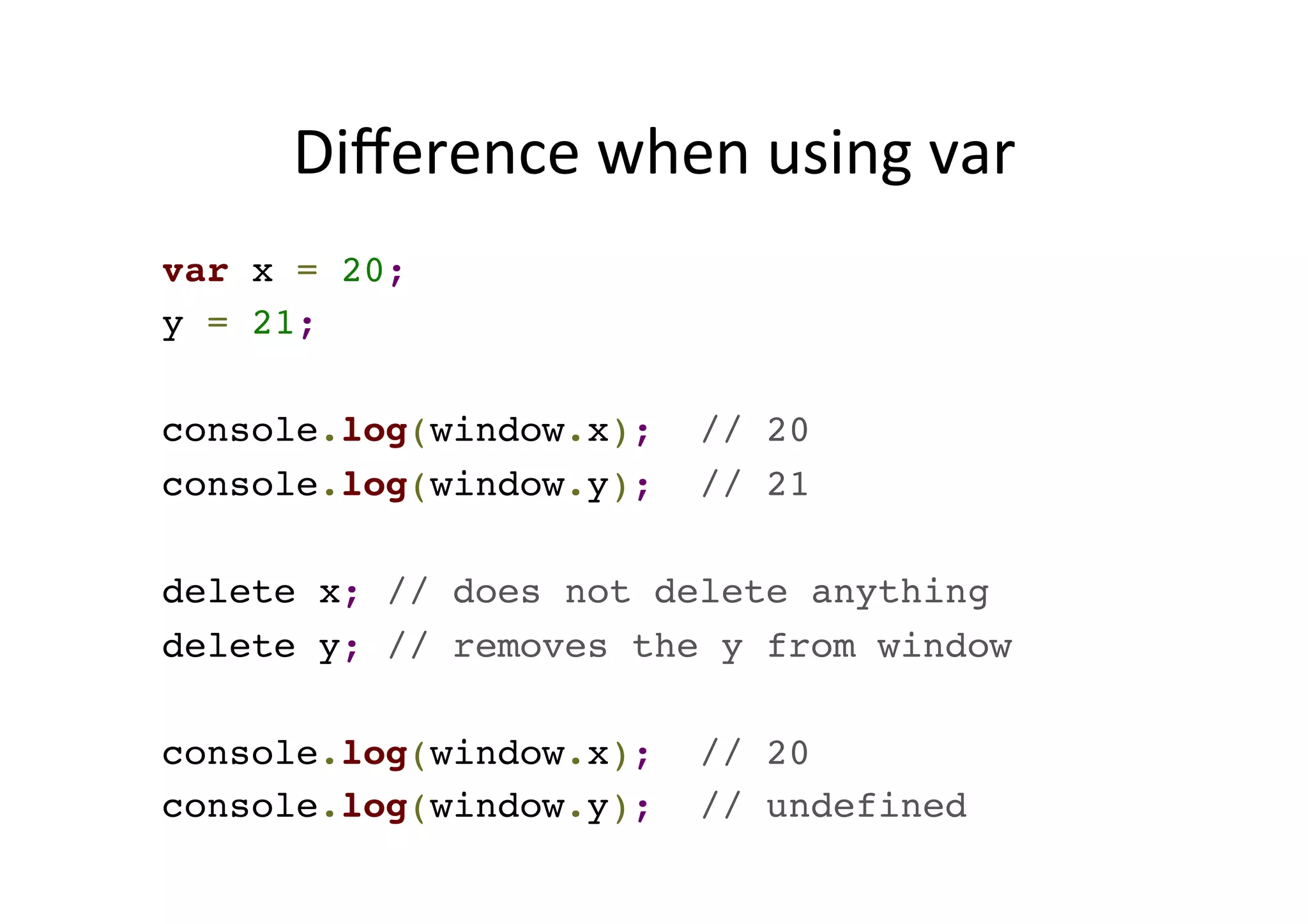
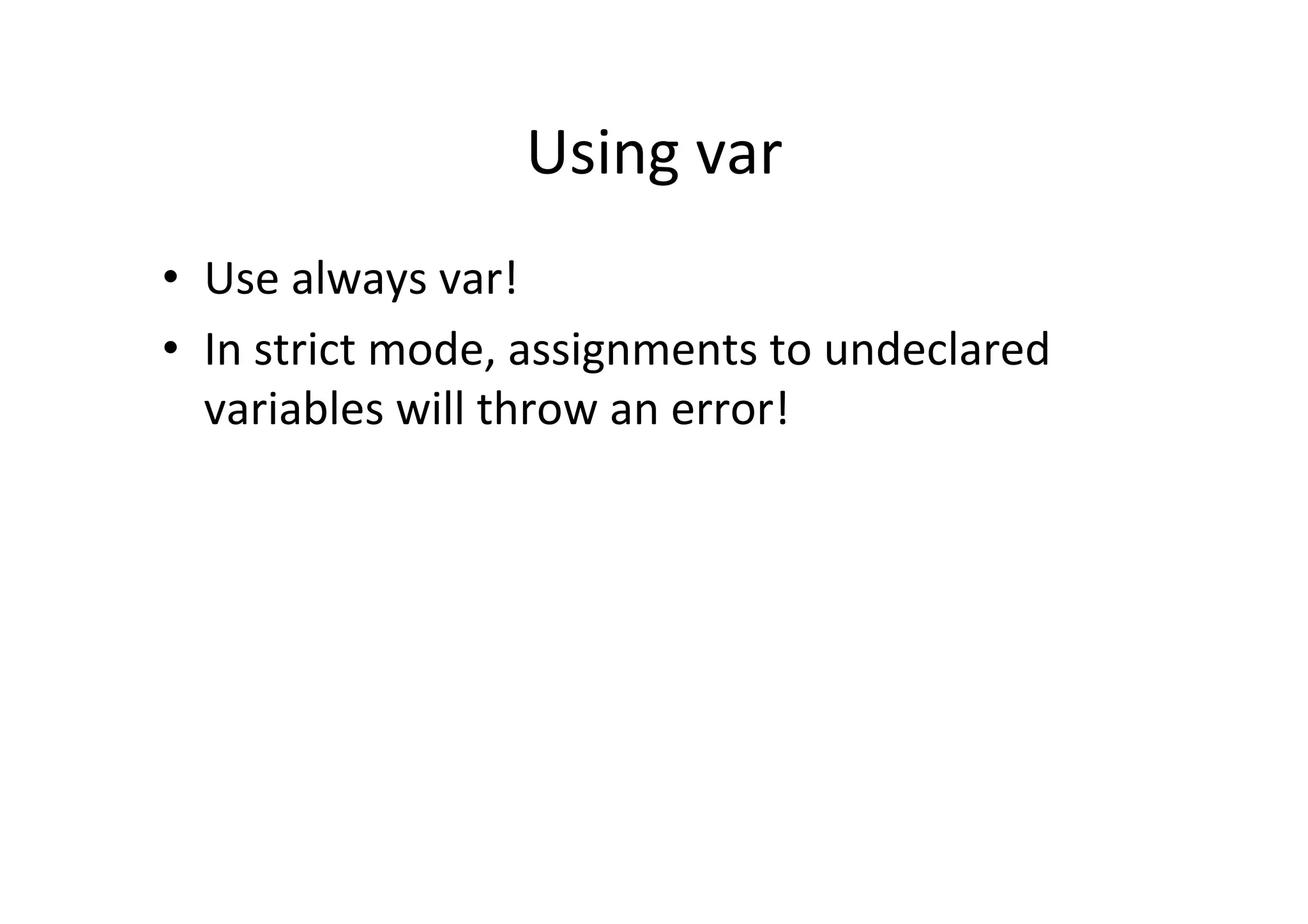
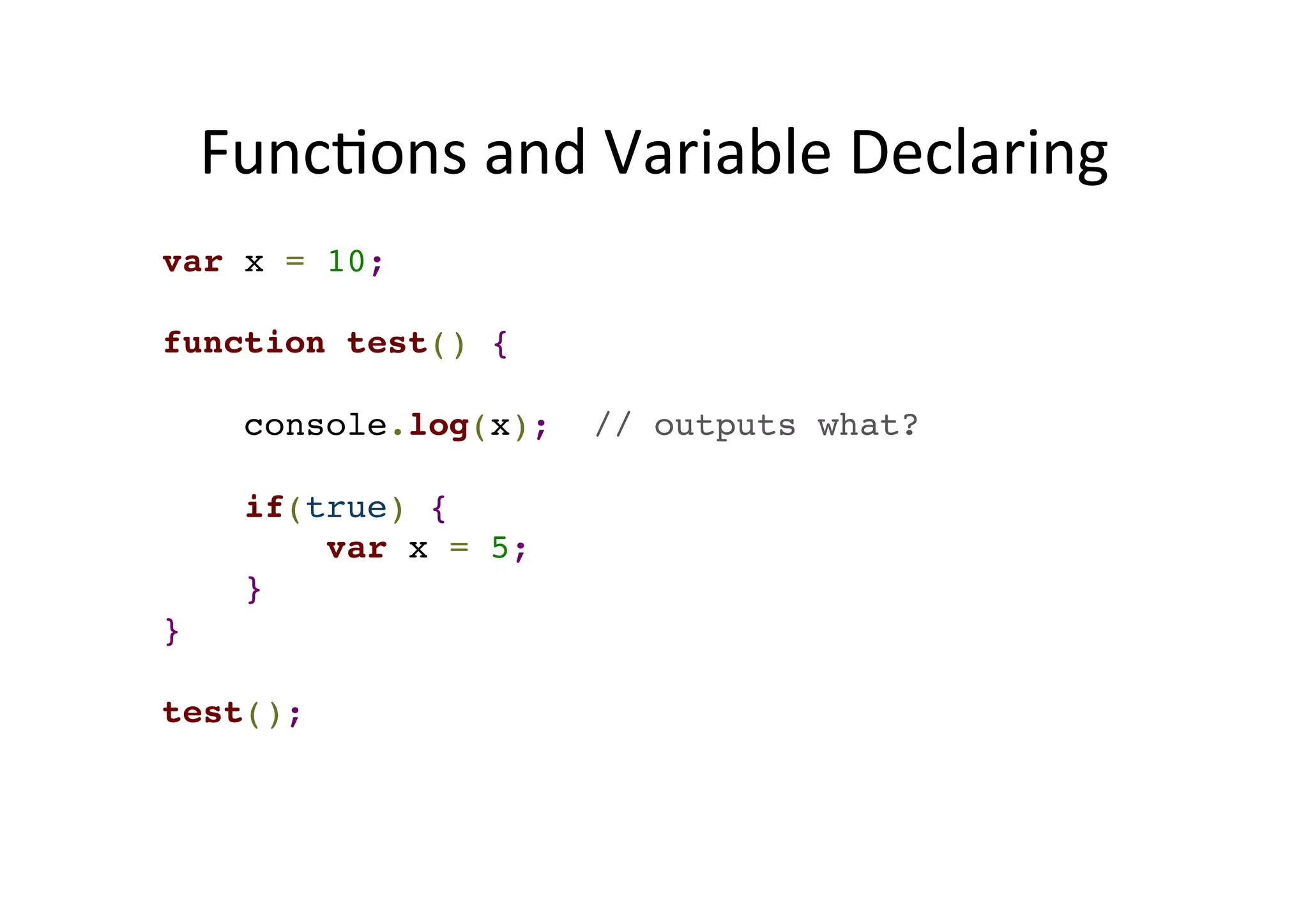
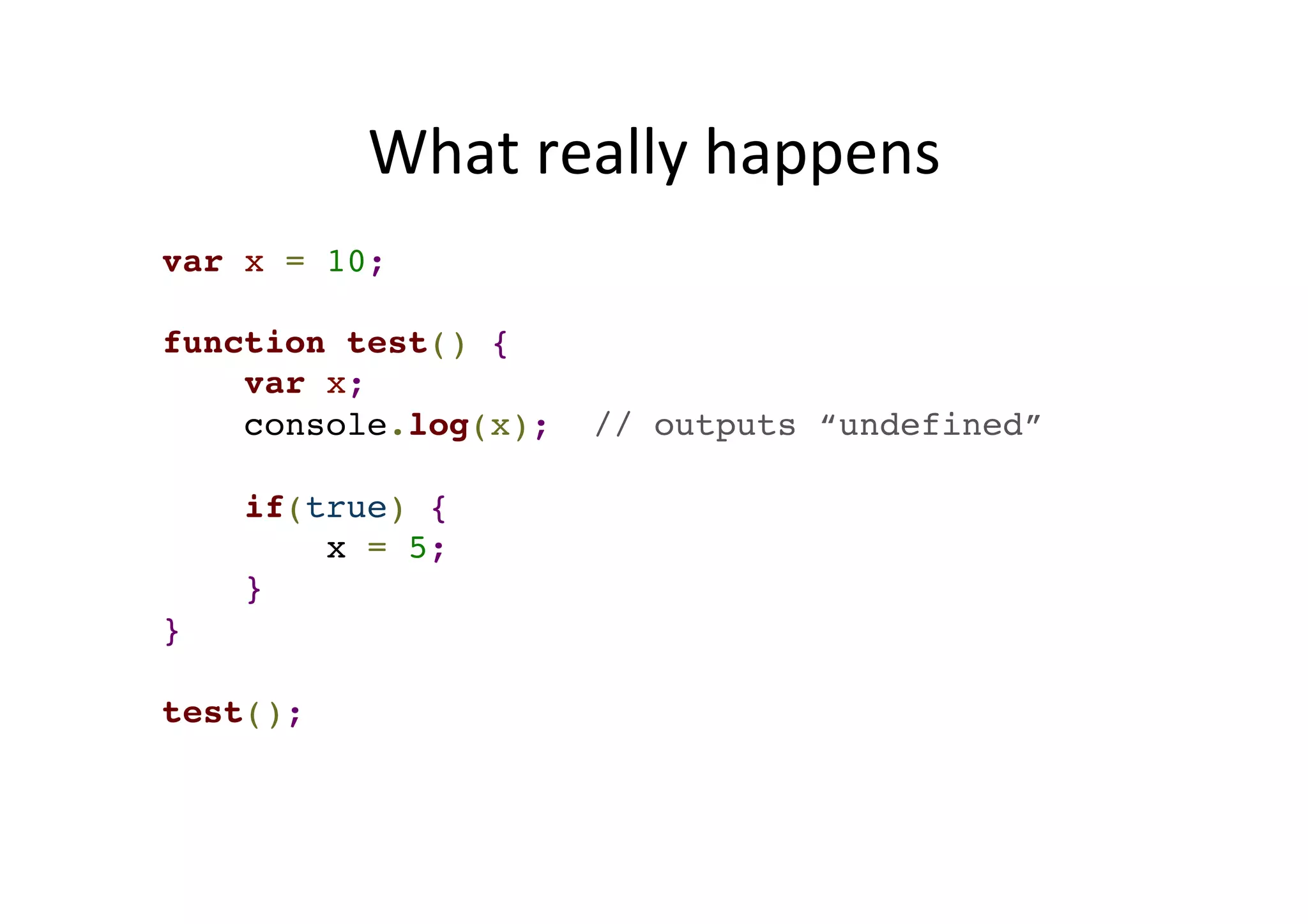
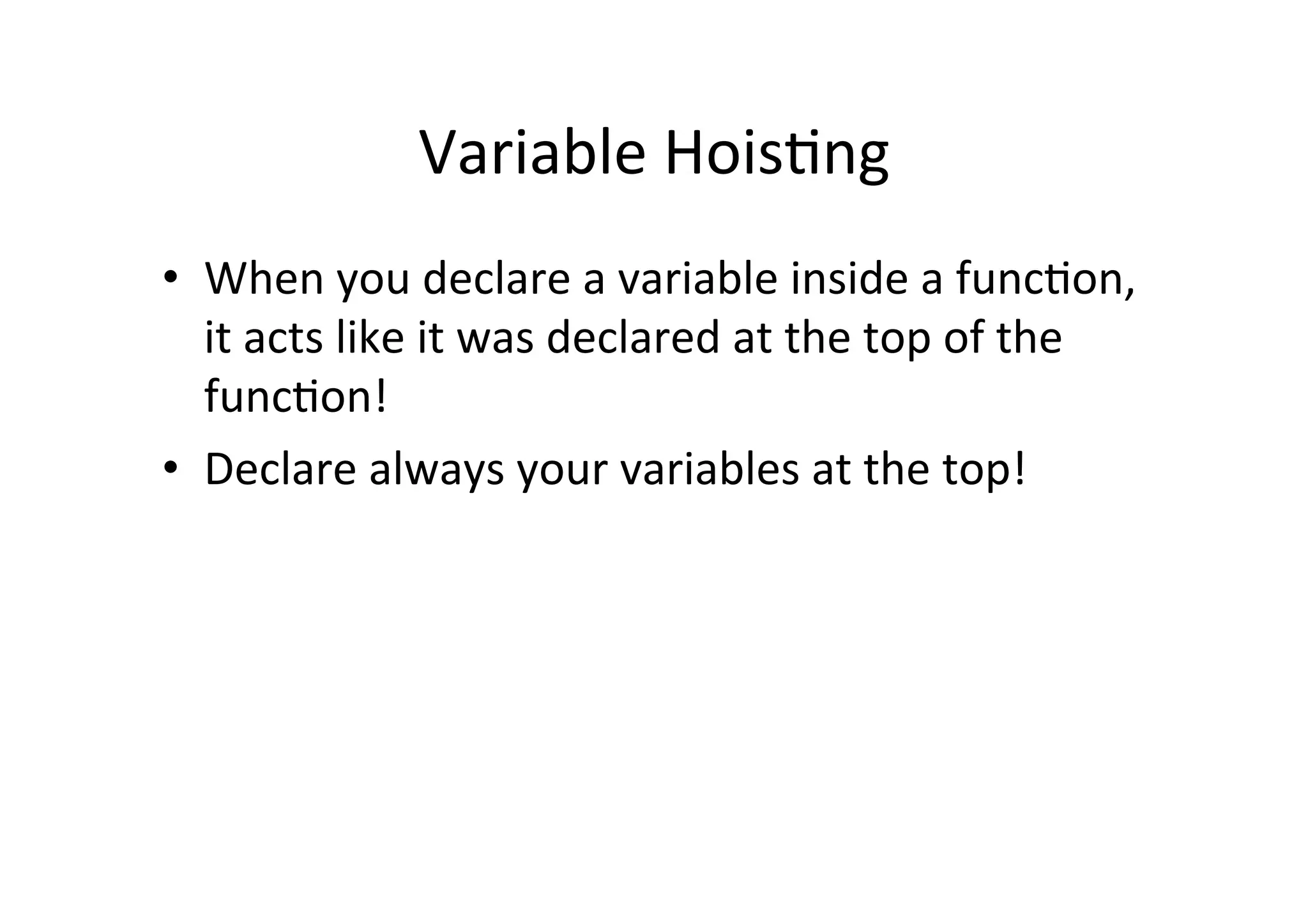
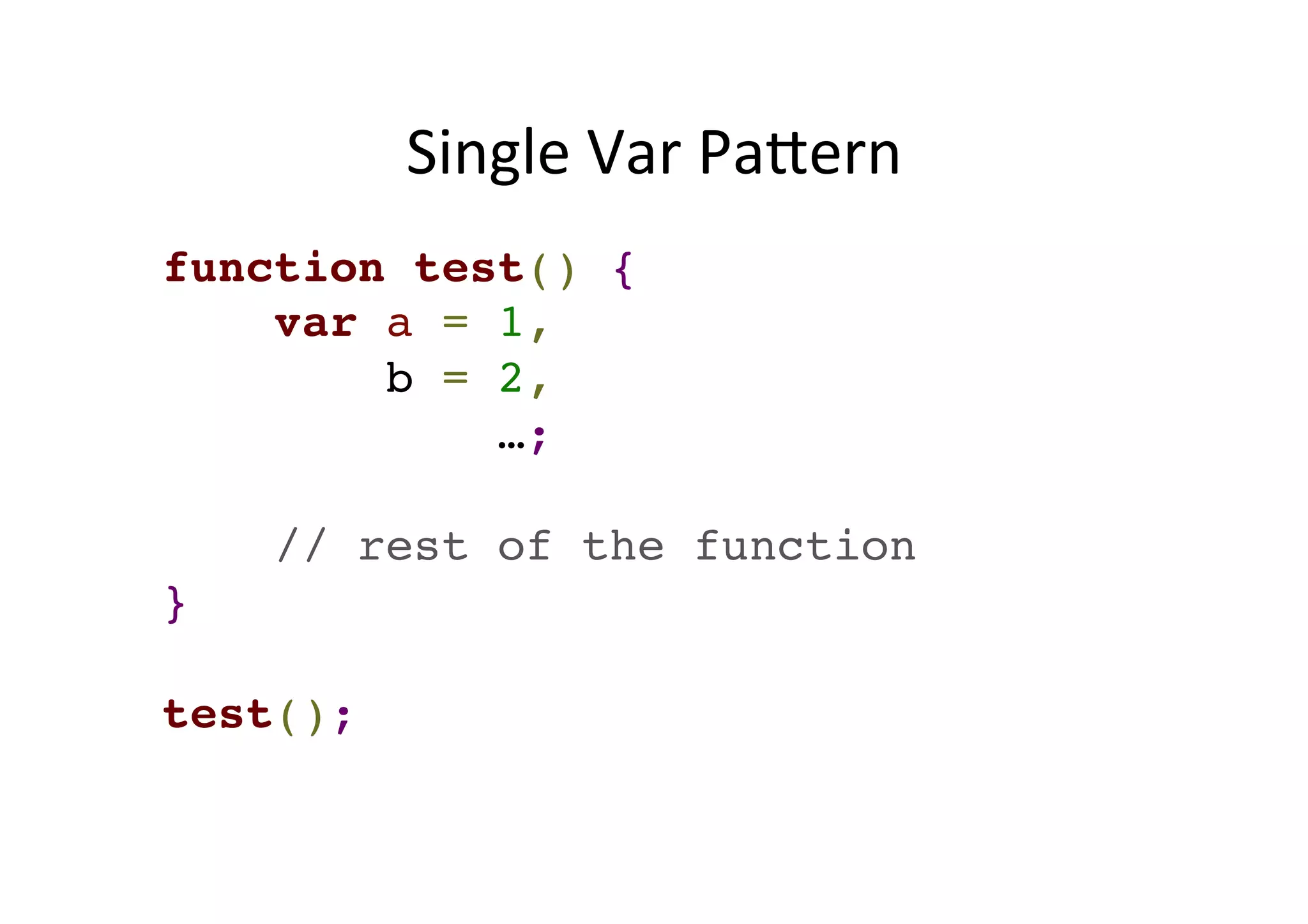
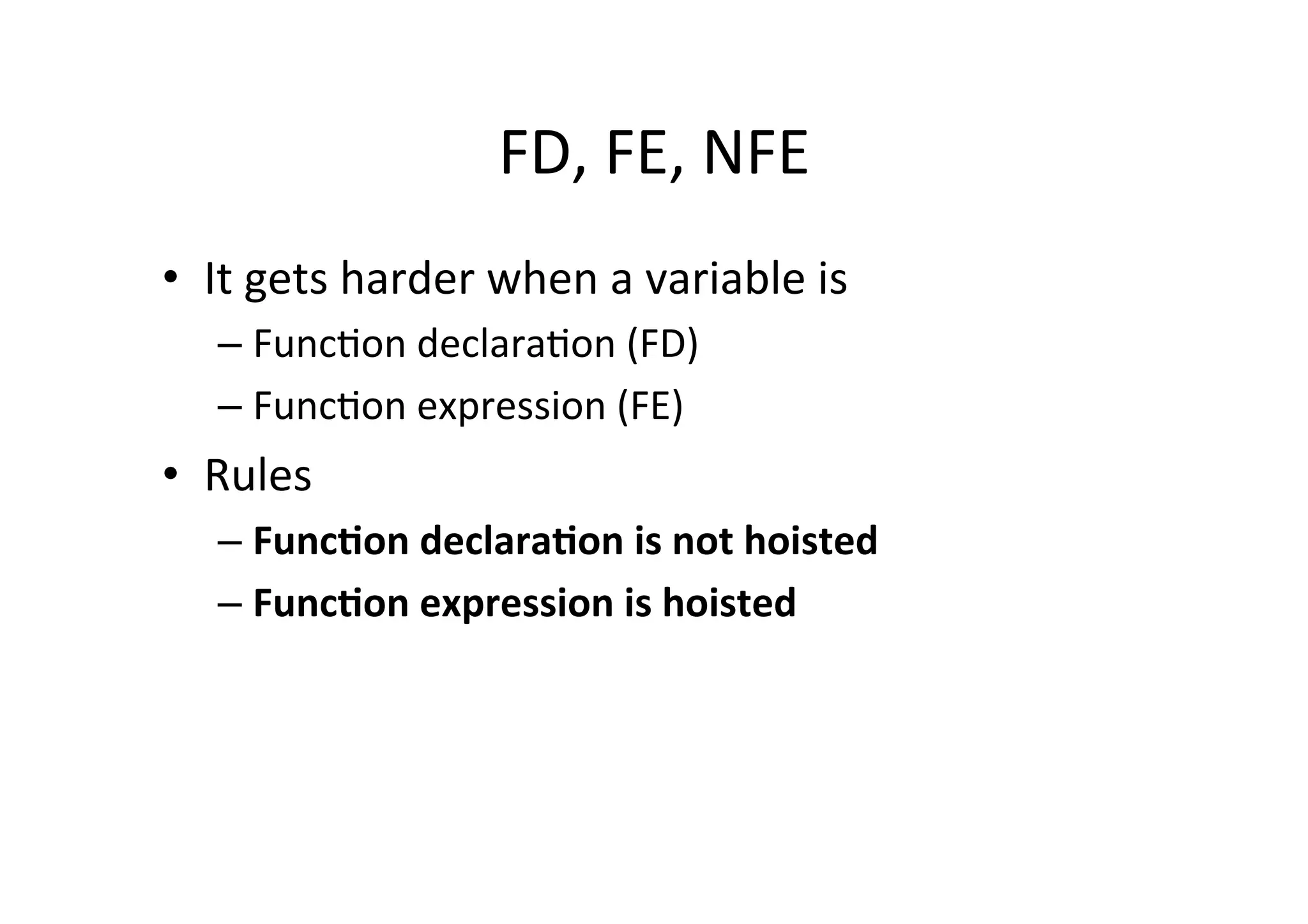
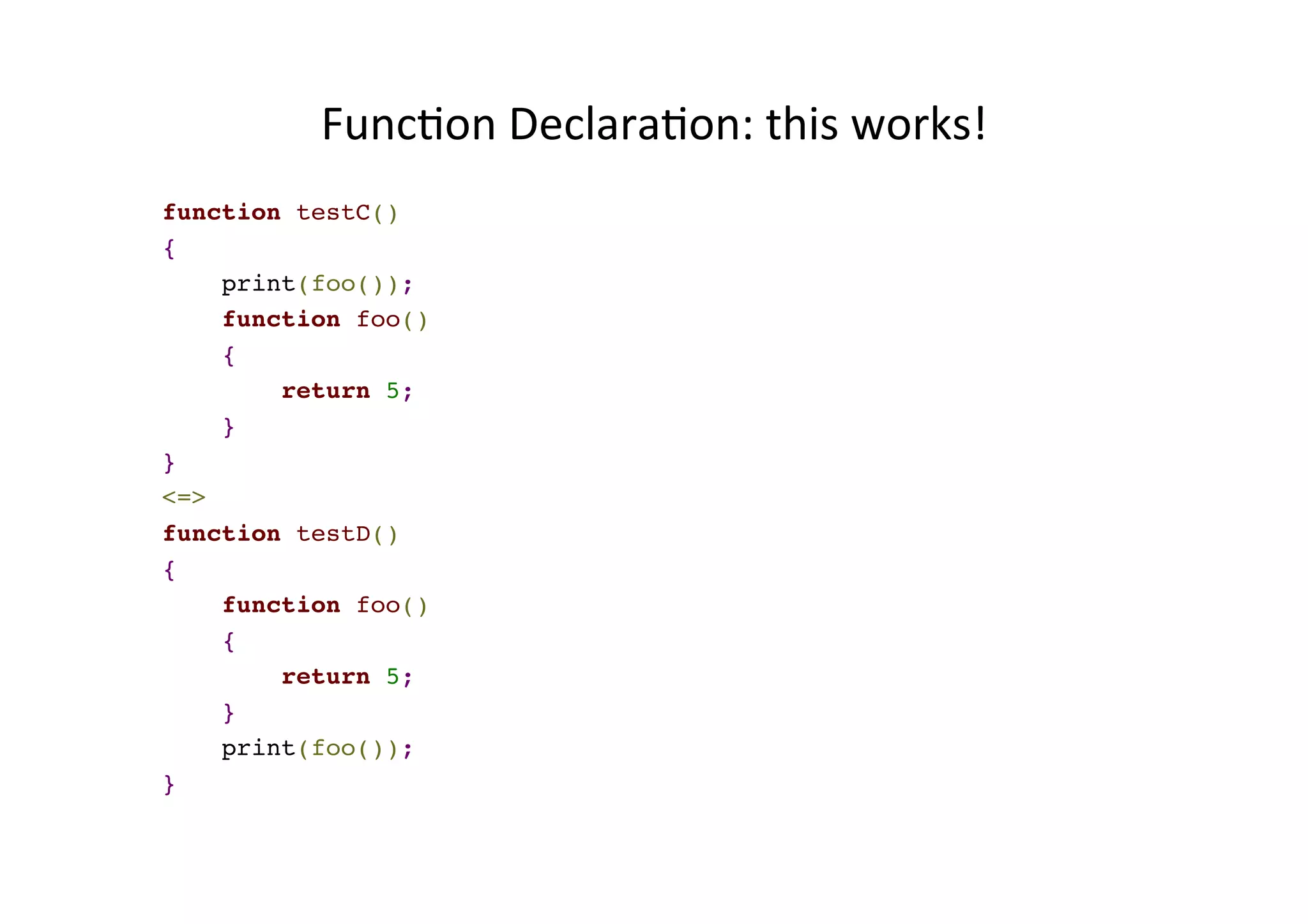
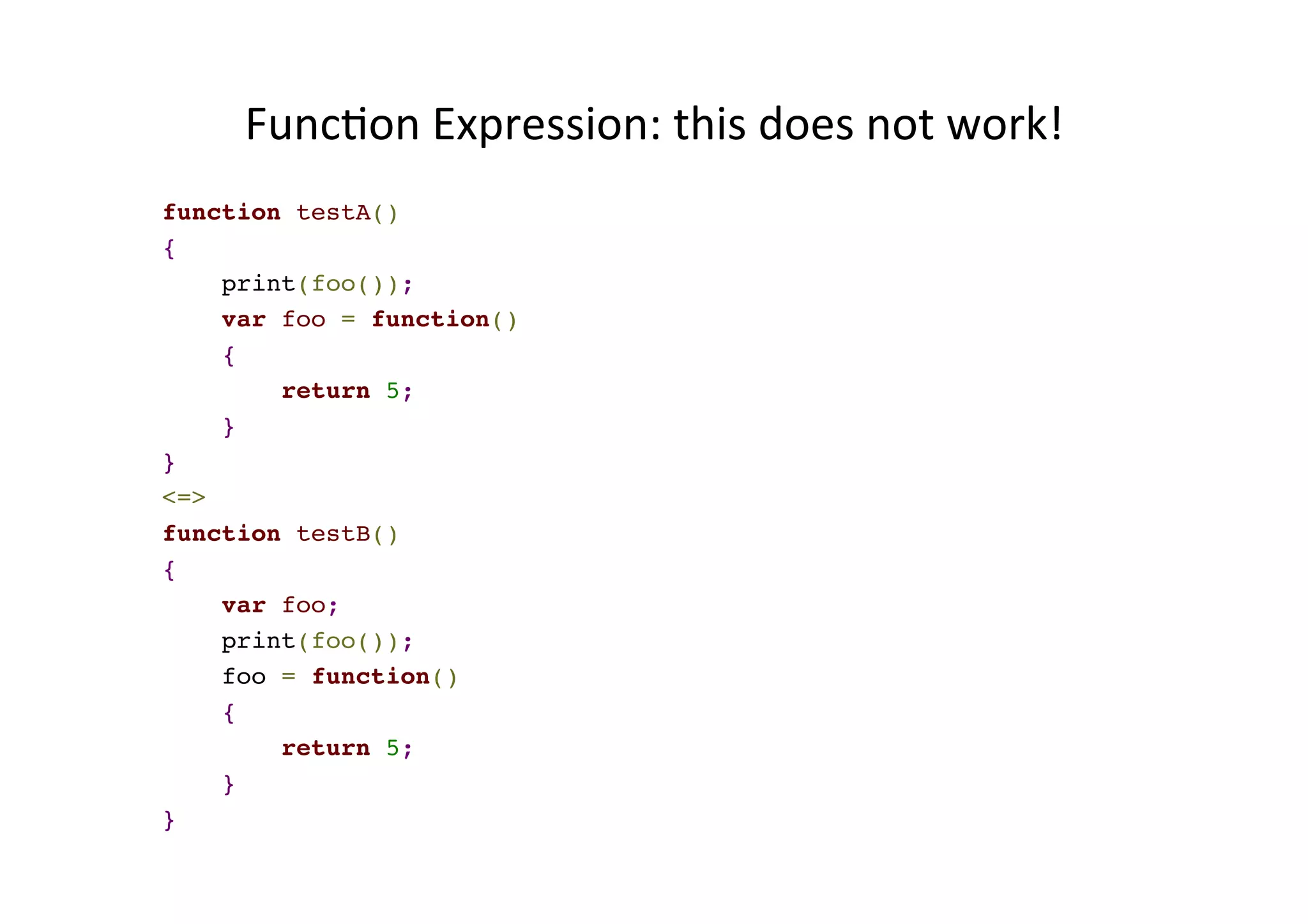
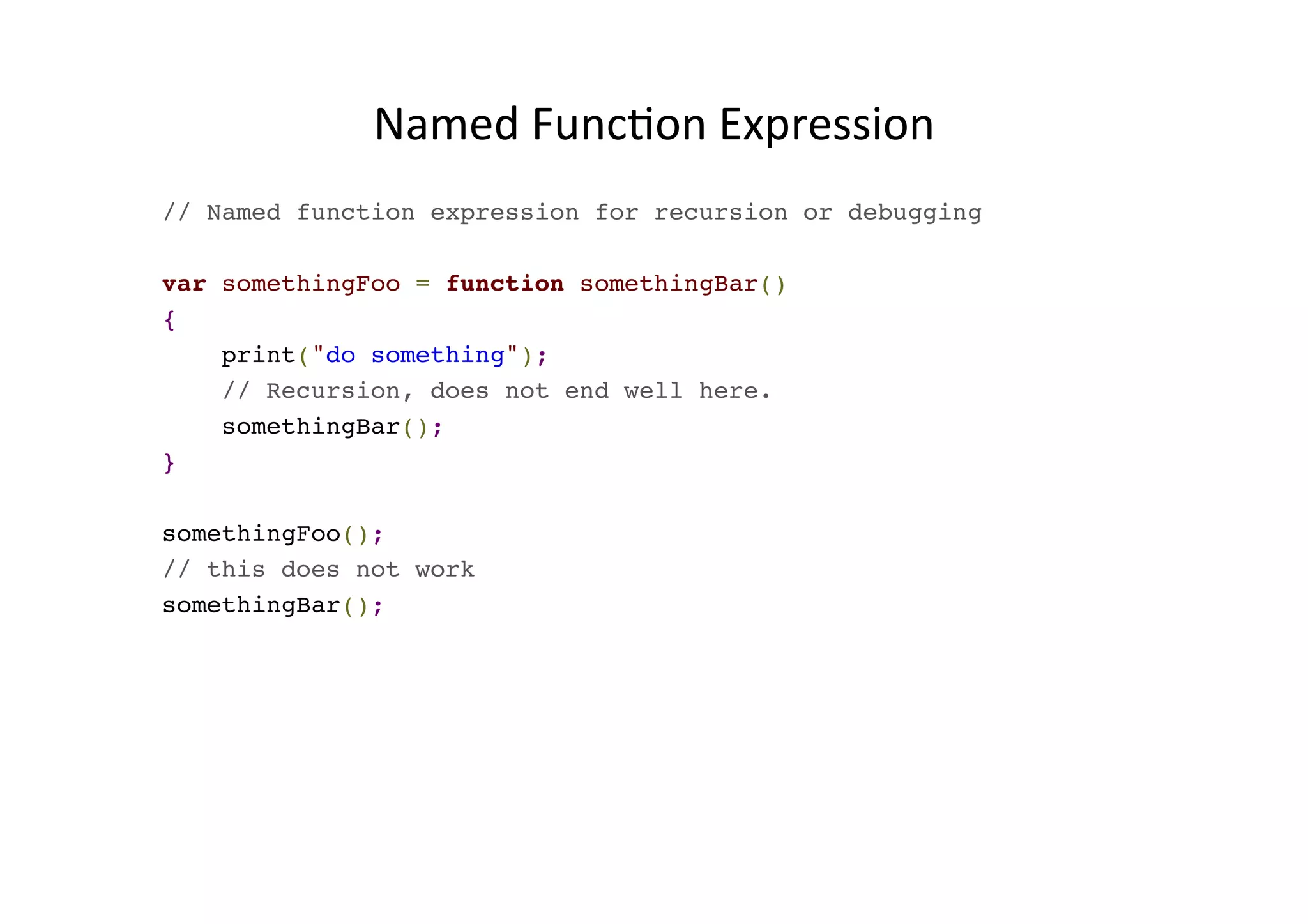
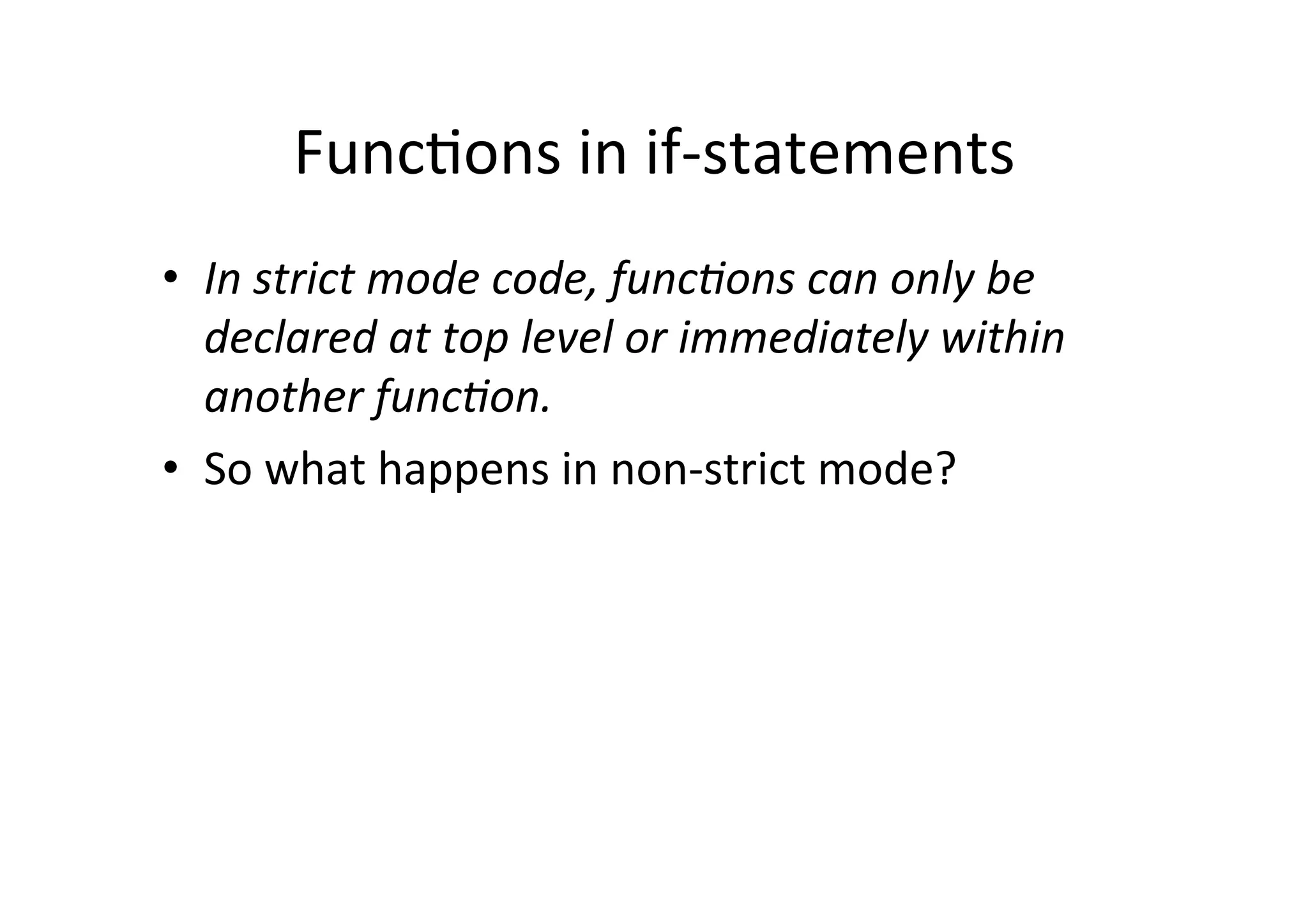
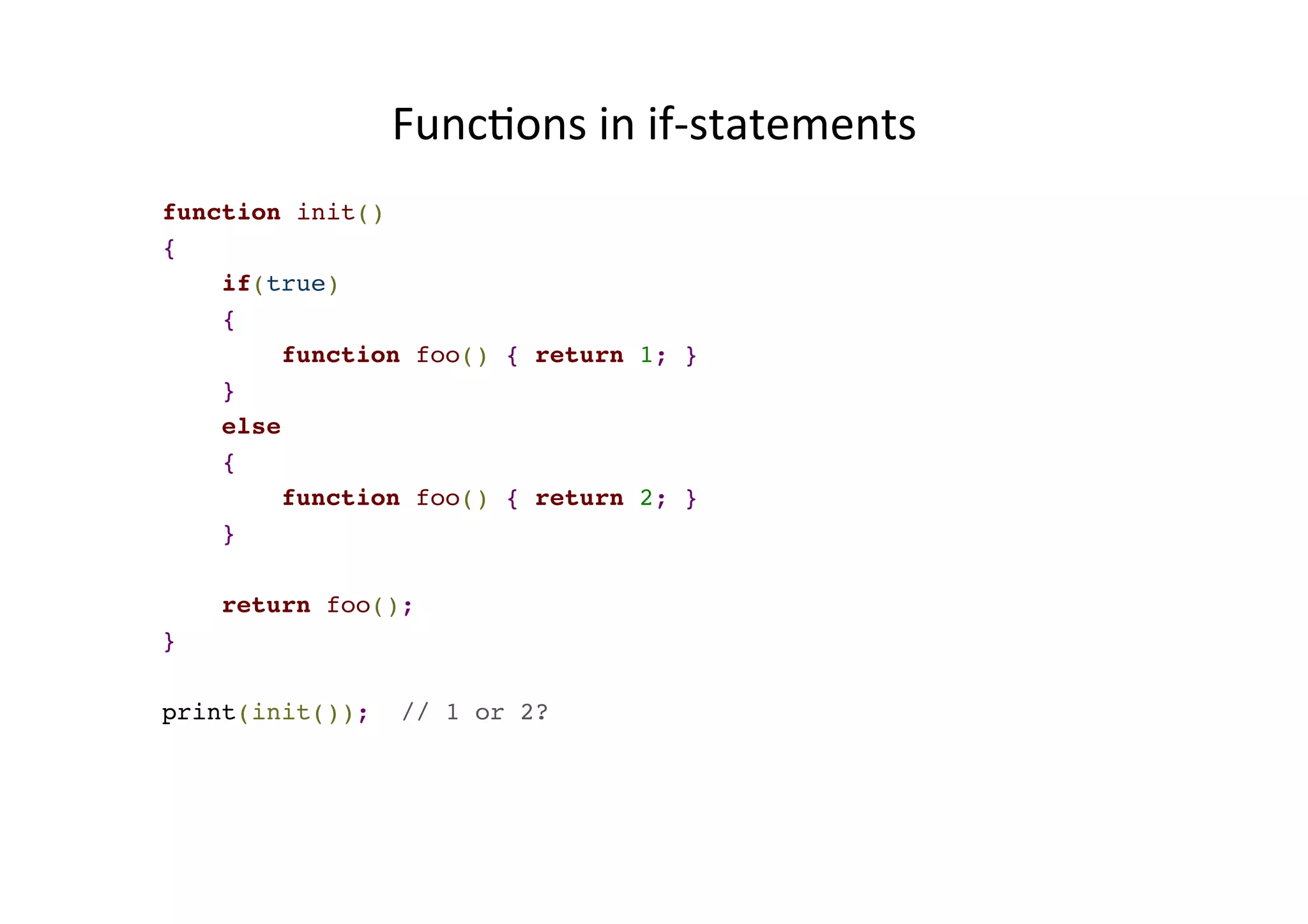
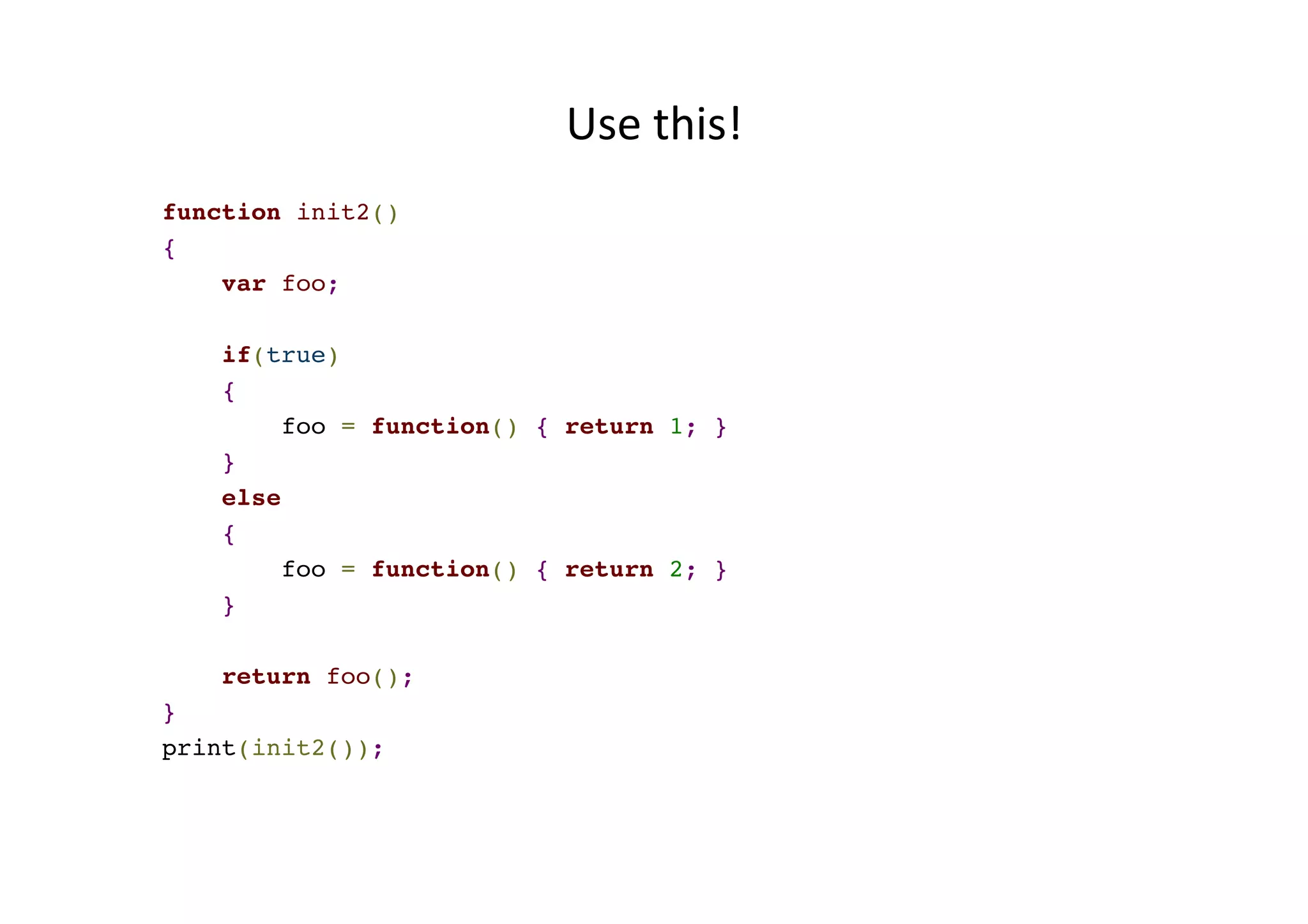
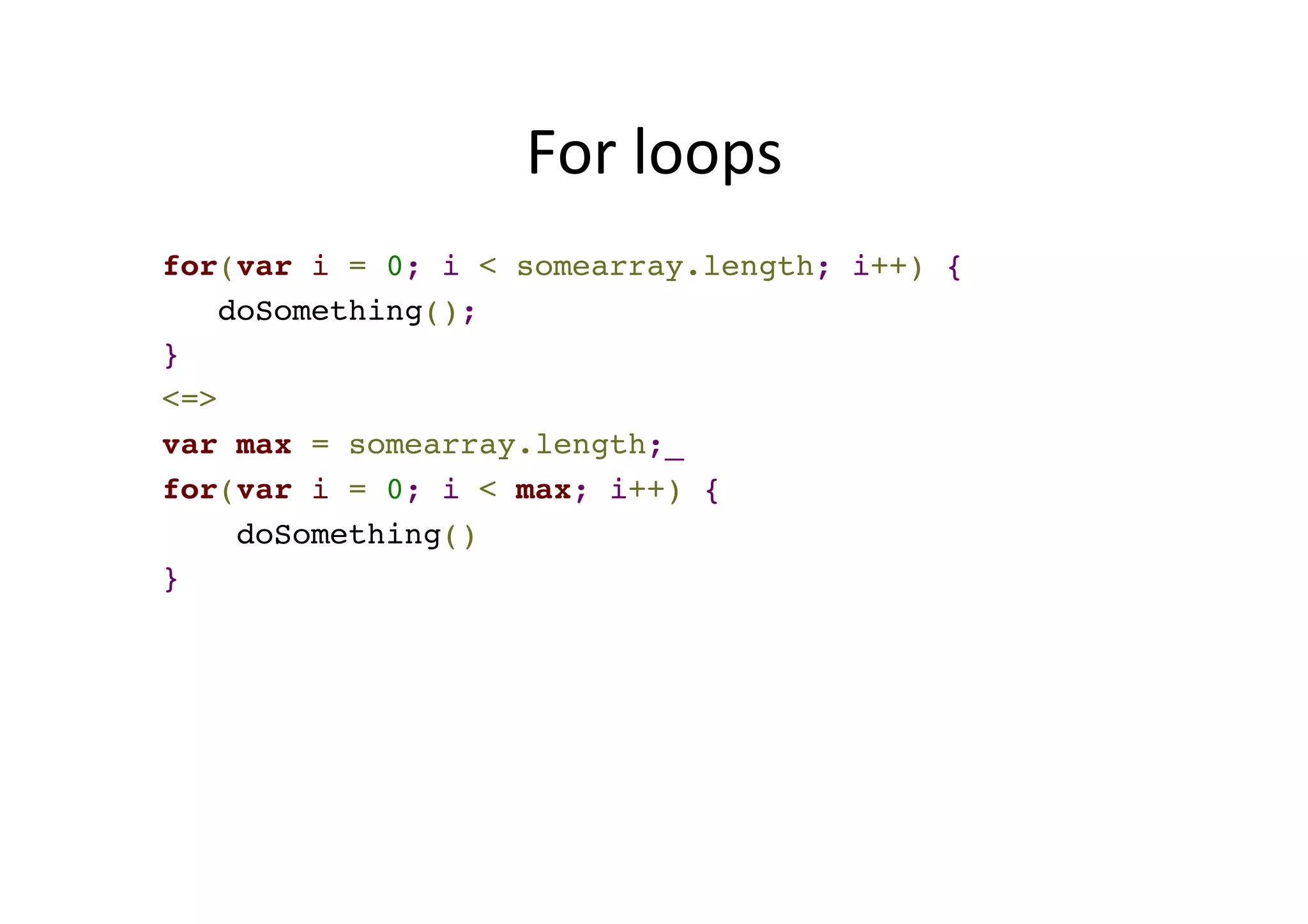
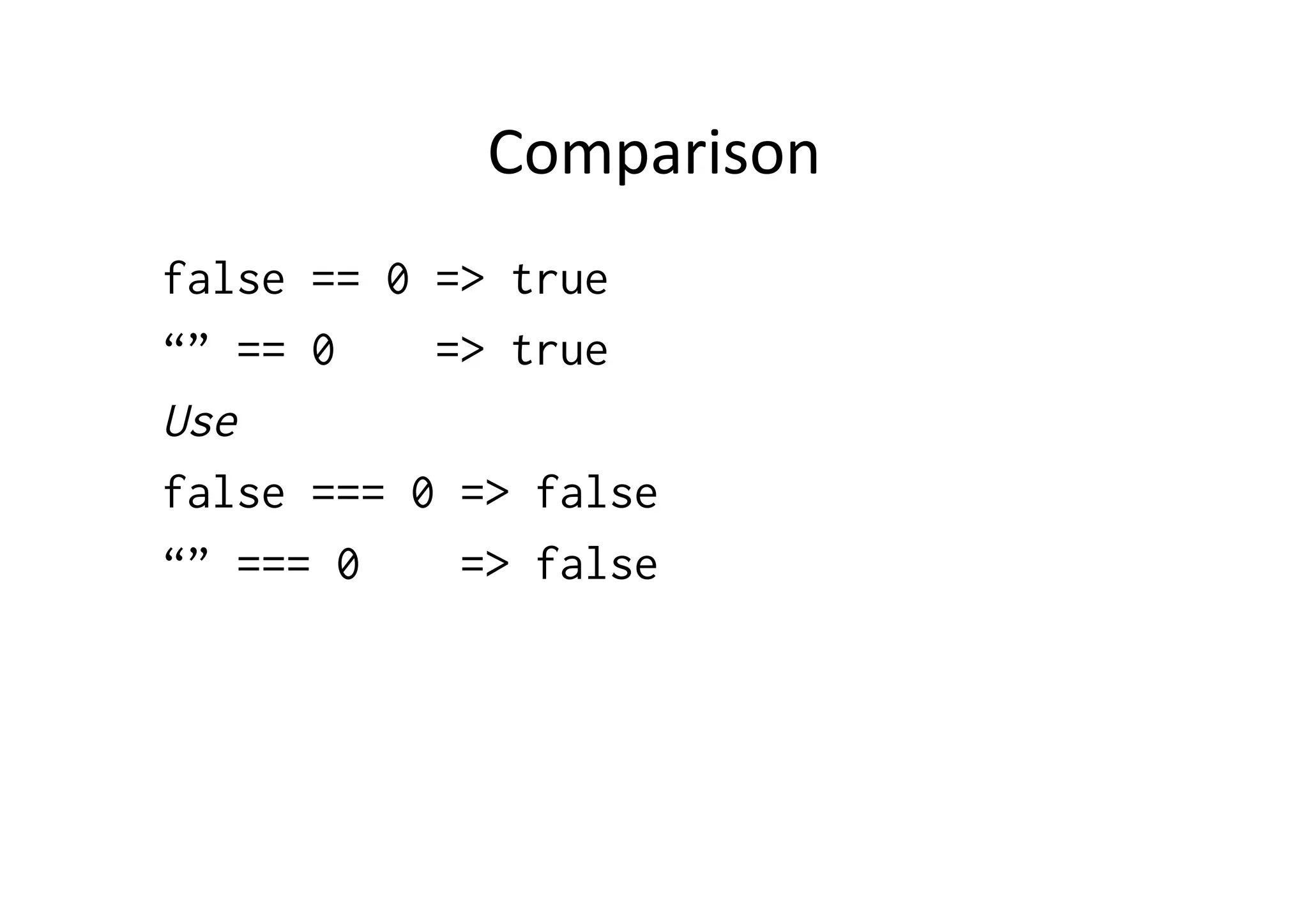
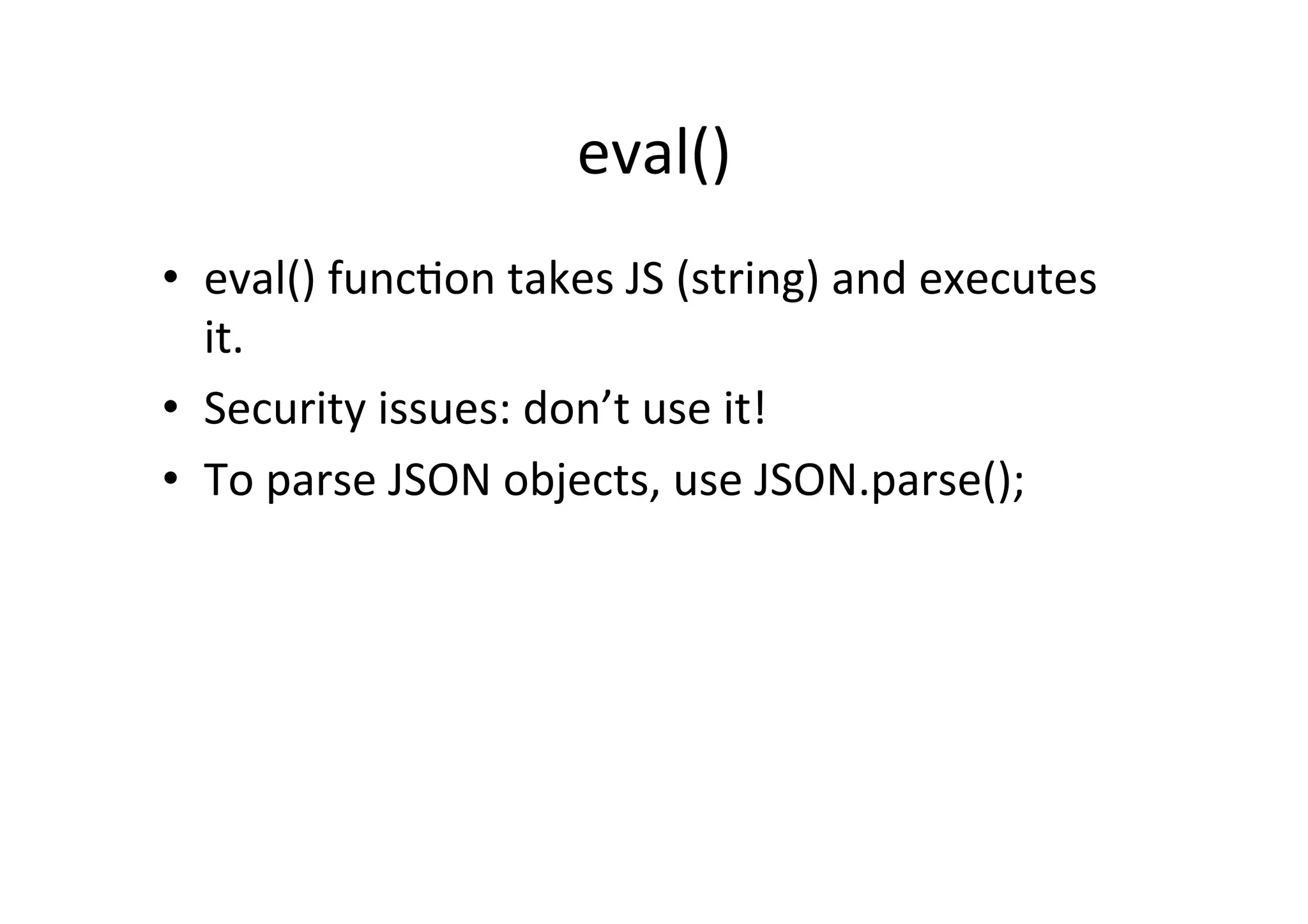
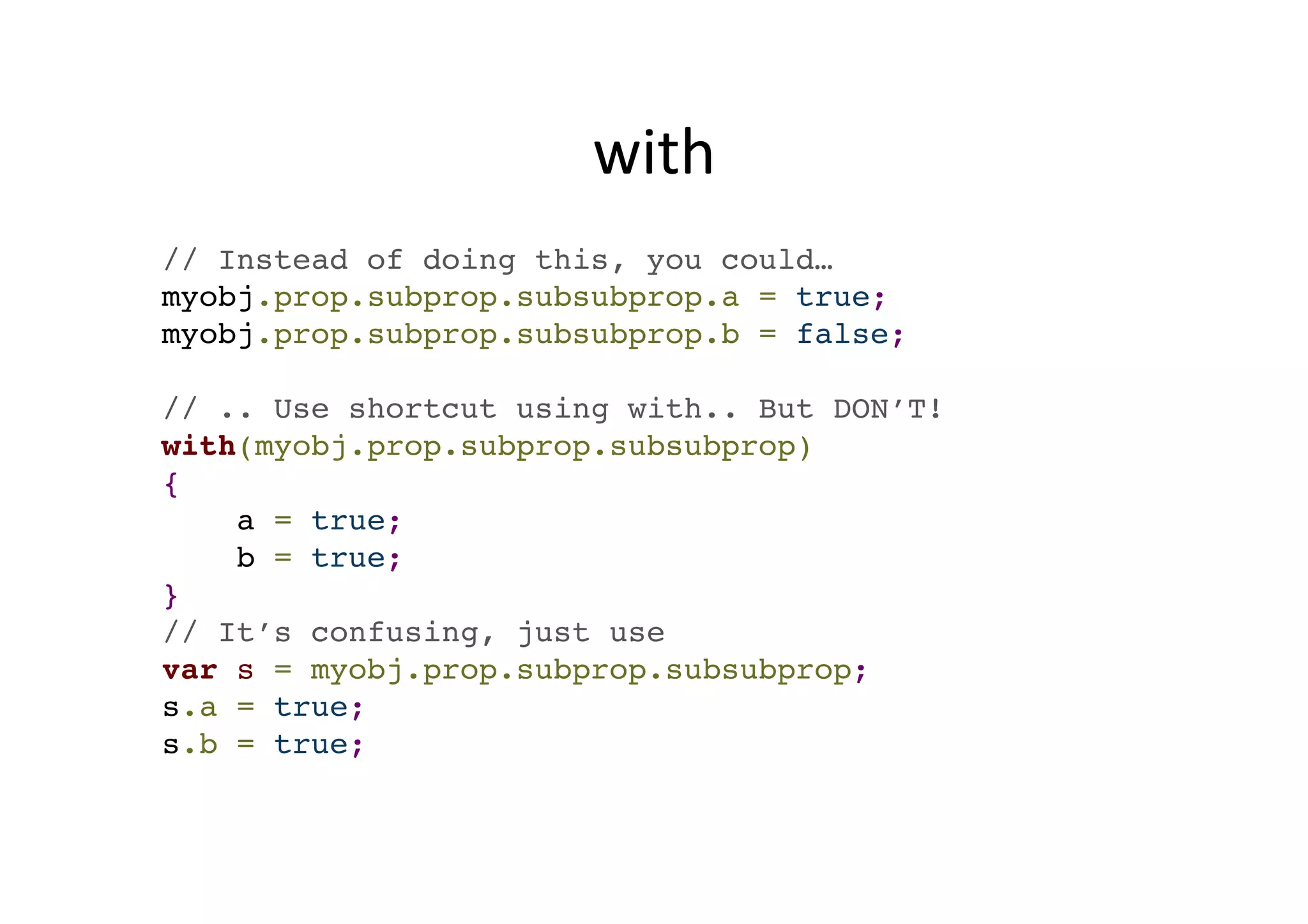
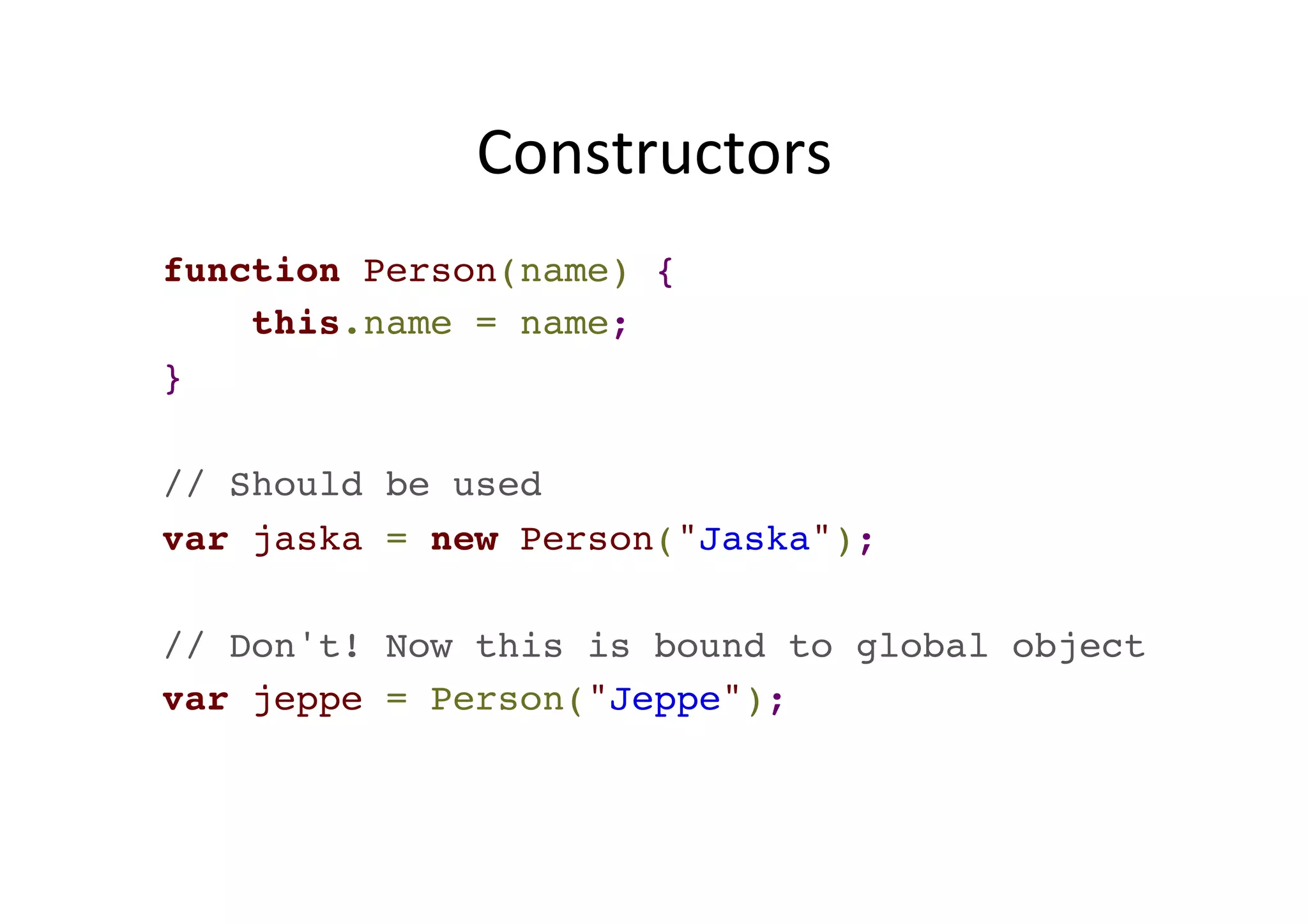
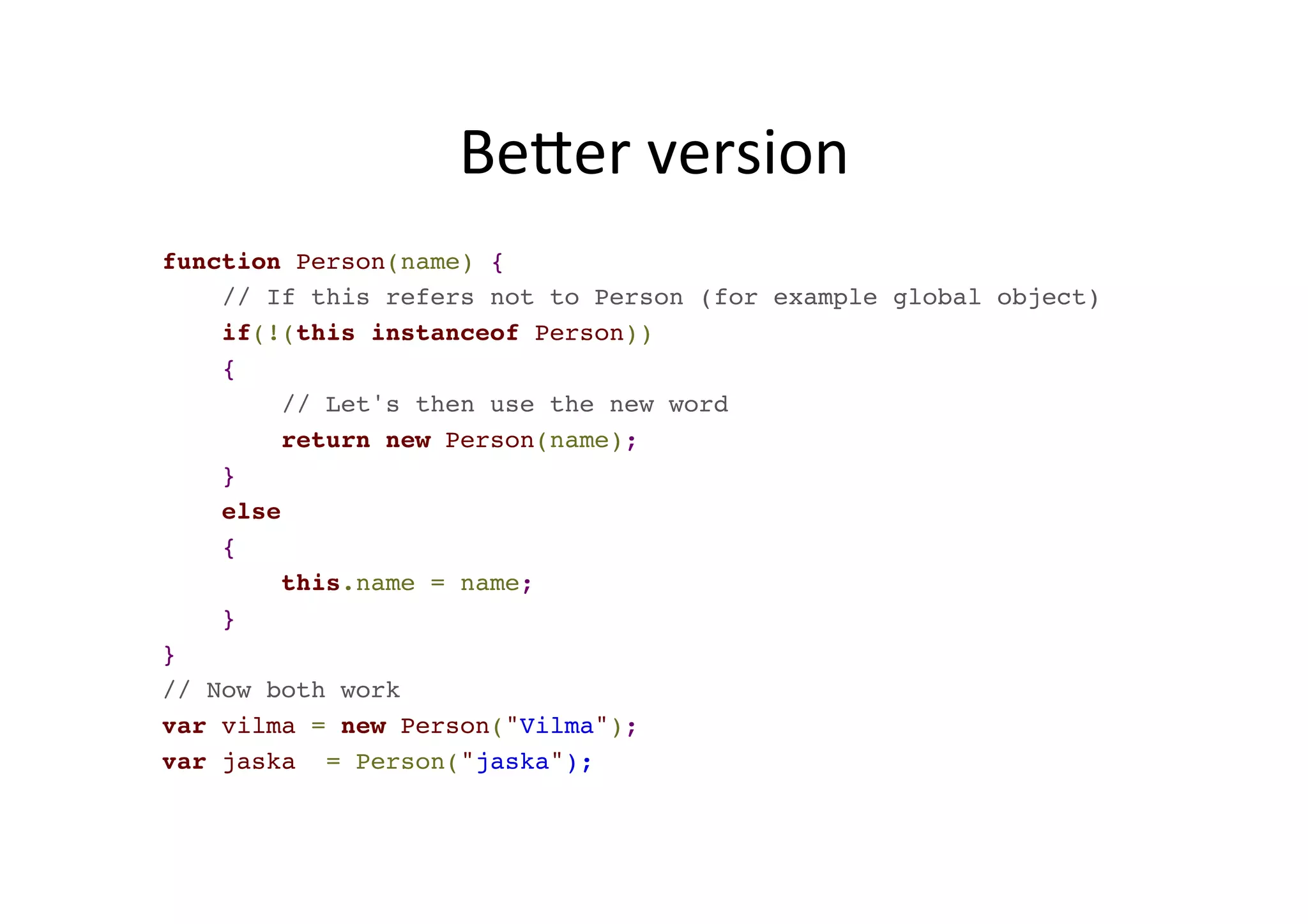
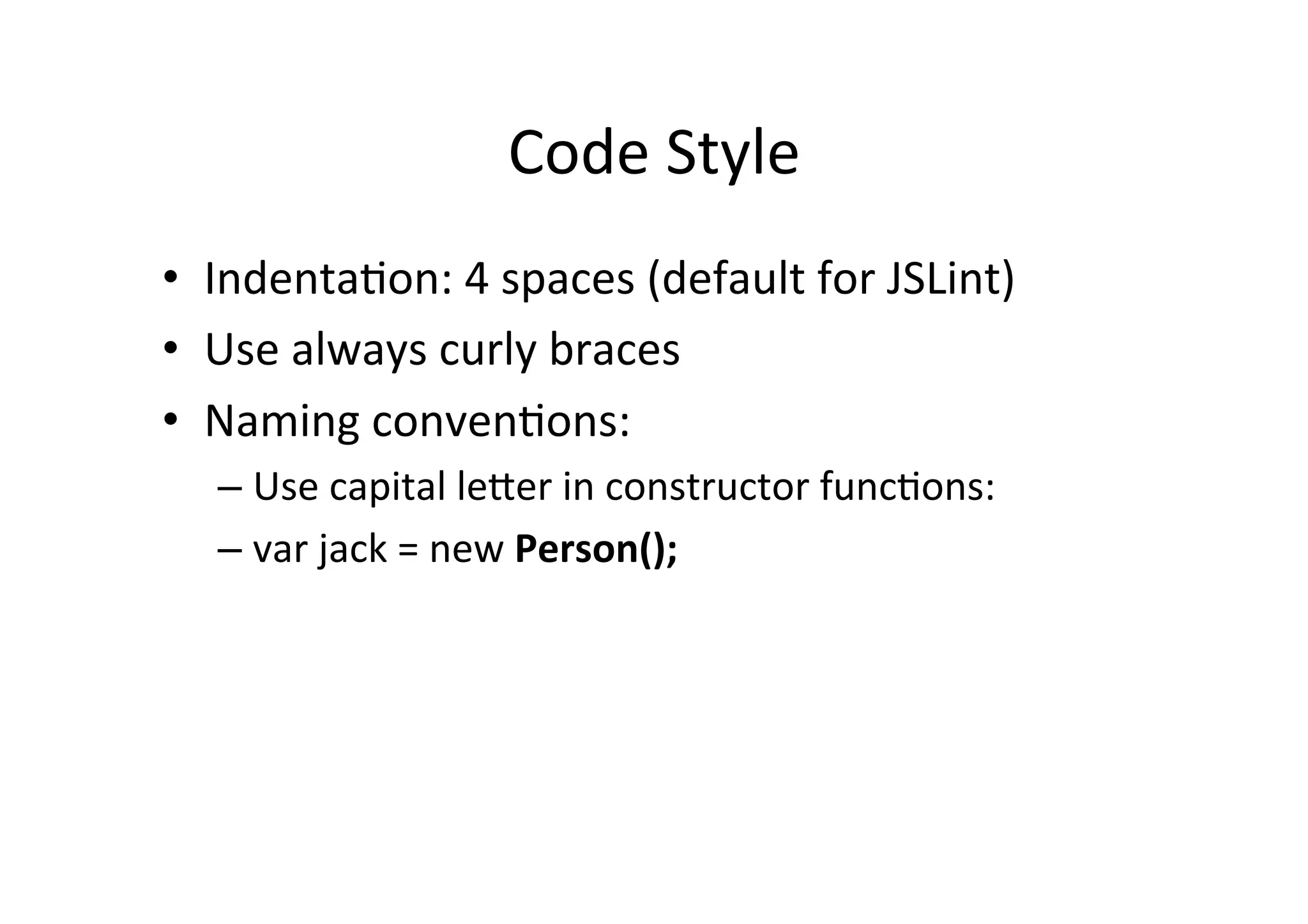
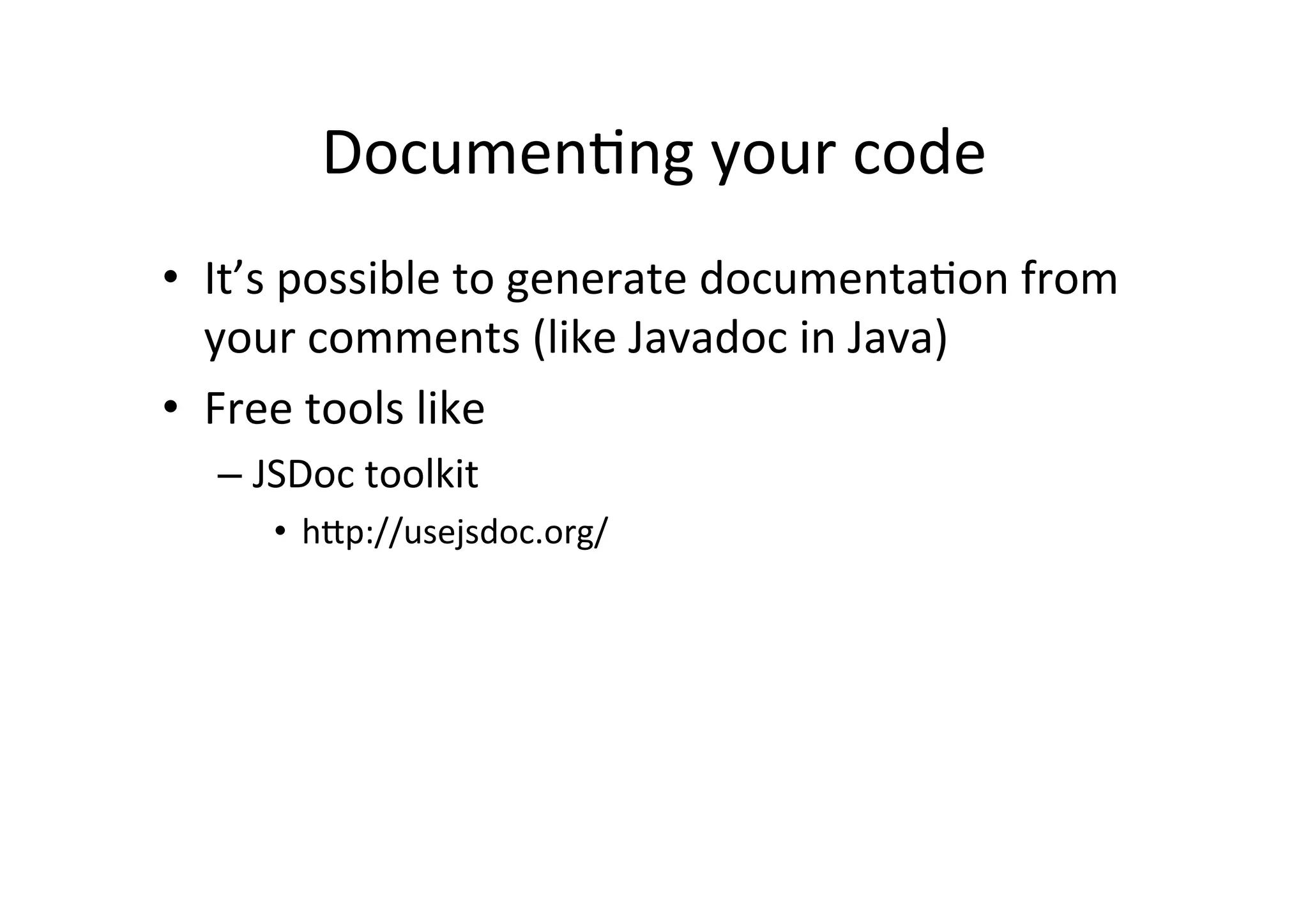
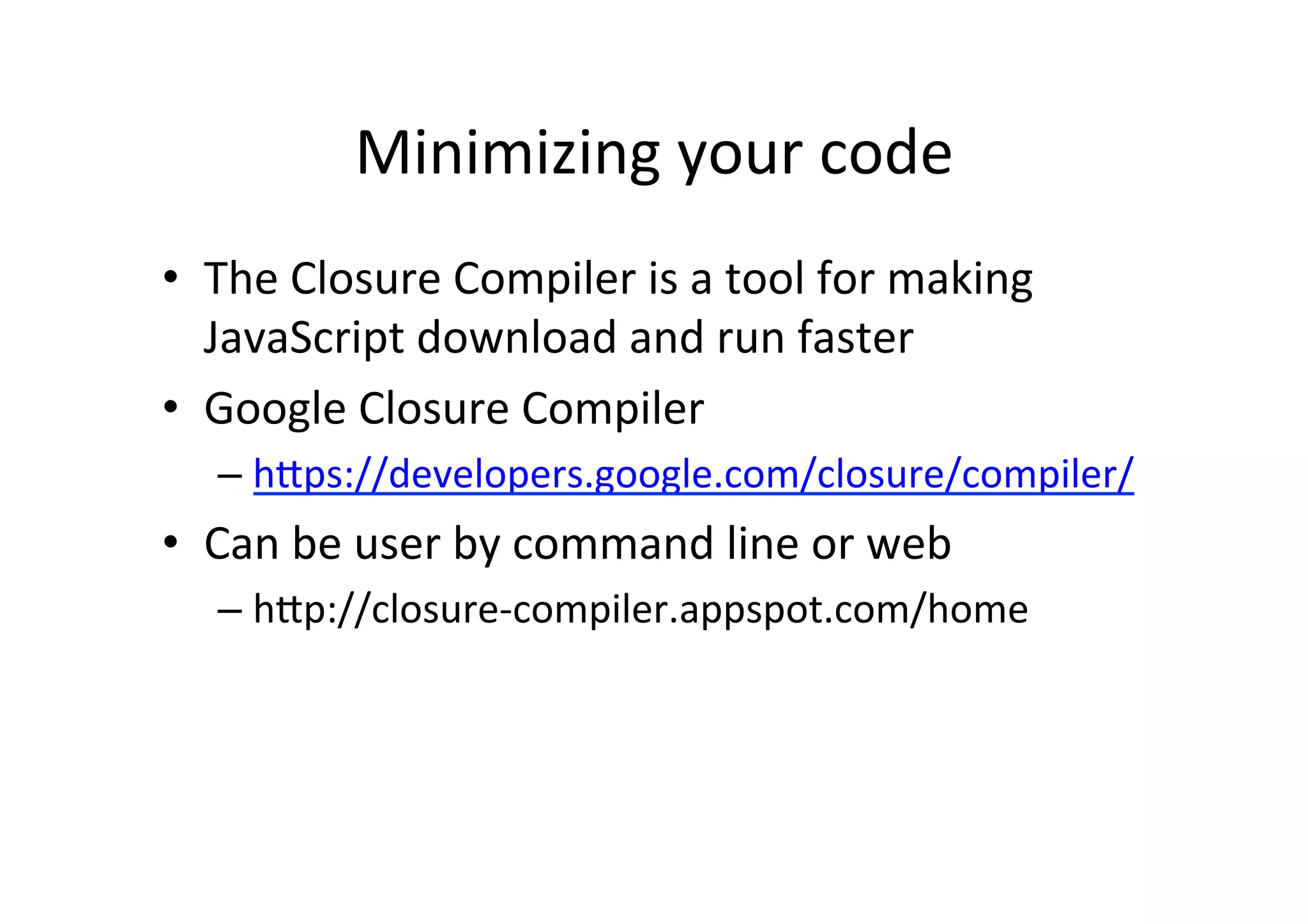
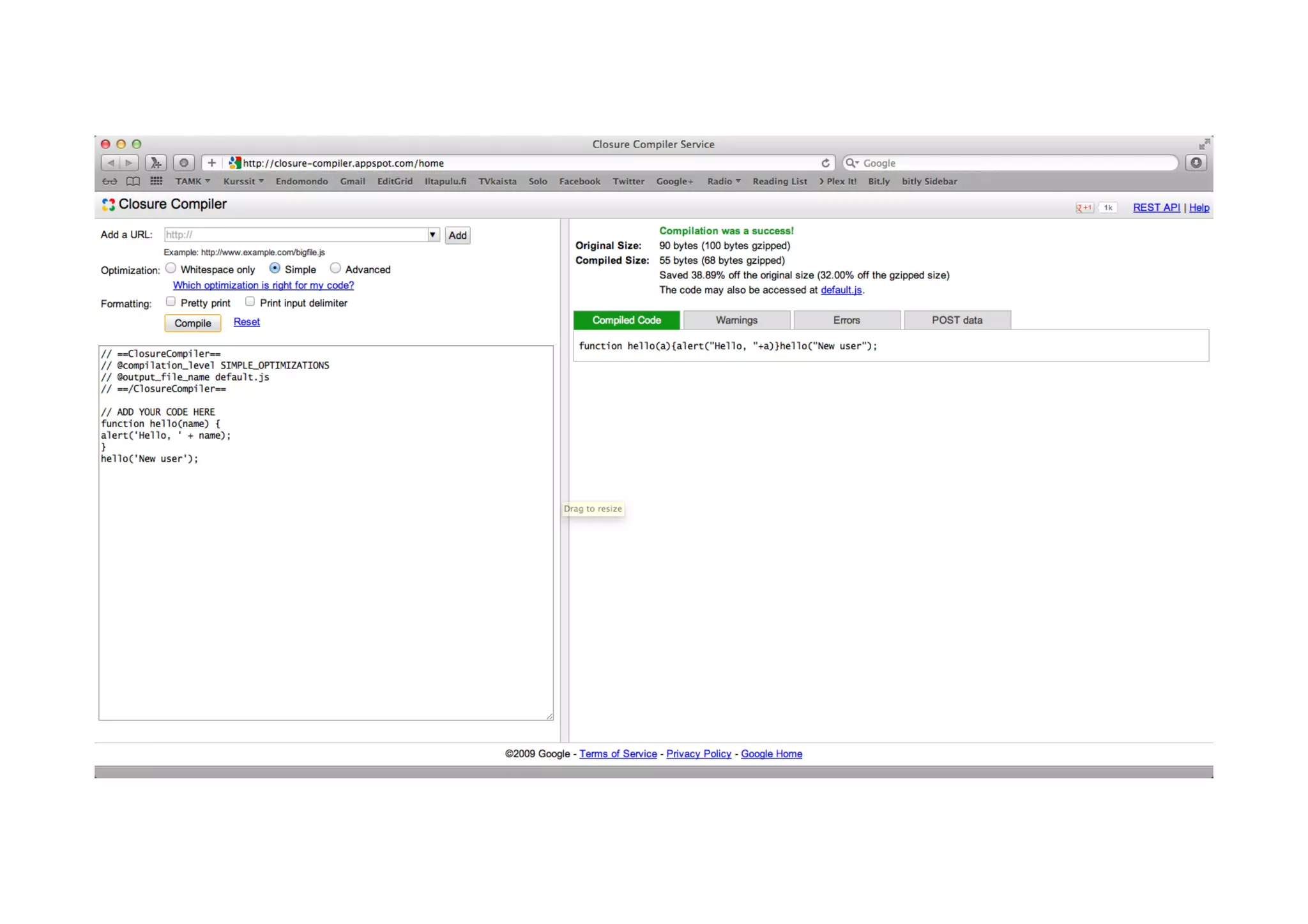

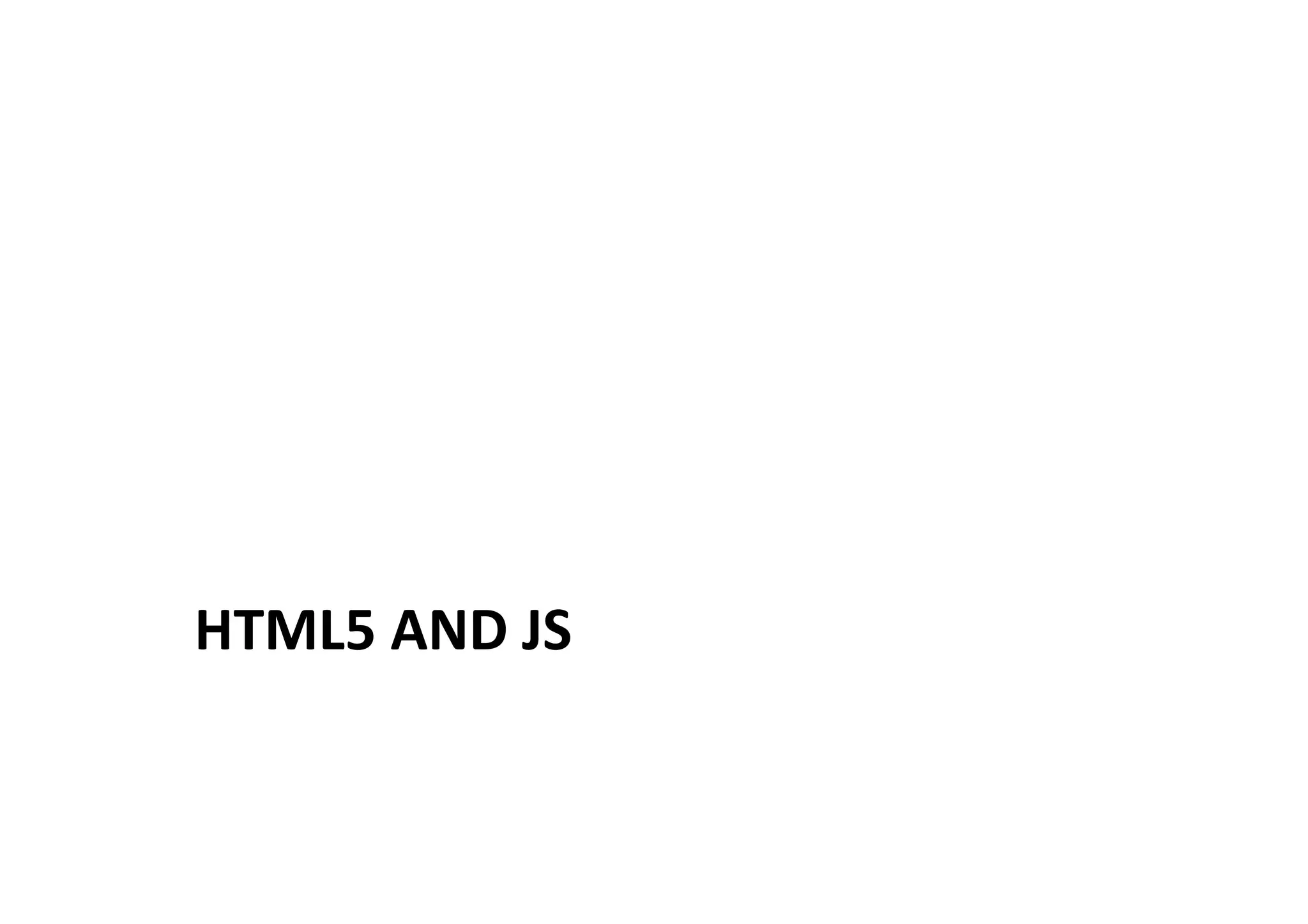
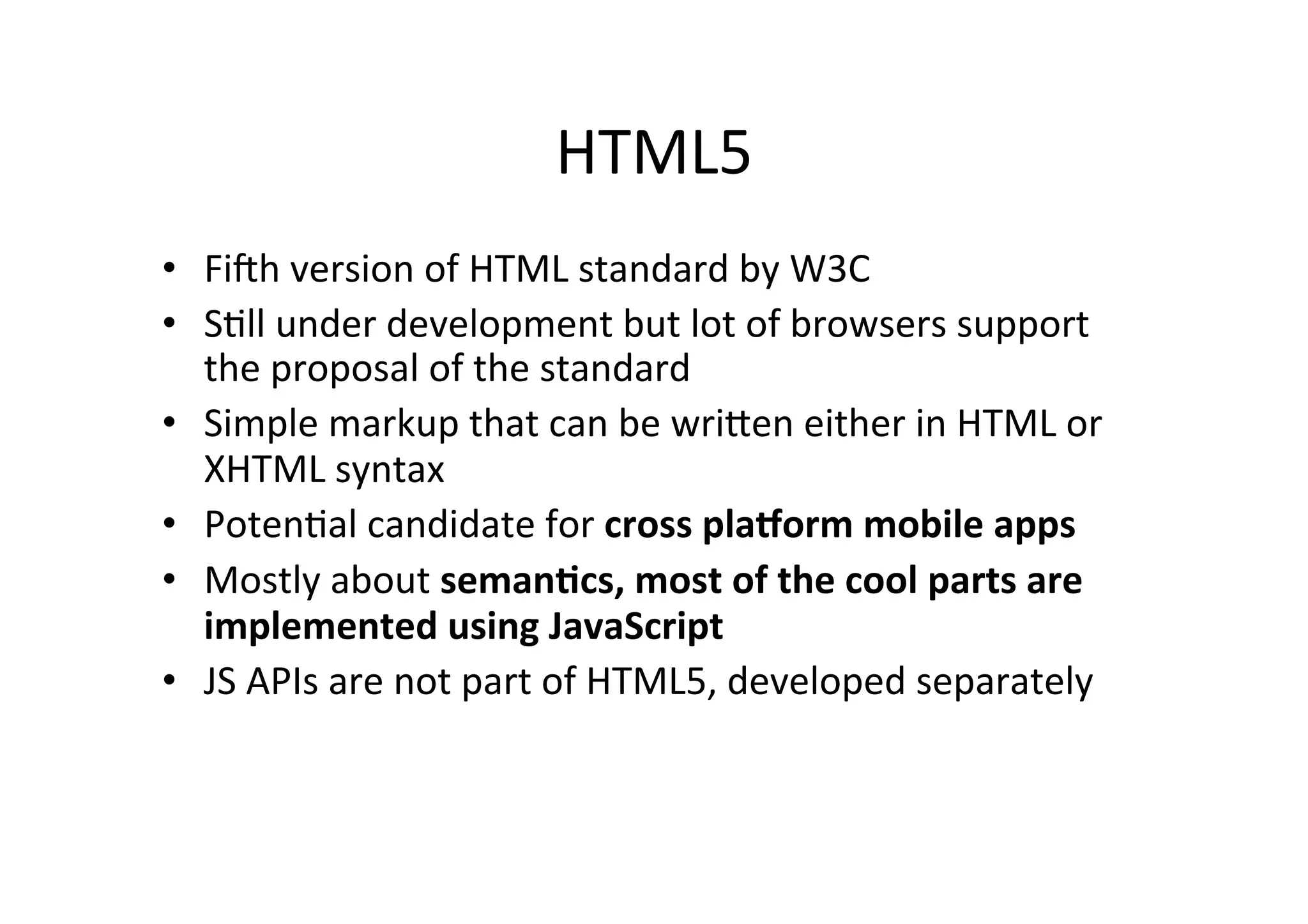
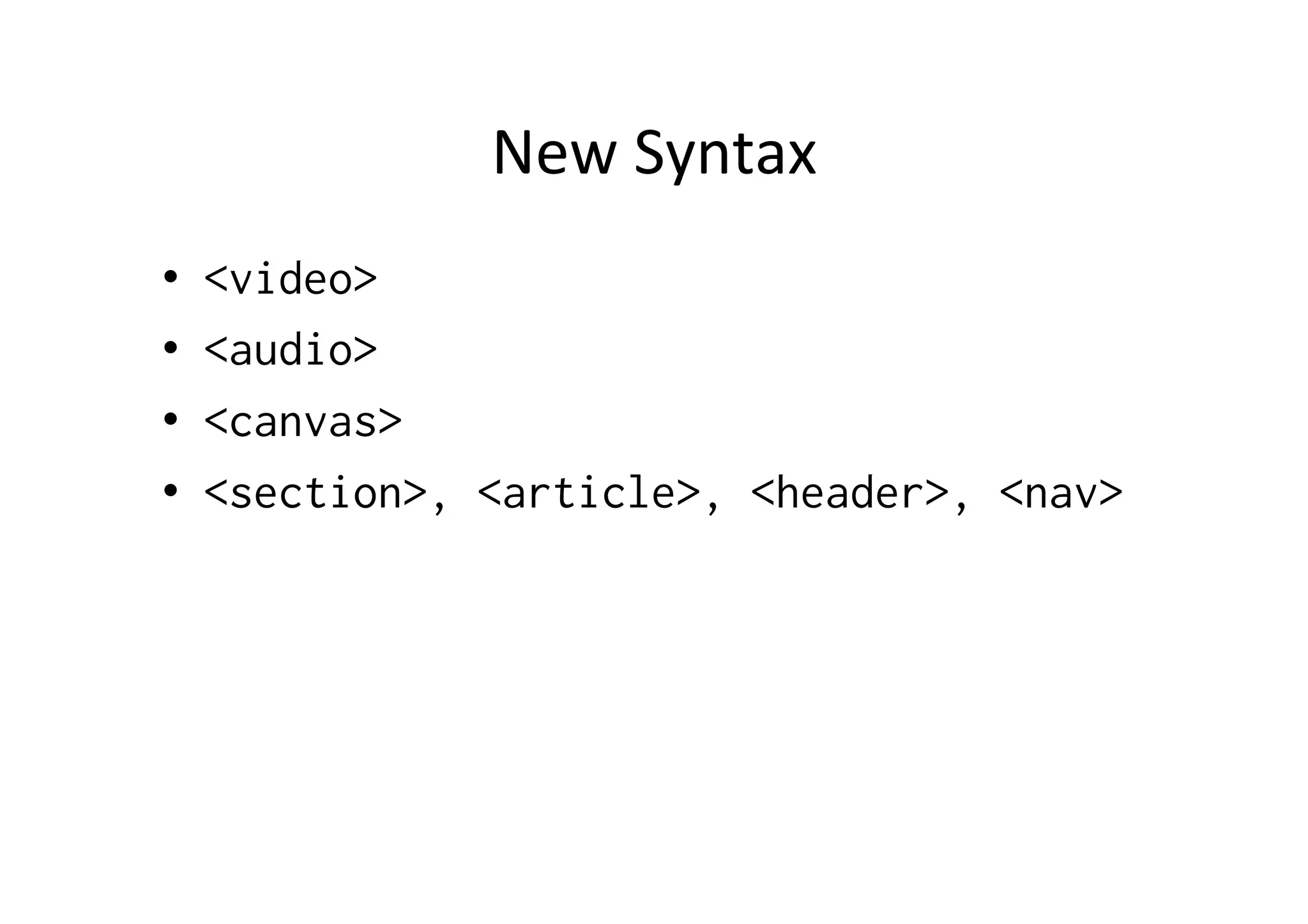
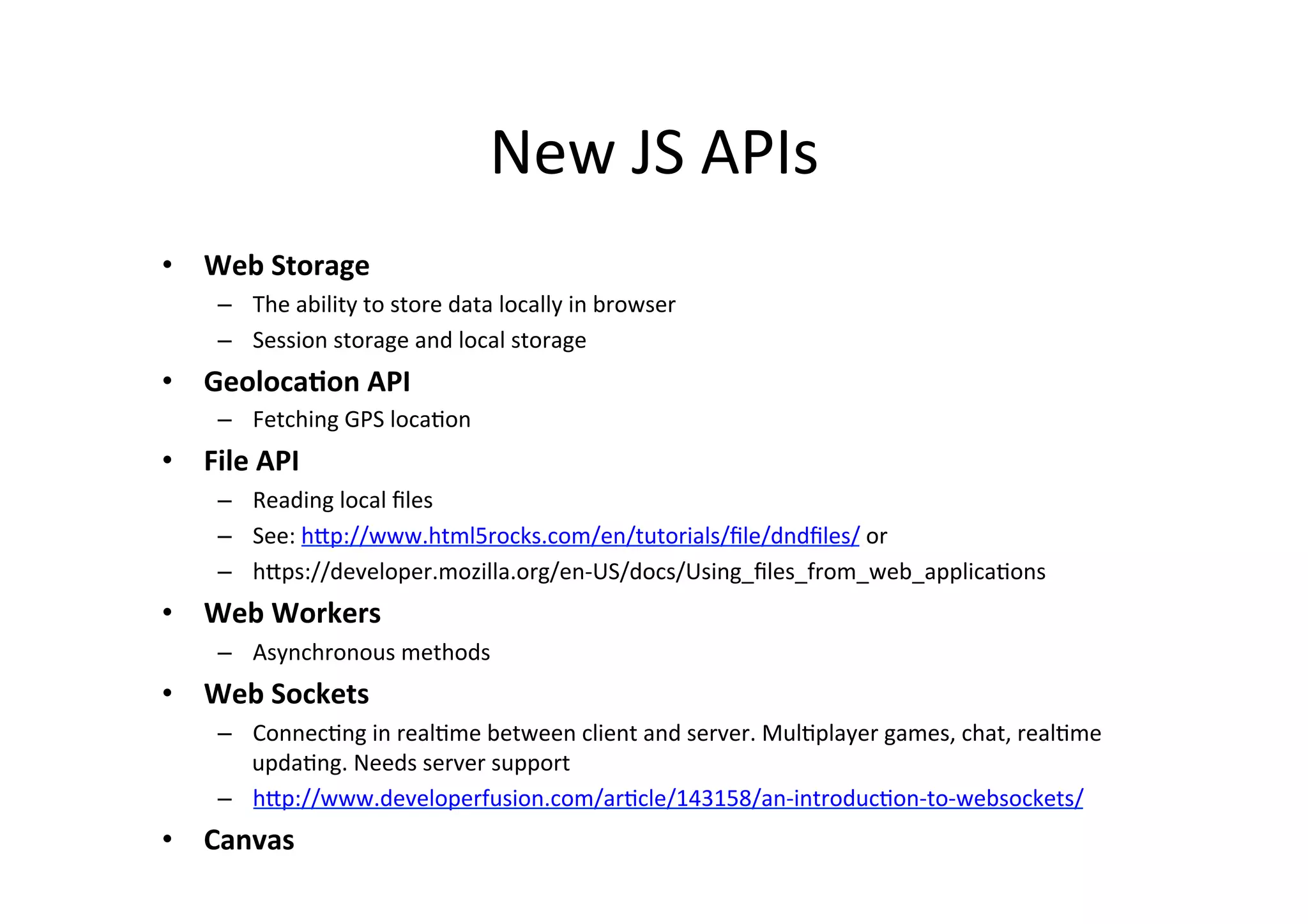
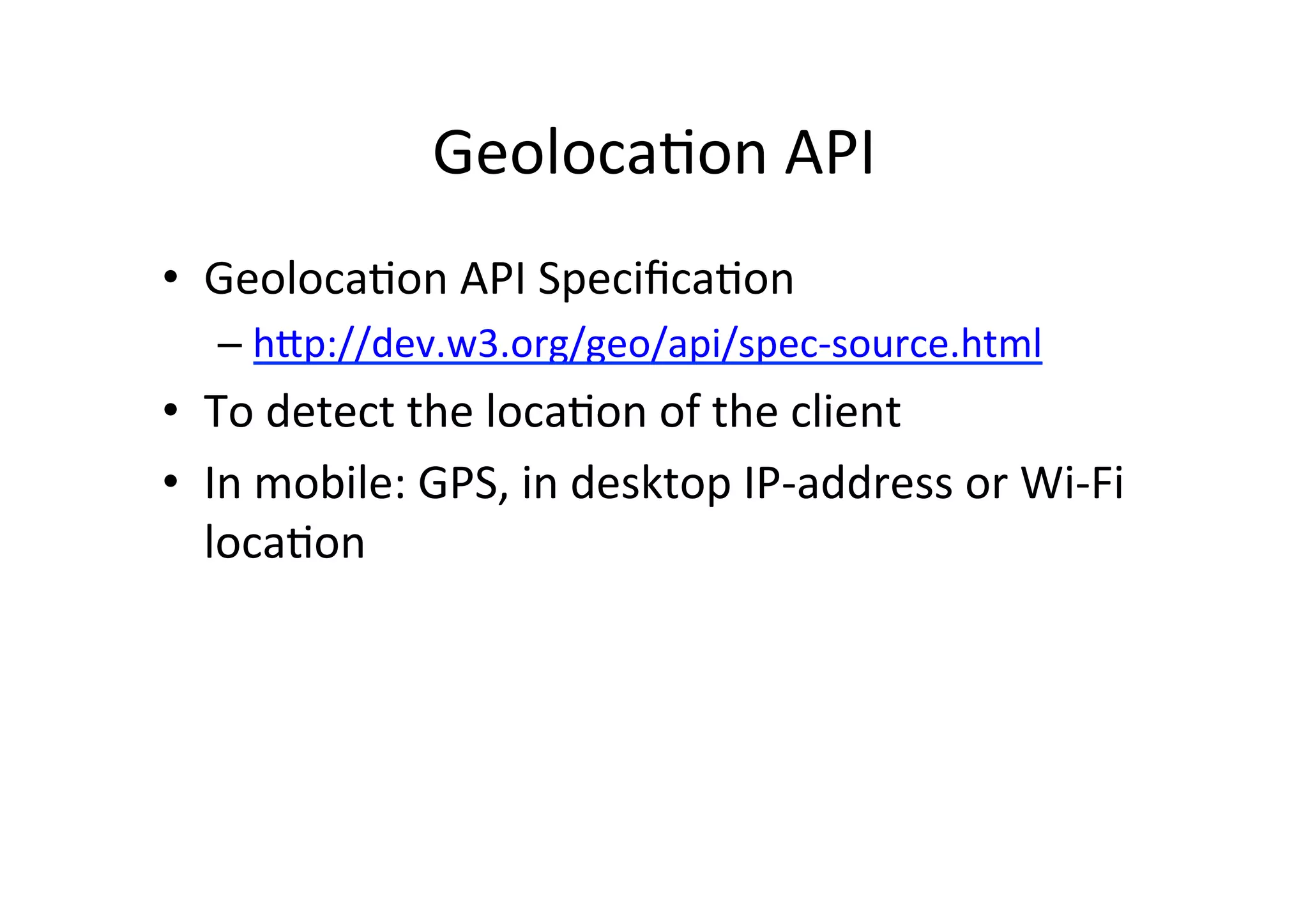
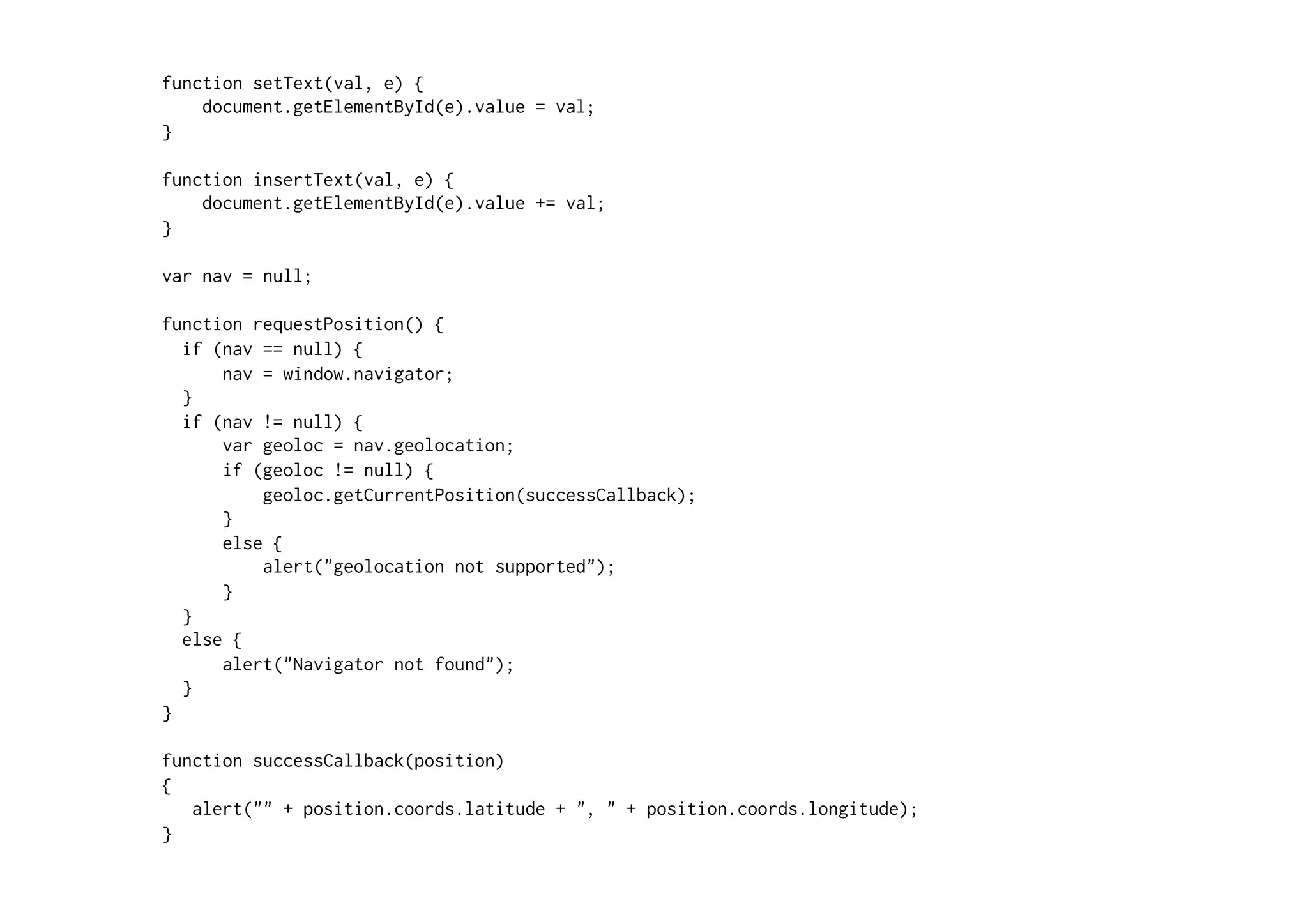
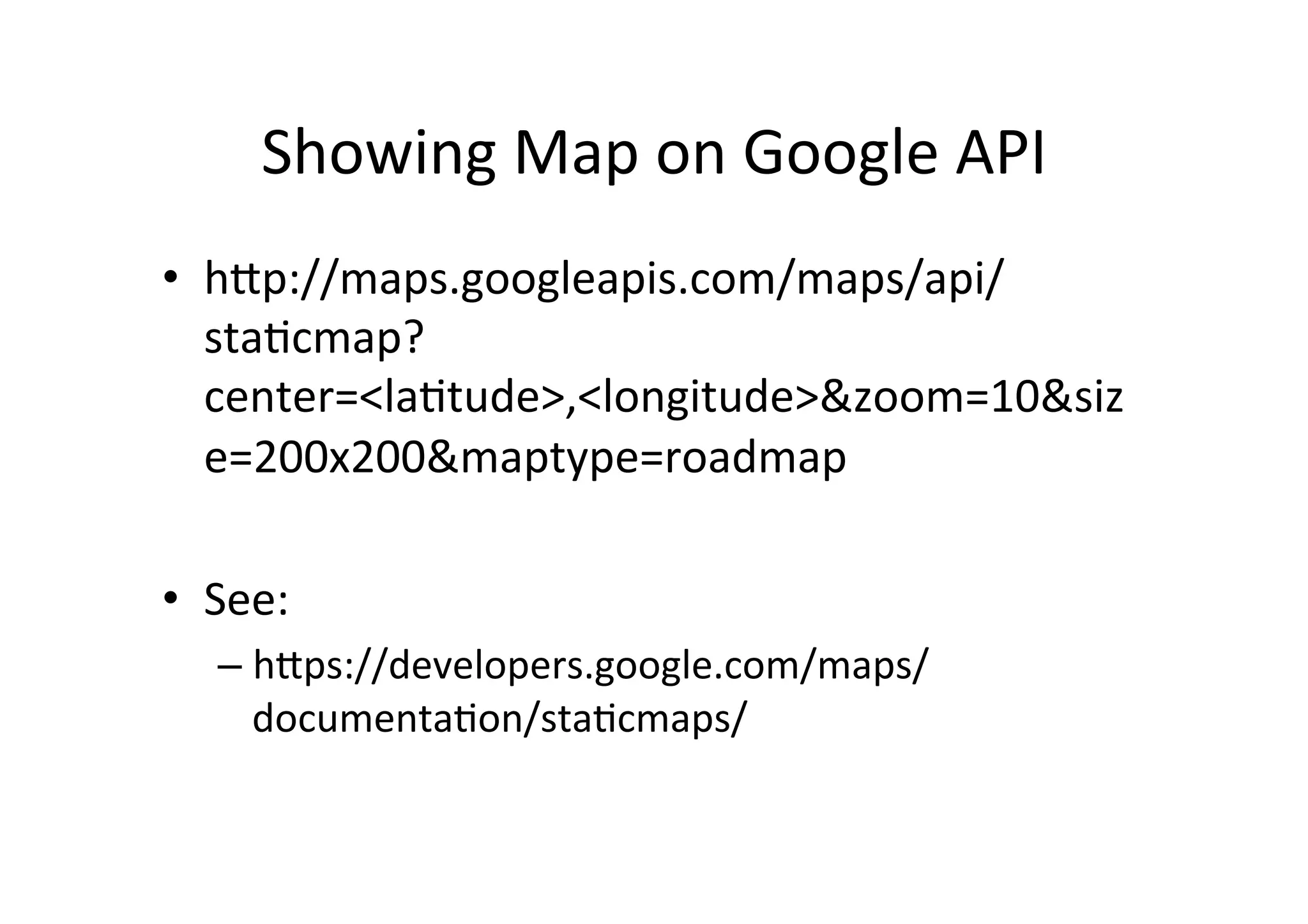

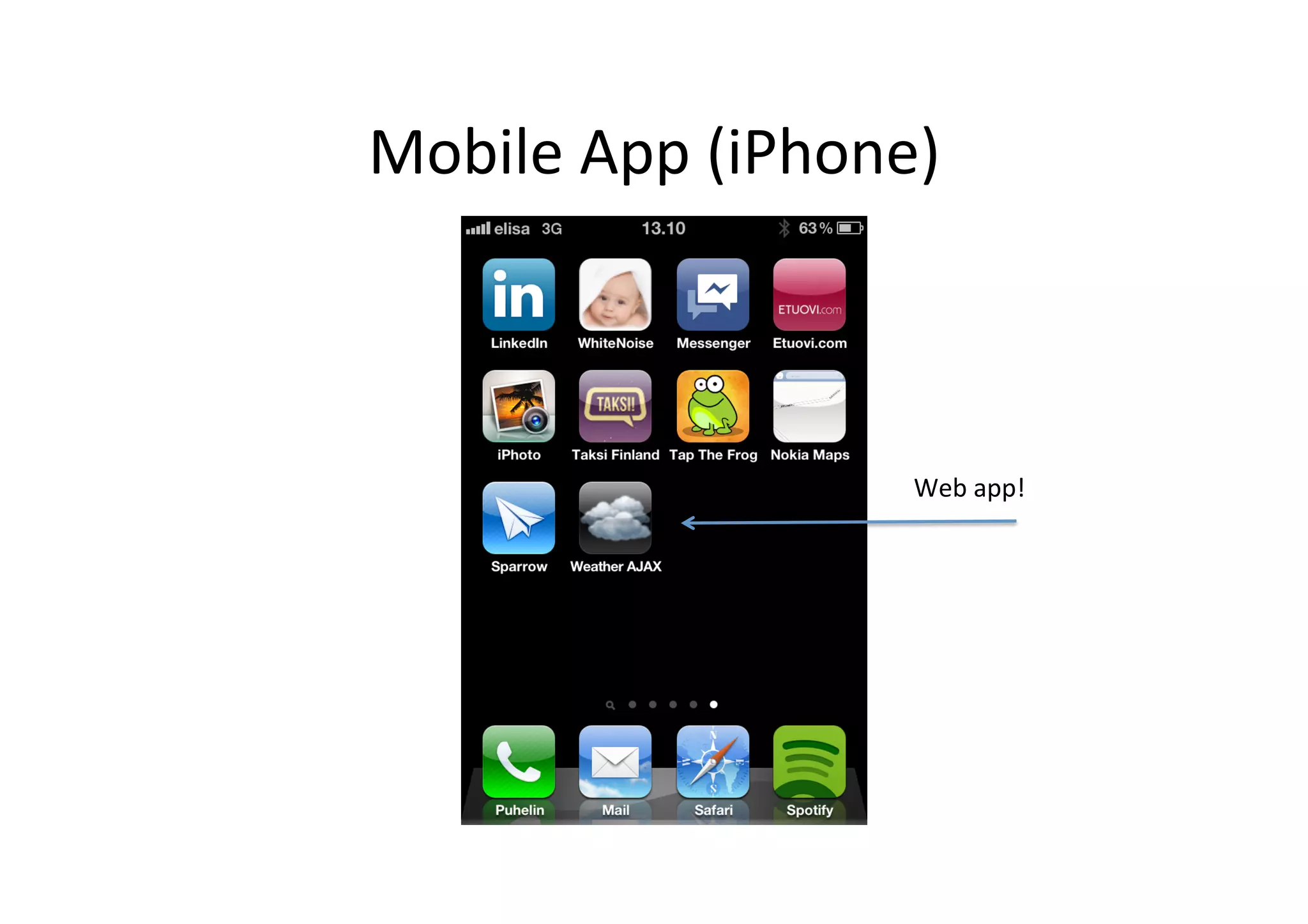
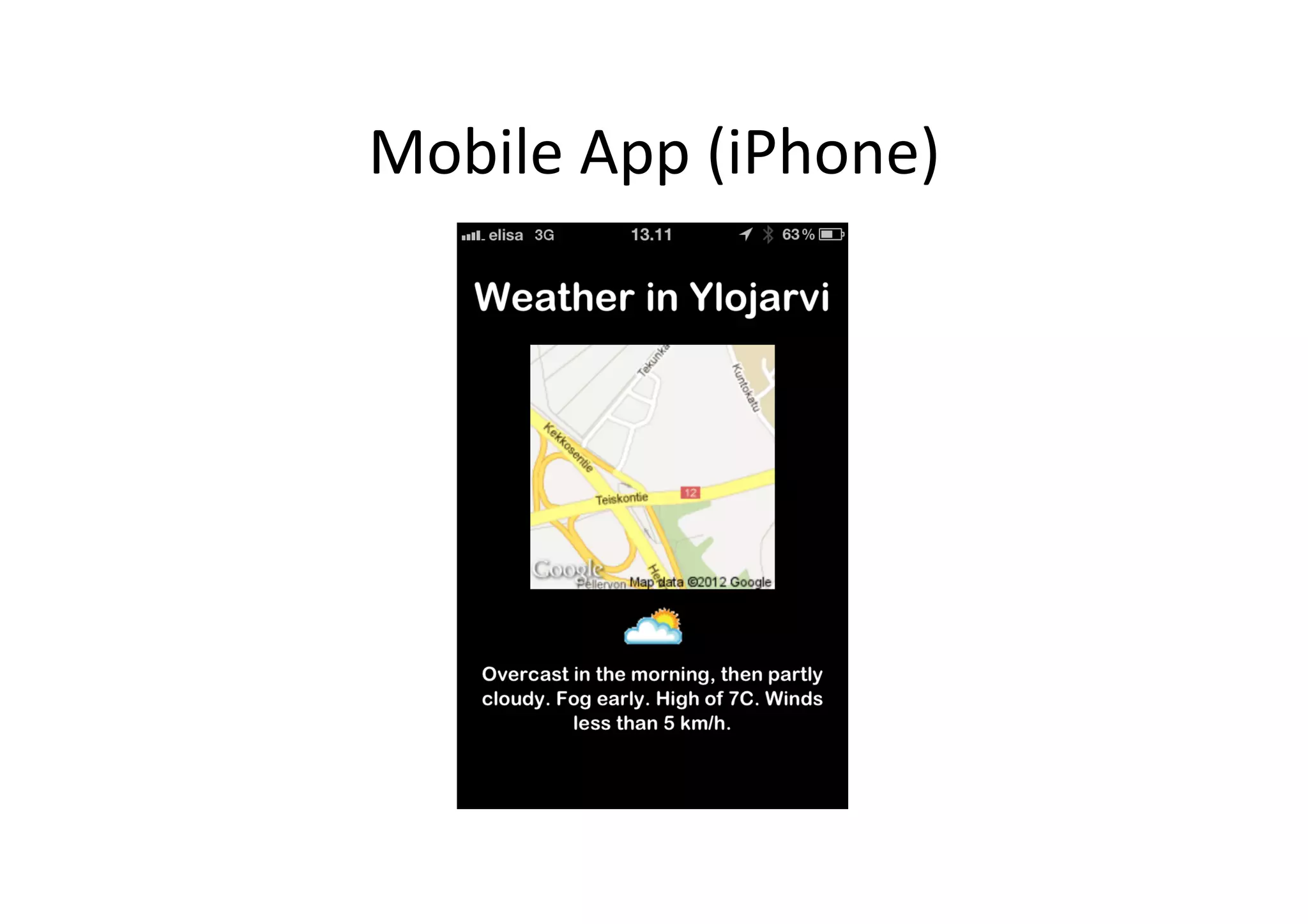
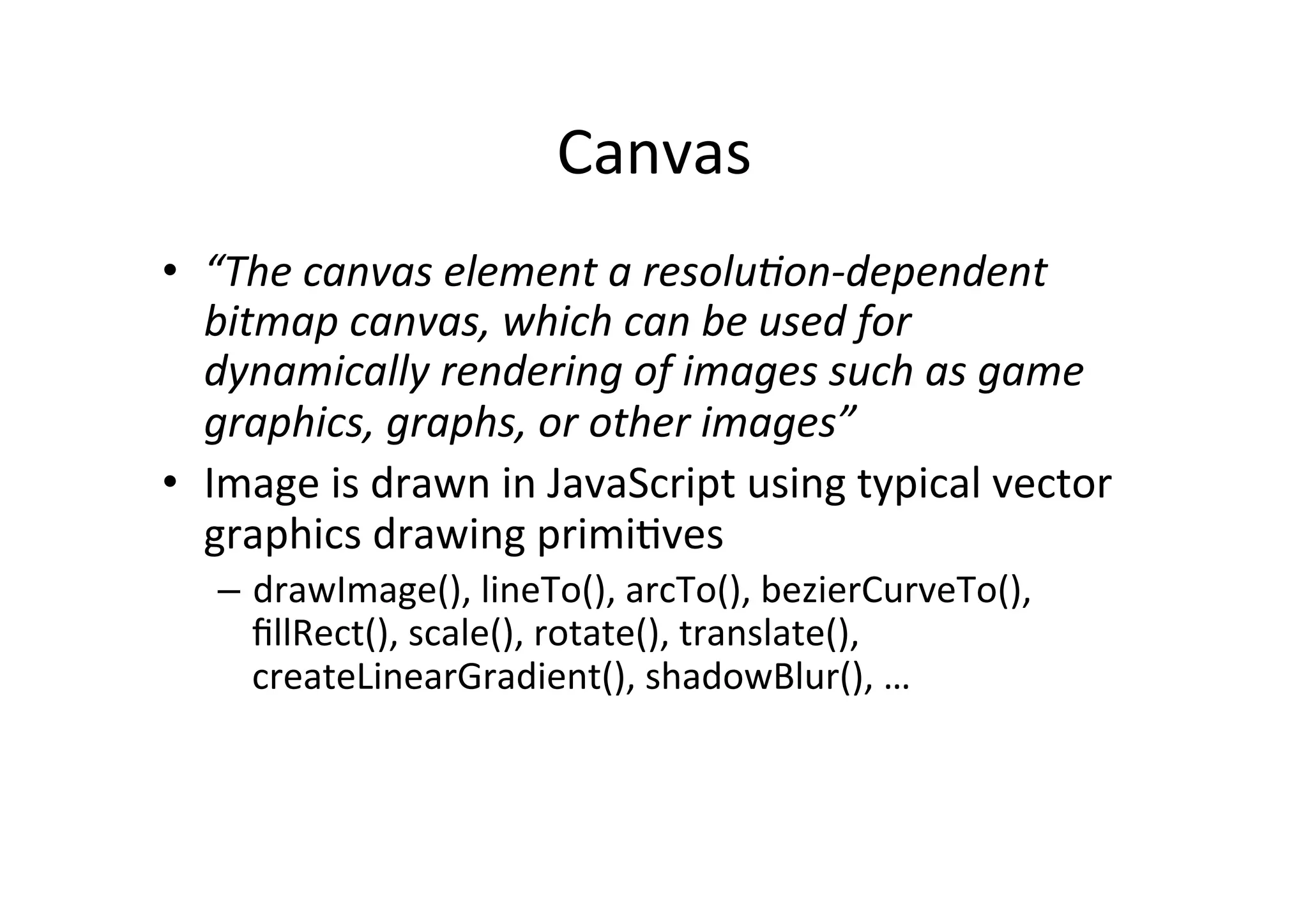
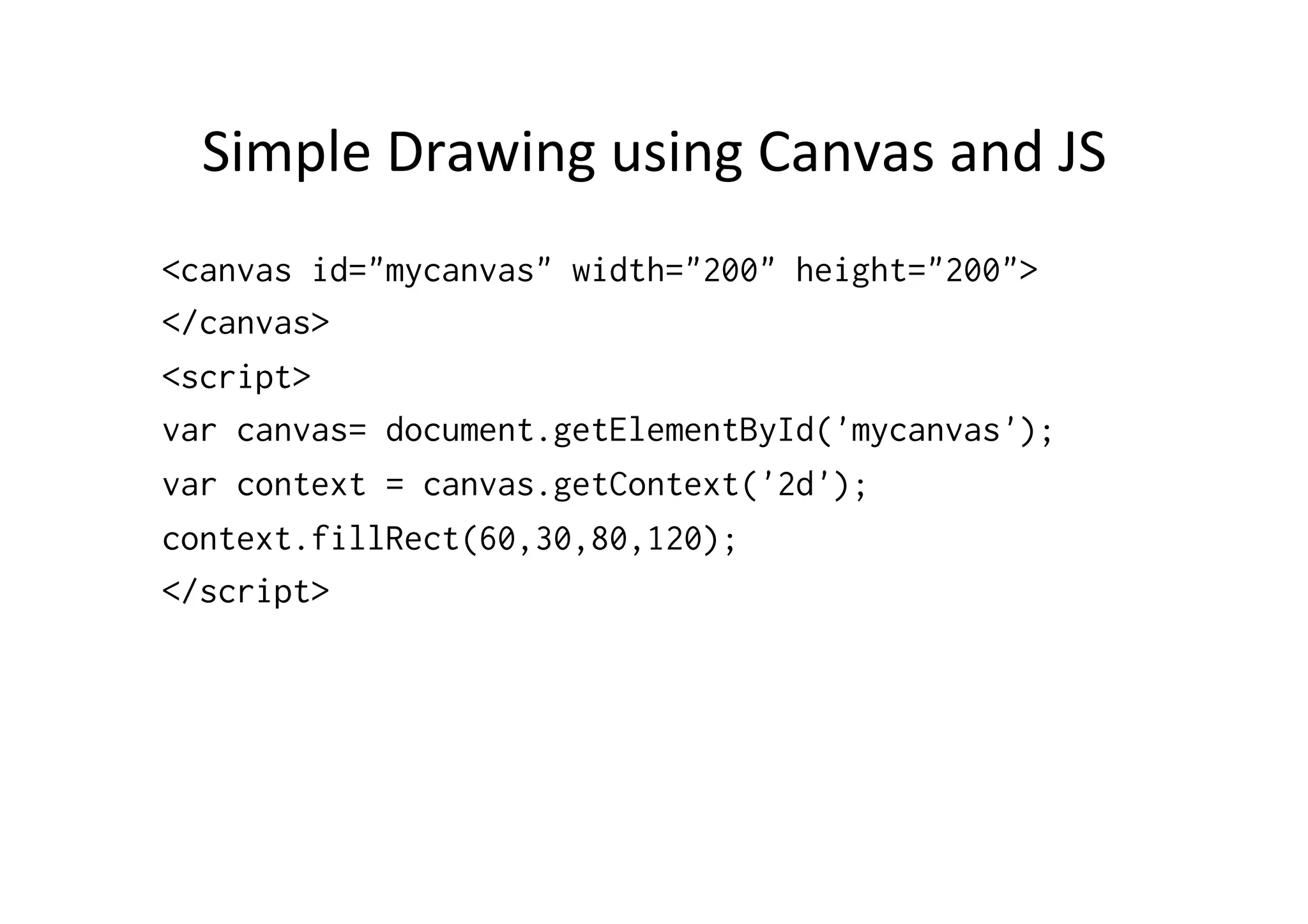
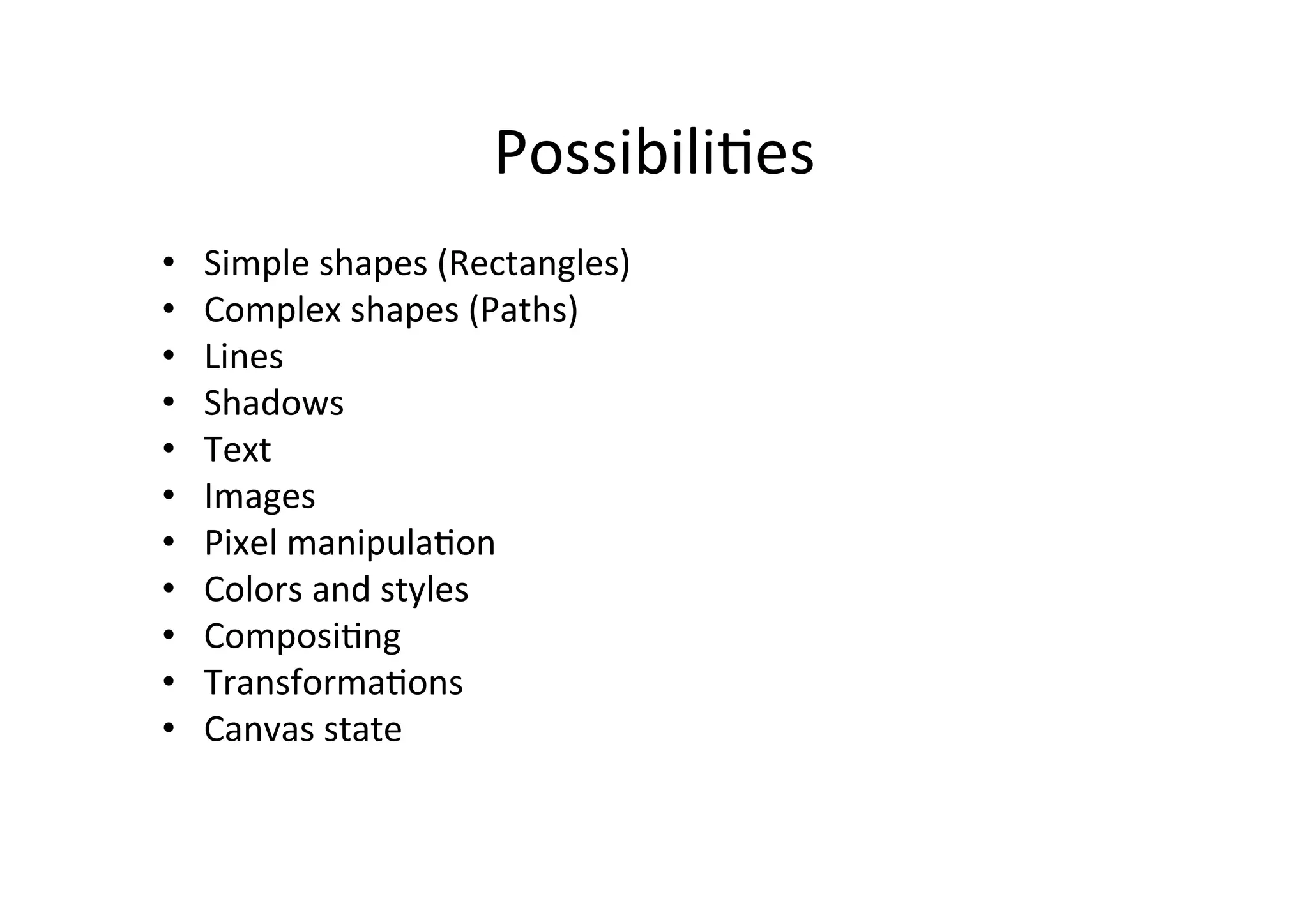
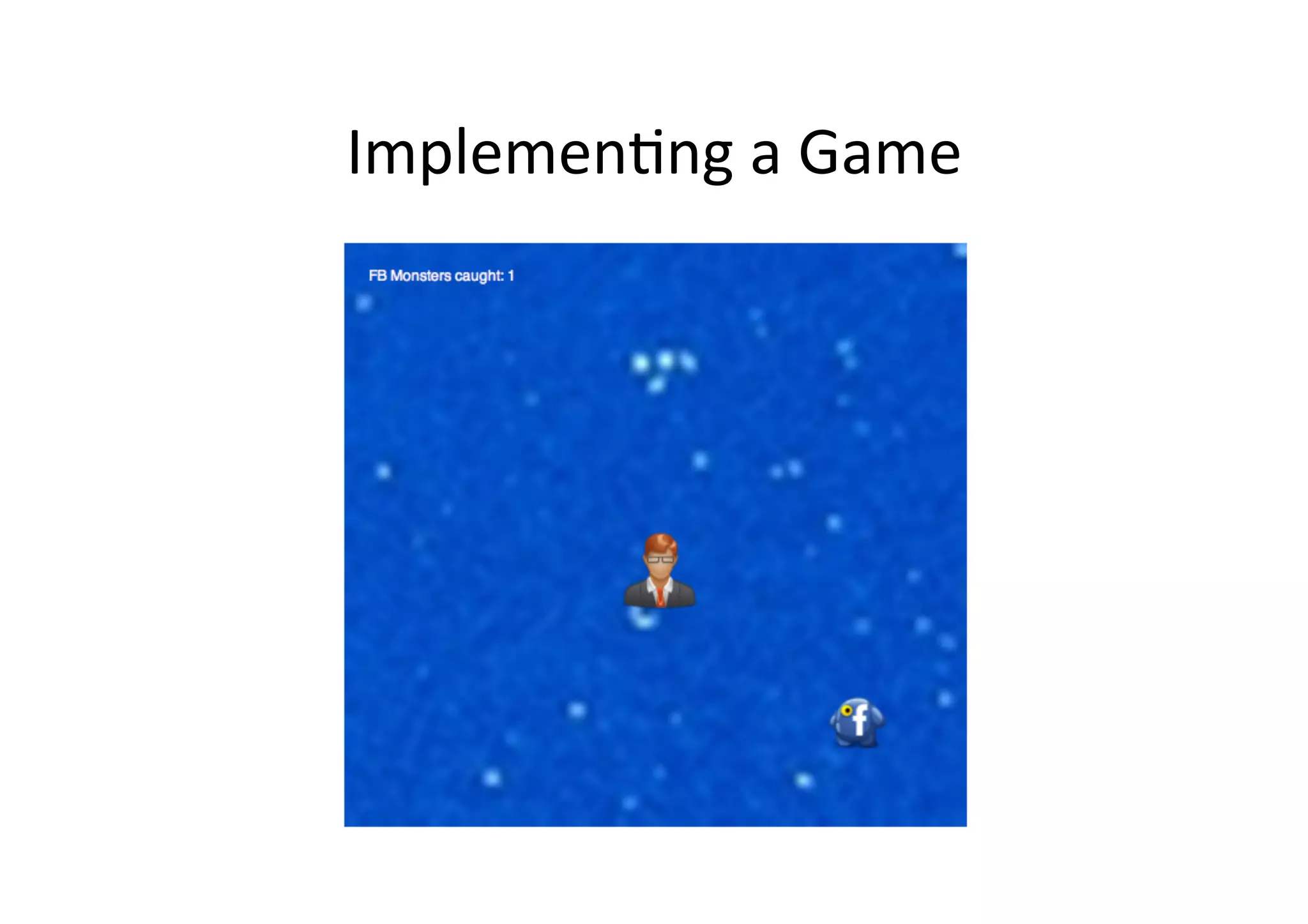
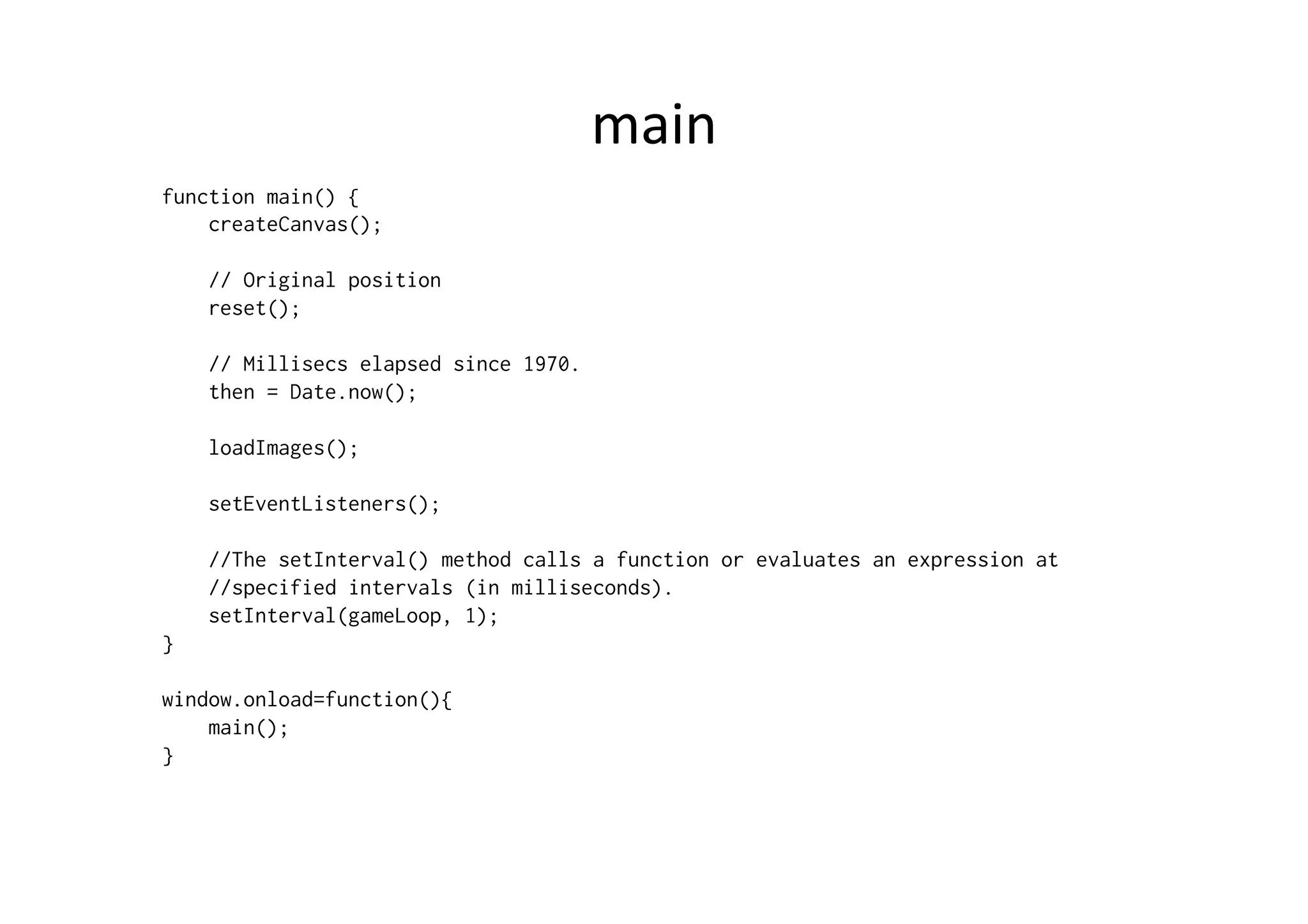
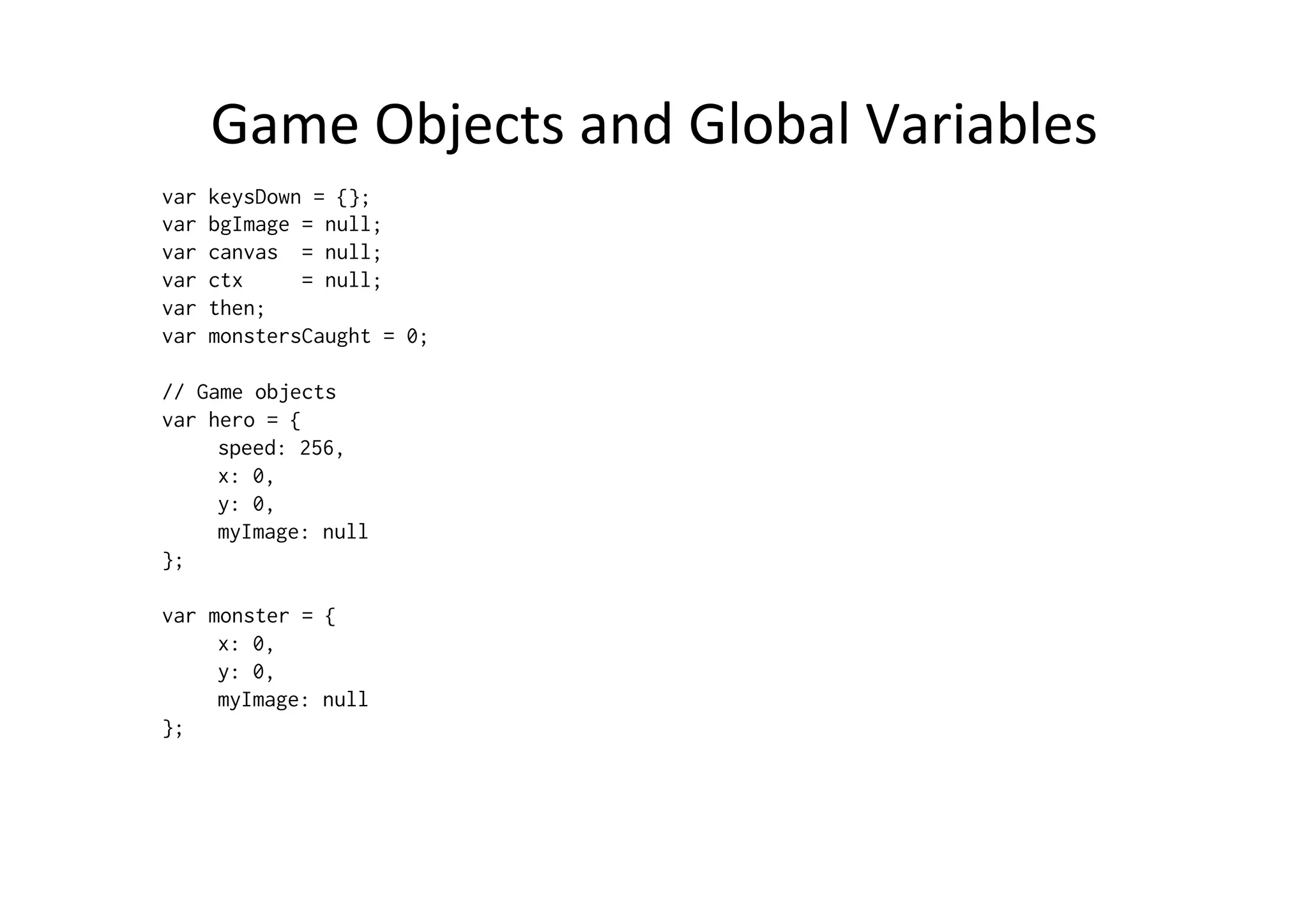
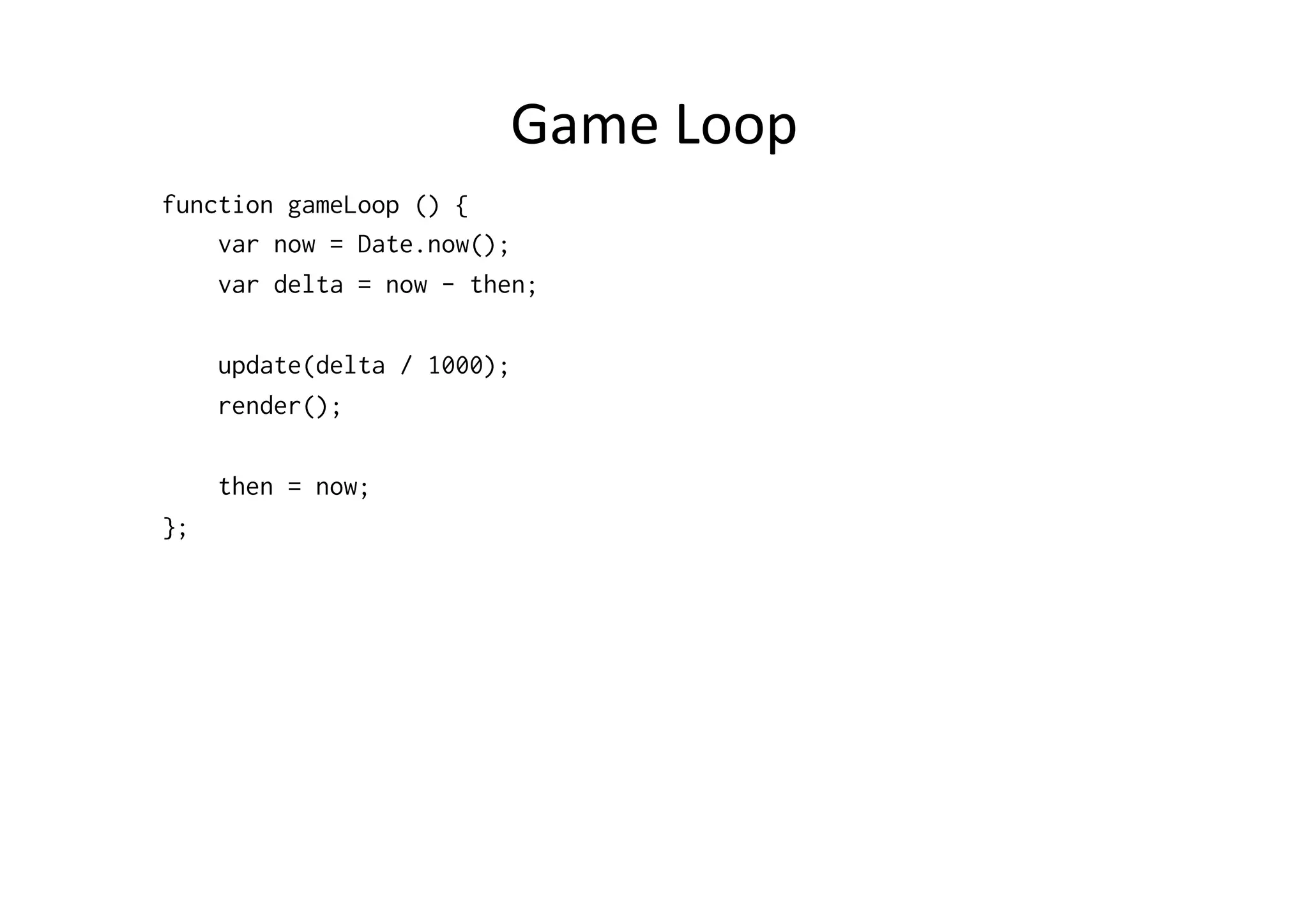
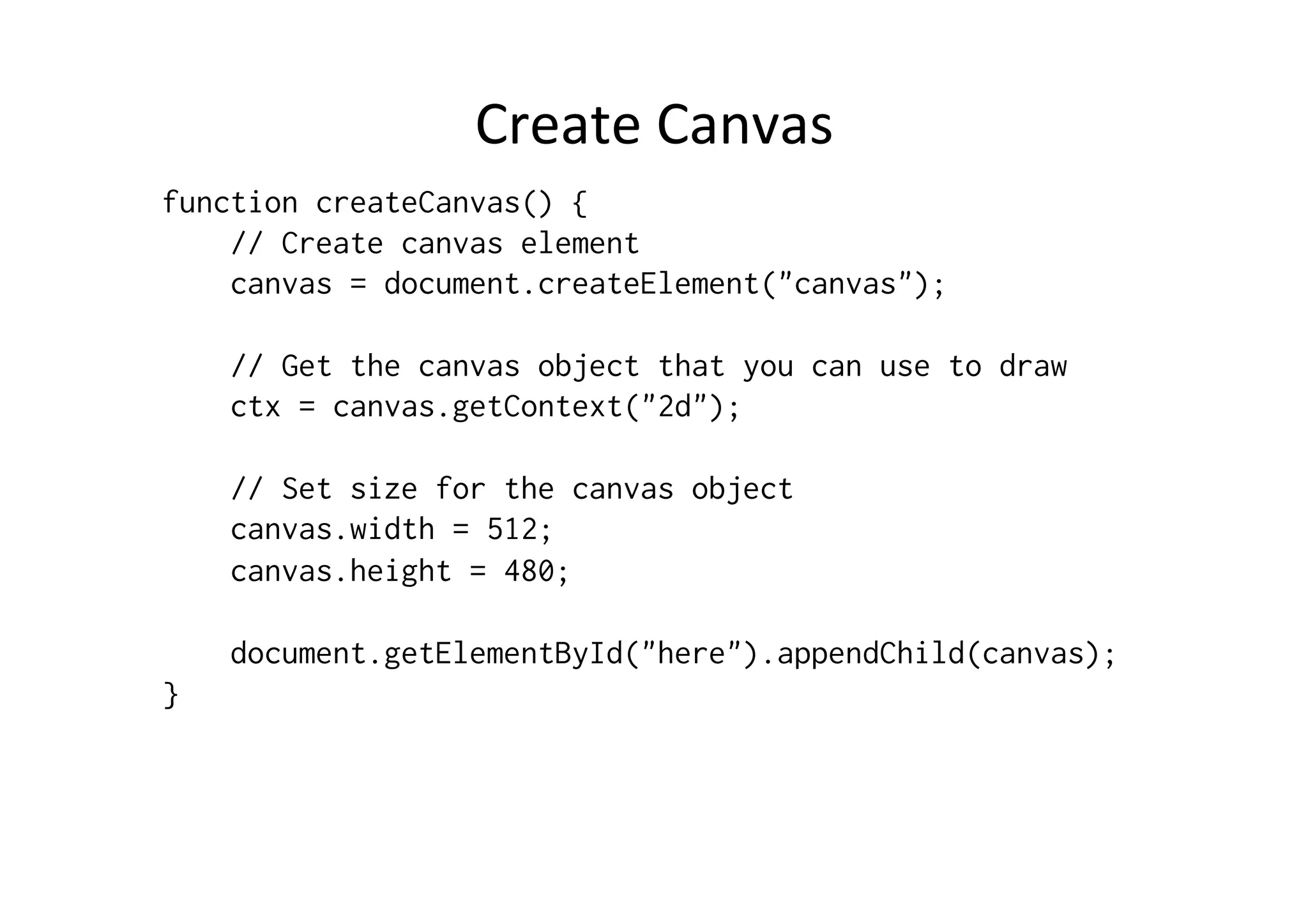
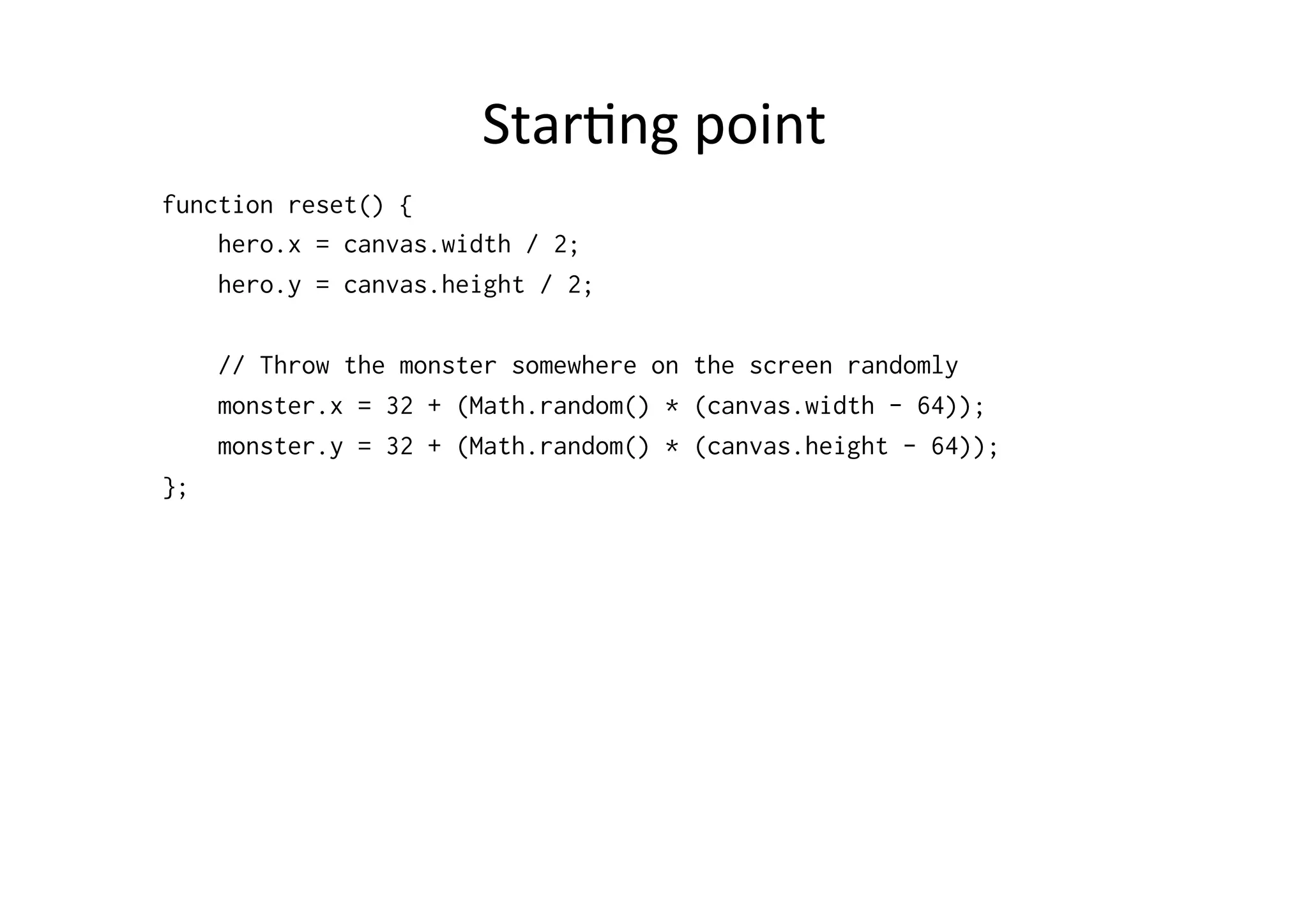
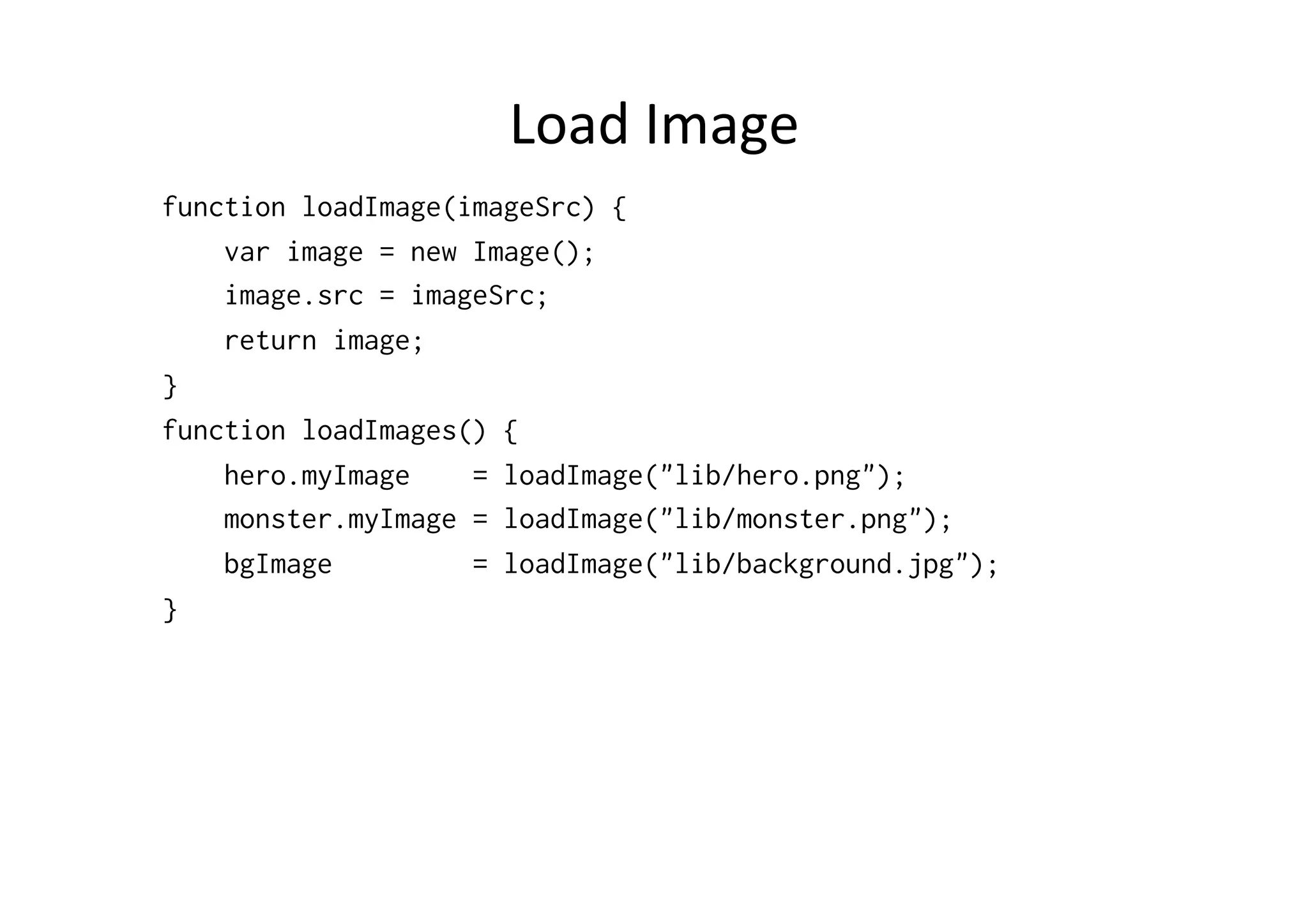
![Key Listeners function setEventListeners() { // If keydown, then add the key to the array and set it true addEventListener("keydown", function (e) { keysDown[e.keyCode] = true; }, false); // If keyup, remove it from the array addEventListener("keyup", function (e) { delete keysDown[e.keyCode]; }, false); }](https://image.slidesharecdn.com/00-advanced-intro-to-js-all-recovered-141201020204-conversion-gate02/75/Advanced-JavaScript-Development-111-2048.jpg)
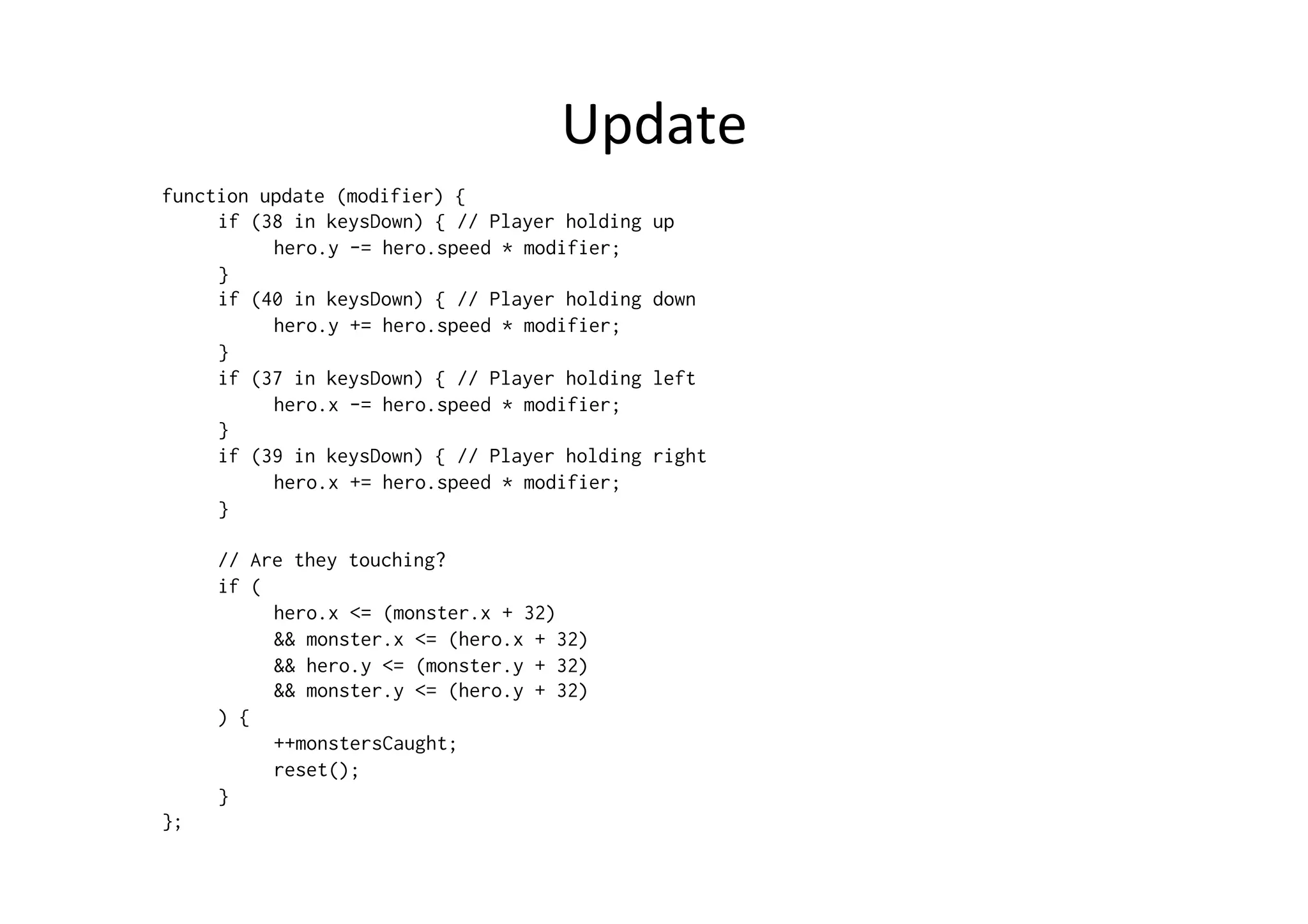
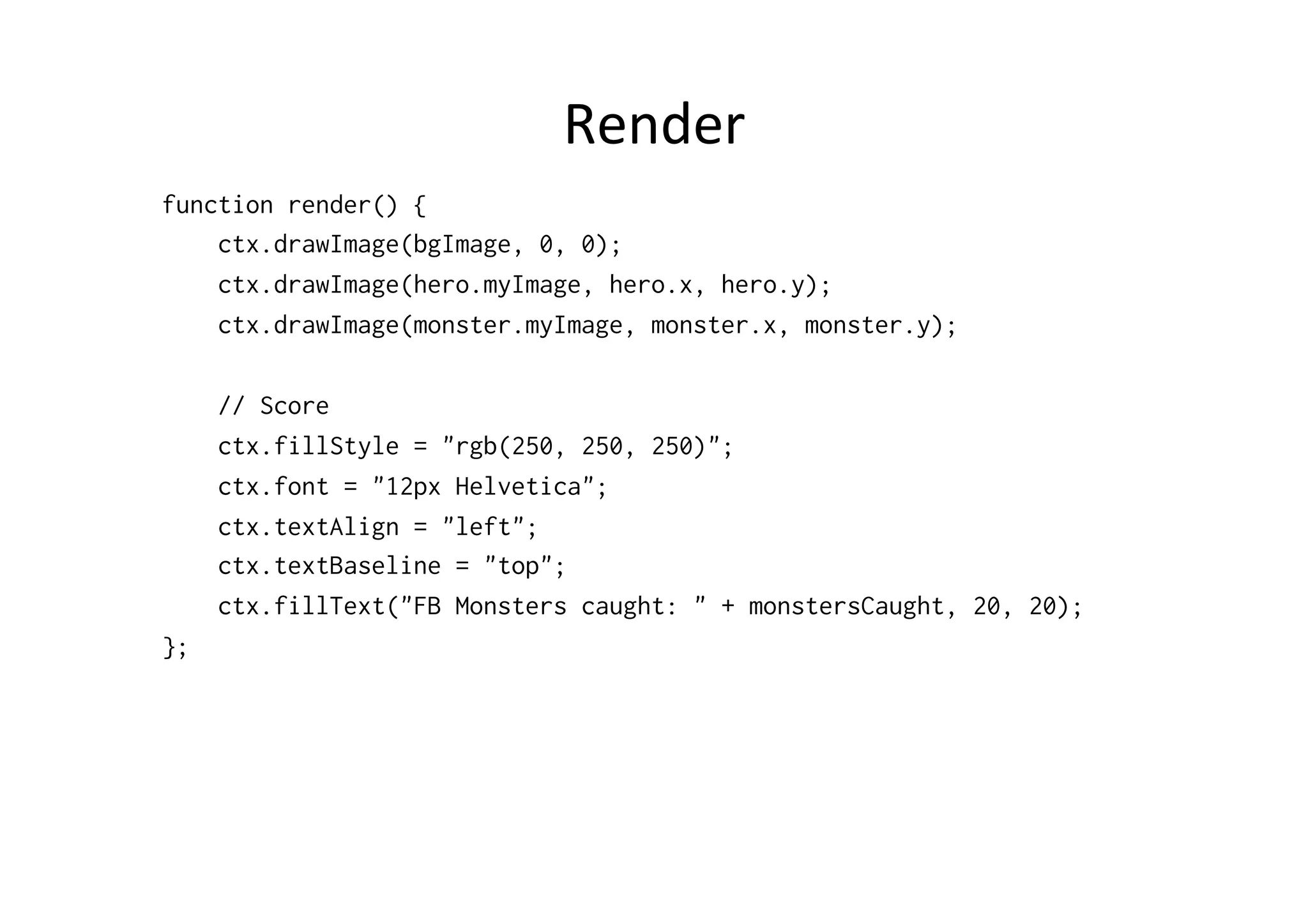


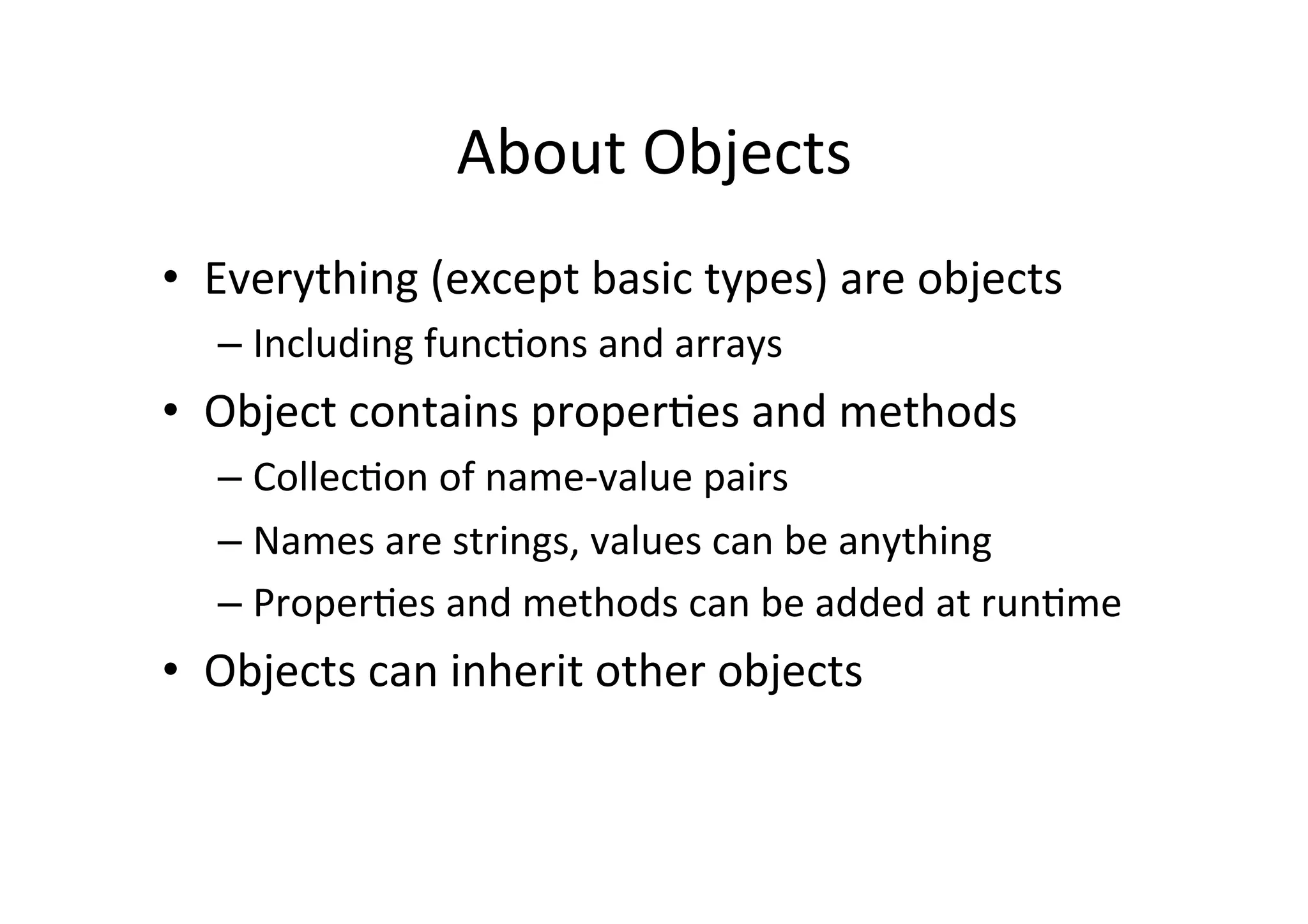
![Object Literal var mystring = "hello!"; var myarray = ["element1", "element2"]; var circle1 = {radius: 9, getArea : someFunction }; var circle2 = { radius: 9, getRadius: function() { return this.radius; } }](https://image.slidesharecdn.com/00-advanced-intro-to-js-all-recovered-141201020204-conversion-gate02/75/Advanced-JavaScript-Development-117-2048.jpg)
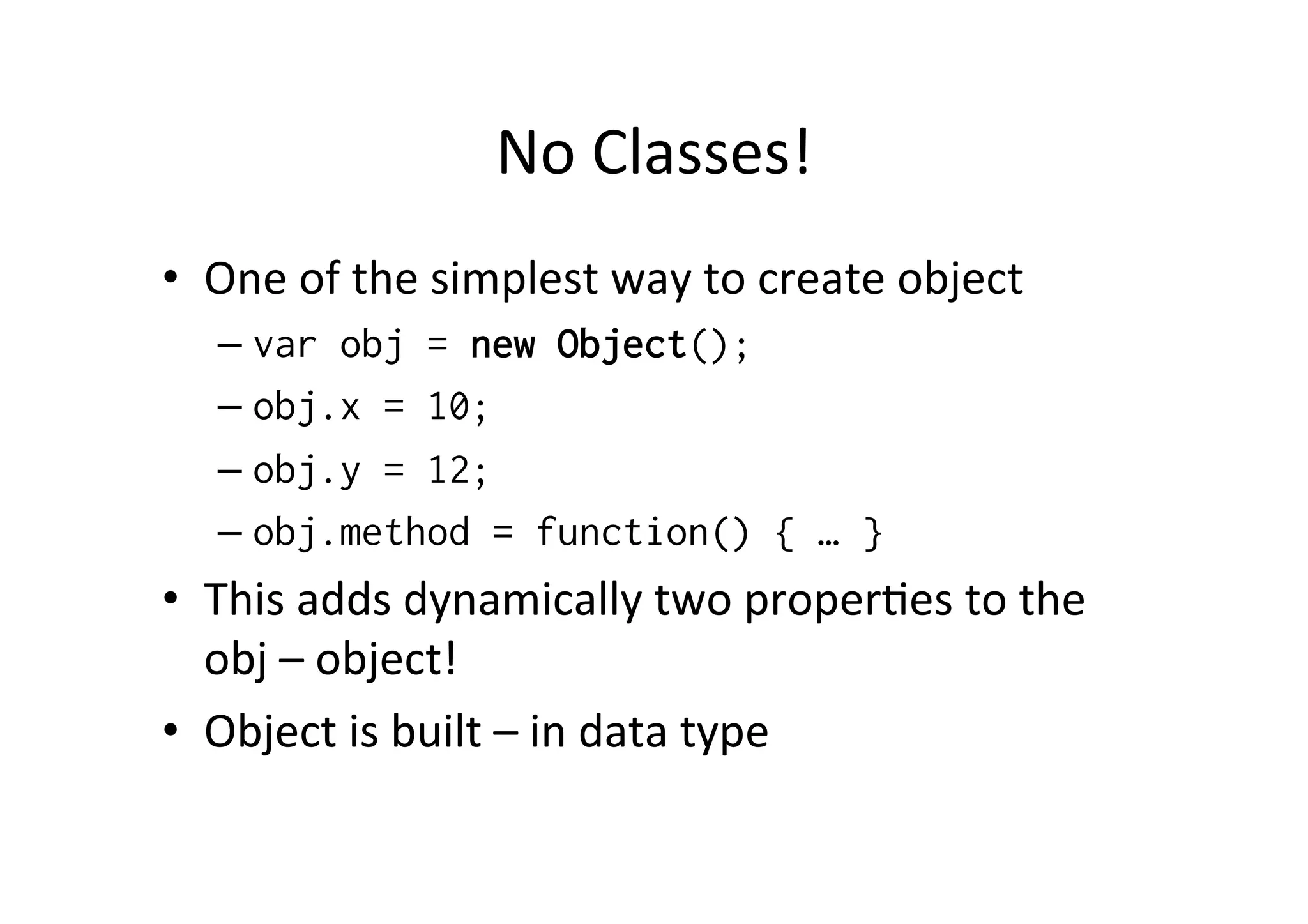
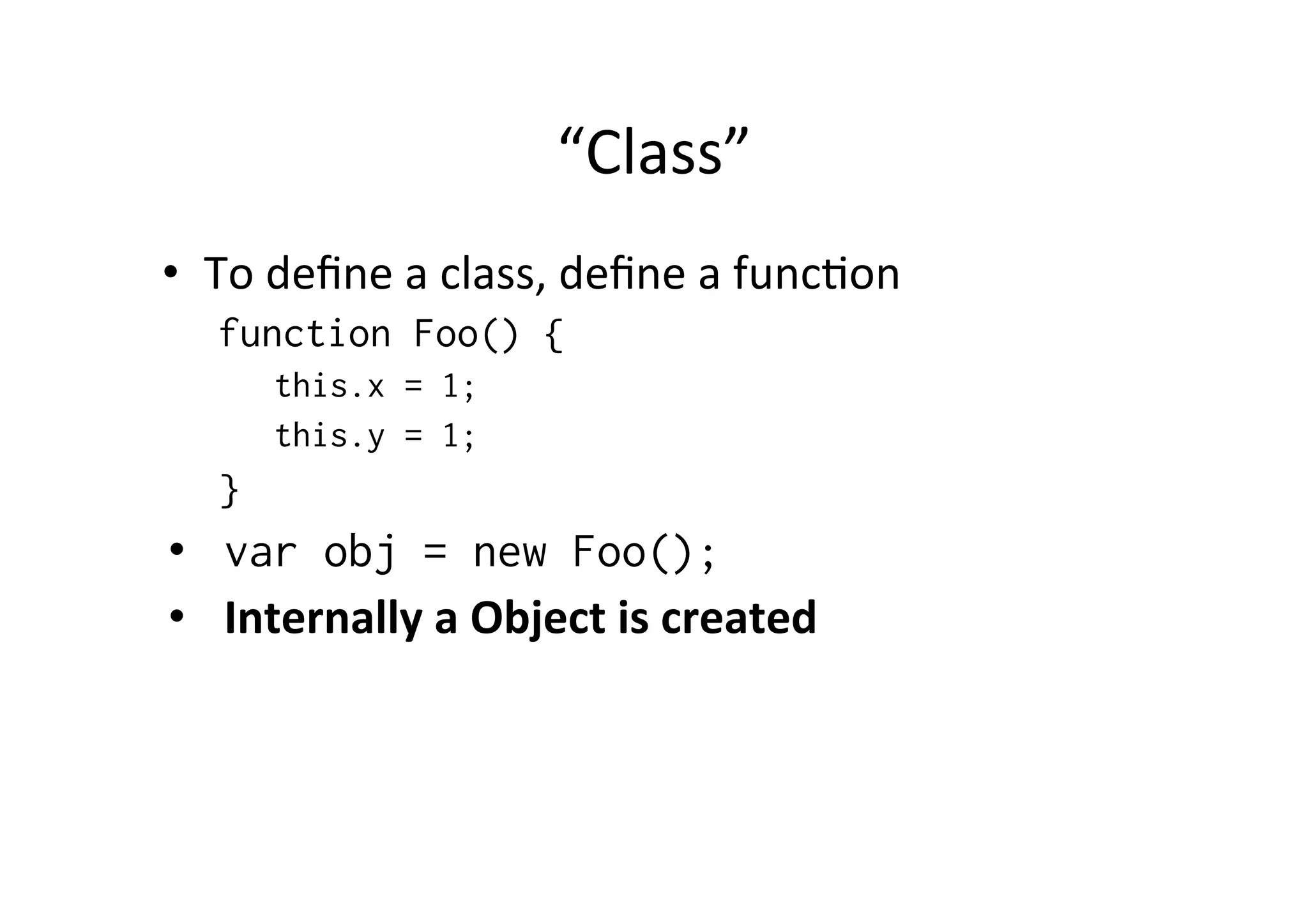
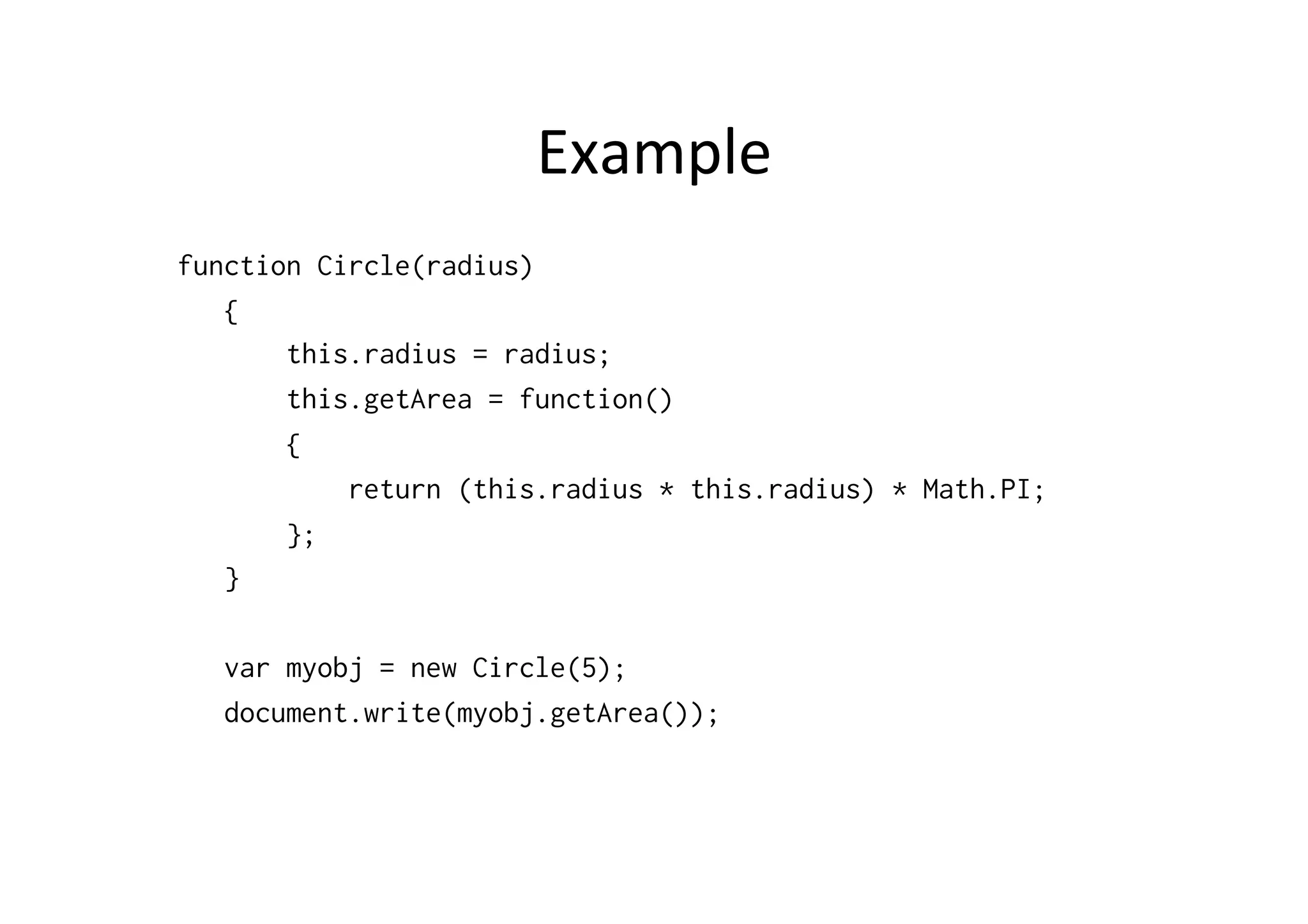
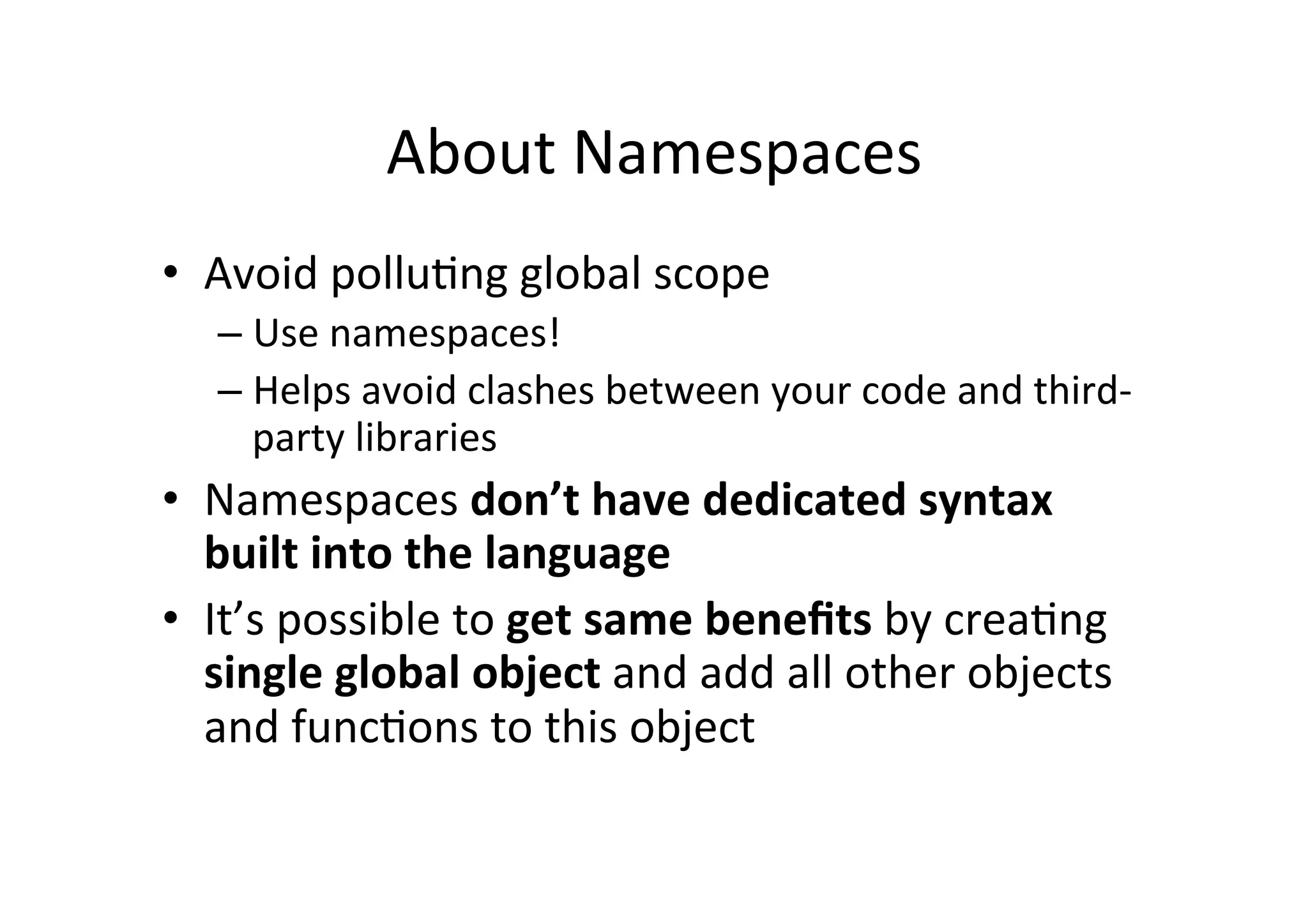
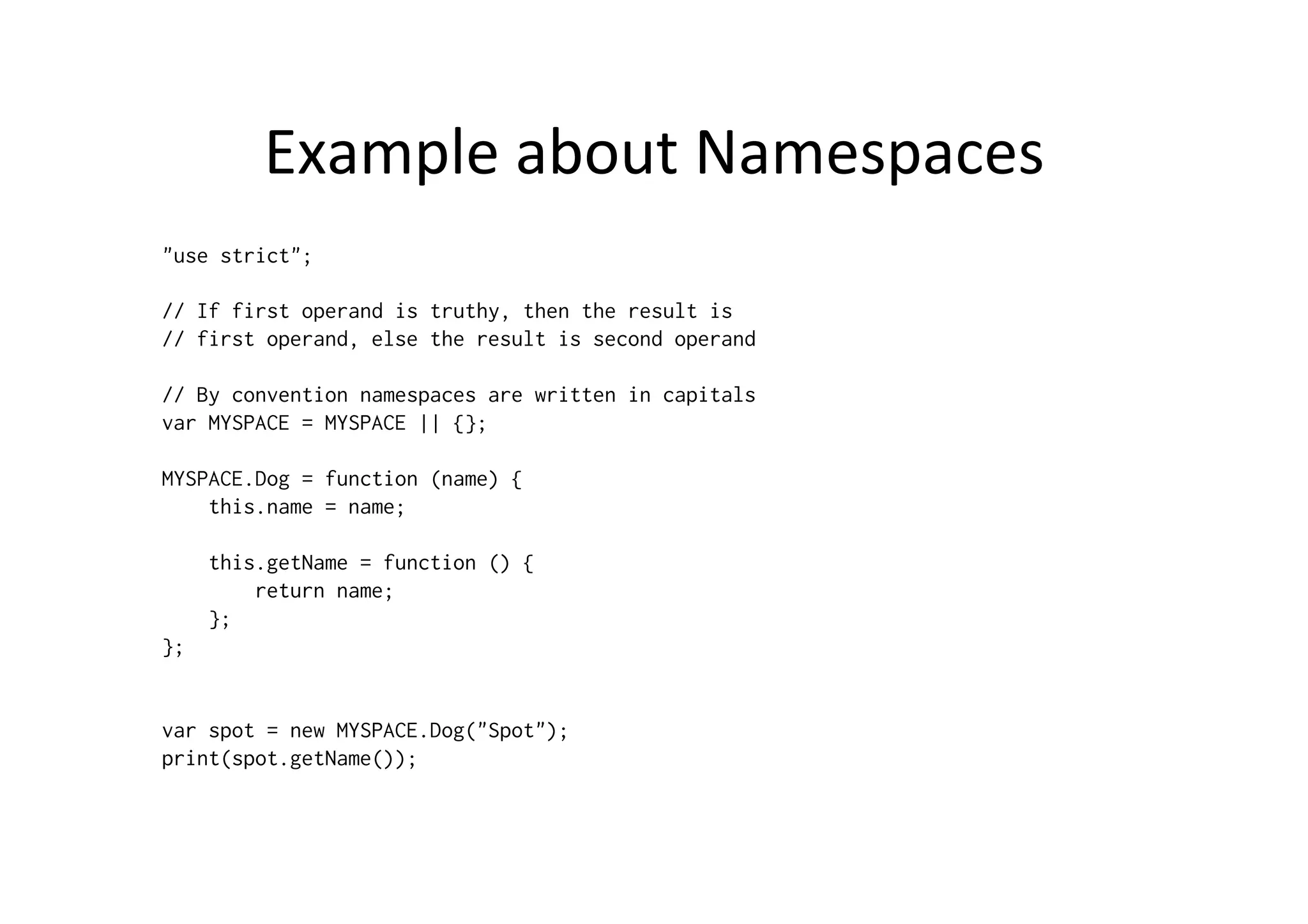
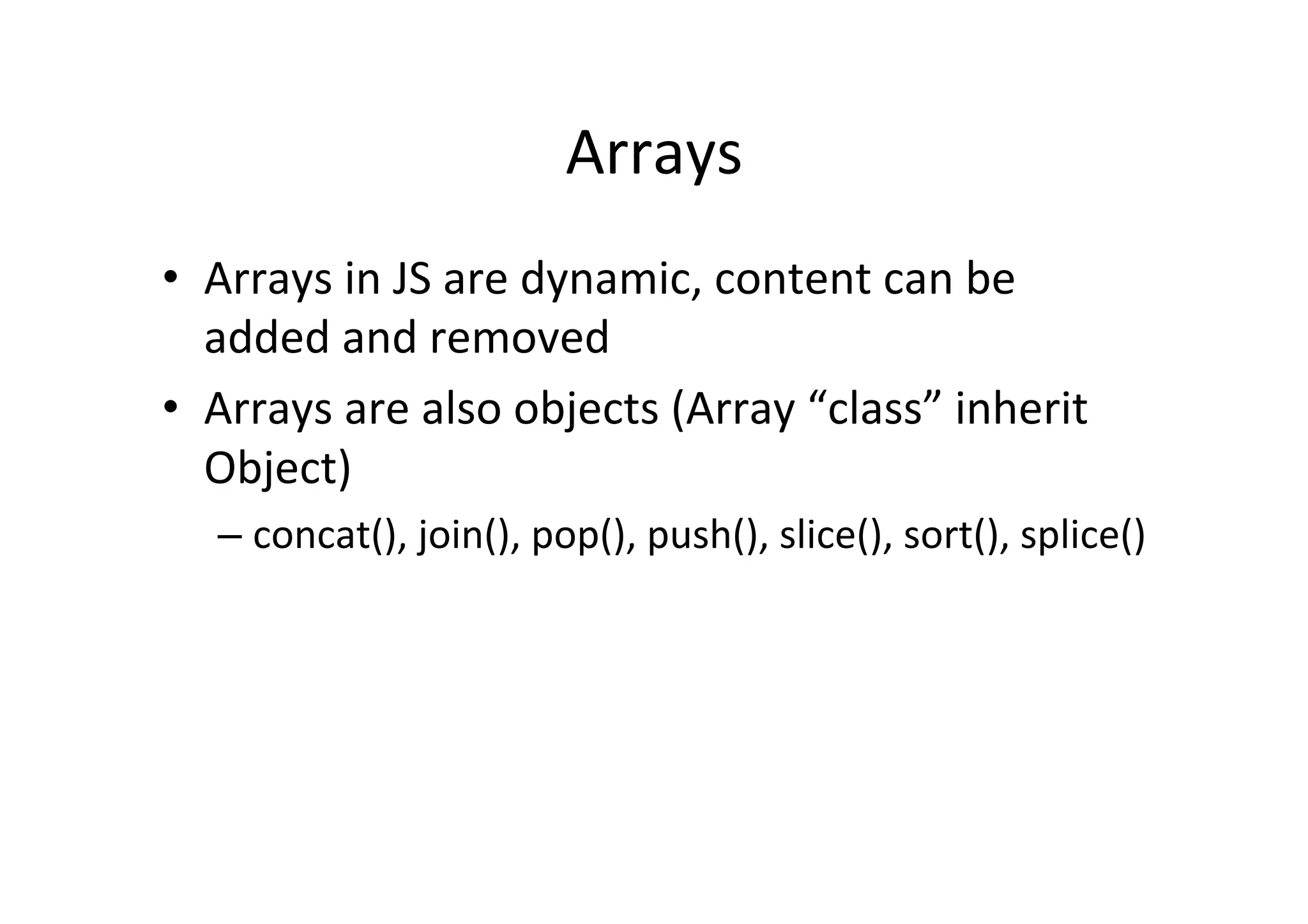
![Example "use strict"; var array1 = []; // or new Array() var array2 = ['a', 'b', 'c']; print(array2.length); delete array2[1]; for(var i = 0; i<array2.length; i++) { print(array2[i]); }](https://image.slidesharecdn.com/00-advanced-intro-to-js-all-recovered-141201020204-conversion-gate02/75/Advanced-JavaScript-Development-124-2048.jpg)
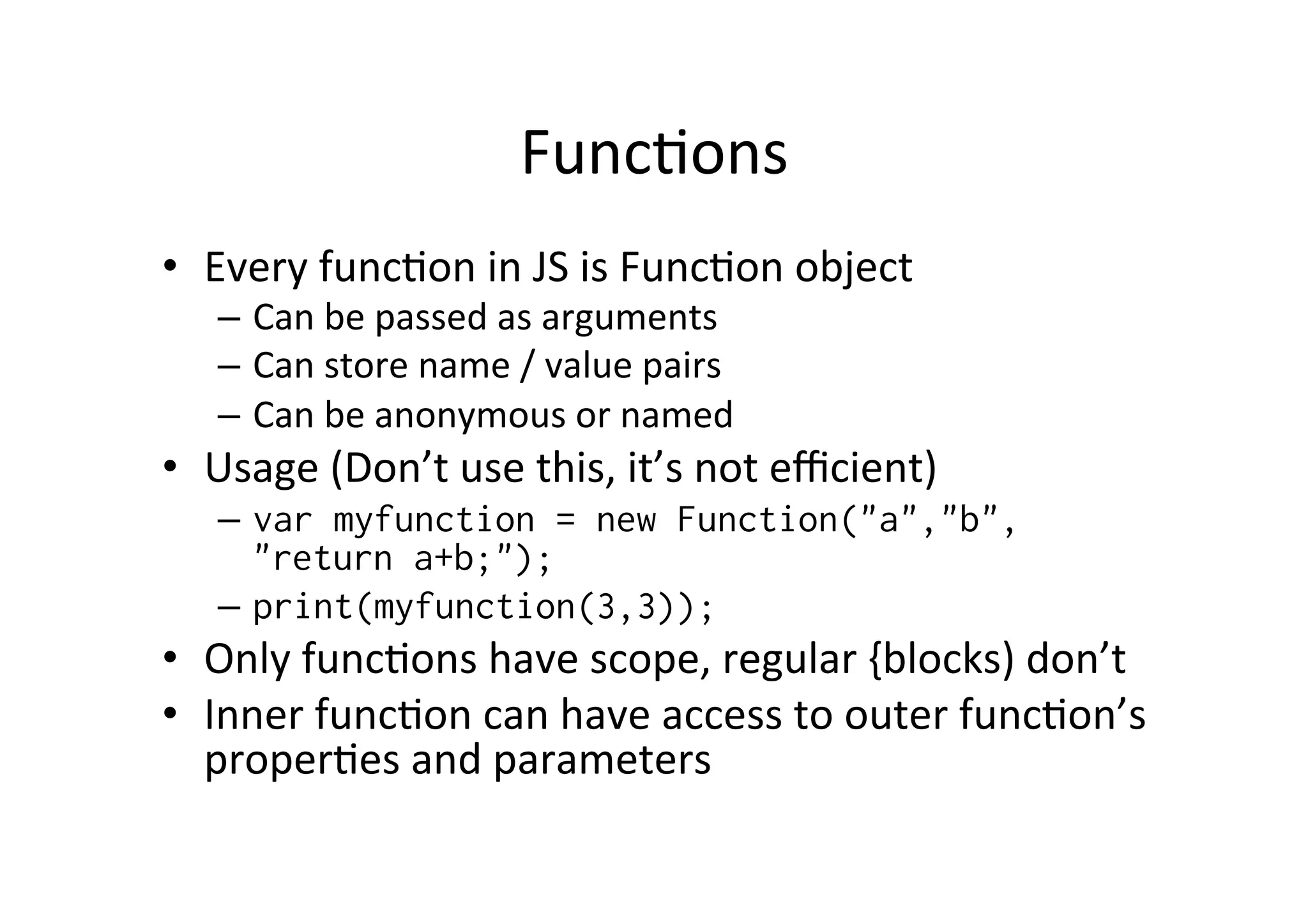
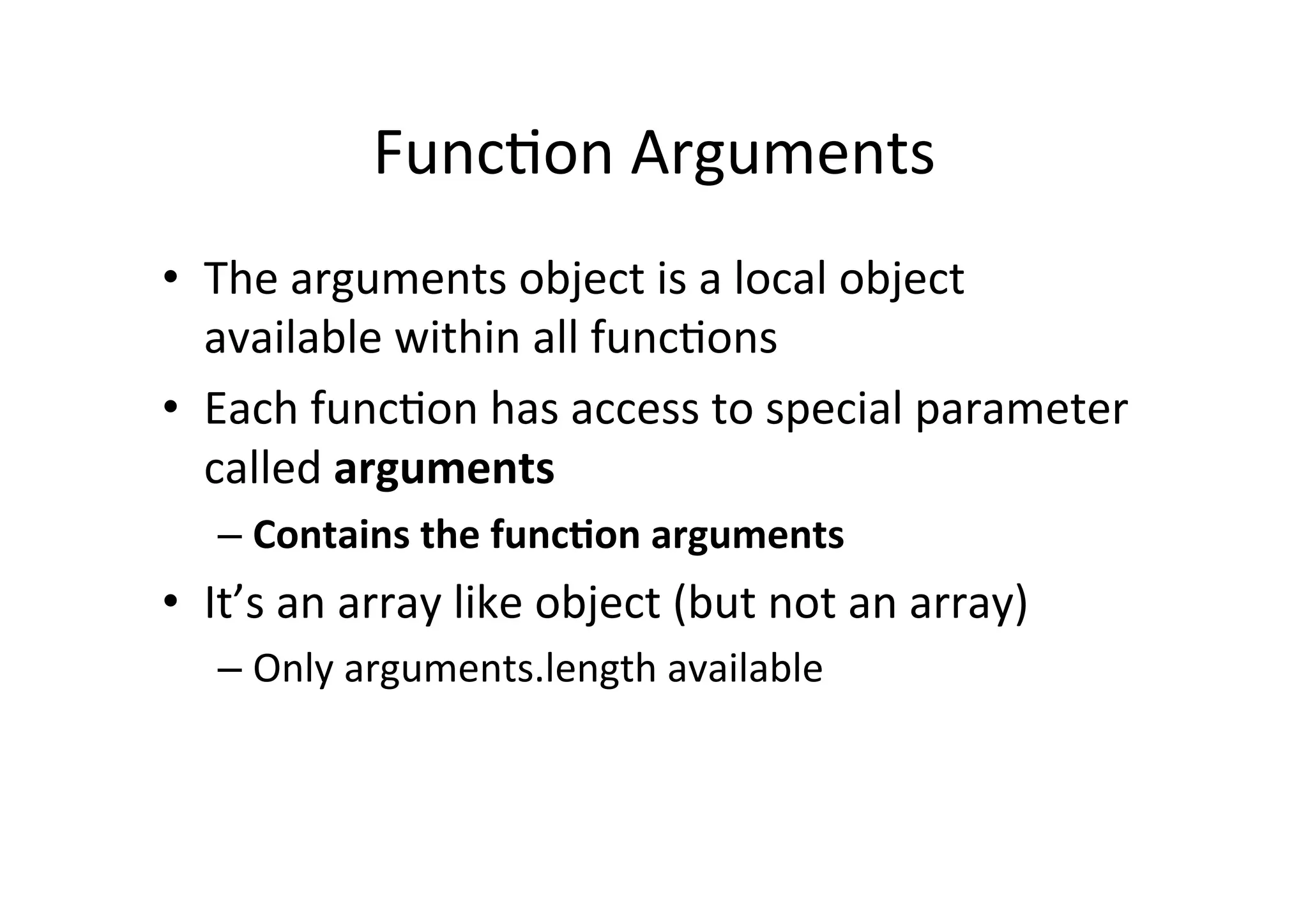
![Example "use strict"; function myConcat(separator) { var result = ""; // iterate through non-separator arguments for (var i = 1; i < arguments.length; i++) { result += arguments[i] + separator; } return result; } // returns "red, orange, blue, " print(myConcat(", ", "red", "orange", "blue")); // returns "elephant; giraffe; lion; cheetah; " print(myConcat("; ", "elephant", "giraffe", "lion", "cheetah")); // returns "sage. basil. oregano. pepper. parsley. " print(myConcat(". ", "sage", "basil", "oregano", "pepper", "parsley"));](https://image.slidesharecdn.com/00-advanced-intro-to-js-all-recovered-141201020204-conversion-gate02/75/Advanced-JavaScript-Development-127-2048.jpg)
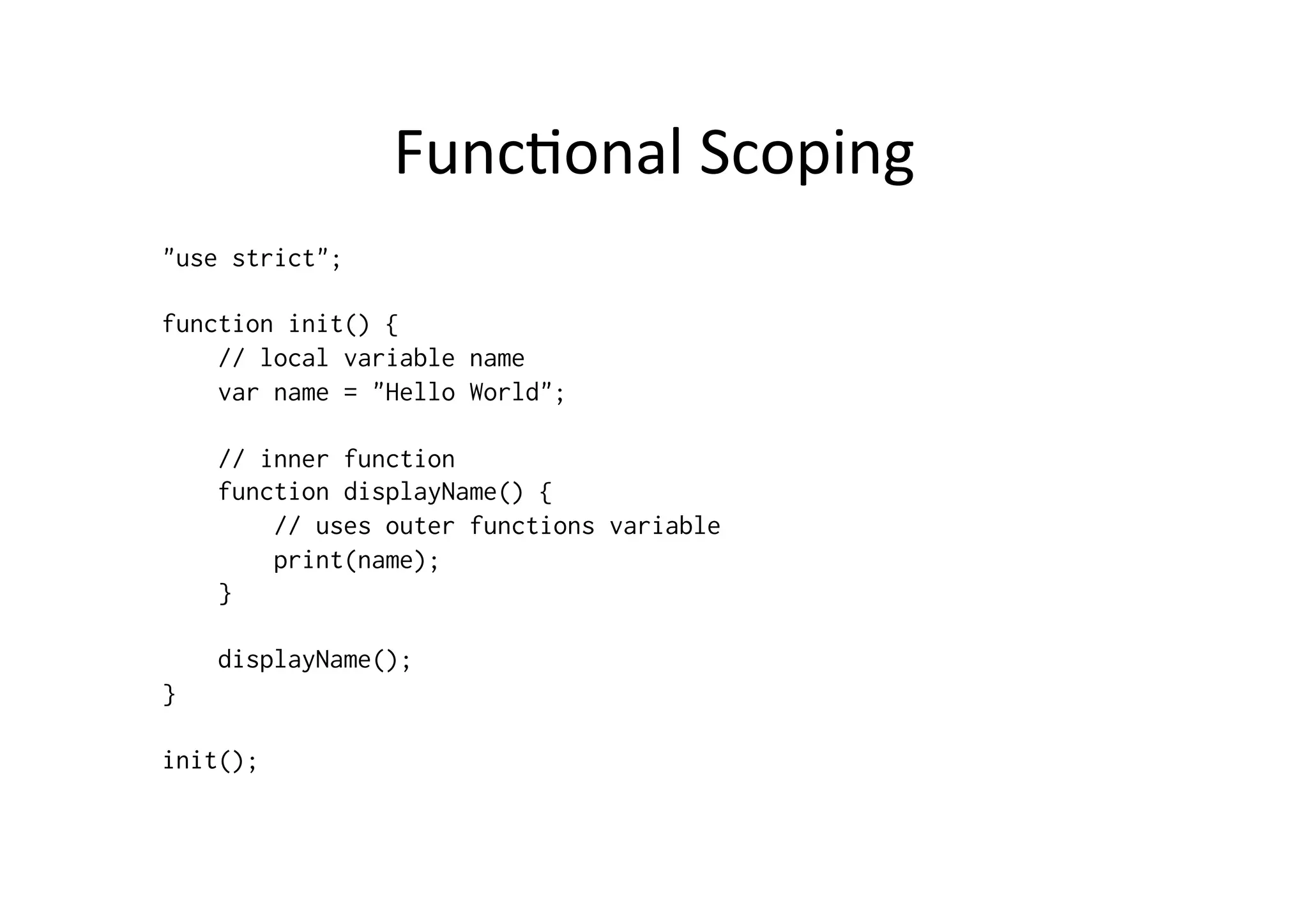
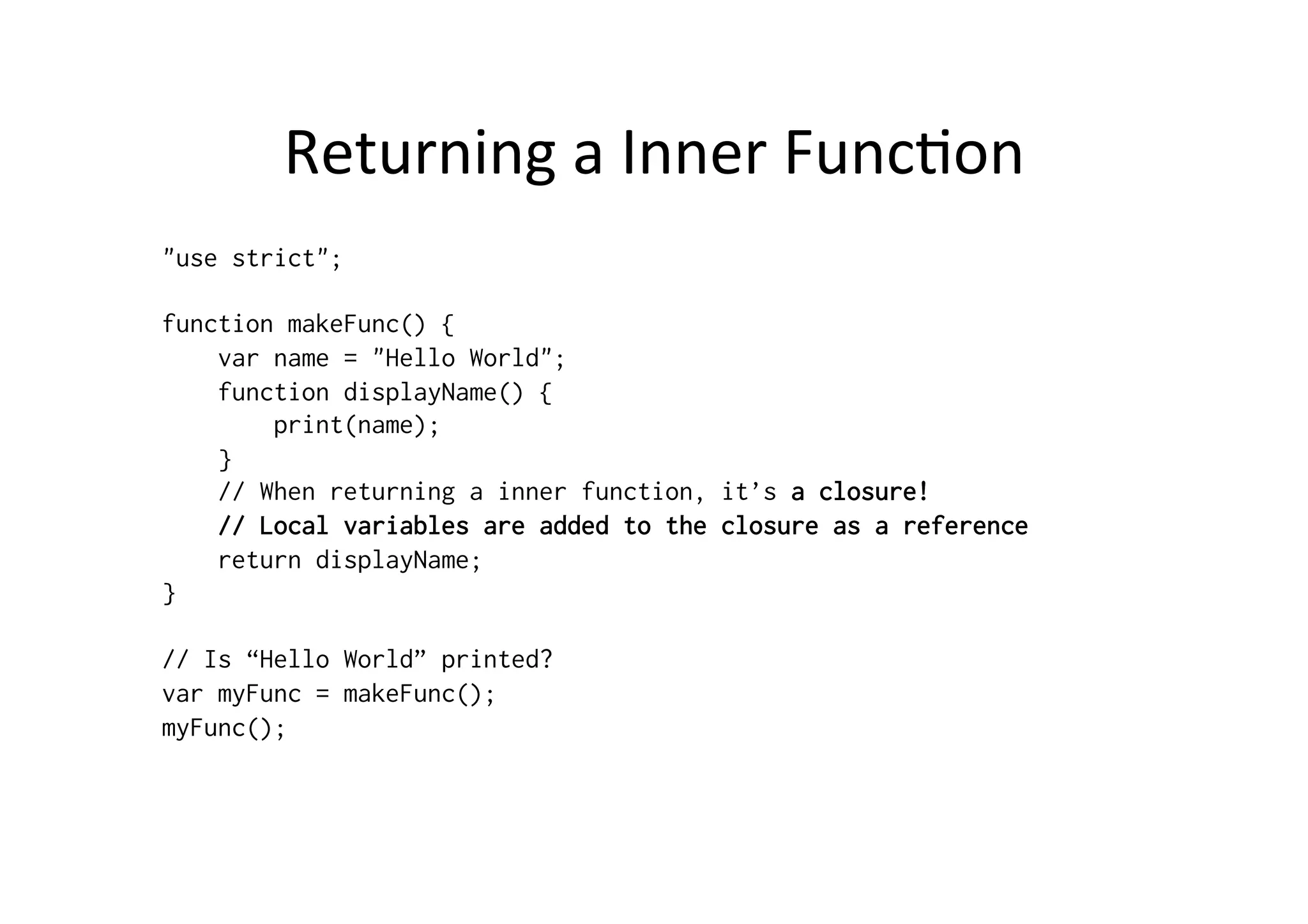
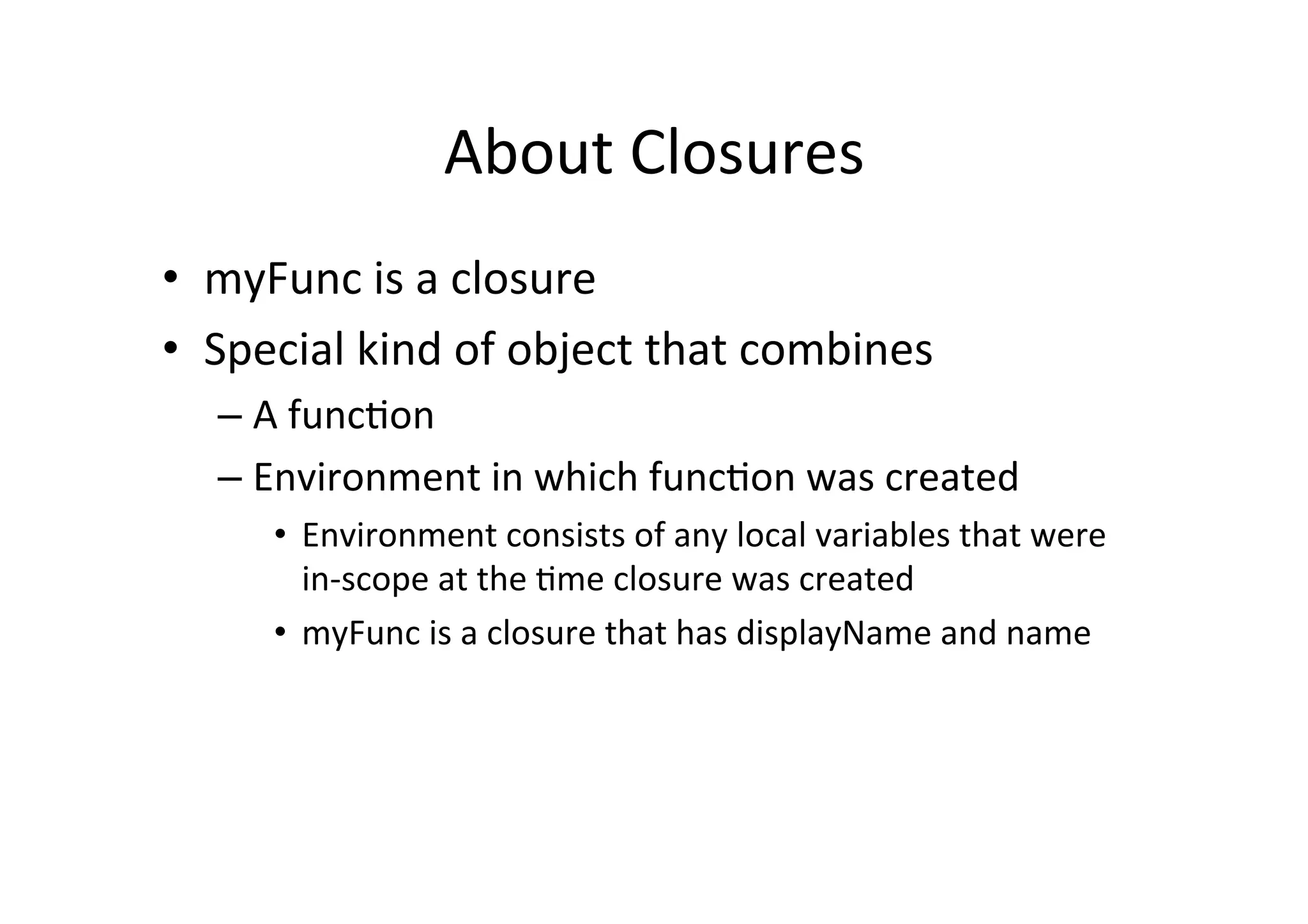
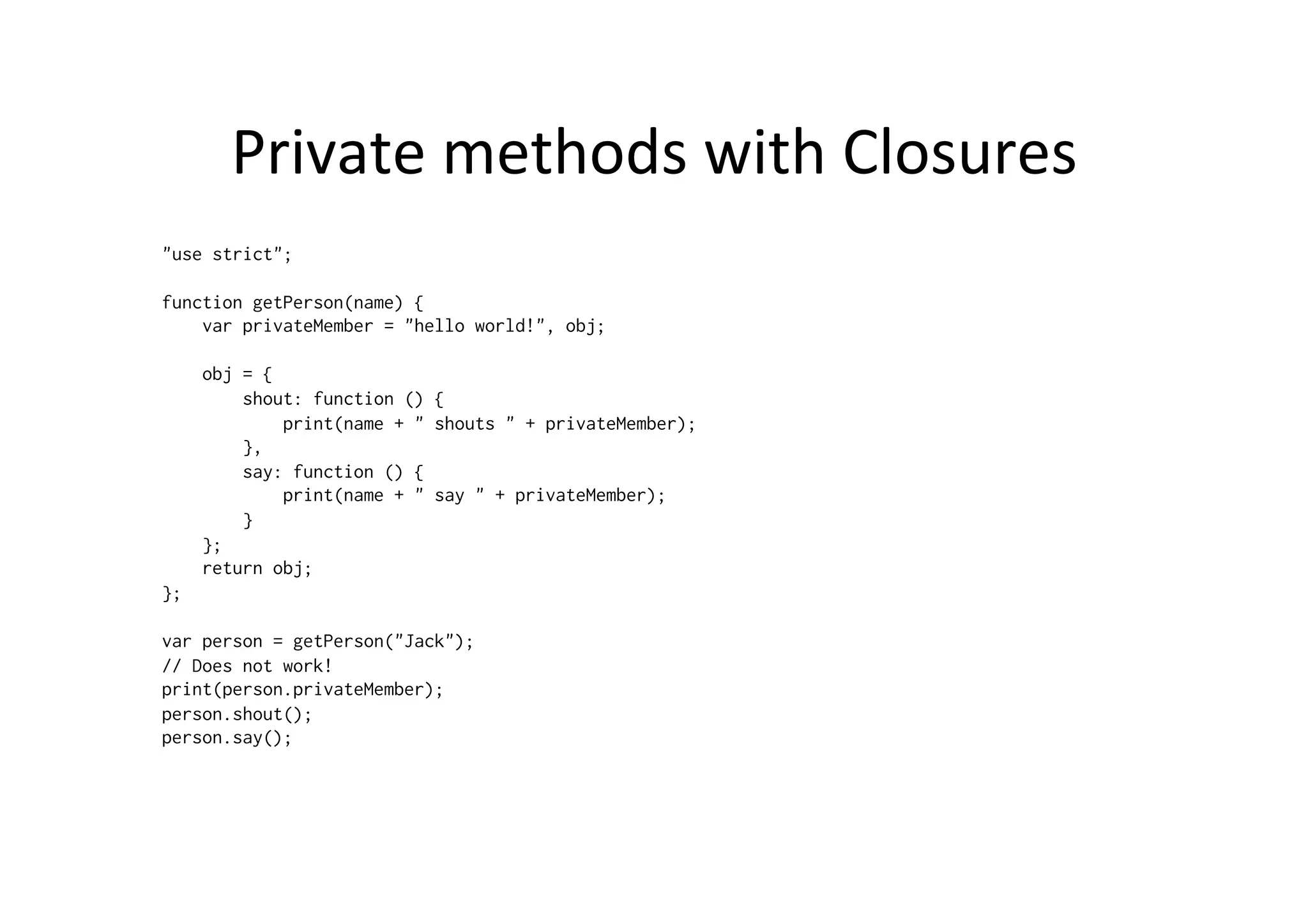
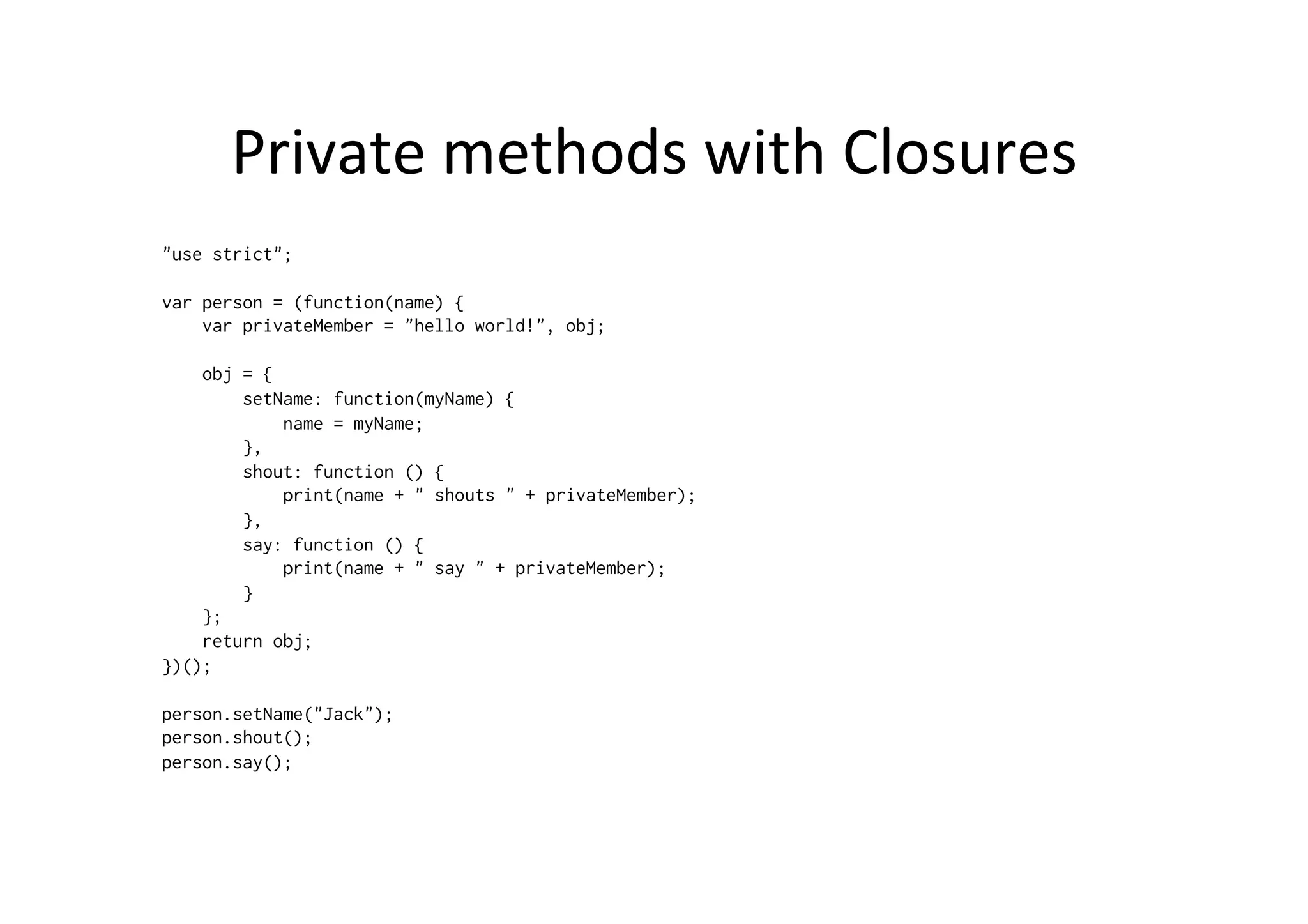
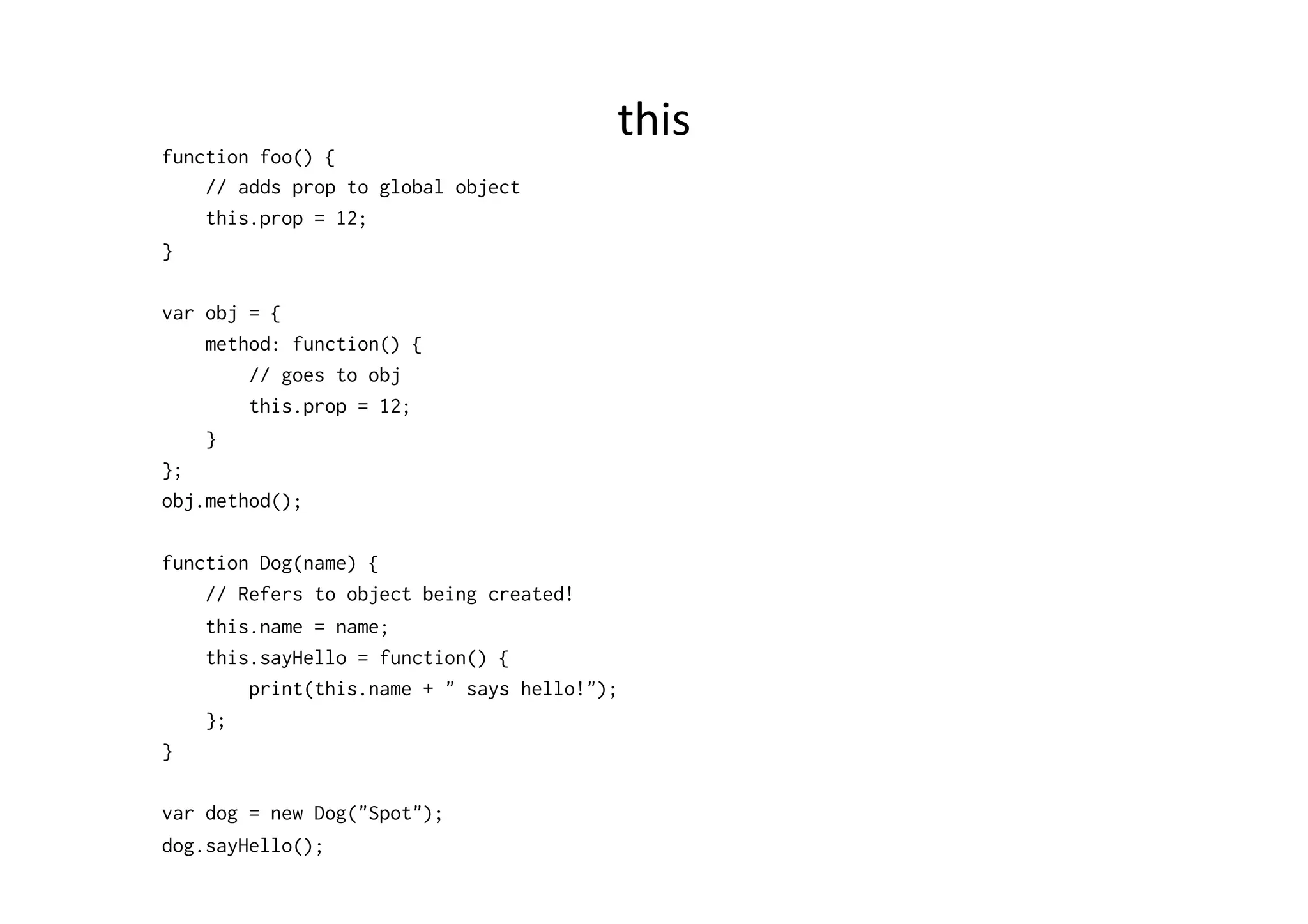


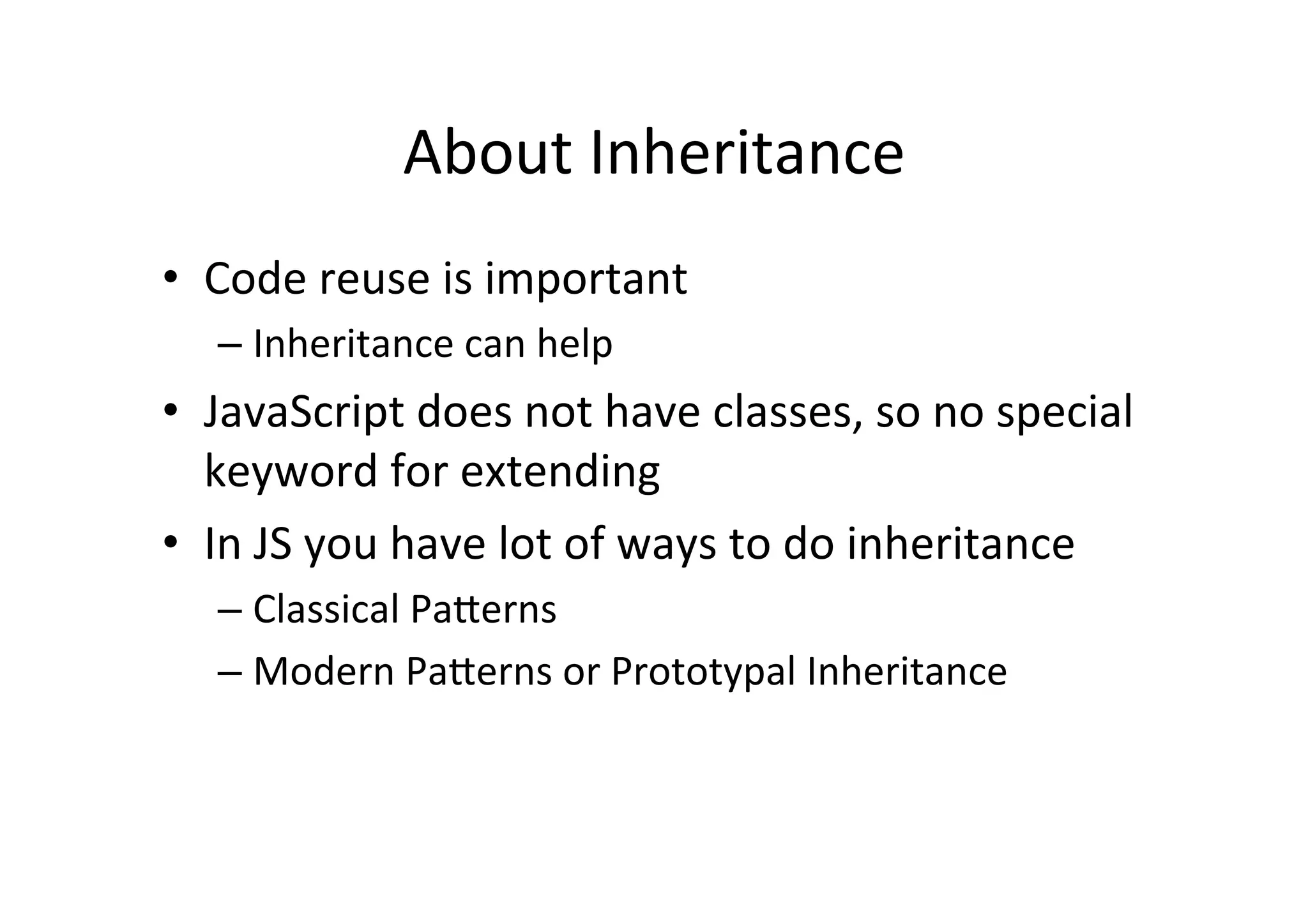
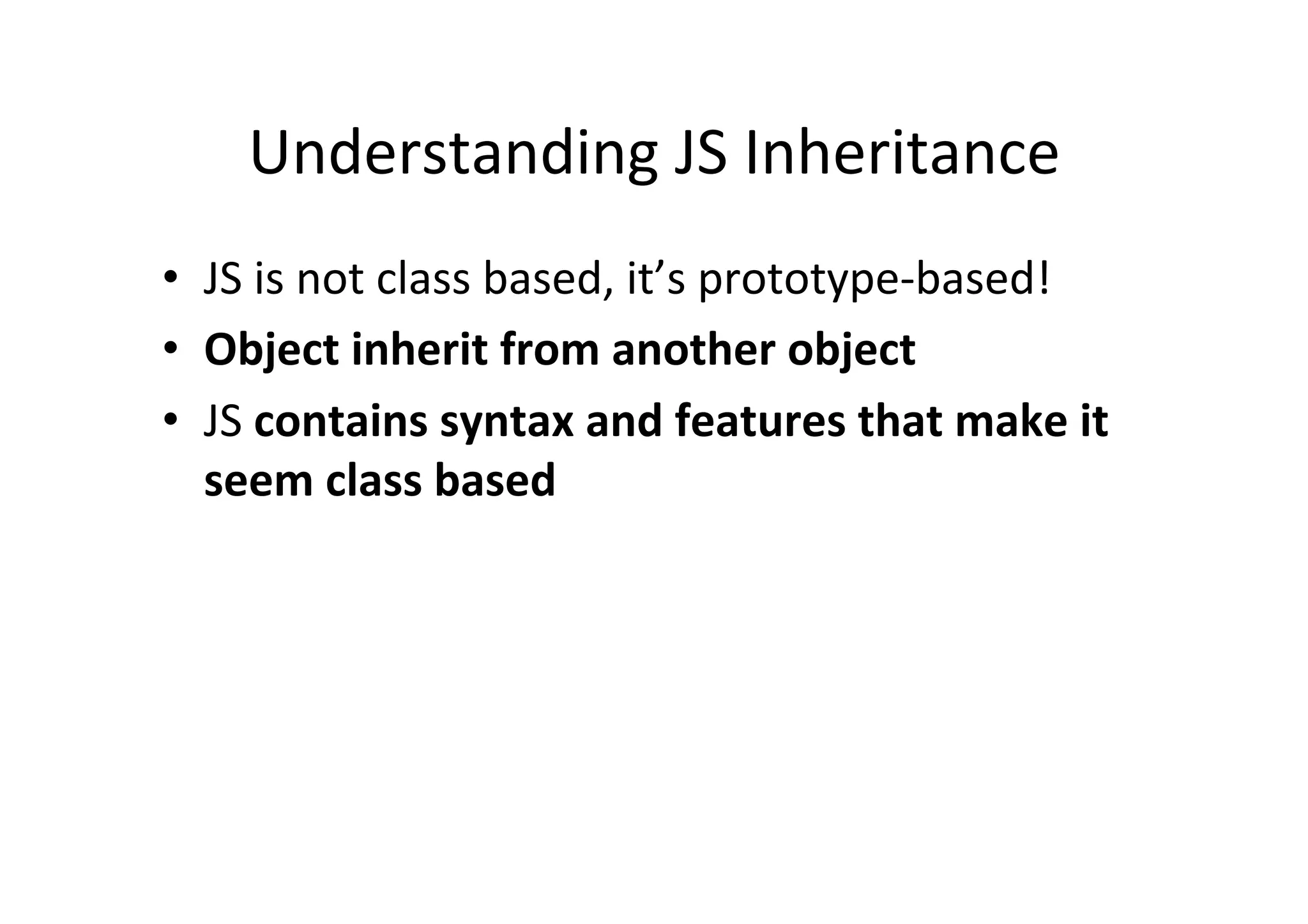
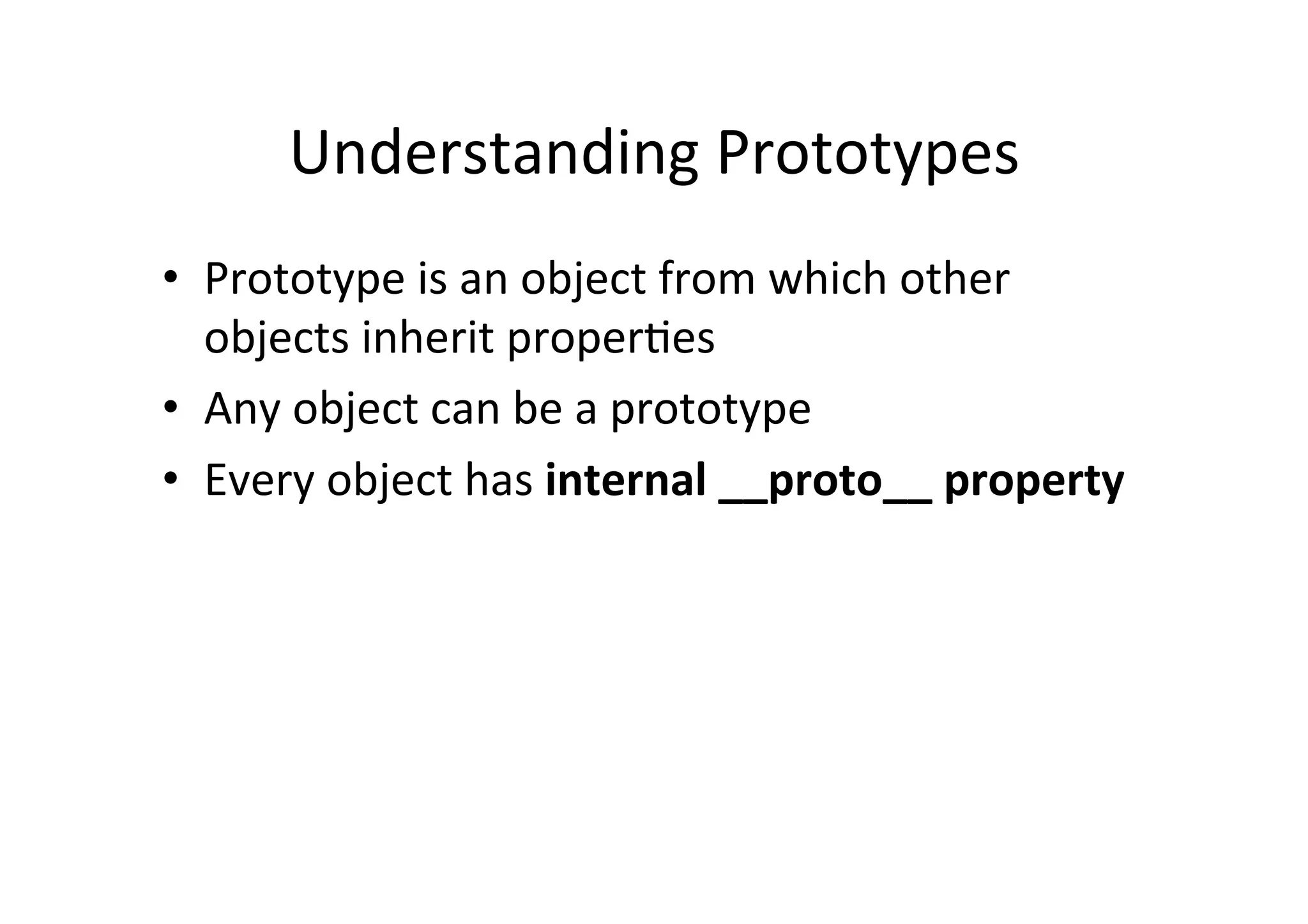
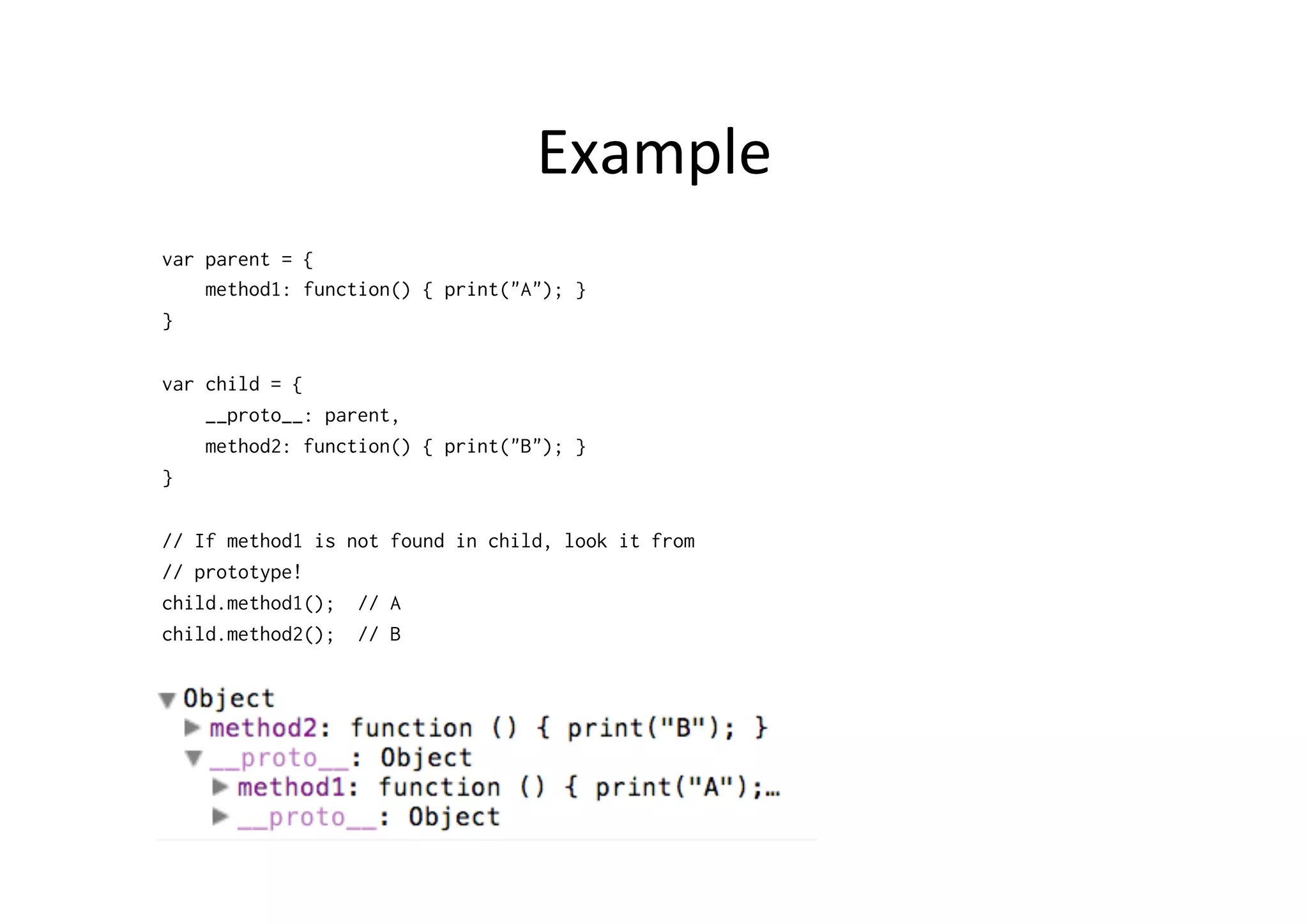
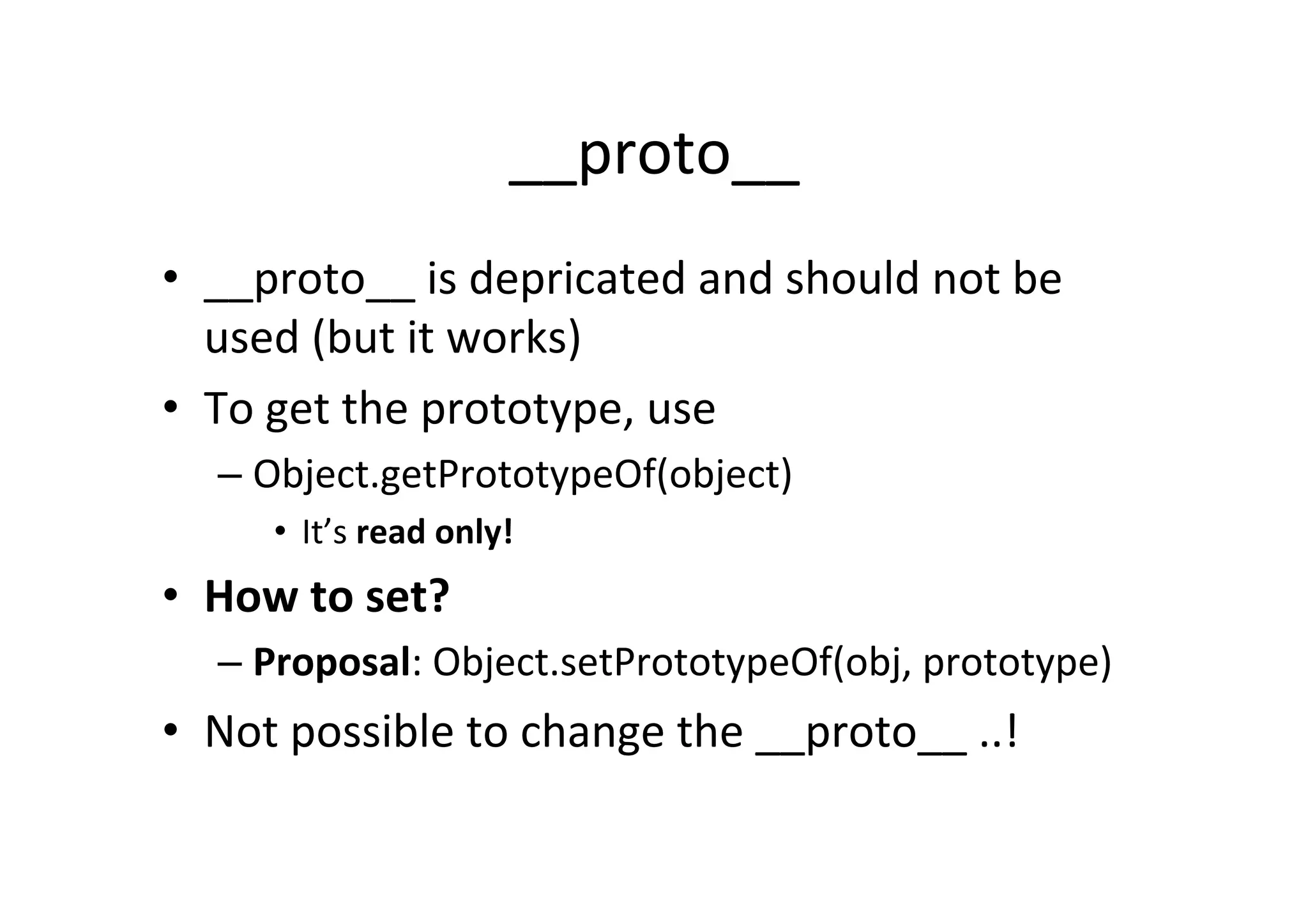
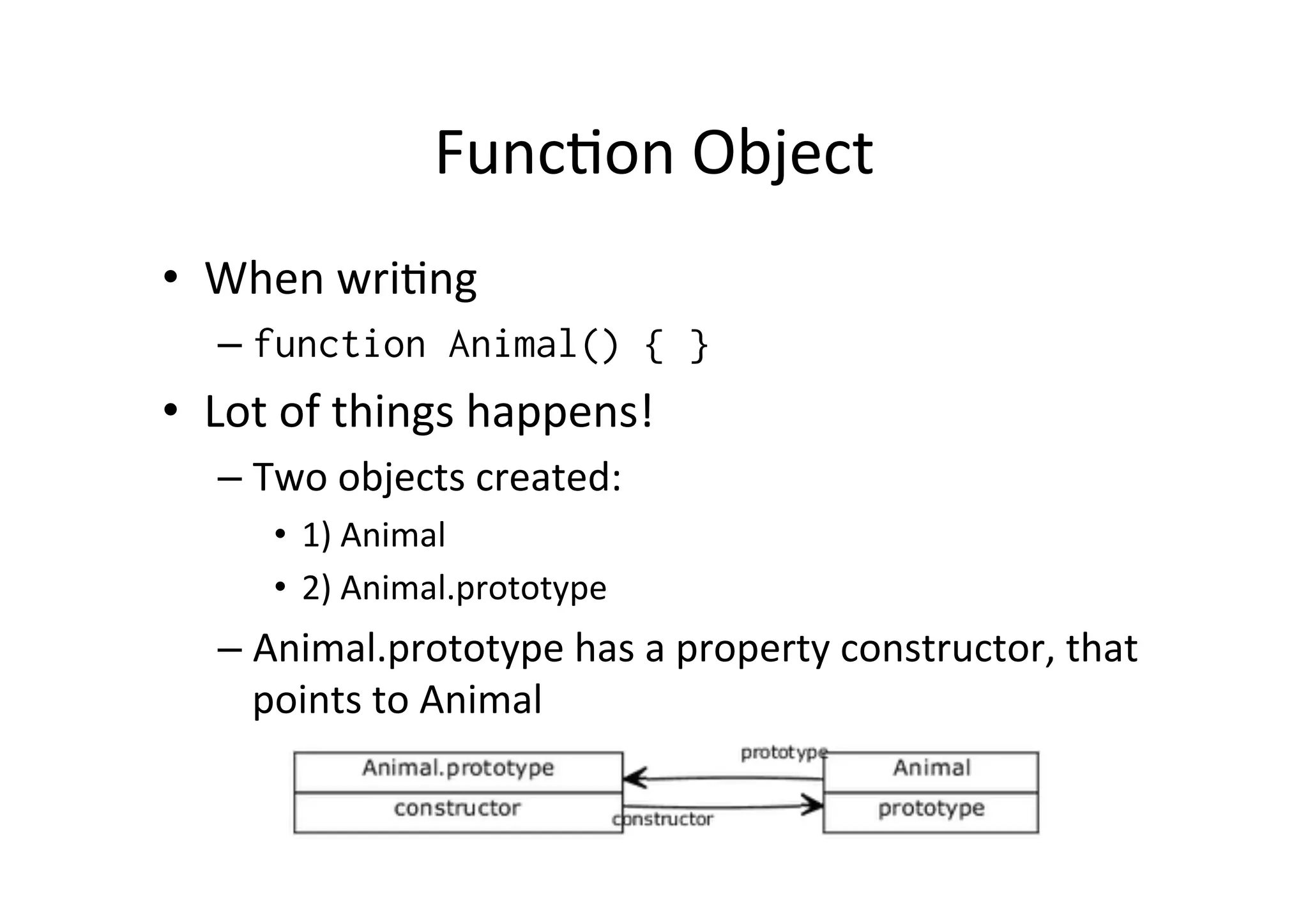
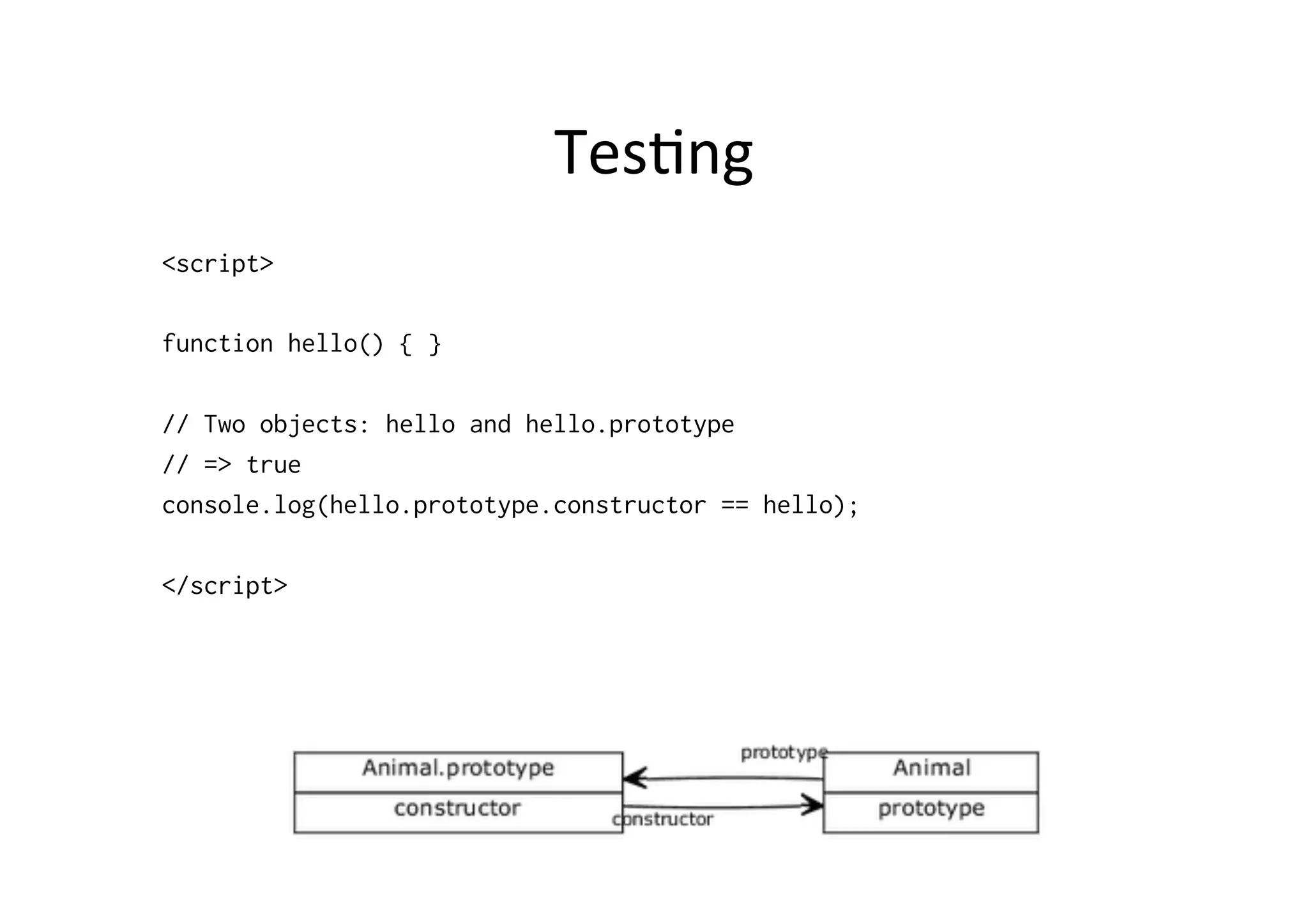
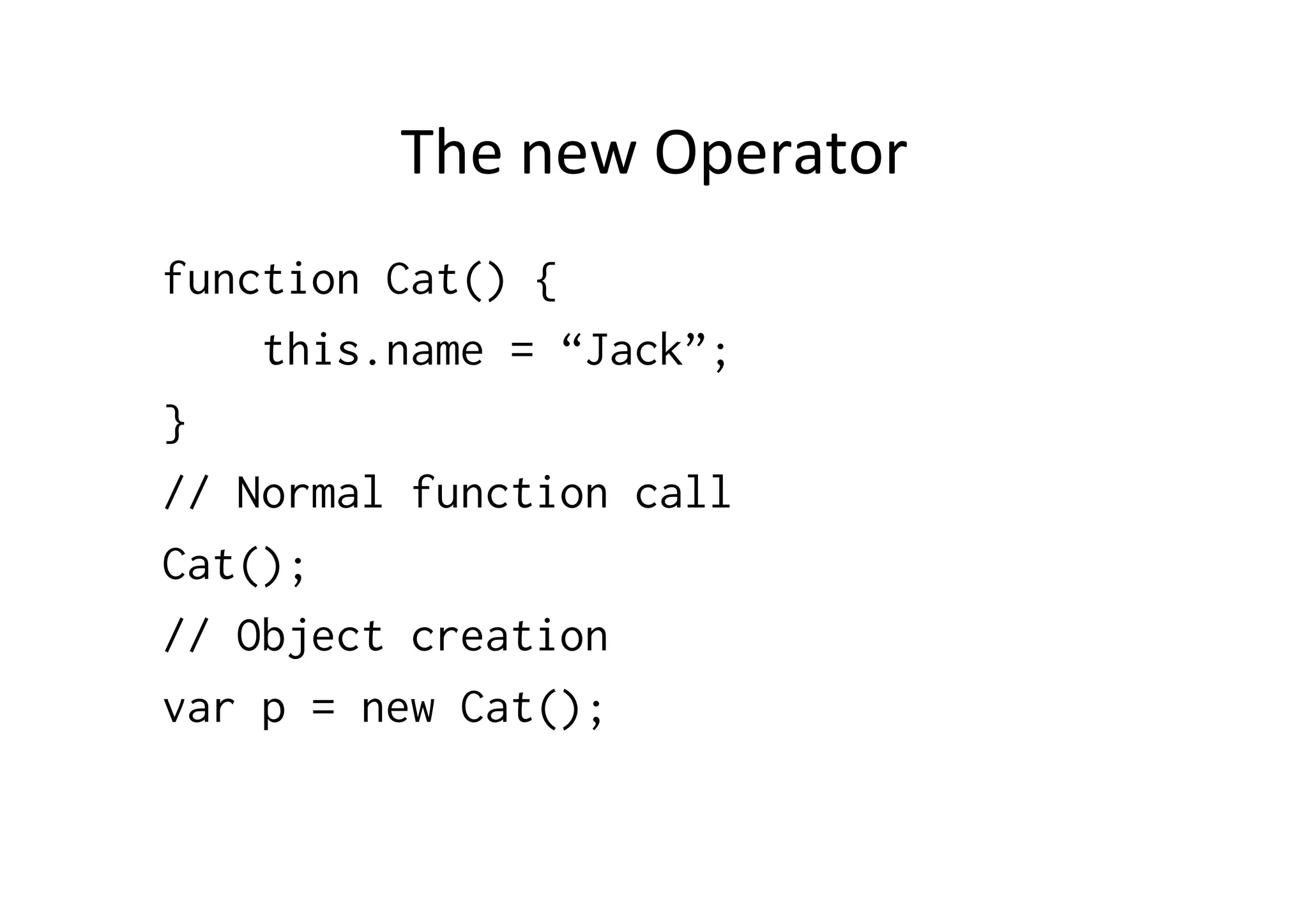
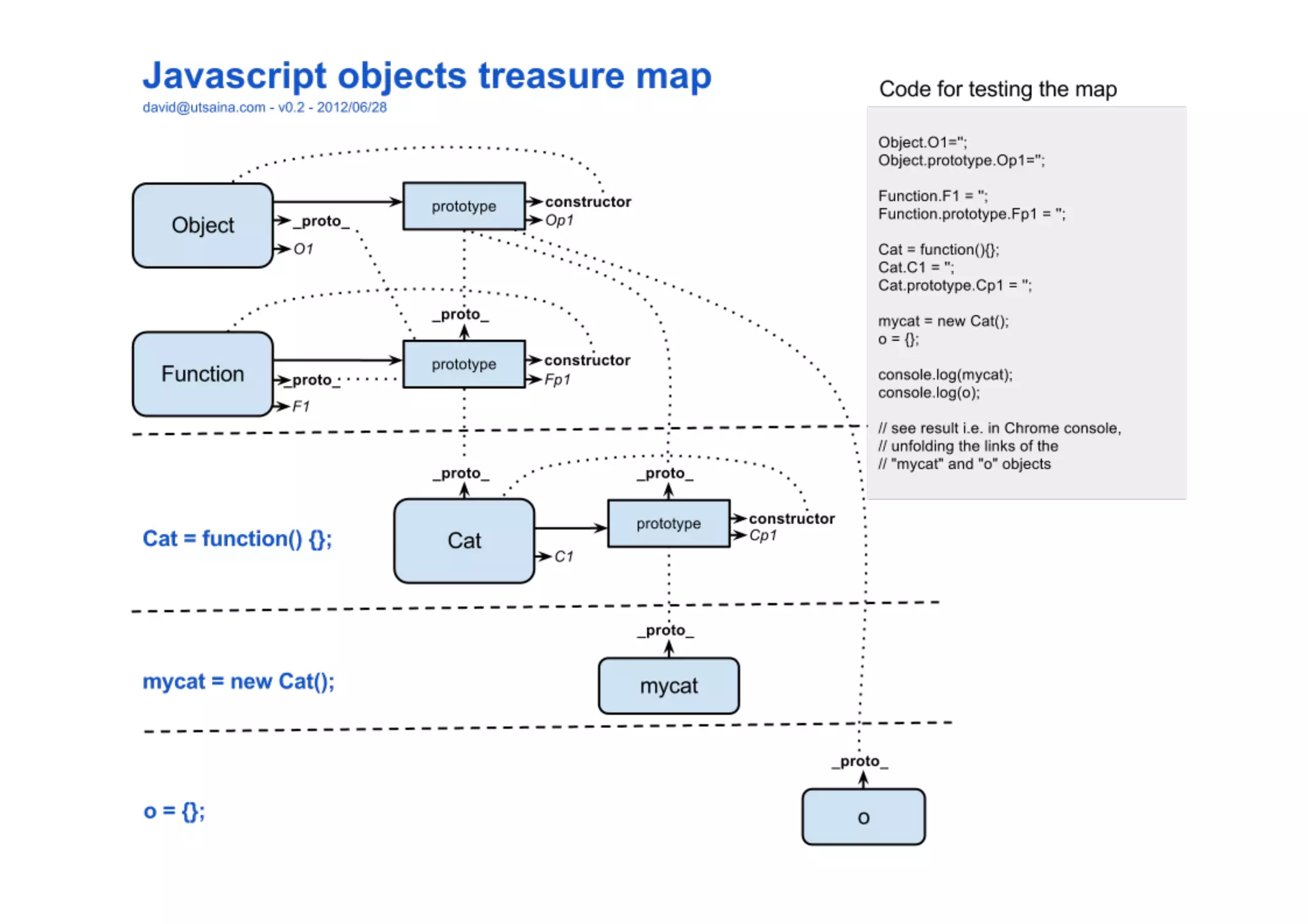
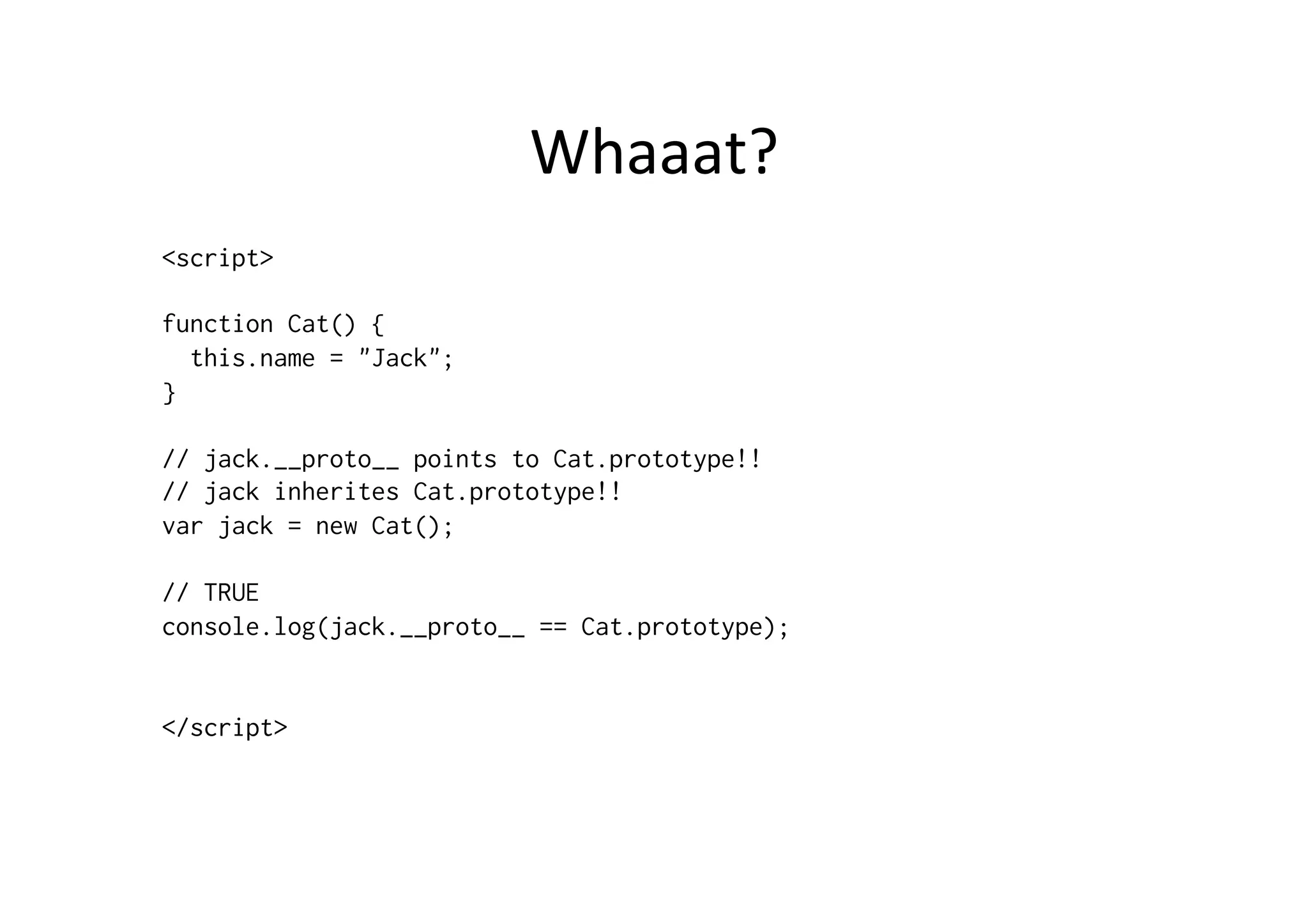
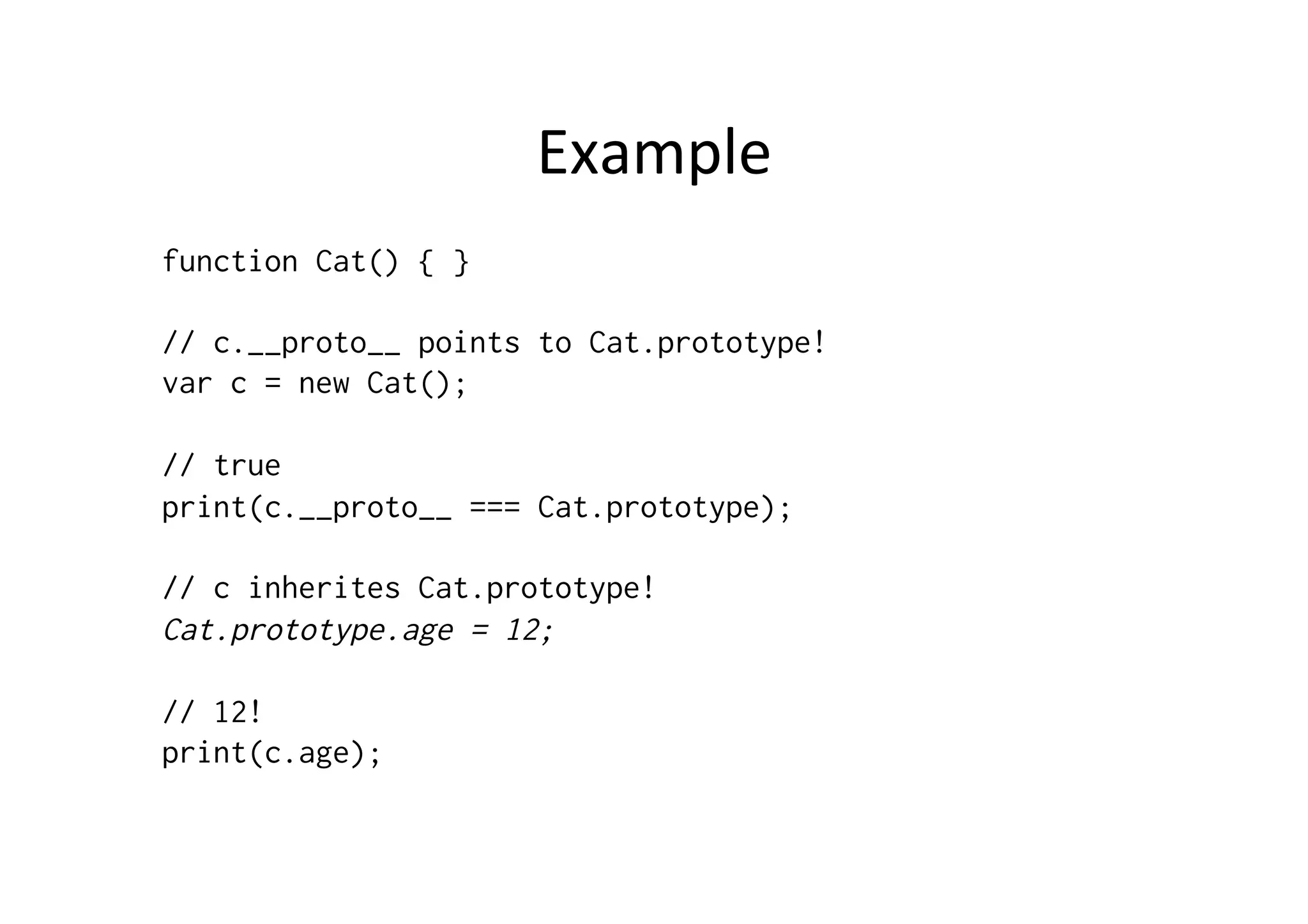
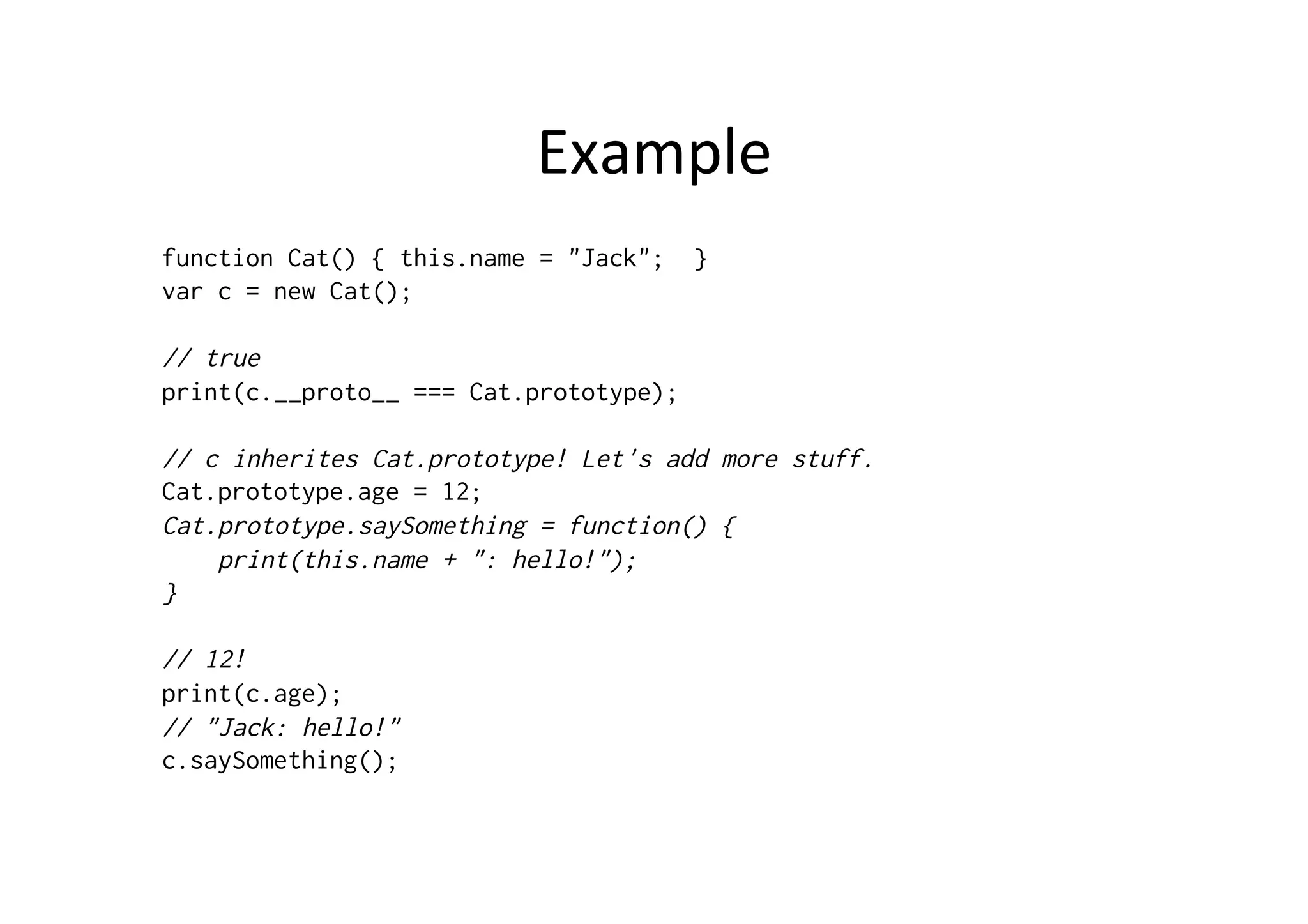
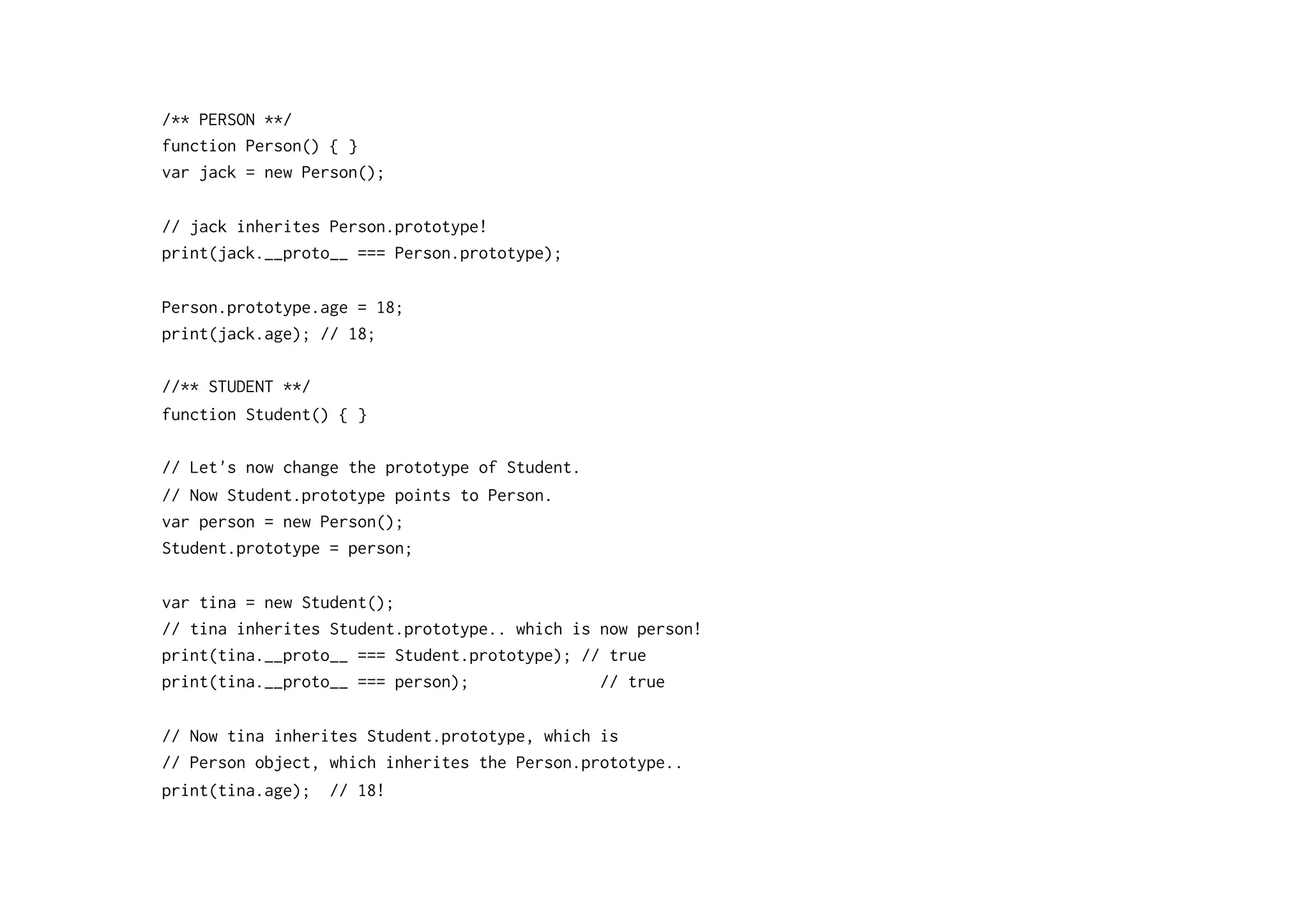
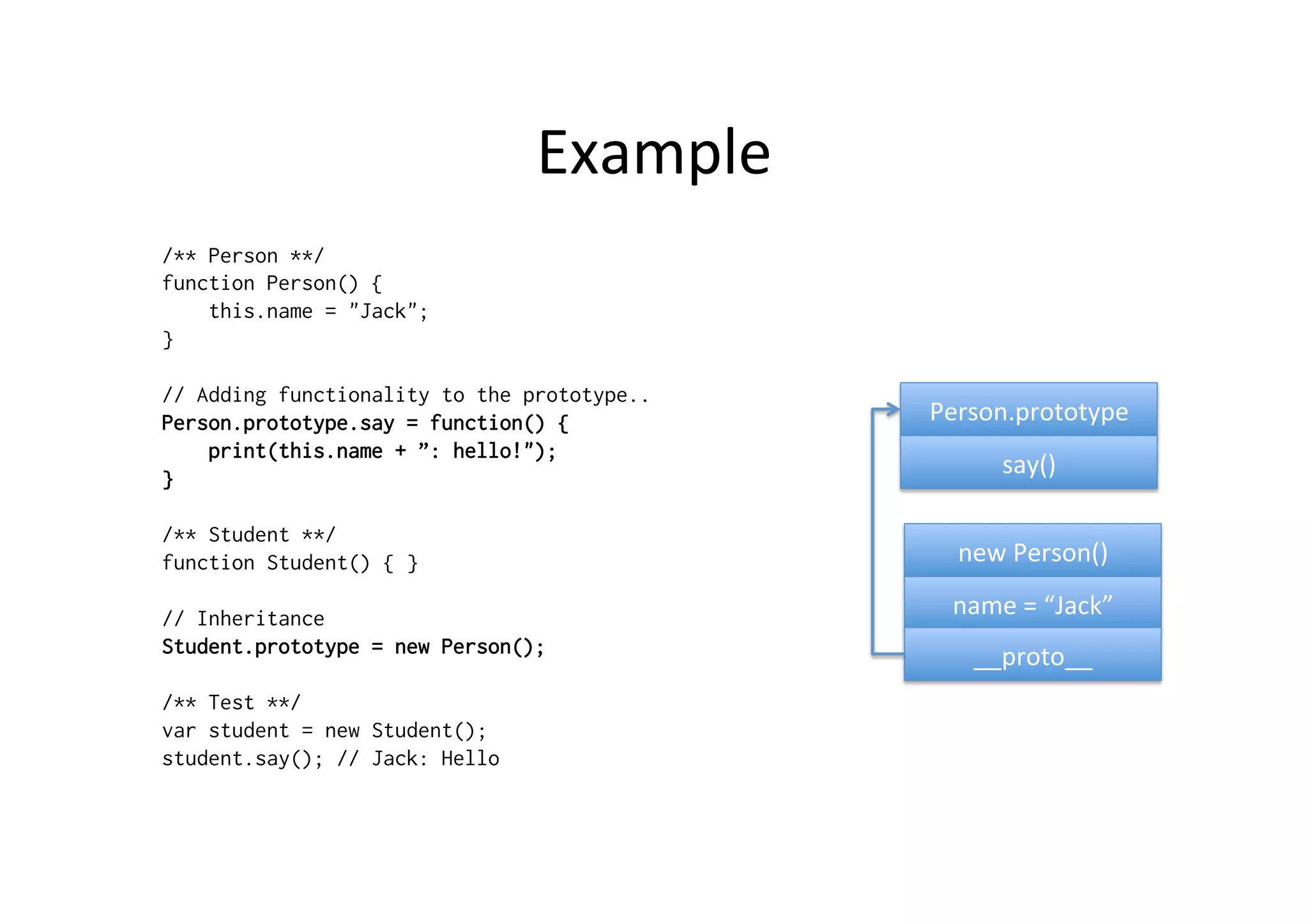
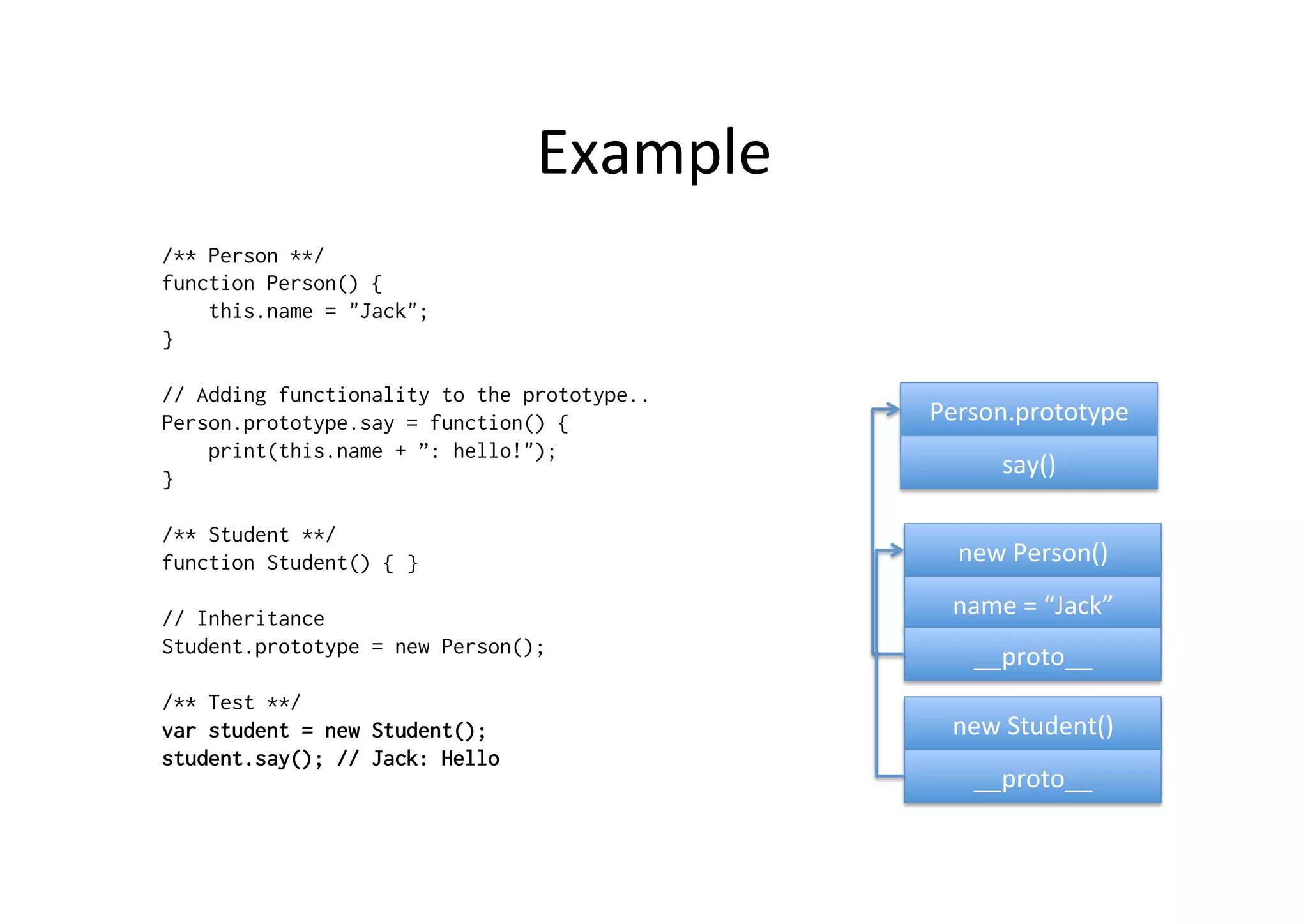
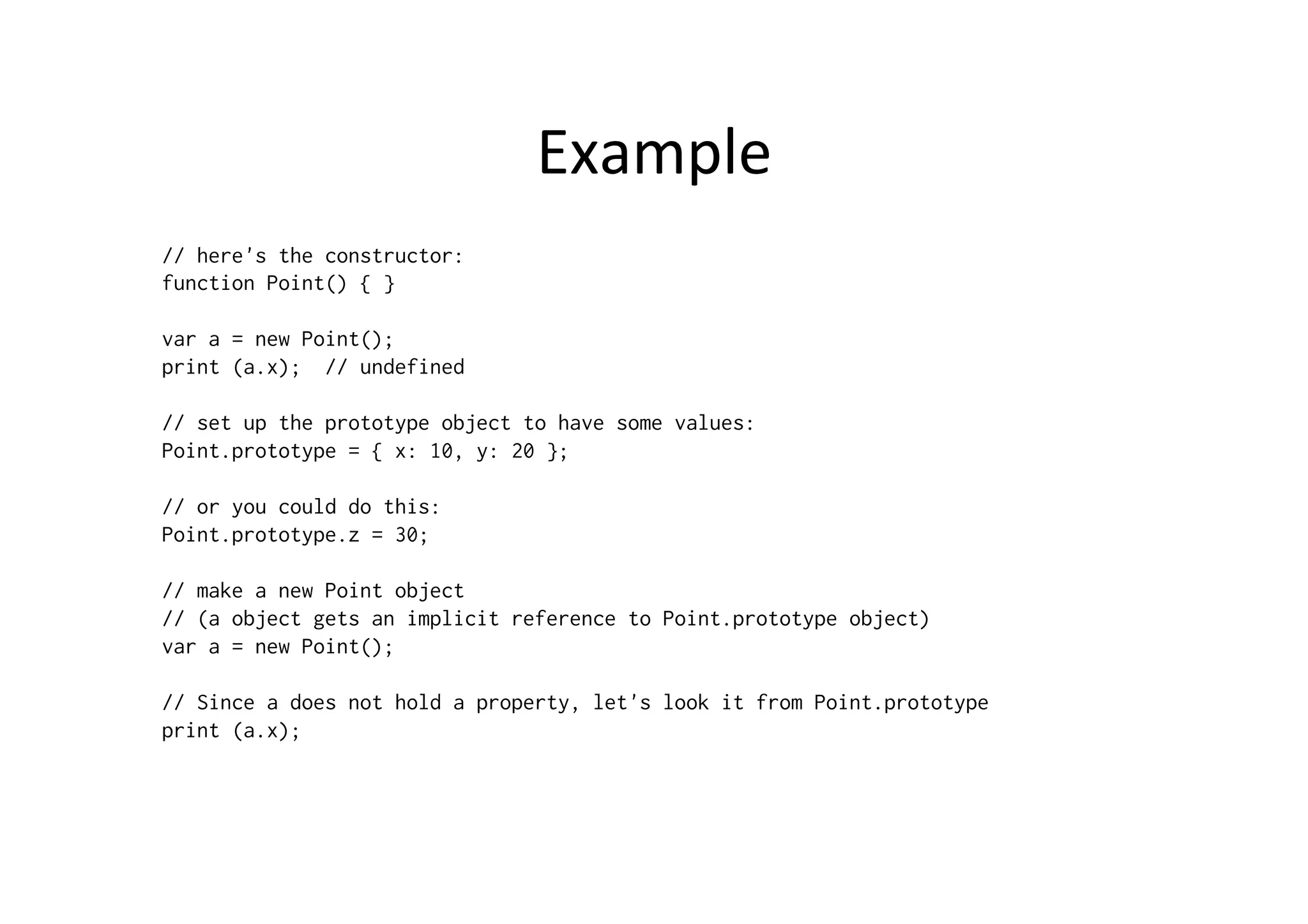
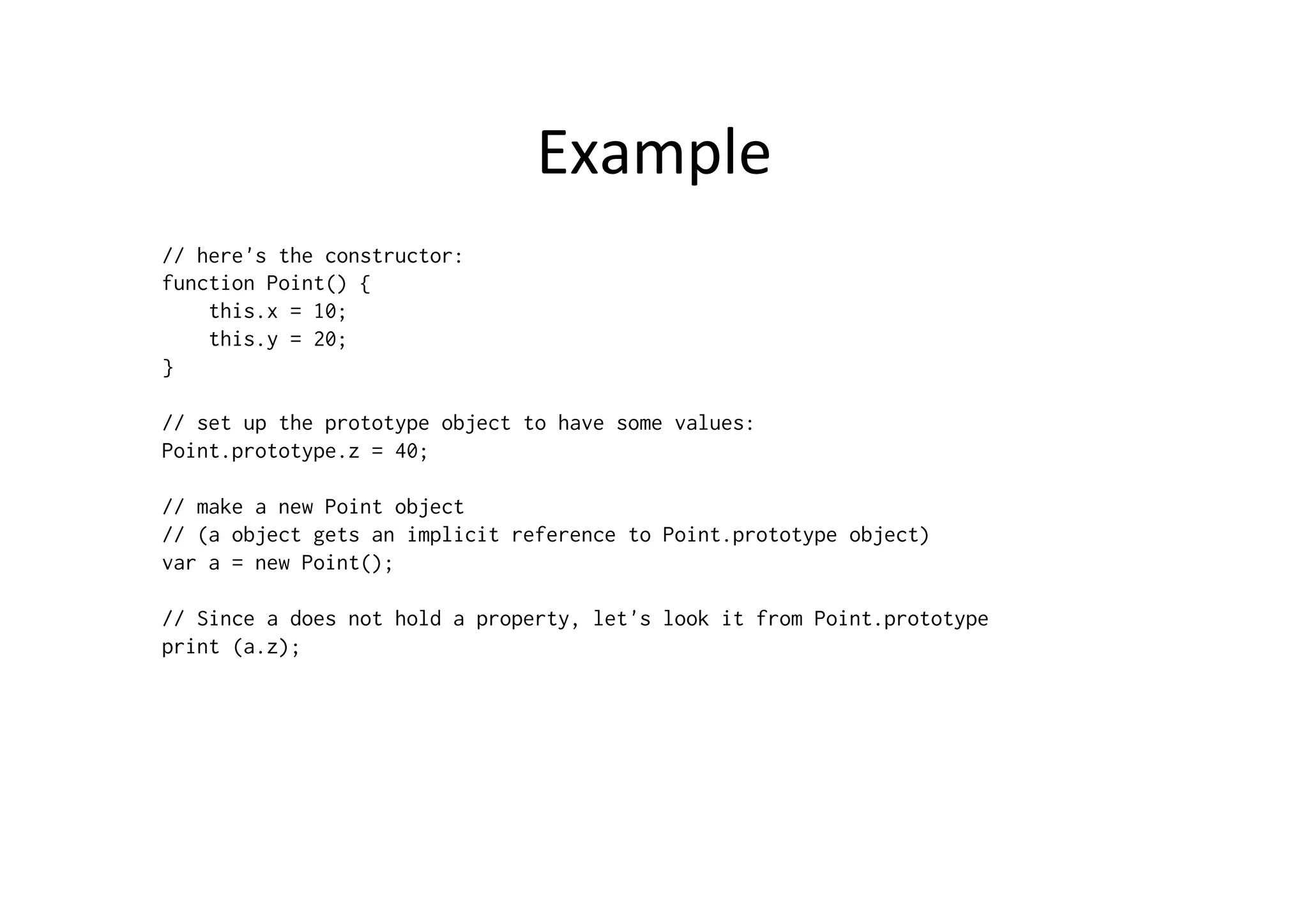
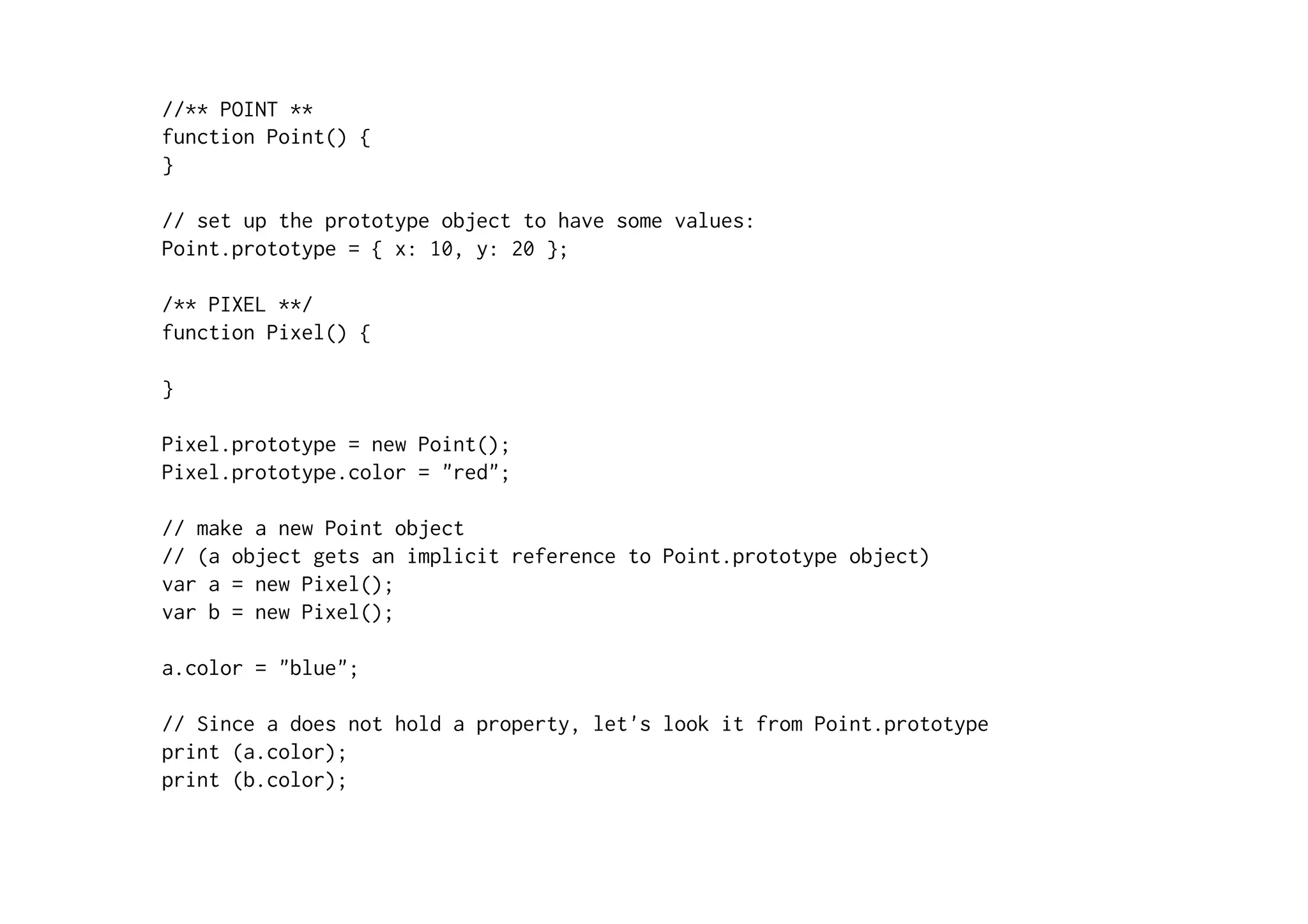
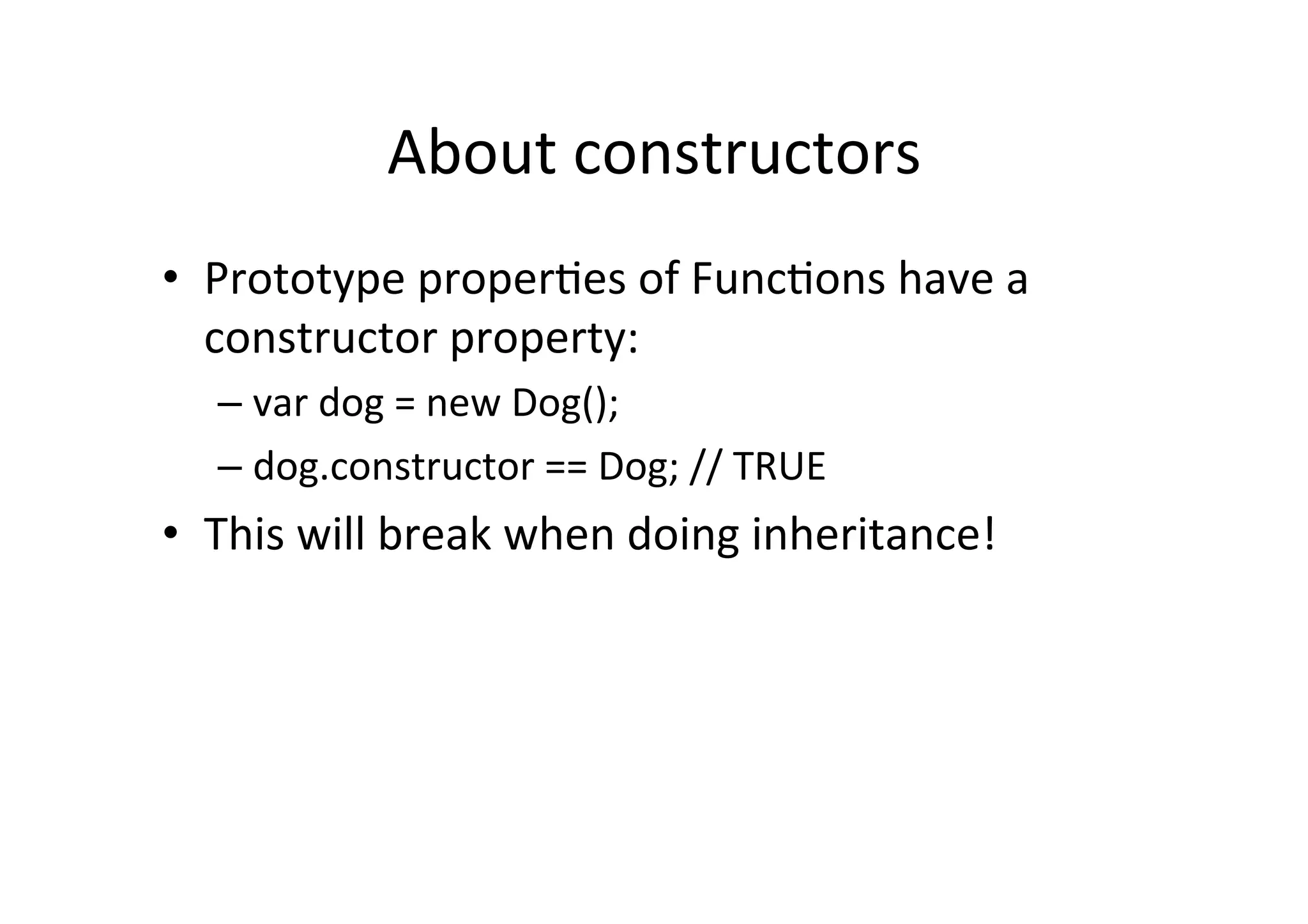
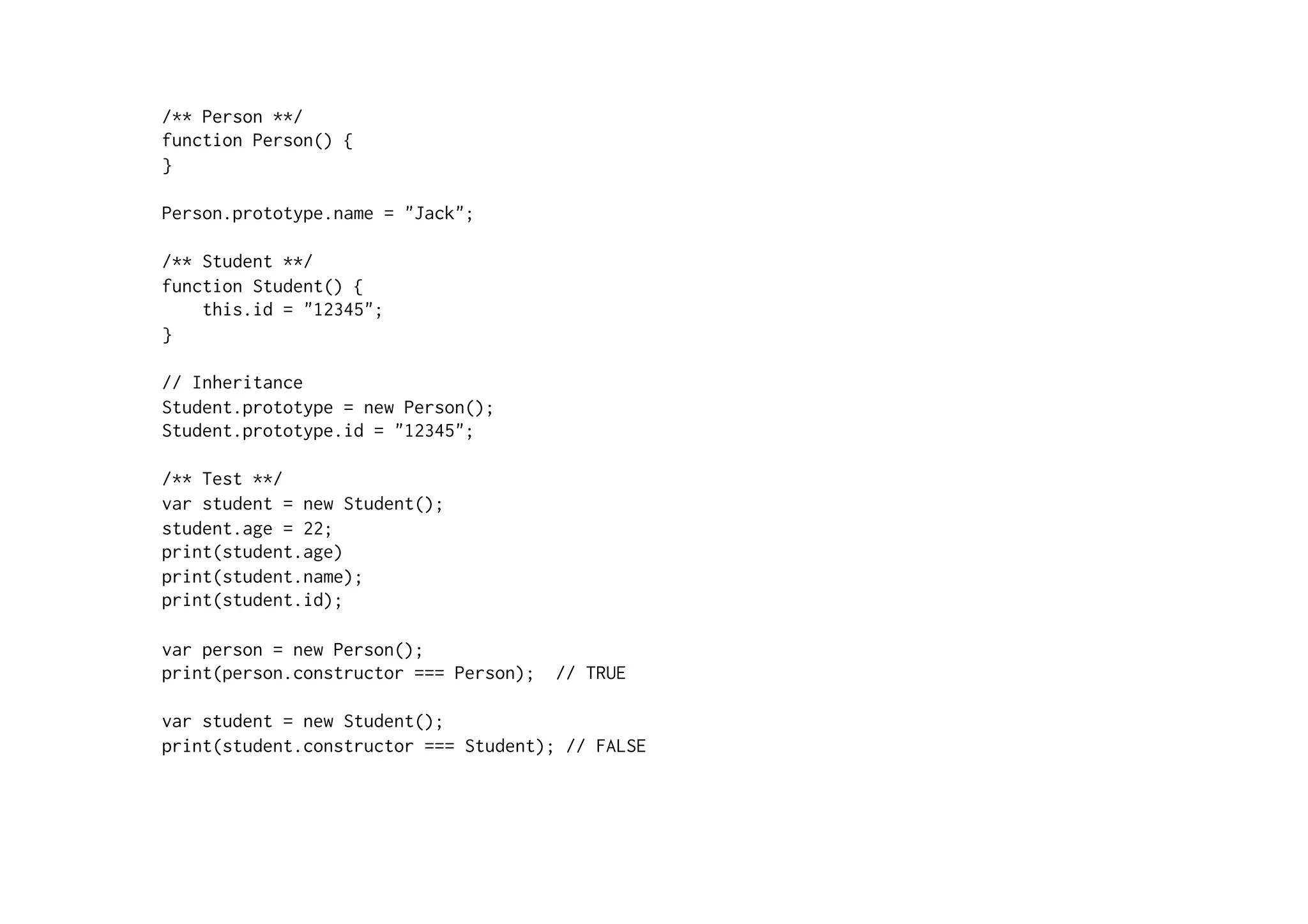
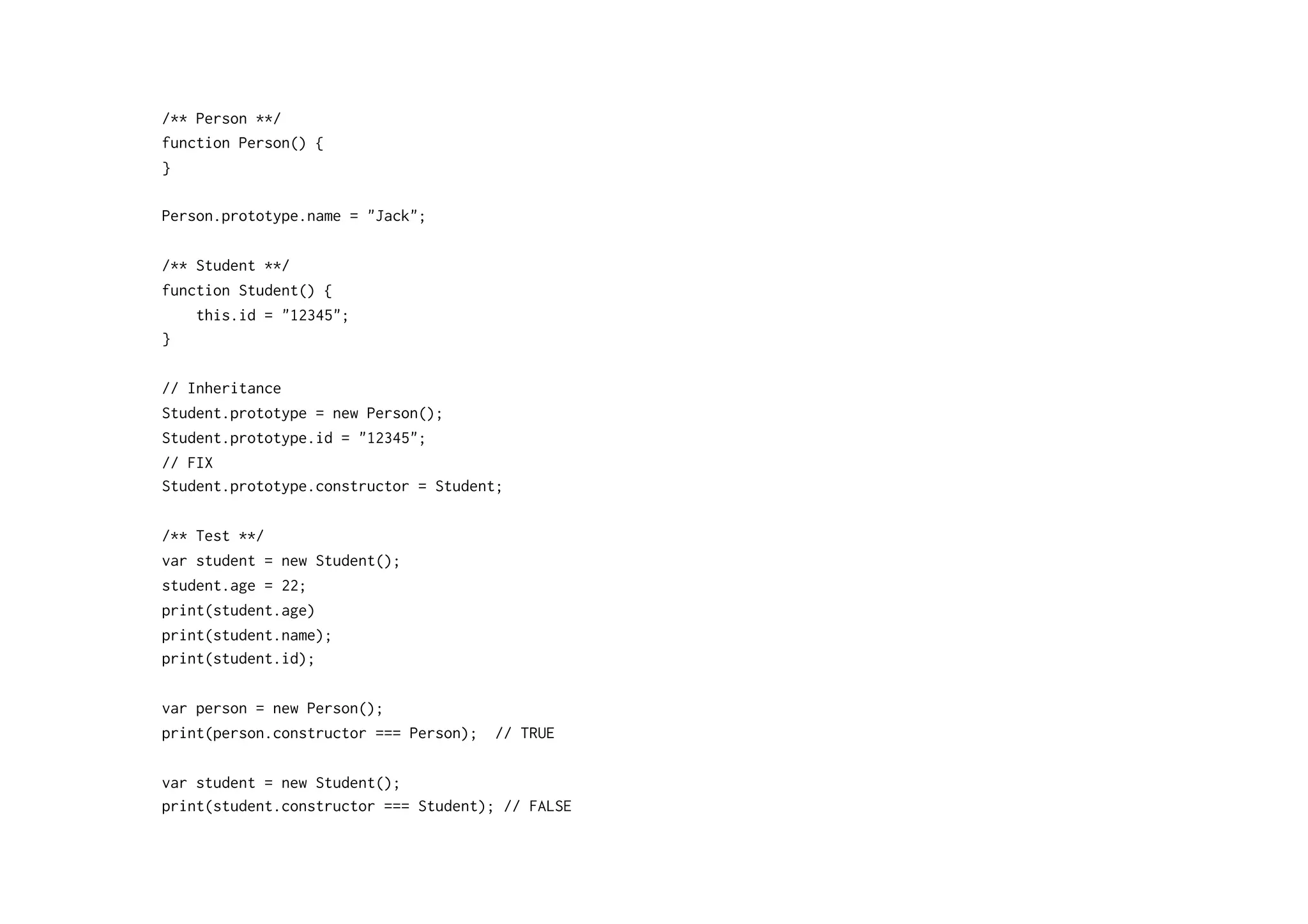
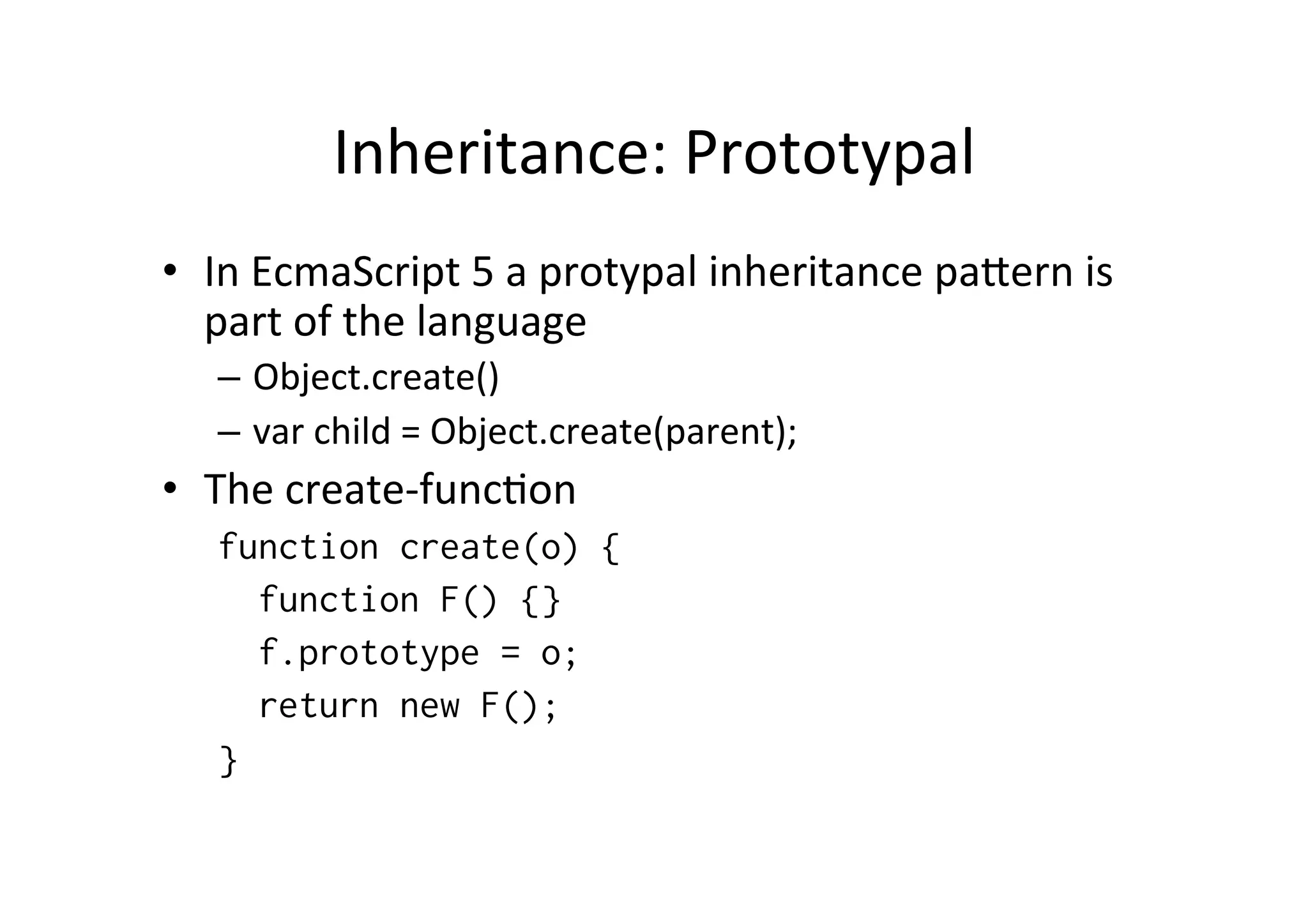
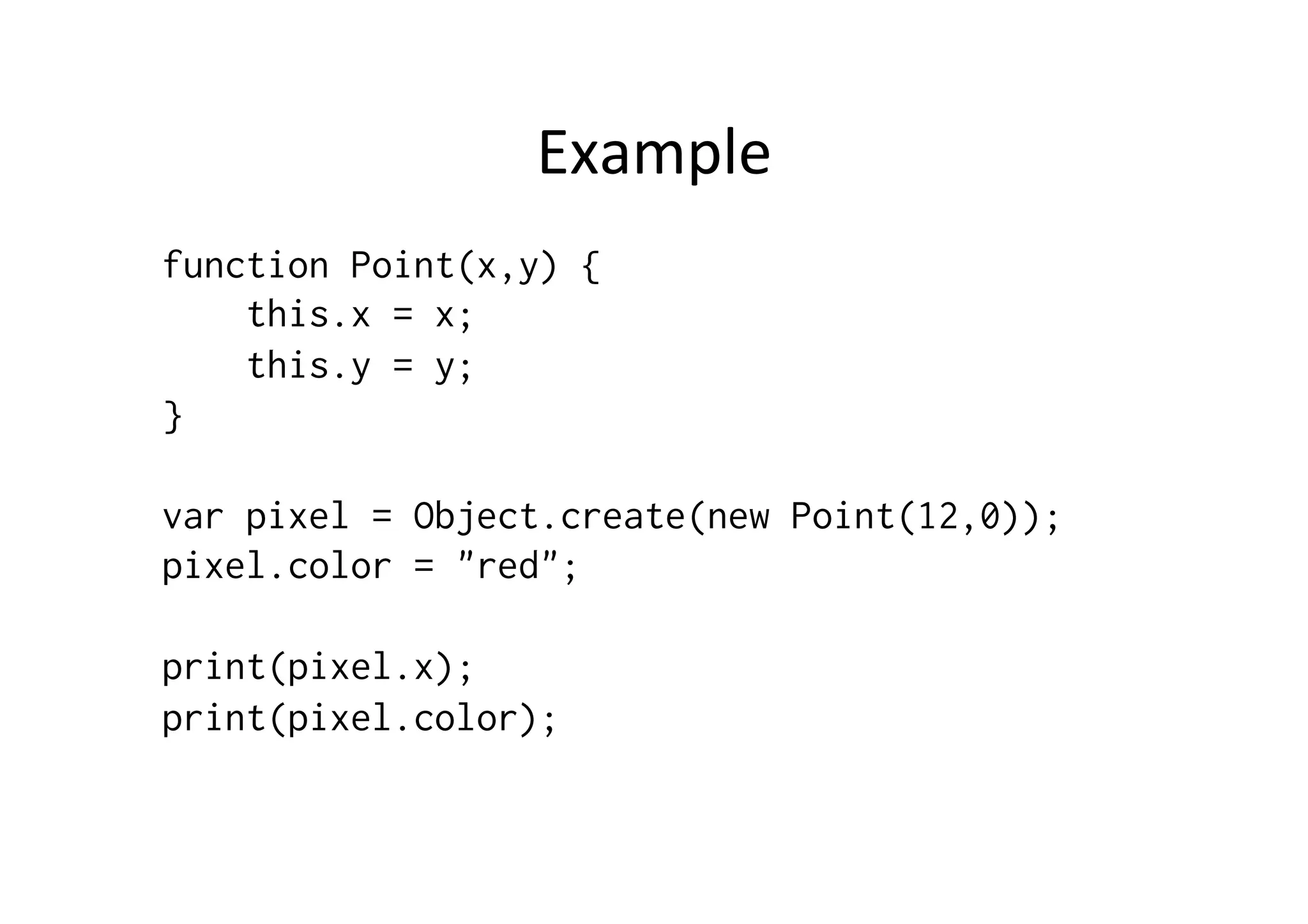


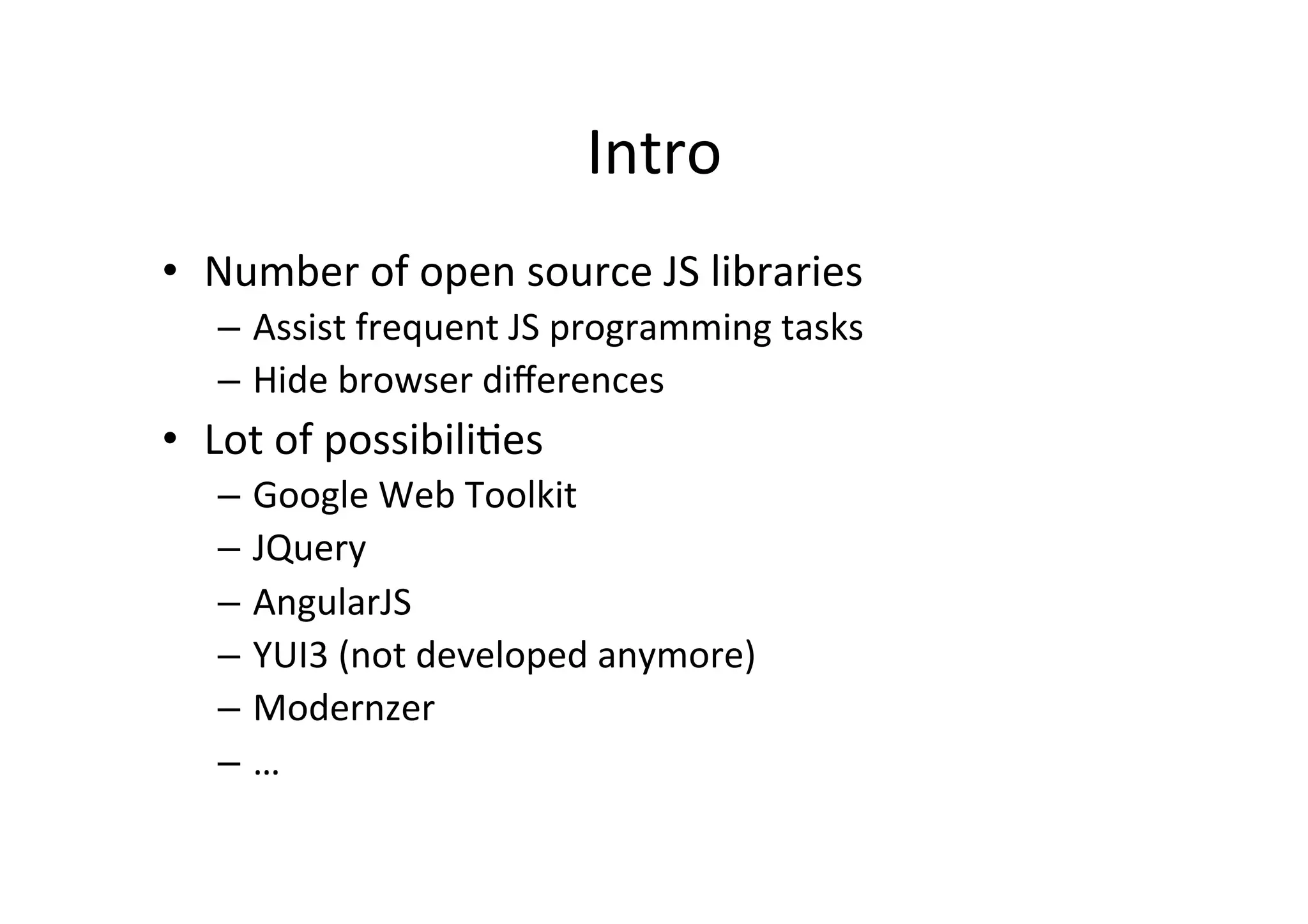
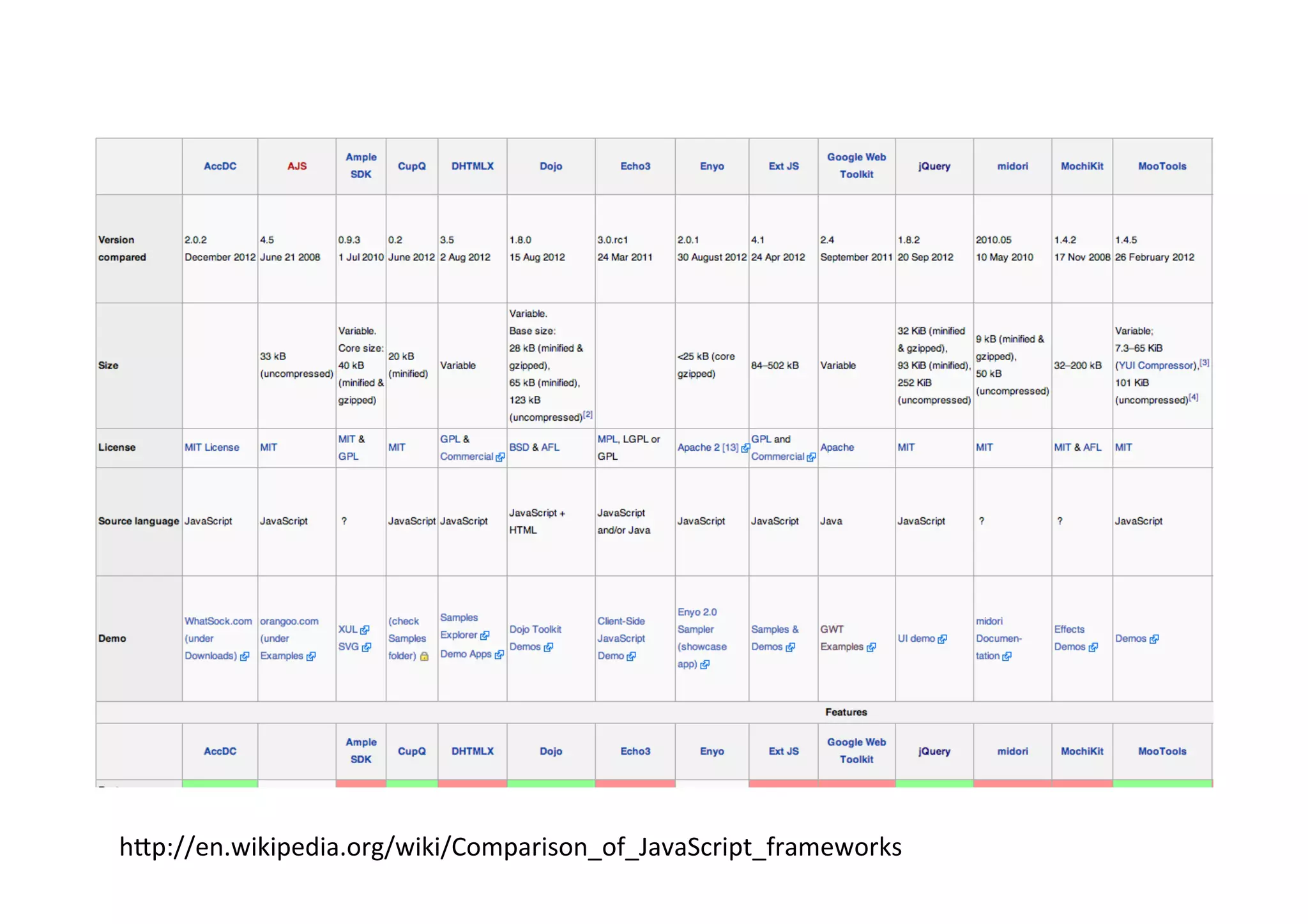
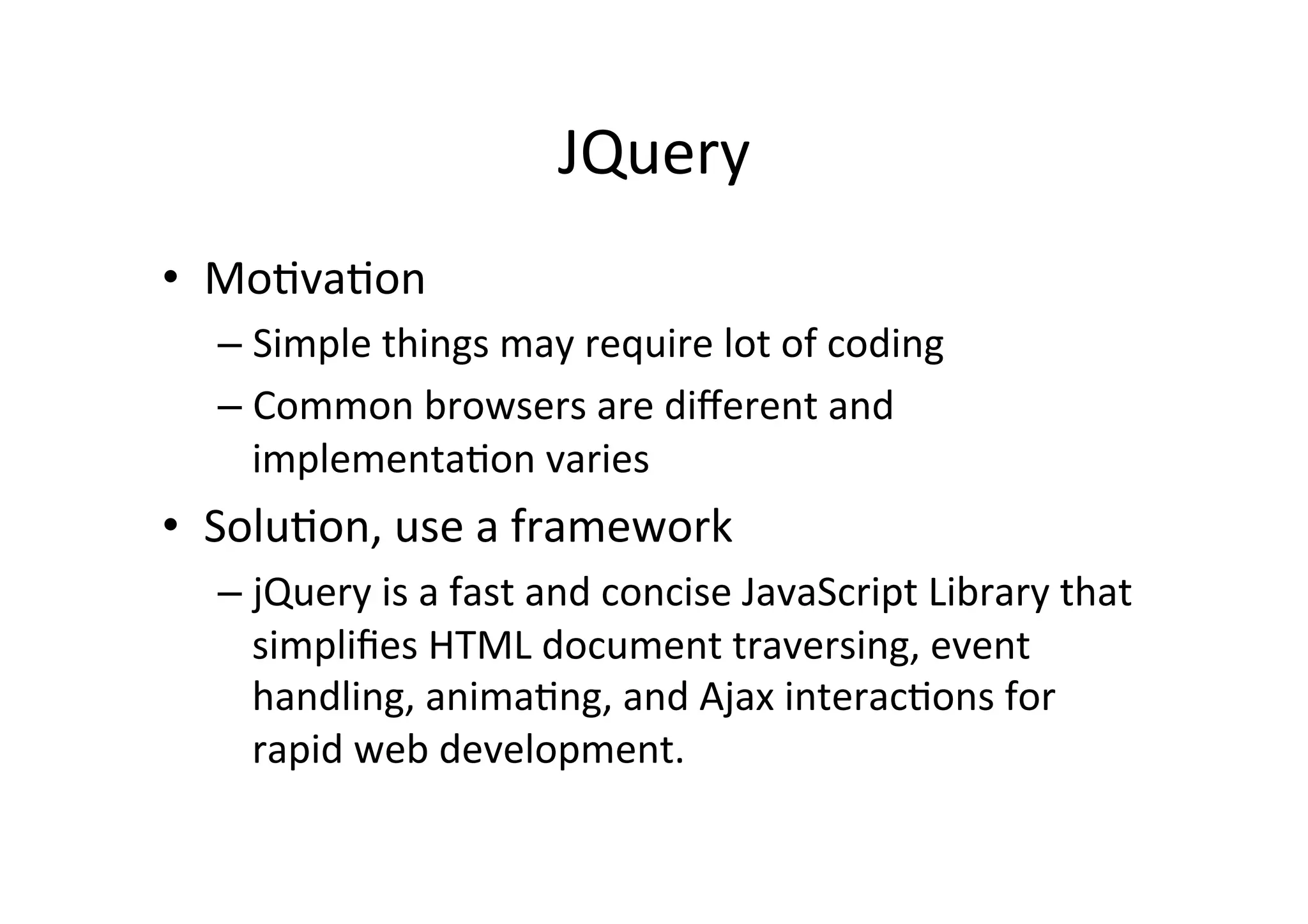
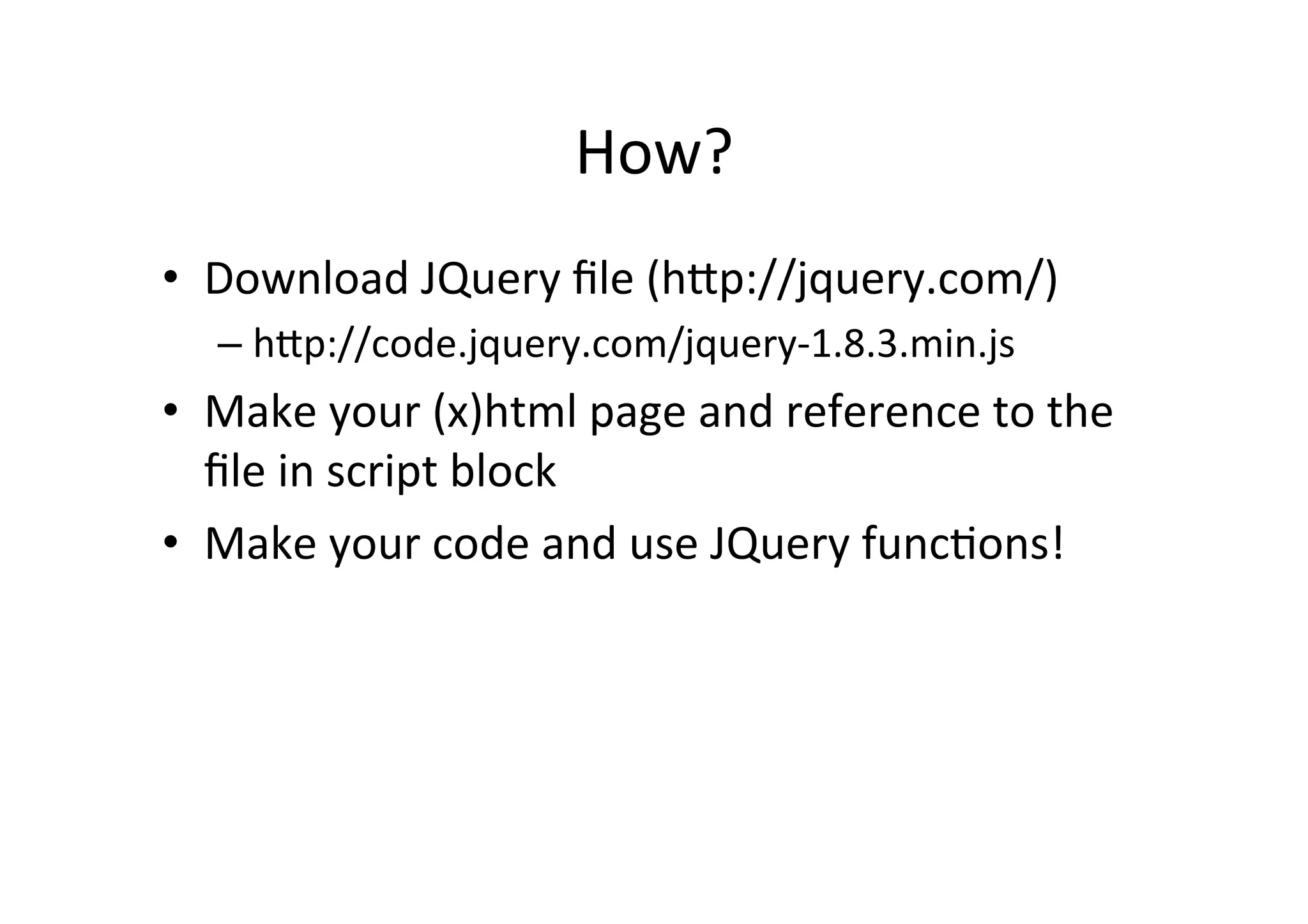
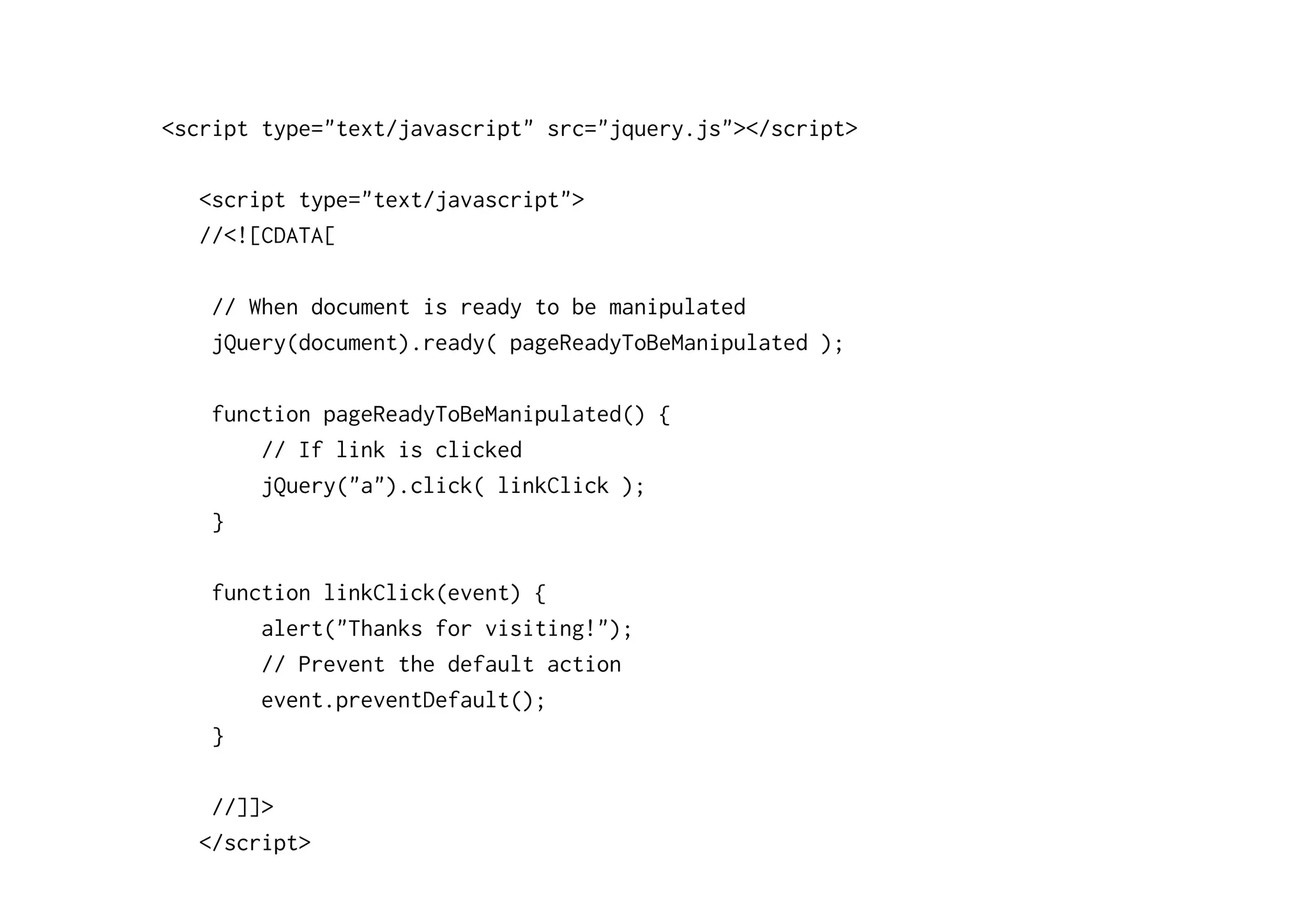
![<script type="text/javascript" src="jquery.js"></script> <script type="text/javascript"> //<![CDATA[ // When document is ready to be manipulated jQuery(document).ready( pageReadyToBeManipulated ); function pageReadyToBeManipulated() { // If link is clicked jQuery("a").click( linkClick ); } function linkClick(event) { alert("Thanks for visiting!"); // Prevent the default action event.preventDefault(); } //]]> </script>](https://image.slidesharecdn.com/00-advanced-intro-to-js-all-recovered-141201020204-conversion-gate02/75/Advanced-JavaScript-Development-166-2048.jpg)
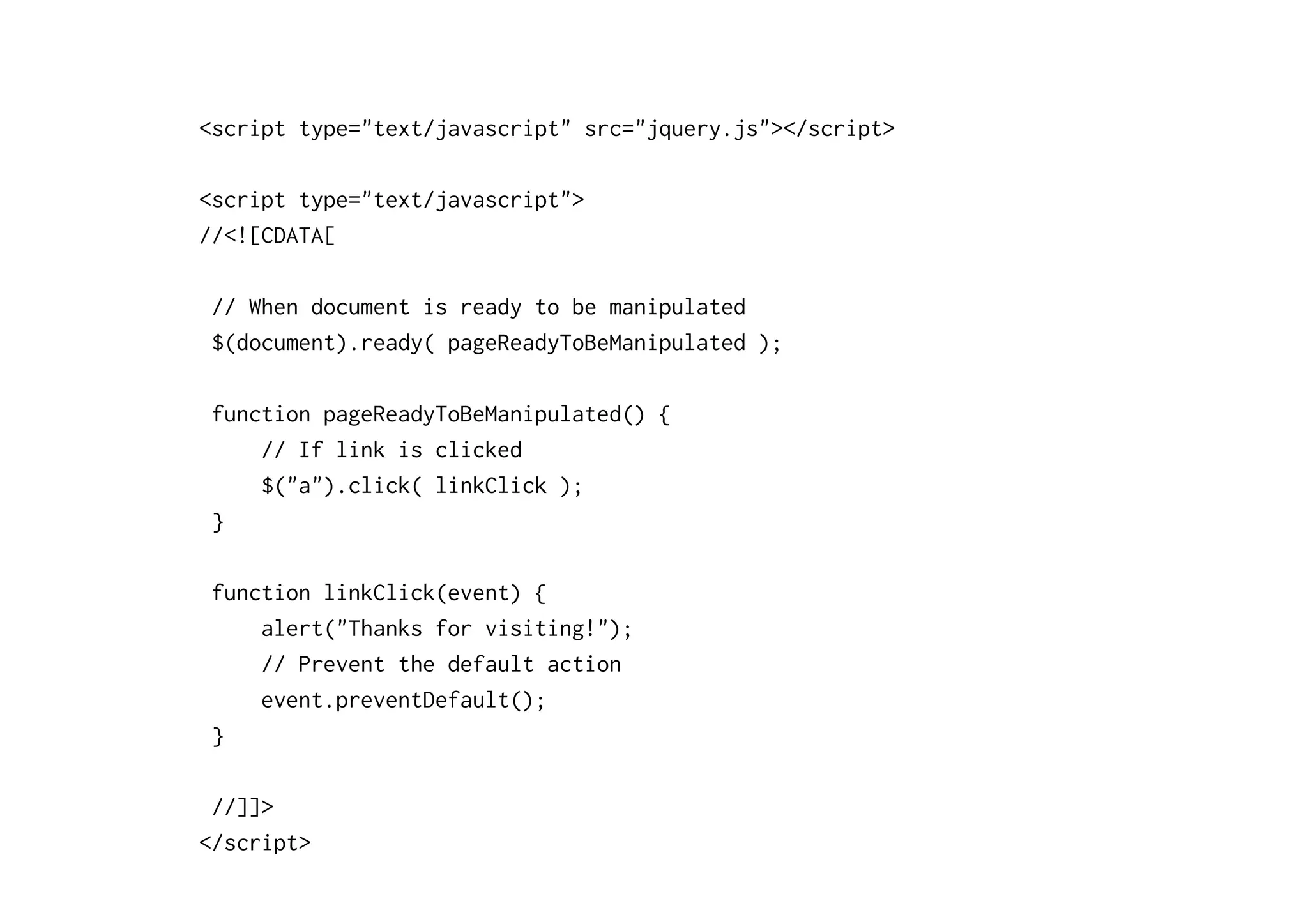
![<script type="text/javascript" src="jquery.js"></script> <script type="text/javascript"> //<![CDATA[ // When document is ready to be manipulated $(document).ready( pageReadyToBeManipulated ); function pageReadyToBeManipulated() { // If link is clicked $("a").click( linkClick ); } function linkClick(event) { alert("Thanks for visiting!"); // Prevent the default action event.preventDefault(); } //]]> </script>](https://image.slidesharecdn.com/00-advanced-intro-to-js-all-recovered-141201020204-conversion-gate02/75/Advanced-JavaScript-Development-168-2048.jpg)
![// USING ANONYMOUS FUNCTIONS <script type="text/javascript" src="jquery.js"></script> <script type="text/javascript"> //<![CDATA[ $(document).ready(function(){ $("a").click(function(event){ alert("Thanks for visiting!"); event.preventDefault(); }); }); //]]> </script>](https://image.slidesharecdn.com/00-advanced-intro-to-js-all-recovered-141201020204-conversion-gate02/75/Advanced-JavaScript-Development-169-2048.jpg)
![// EVEN SHORTER SYNTAX, FORGET THE DOCUMENT PARAMETER <script type="text/javascript" src="jquery.js"></script> <script type="text/javascript"> //<![CDATA[ $().ready(function(){ $("a").click(function(event){ alert("Thanks for visiting!"); event.preventDefault(); }); }); //]]> </script>](https://image.slidesharecdn.com/00-advanced-intro-to-js-all-recovered-141201020204-conversion-gate02/75/Advanced-JavaScript-Development-170-2048.jpg)
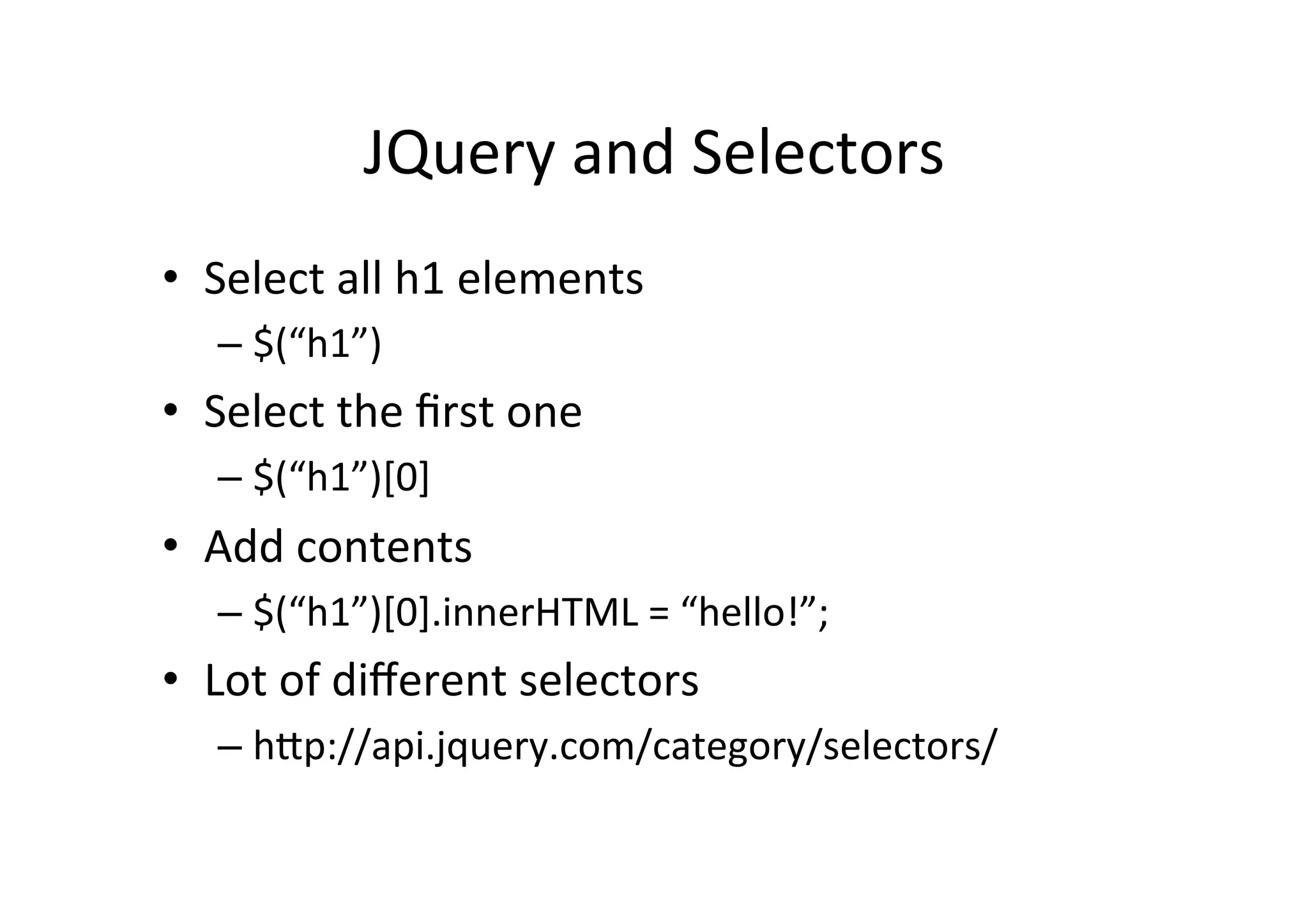
![JQuery and Selectors • Select all h1 elements – $(“h1”) • Select the first one – $(“h1”)[0] • Add contents – $(“????”)[0].innerHTML = “hello!”; • Lot of different selectors – h?p://api.jquery.com/category/selectors/](https://image.slidesharecdn.com/00-advanced-intro-to-js-all-recovered-141201020204-conversion-gate02/75/Advanced-JavaScript-Development-172-2048.jpg)
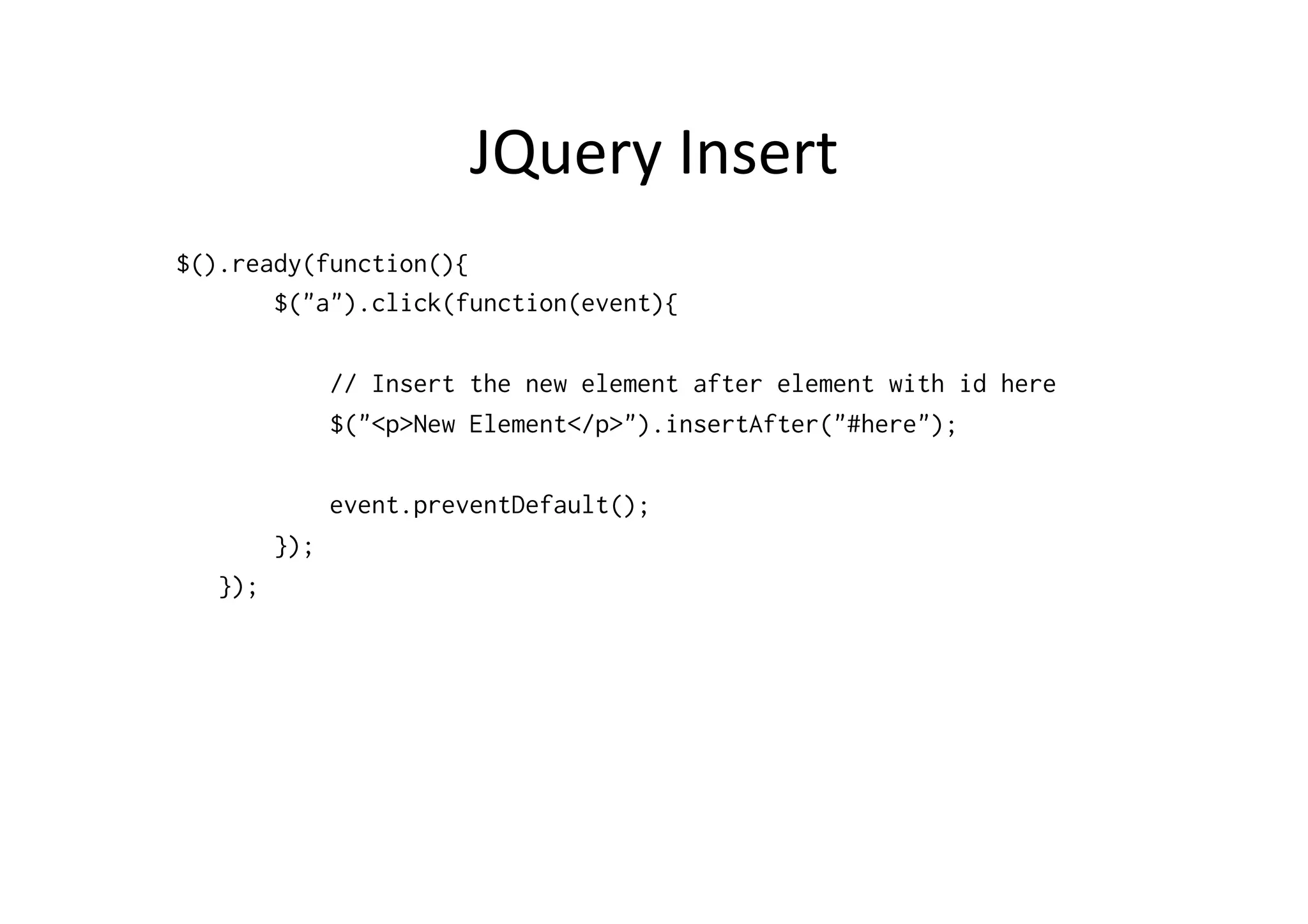
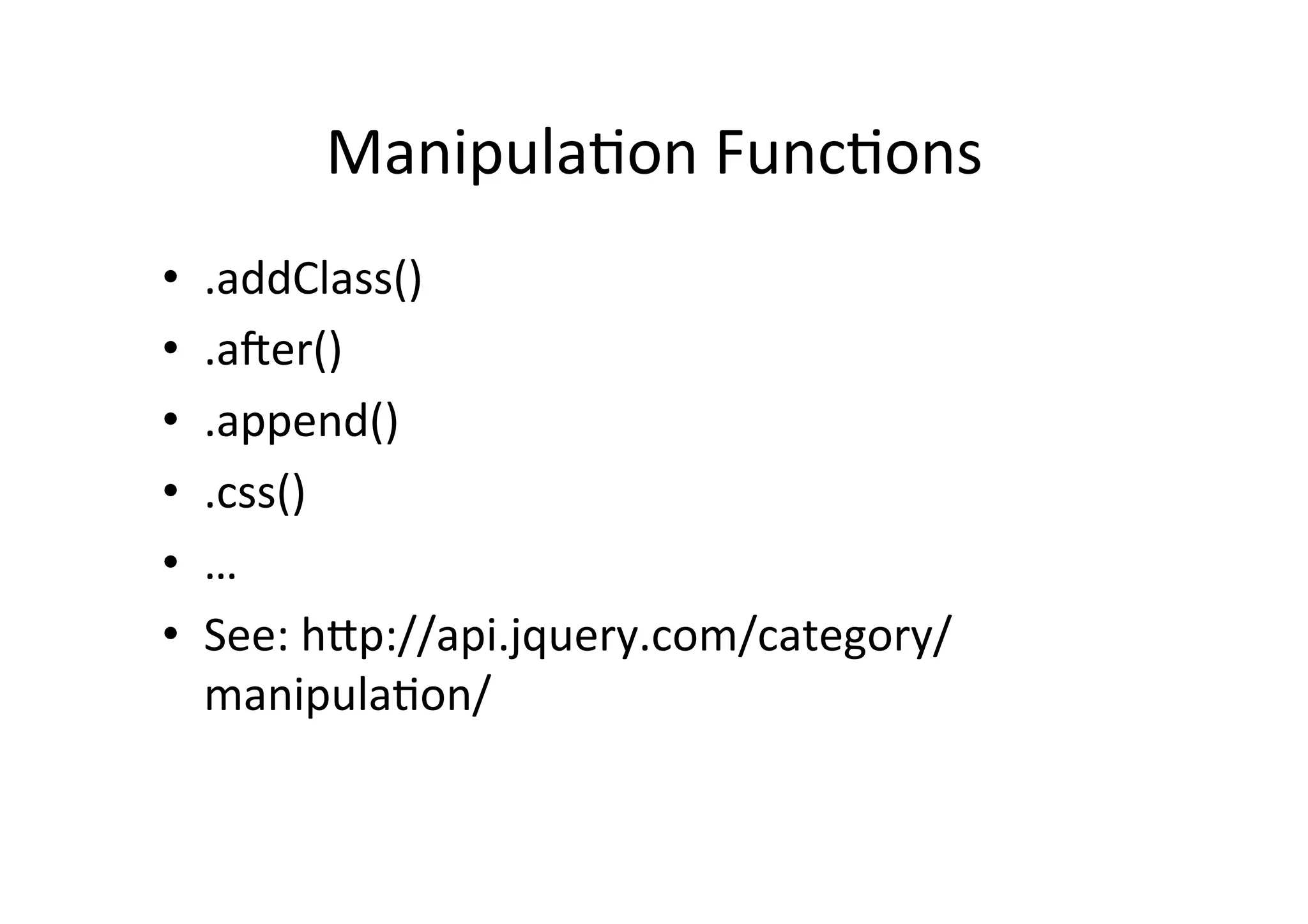
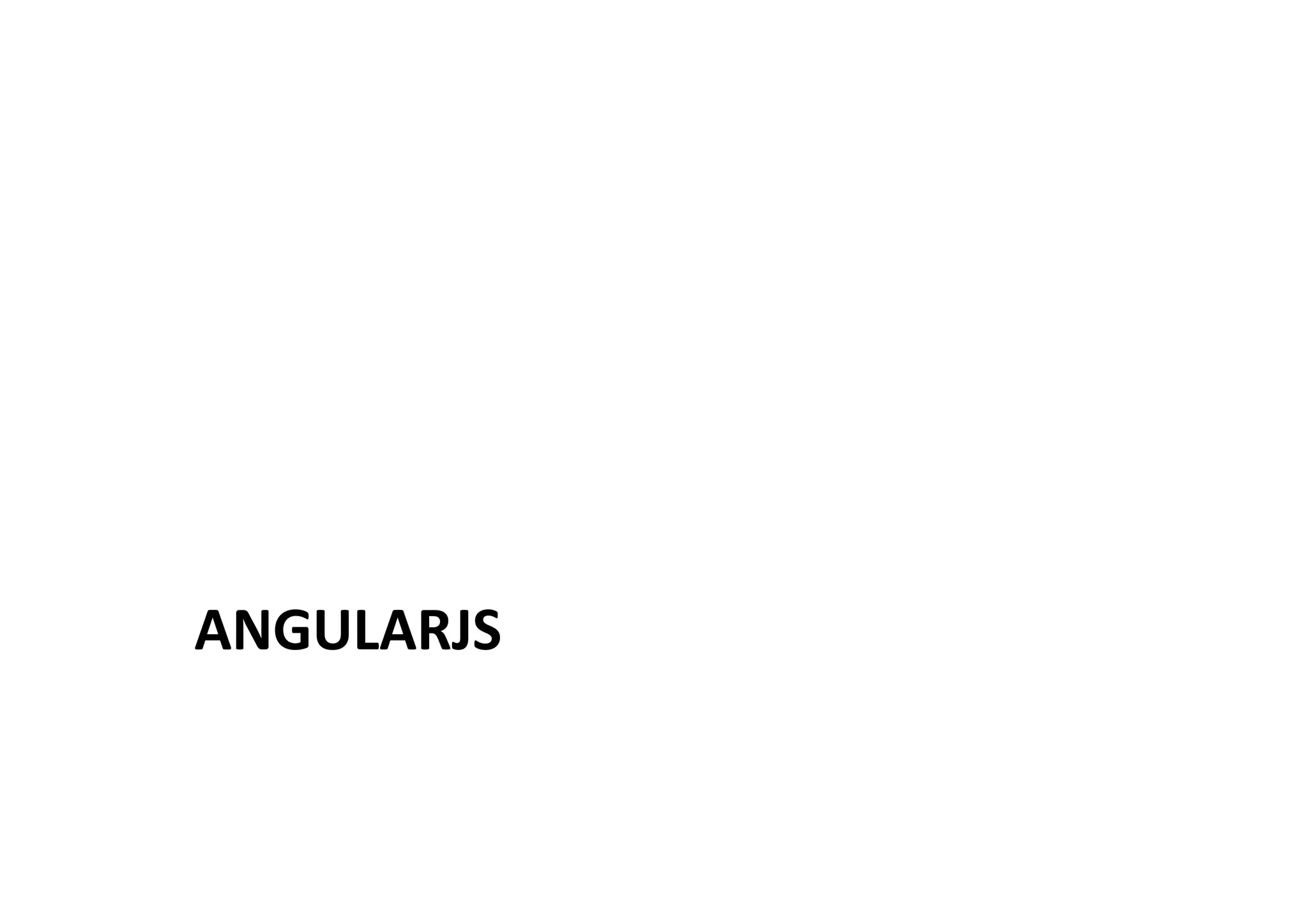
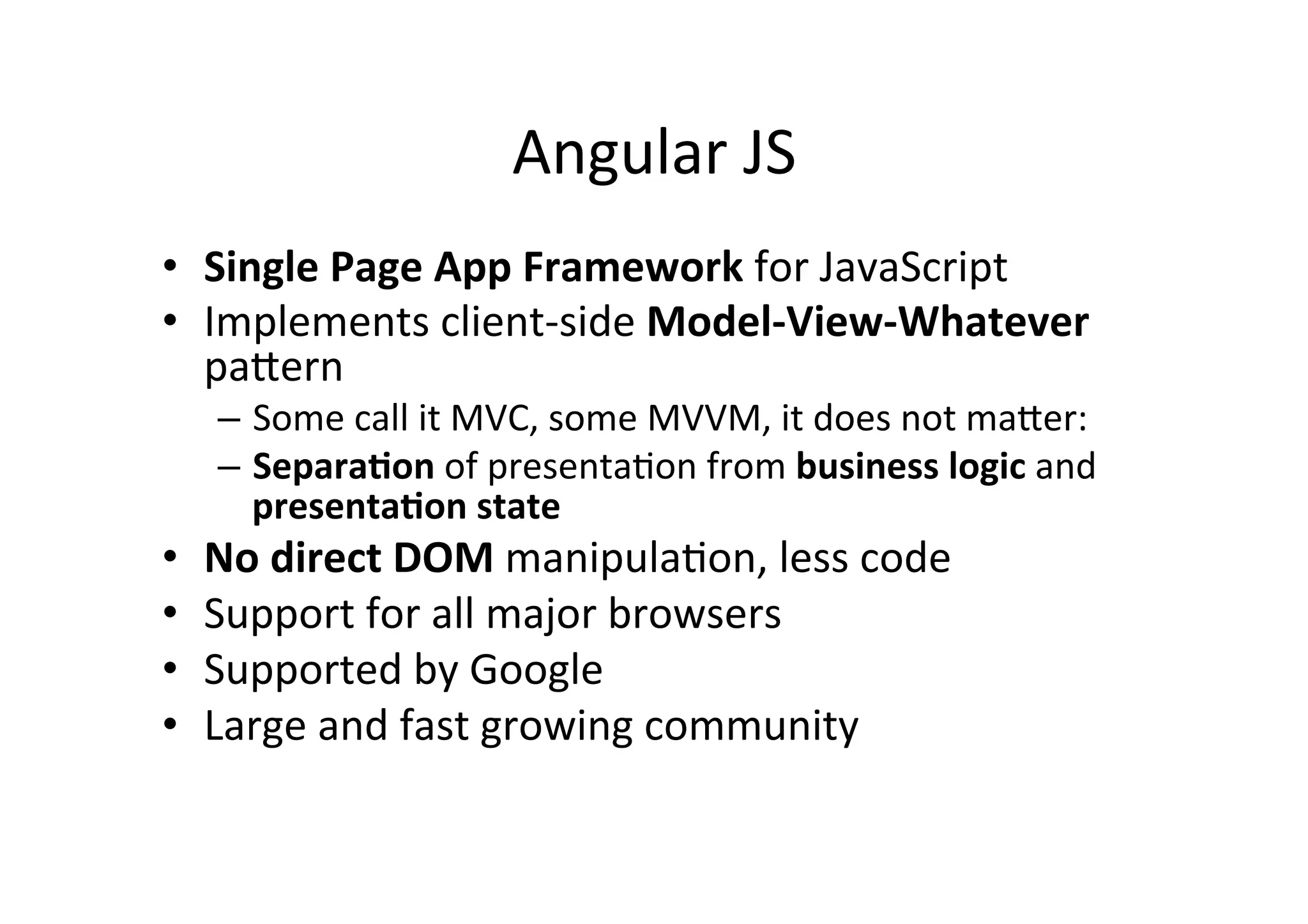
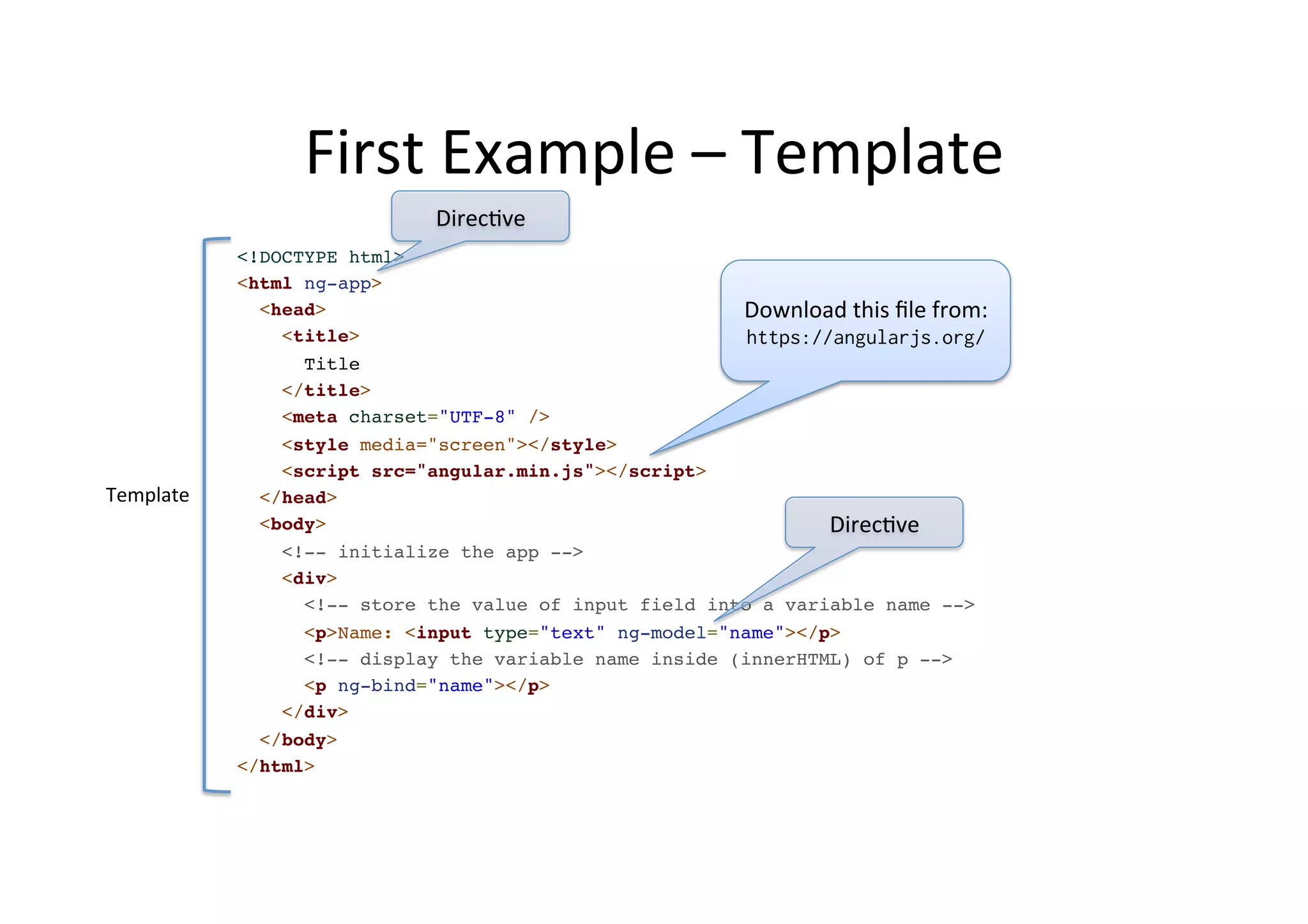
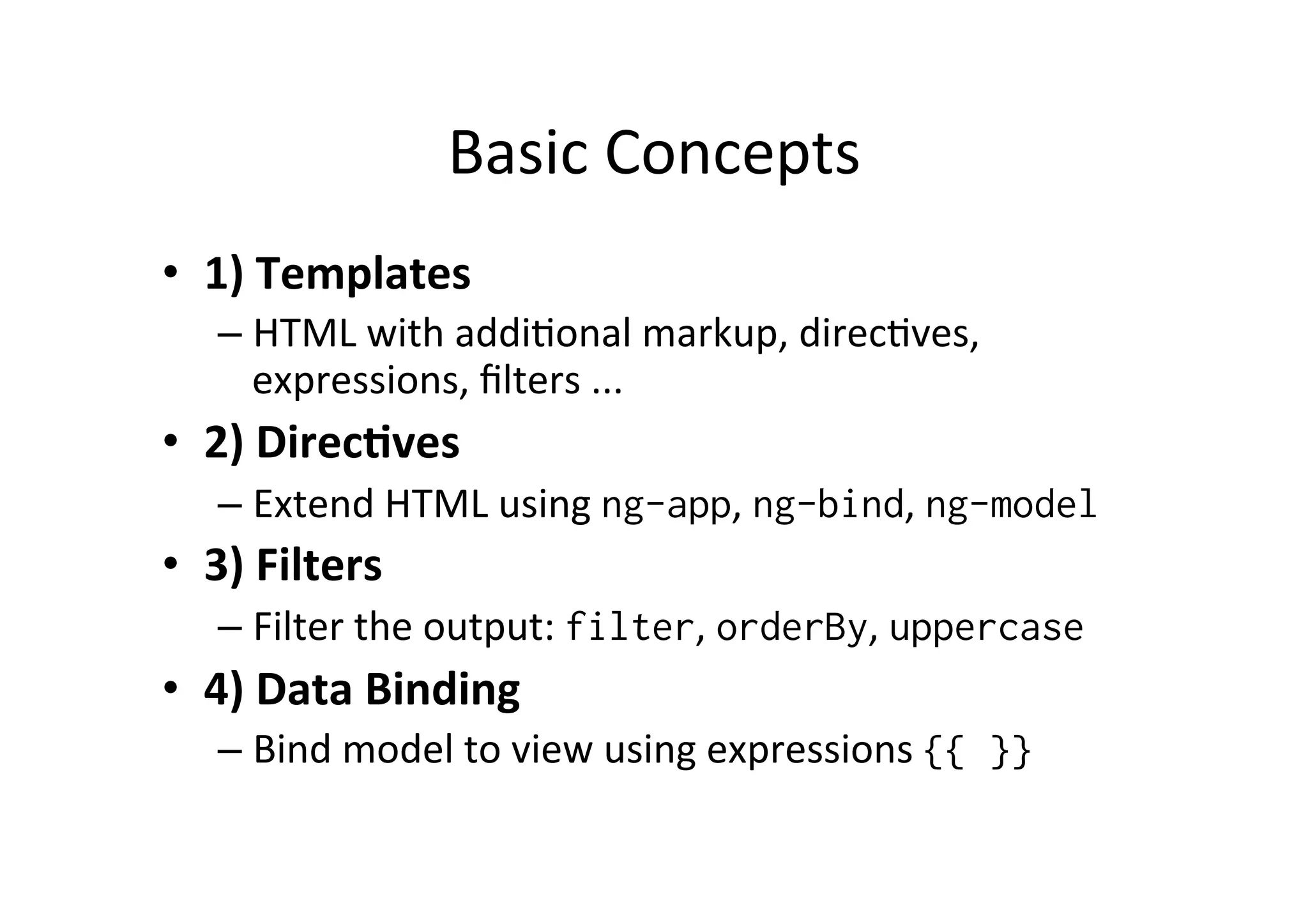
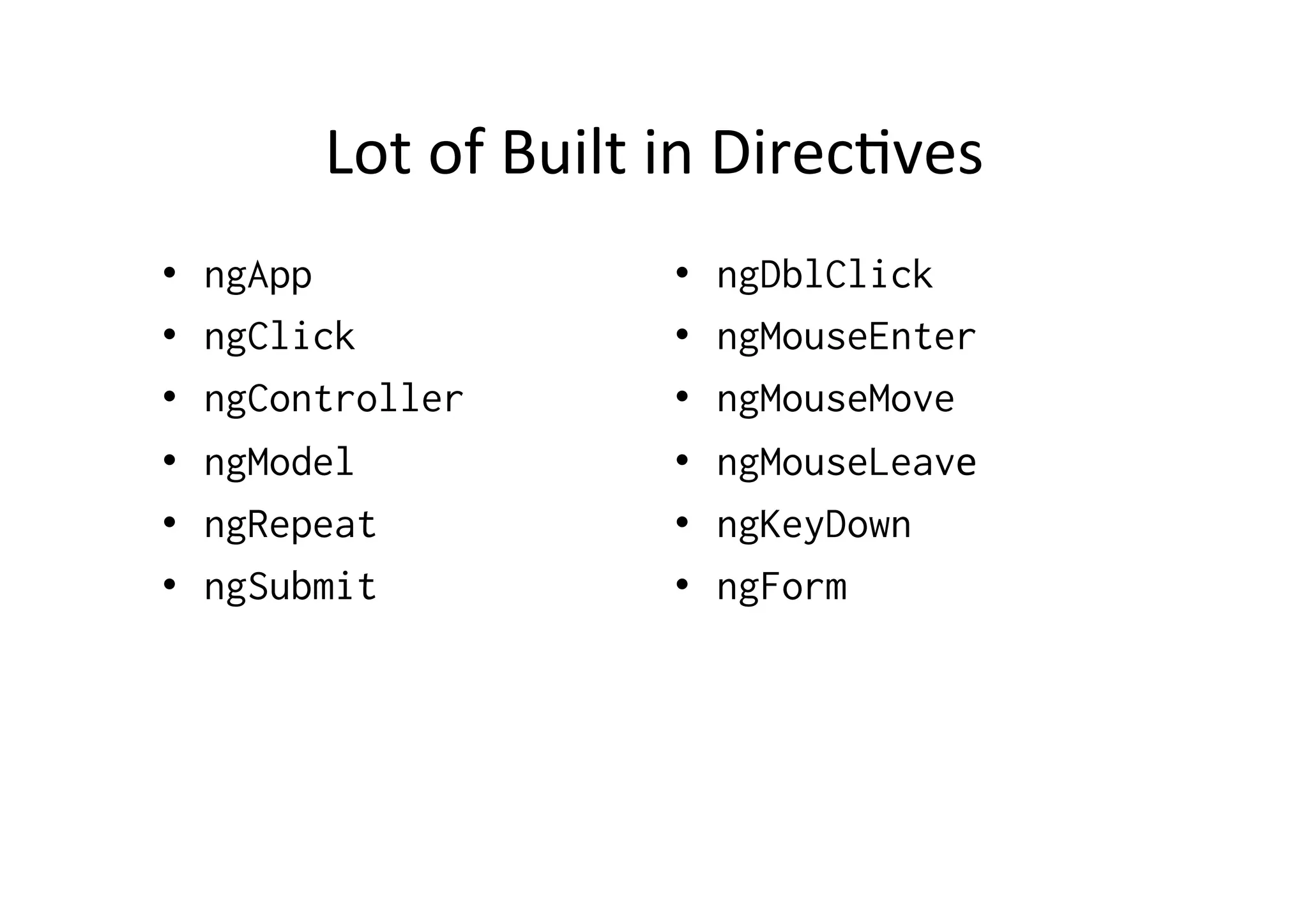
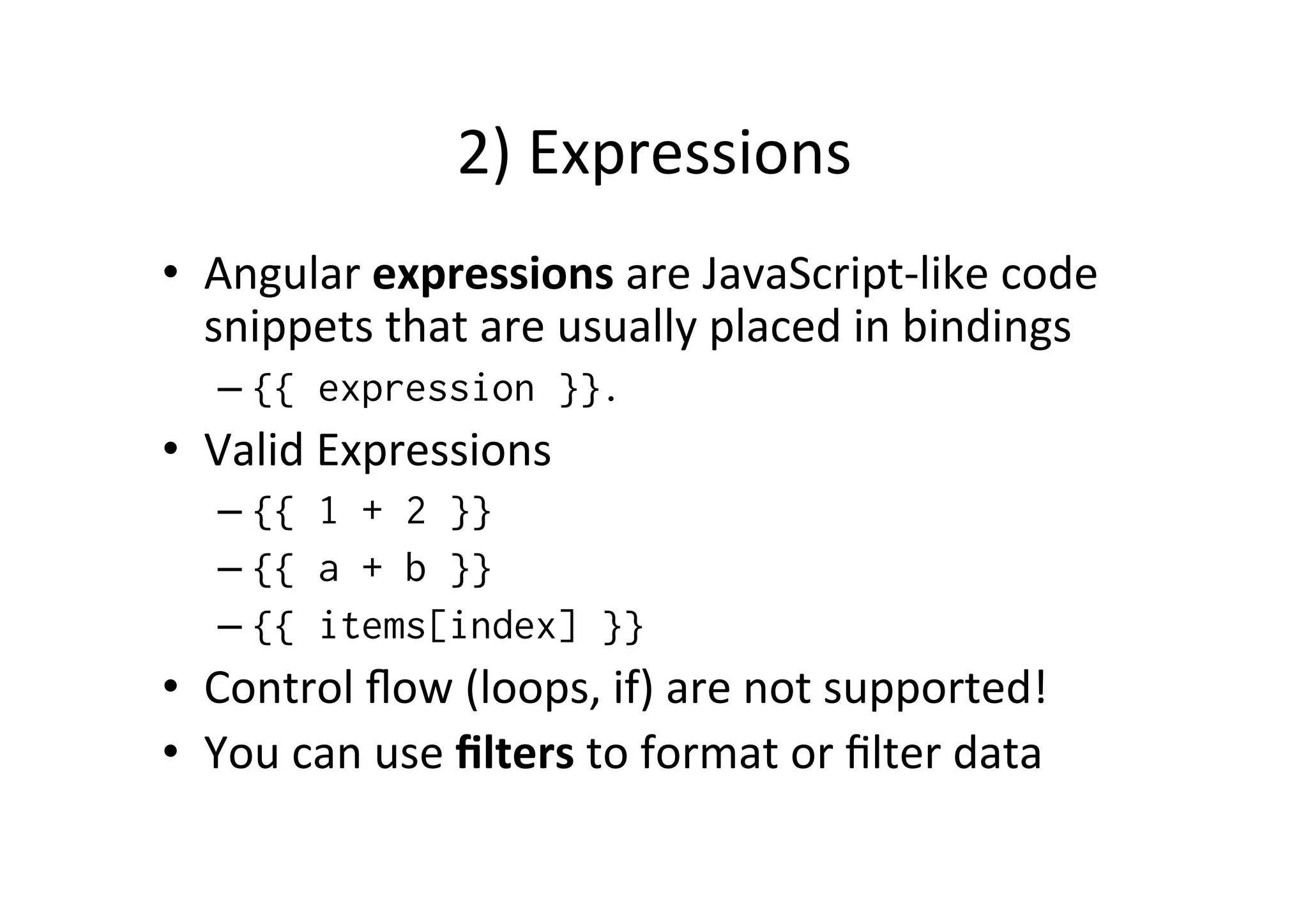
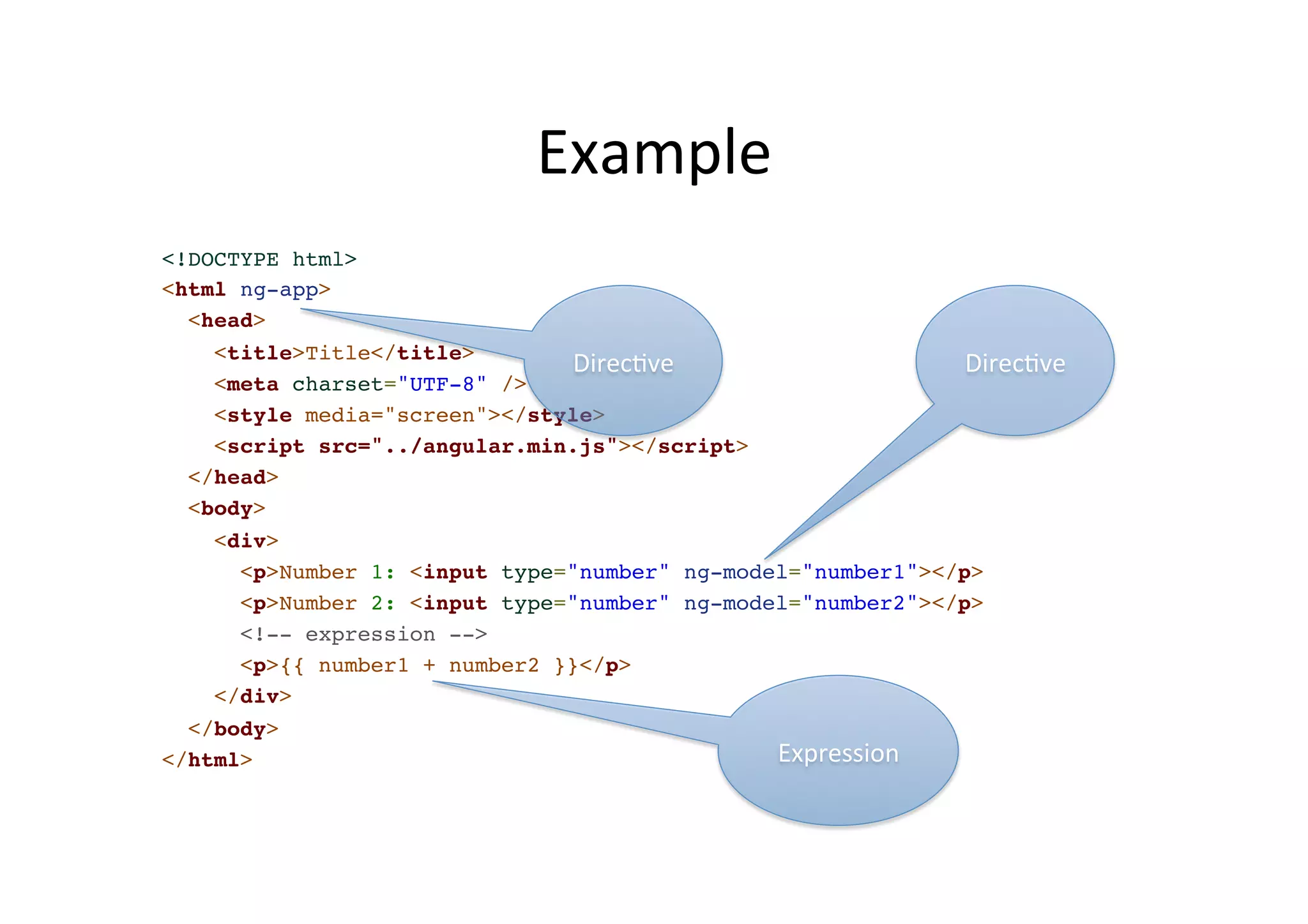
![2) Expressions • Angular expressions are JavaScript-‐like code snippets that are usually placed in bindings – {{ expression }}. • Valid Expressions – {{ 1 + 2 }} – {{ a + b }} – {{ items[index] }} • Control flow (loops, if) are not supported! • You can use filters to format or filter data](https://image.slidesharecdn.com/00-advanced-intro-to-js-all-recovered-141201020204-conversion-gate02/75/Advanced-JavaScript-Development-182-2048.jpg)
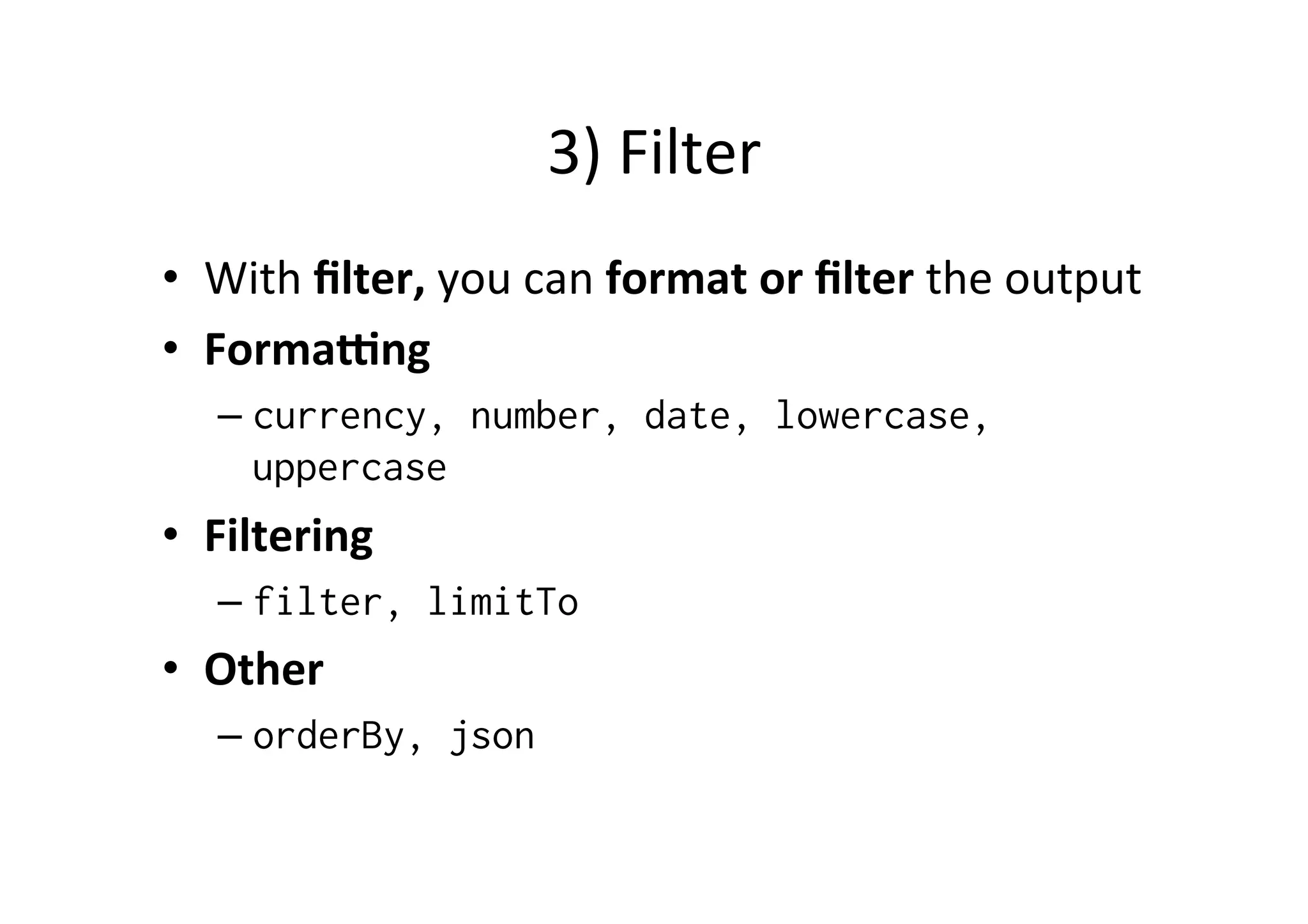
![ng-‐init and ng-‐repeat direc>ves <html data-ng-app=""> <head> <title>Title</title> <meta charset="UTF-8" /> <script src="../angular.min.js" type="text/javascript"> </script> </head> <body> <div data-ng-init="names = ['Jack', 'John', 'Tina']"> <h1>Cool loop!</h1> <ul> <li data-ng-repeat="name in names">{{ name }}</li> </ul> </div> </body> </html>](https://image.slidesharecdn.com/00-advanced-intro-to-js-all-recovered-141201020204-conversion-gate02/75/Advanced-JavaScript-Development-184-2048.jpg)
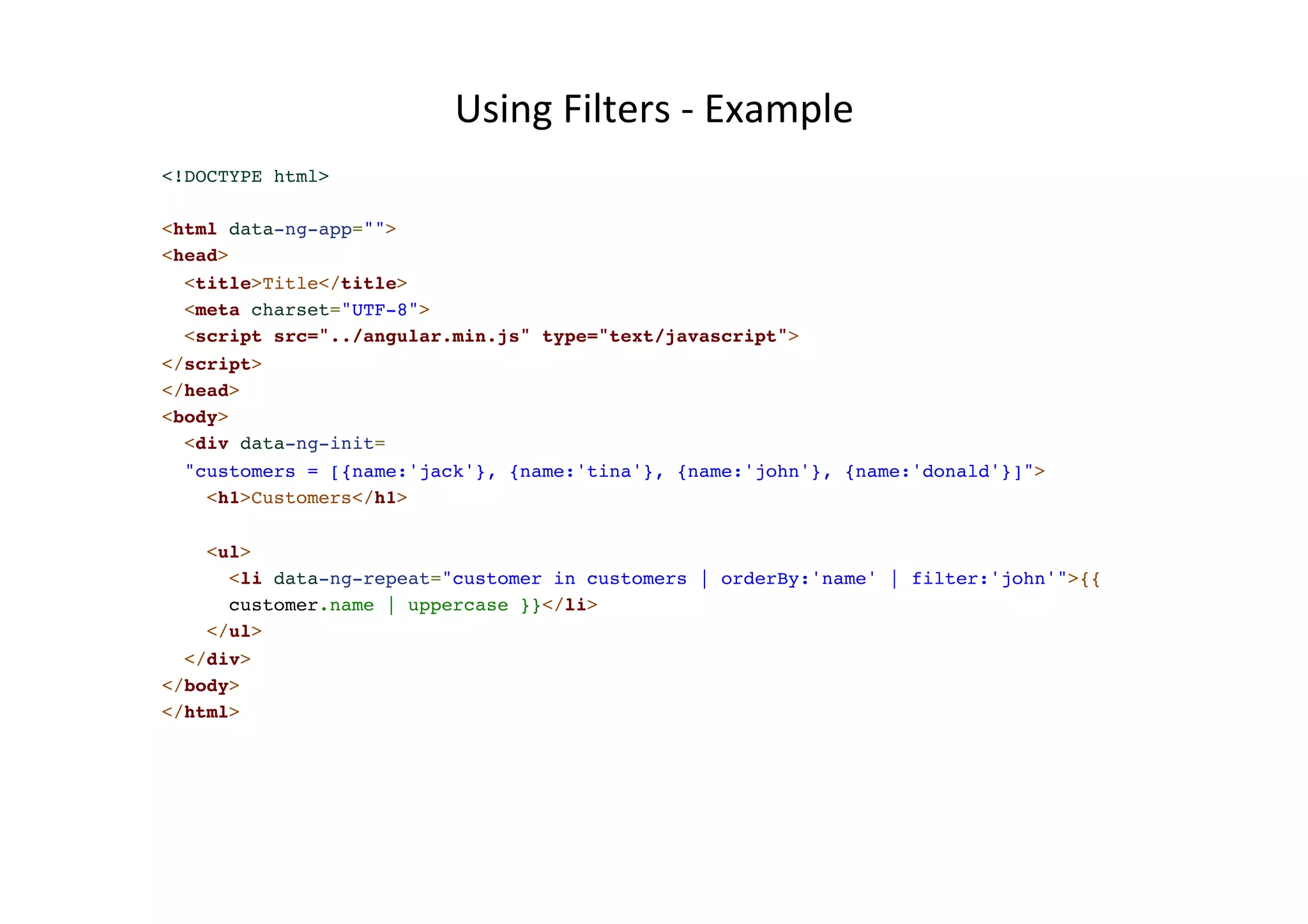
![Using Filters -‐ Example <!DOCTYPE html> <html data-ng-app=""> <head> <title>Title</title> <meta charset="UTF-8"> <script src="../angular.min.js" type="text/javascript"> </script> </head> <body> <div data-ng-init="customers = [{name:'jack'}, {name:'tina'}]"> <h1>Cool loop!</h1> <ul> <li data-ng-repeat="customer in customers | orderBy:'name'"> {{ customer.name | uppercase }}</li> </ul> </div> </body> </html> Filter Filter](https://image.slidesharecdn.com/00-advanced-intro-to-js-all-recovered-141201020204-conversion-gate02/75/Advanced-JavaScript-Development-186-2048.jpg)
![Using Filters -‐ Example <!DOCTYPE html> <html data-ng-app=""> <head> <title>Title</title> <meta charset="UTF-8"> <script src="../angular.min.js" type="text/javascript"> </script> </head> <body> <div data-ng-init= "customers = [{name:'jack'}, {name:'tina'}, {name:'john'}, {name:'donald'}]"> <h1>Customers</h1> <ul> <li data-ng-repeat="customer in customers | orderBy:'name' | filter:'john'">{{ customer.name | uppercase }}</li> </ul> </div> </body> </html>](https://image.slidesharecdn.com/00-advanced-intro-to-js-all-recovered-141201020204-conversion-gate02/75/Advanced-JavaScript-Development-187-2048.jpg)
![Using Filters – User Input Filters the Data <!DOCTYPE html> <html data-ng-app=""> <head> <title>Title</title> <meta charset="UTF-8"> <script src="../angular.min.js" type="text/javascript"> </script> </head> <body> <div data-ng-init= "customers = [{name:'jack'}, {name:'tina'}, {name:'john'}, {name:'donald'}]"> <h1>Customers</h1> <input type="text" data-ng-model="userInput" /> <ul> <li data-ng-repeat="customer in customers | orderBy:'name' | filter:userInput">{{ customer.name | uppercase }}</li> </ul> </div> </body> </html>](https://image.slidesharecdn.com/00-advanced-intro-to-js-all-recovered-141201020204-conversion-gate02/75/Advanced-JavaScript-Development-188-2048.jpg)
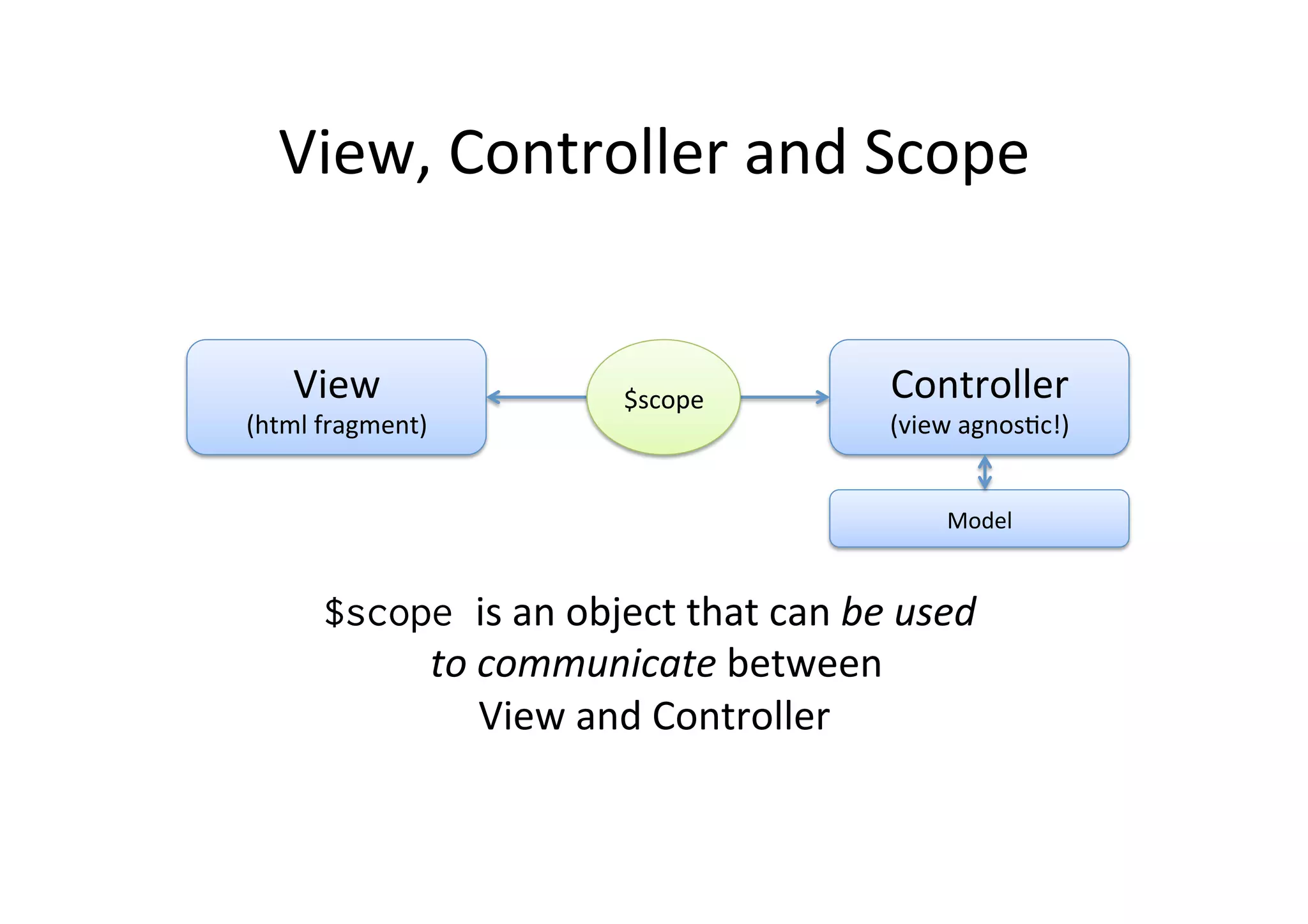
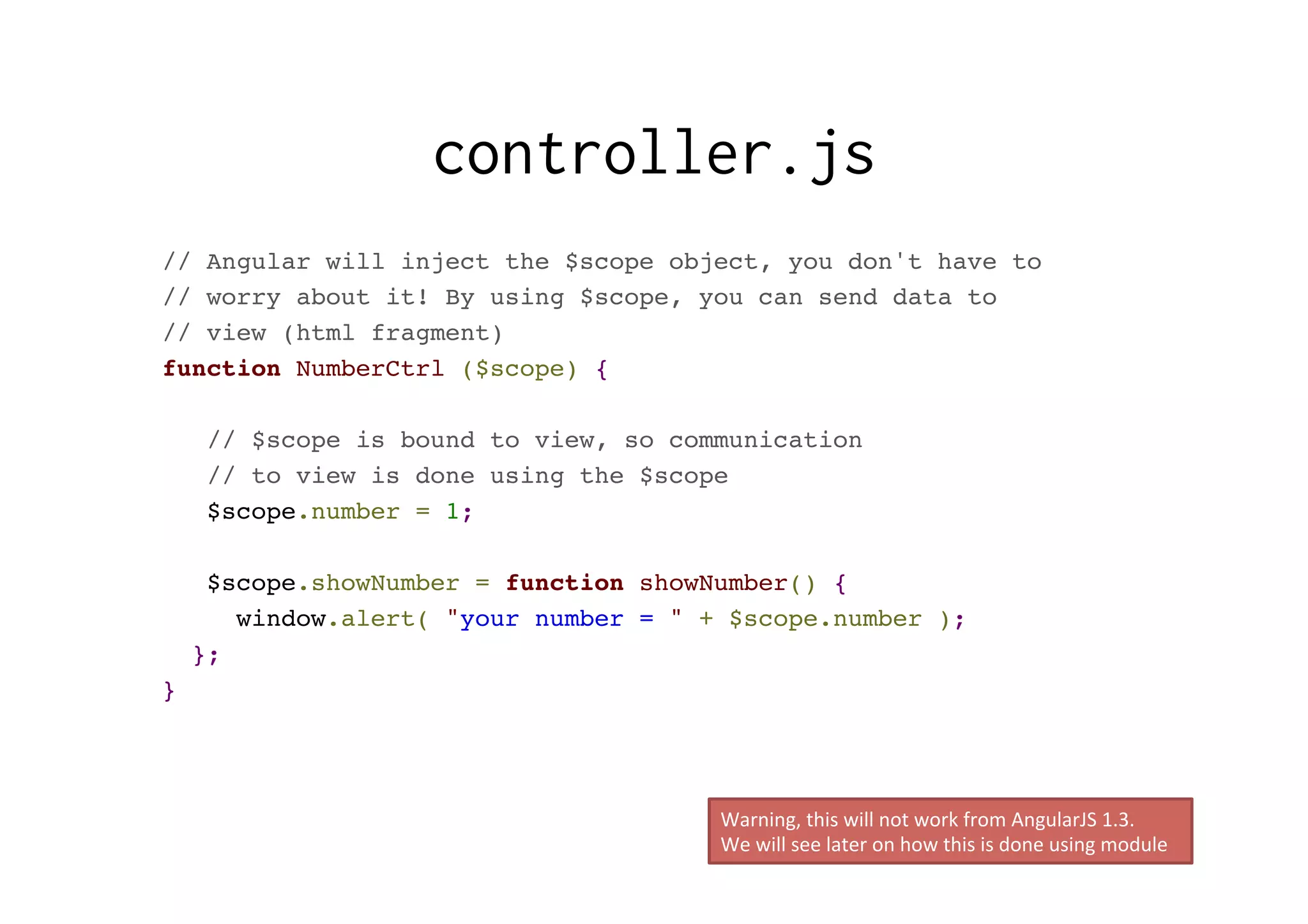
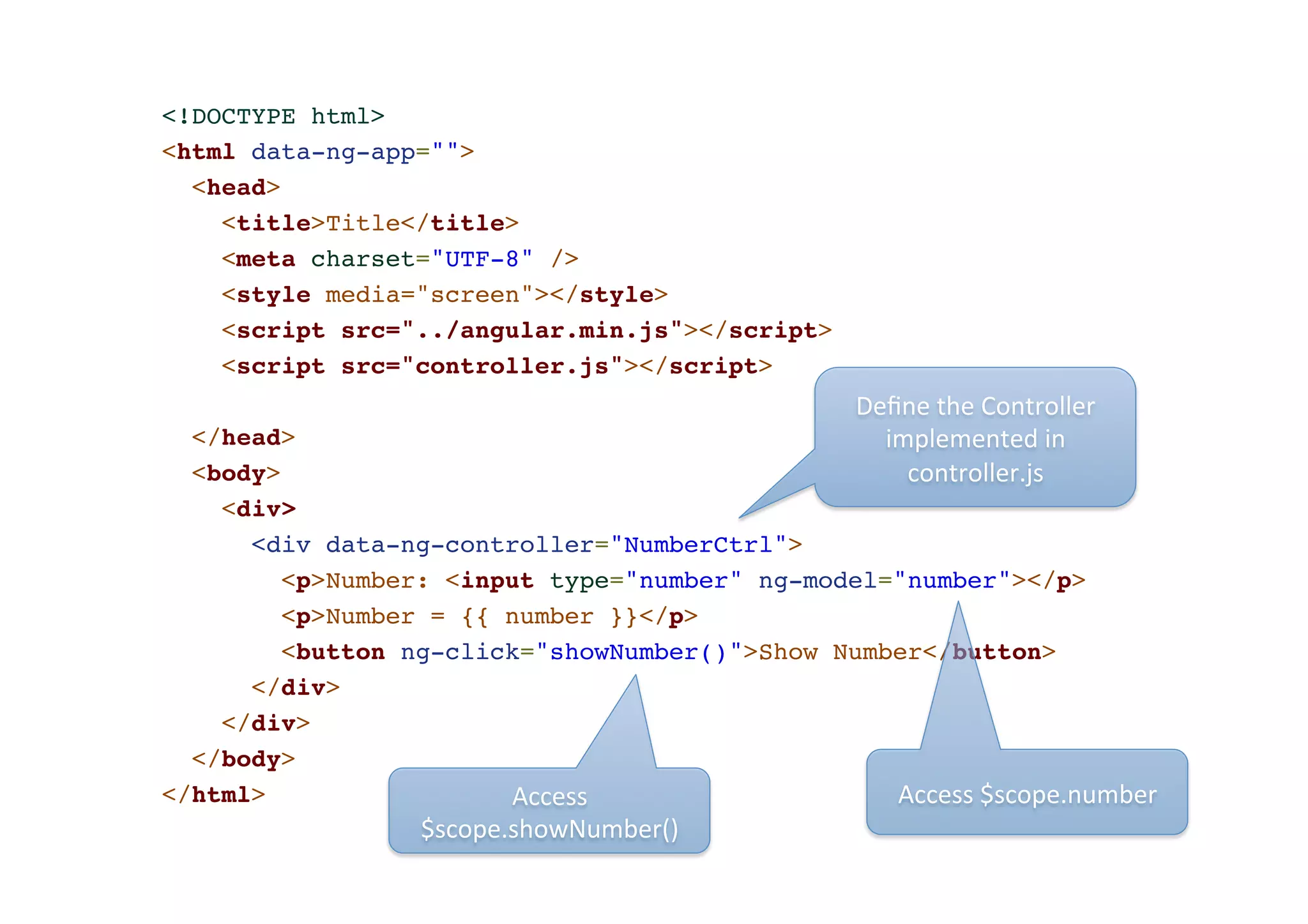
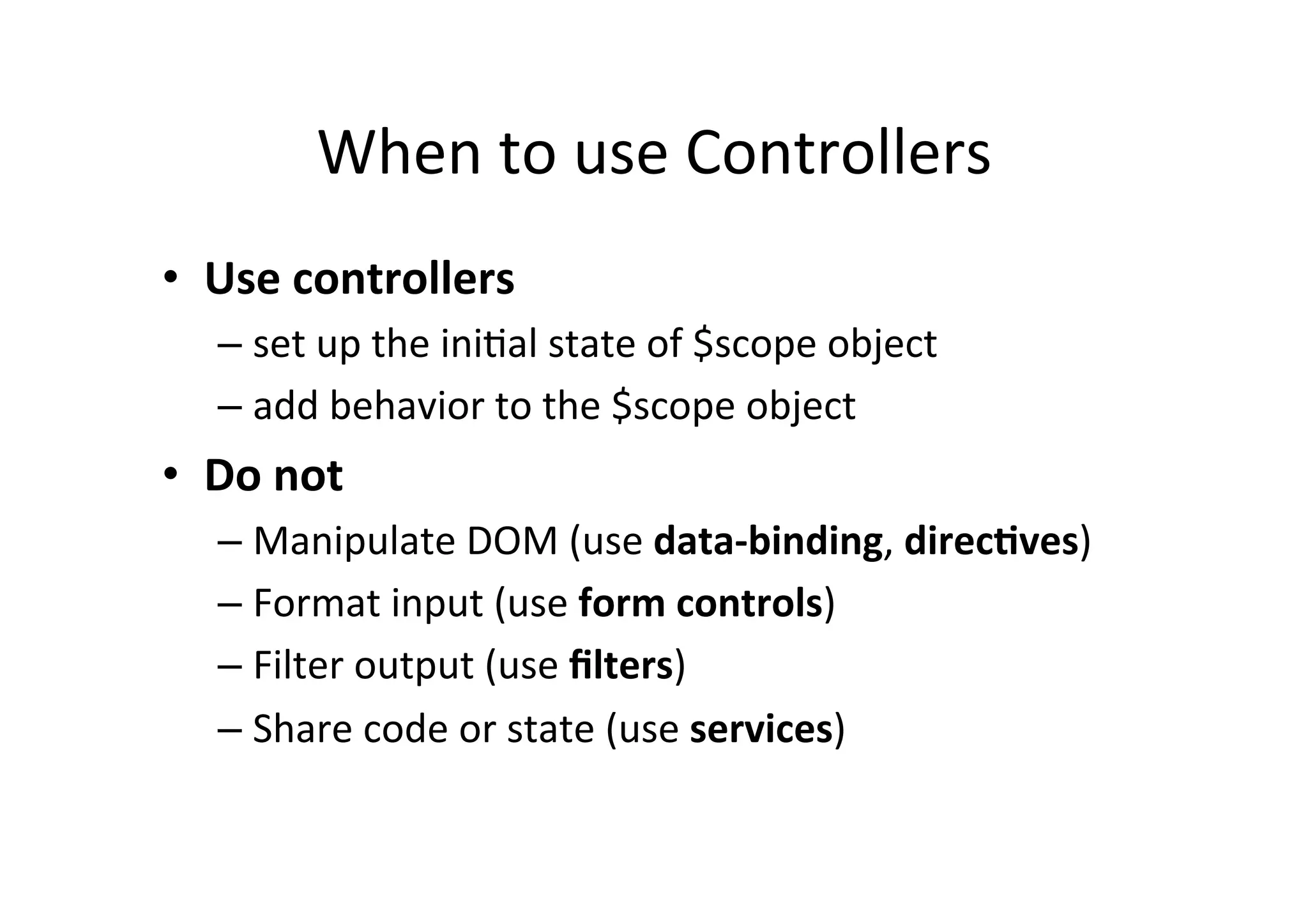

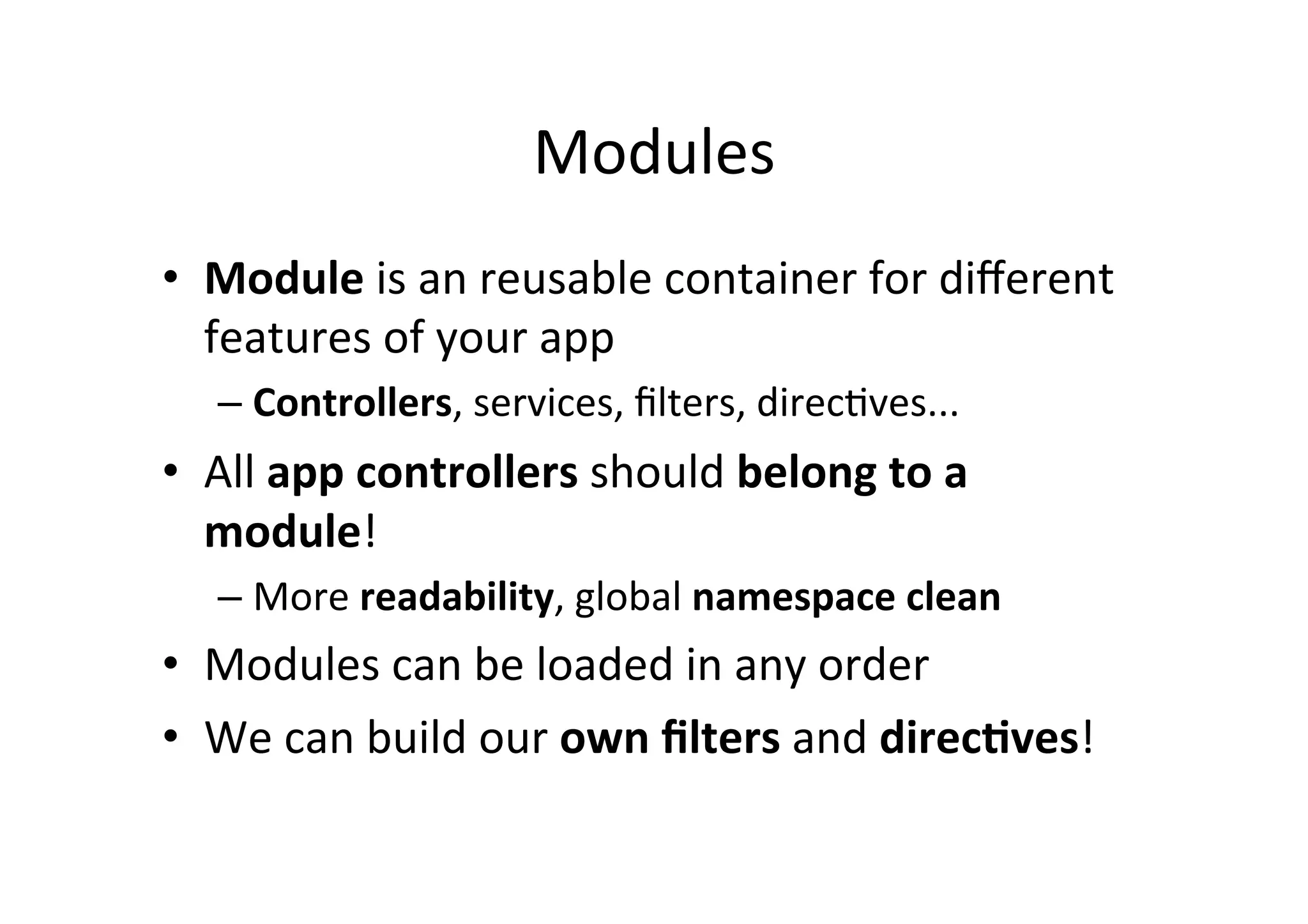
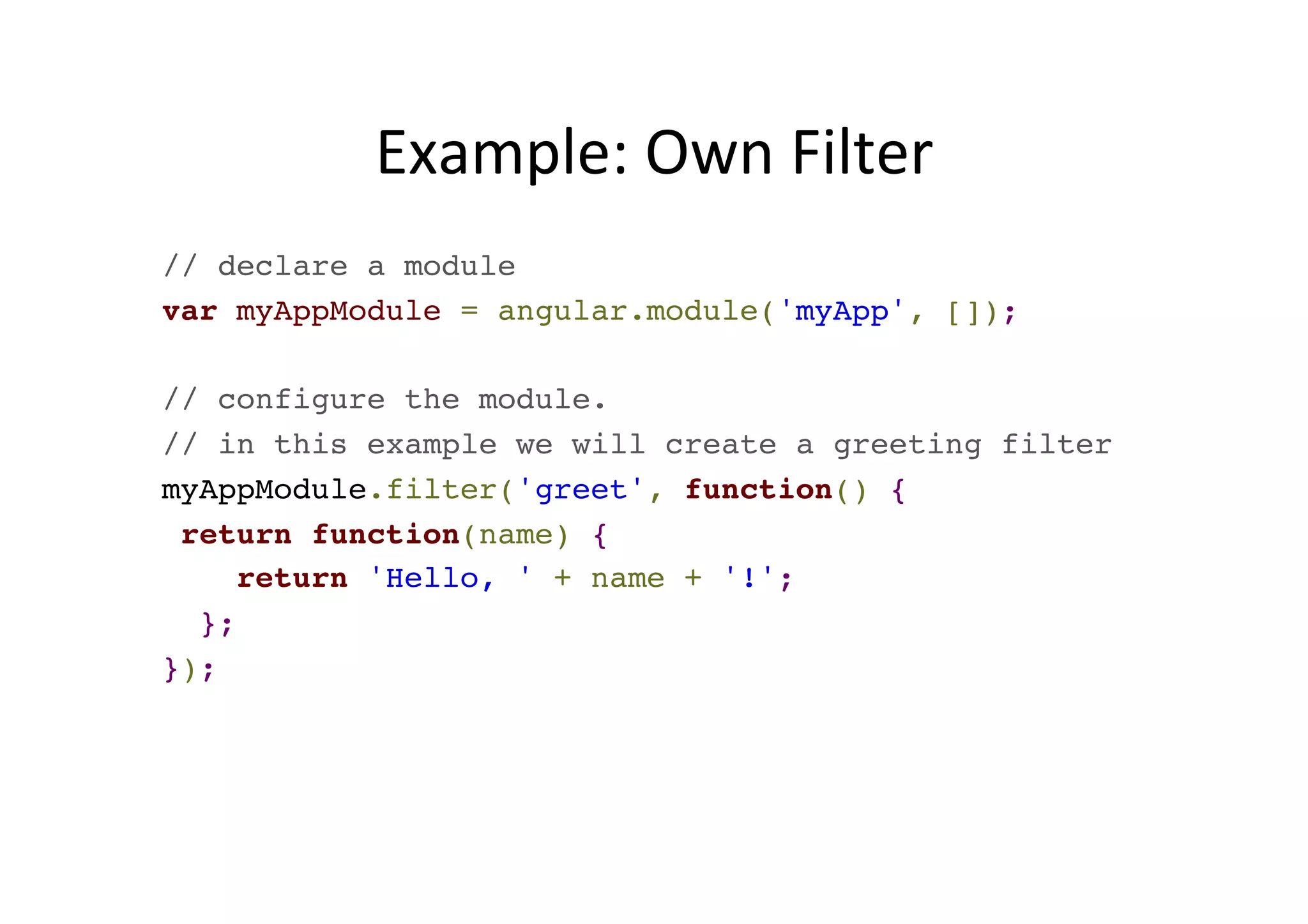
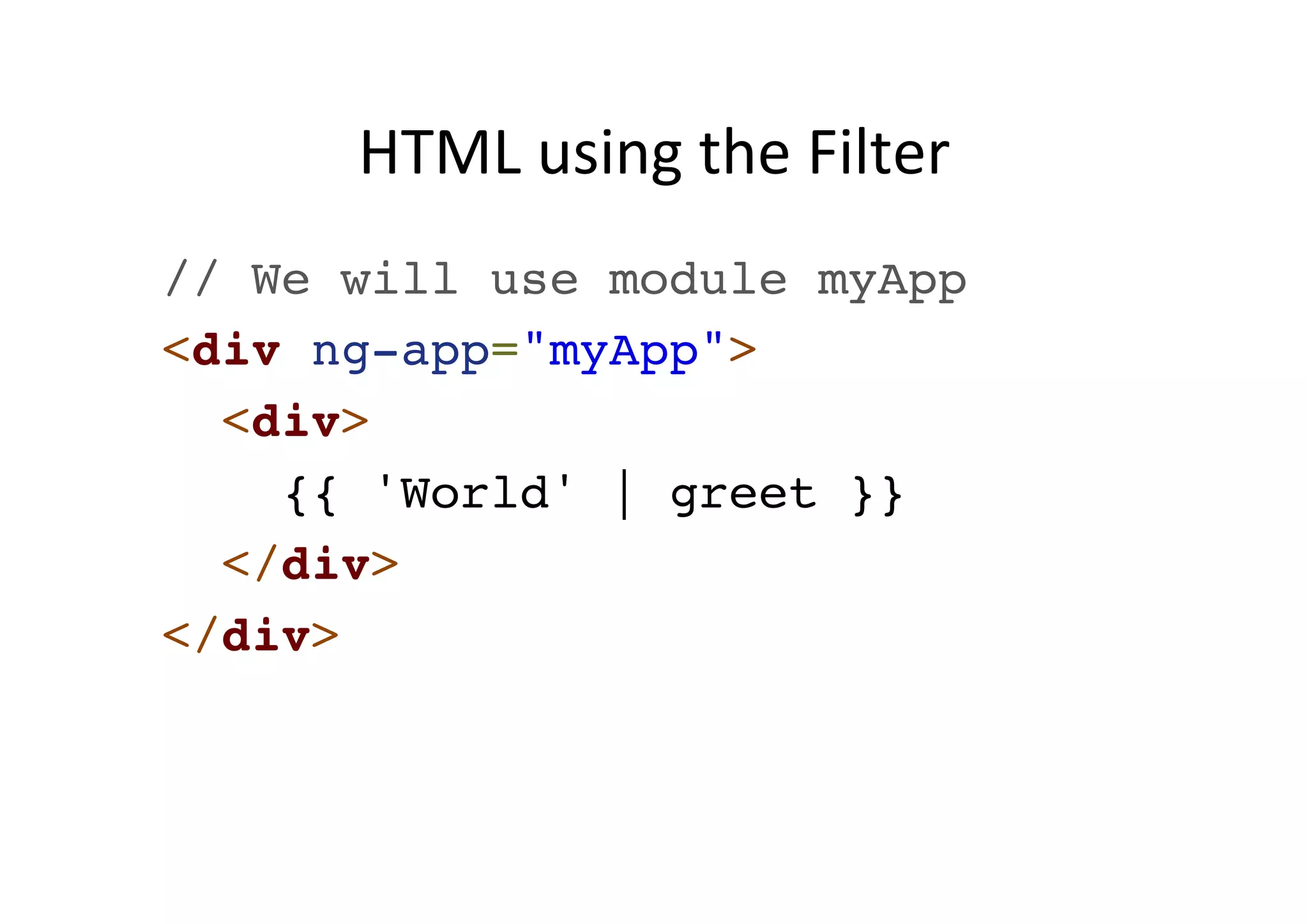
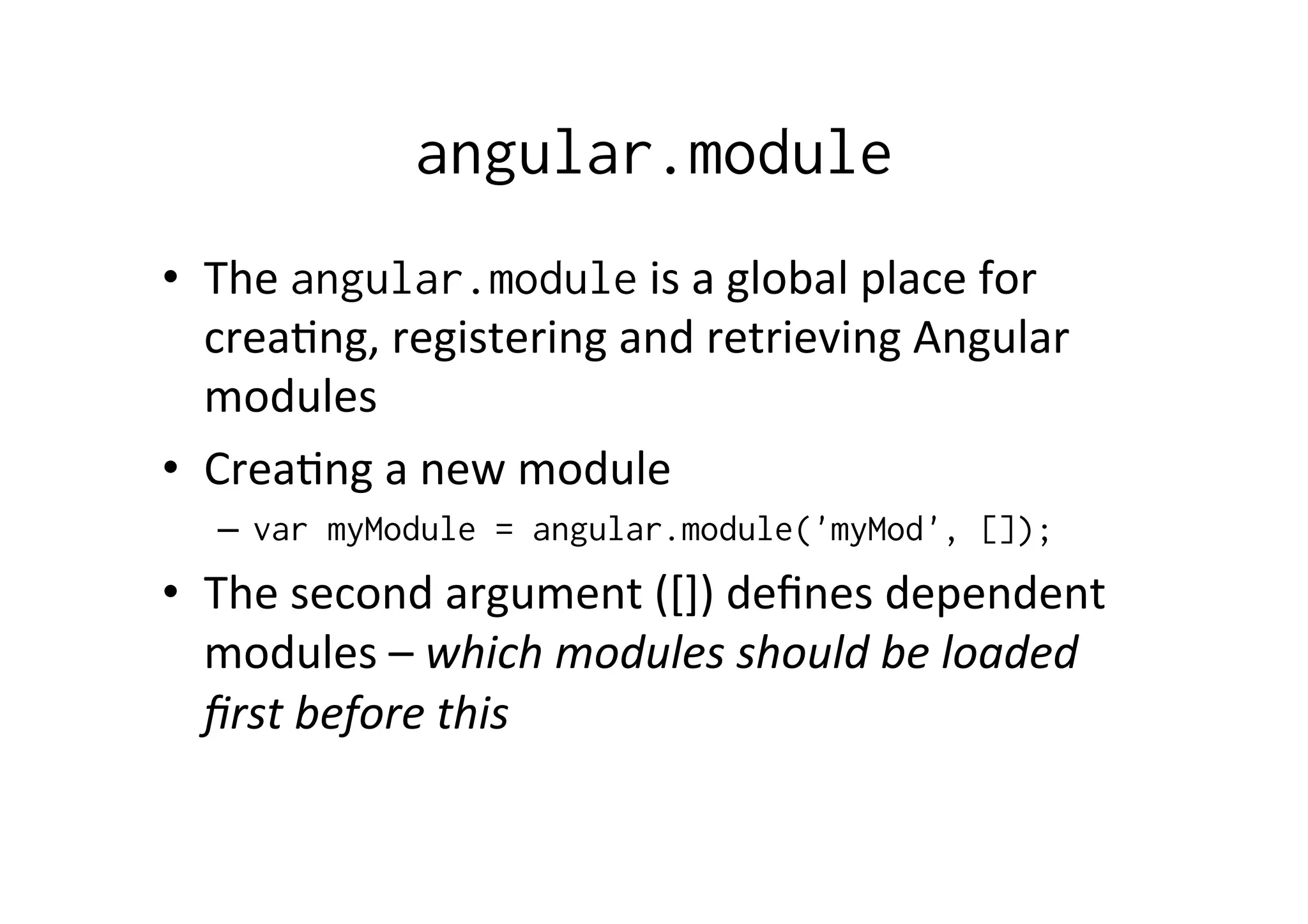
![Example: Own Filter // declare a module var myAppModule = angular.module('myApp', []); // configure the module. // in this example we will create a greeting filter myAppModule.filter('greet', function() { return function(name) { return 'Hello, ' + name + '!'; }; });](https://image.slidesharecdn.com/00-advanced-intro-to-js-all-recovered-141201020204-conversion-gate02/75/Advanced-JavaScript-Development-198-2048.jpg)
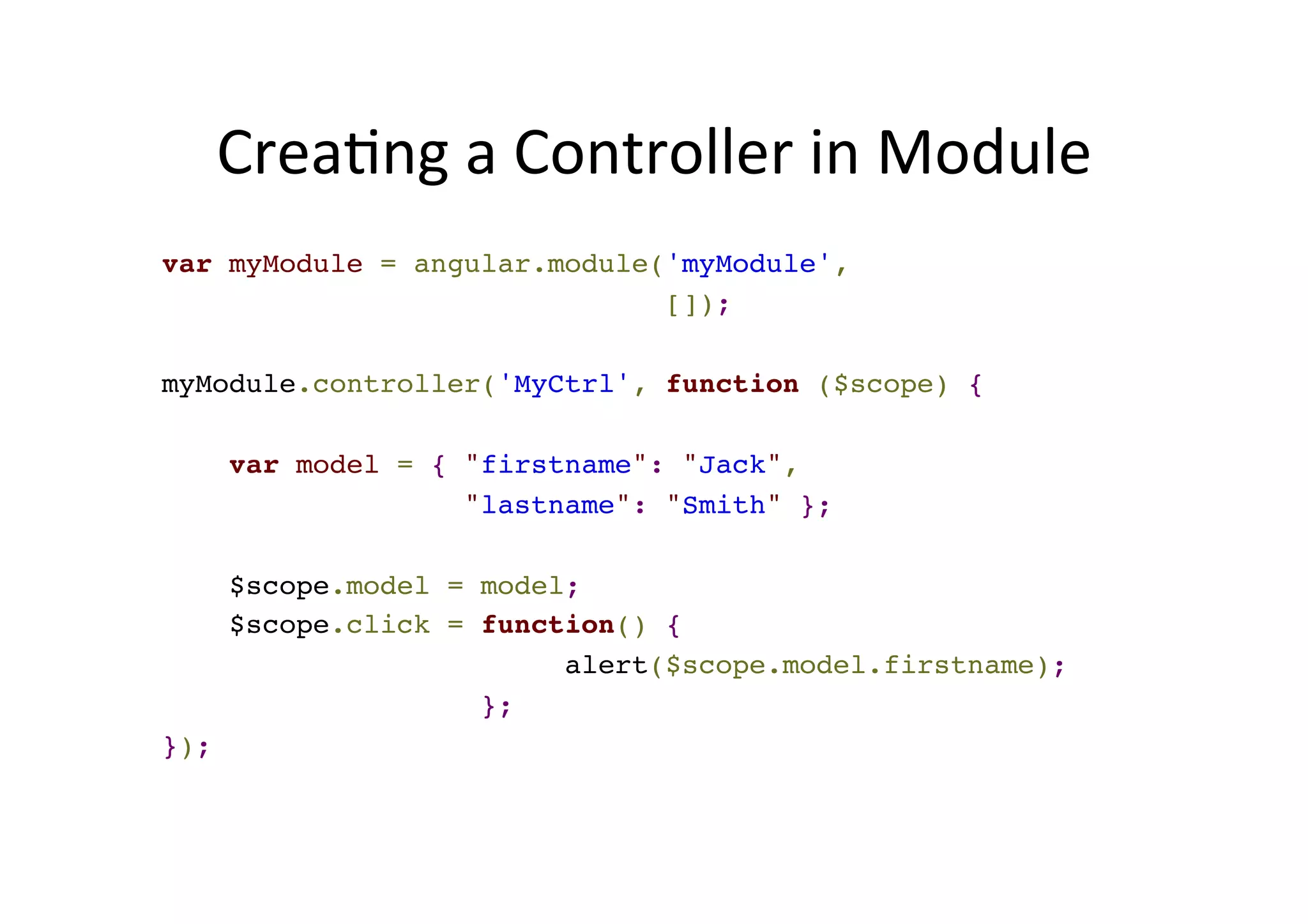
![angular.module • The angular.module is a global place for crea>ng, registering and retrieving Angular modules • Crea>ng a new module – var myModule = angular.module('myMod', []); • The second argument ([]) defines dependent modules – which modules should be loaded first before this](https://image.slidesharecdn.com/00-advanced-intro-to-js-all-recovered-141201020204-conversion-gate02/75/Advanced-JavaScript-Development-200-2048.jpg)
![Template for Controllers // Create new module 'myApp' using angular.module method. // The module is not dependent on any other module var myModule = angular.module('myModule', []); myModule.controller('MyCtrl', function ($scope) { // Your controller code here! });](https://image.slidesharecdn.com/00-advanced-intro-to-js-all-recovered-141201020204-conversion-gate02/75/Advanced-JavaScript-Development-201-2048.jpg)
![Crea>ng a Controller in Module var myModule = angular.module('myModule', []); myModule.controller('MyCtrl', function ($scope) { var model = { "firstname": "Jack", "lastname": "Smith" }; $scope.model = model; $scope.click = function() { alert($scope.model.firstname); }; });](https://image.slidesharecdn.com/00-advanced-intro-to-js-all-recovered-141201020204-conversion-gate02/75/Advanced-JavaScript-Development-202-2048.jpg)
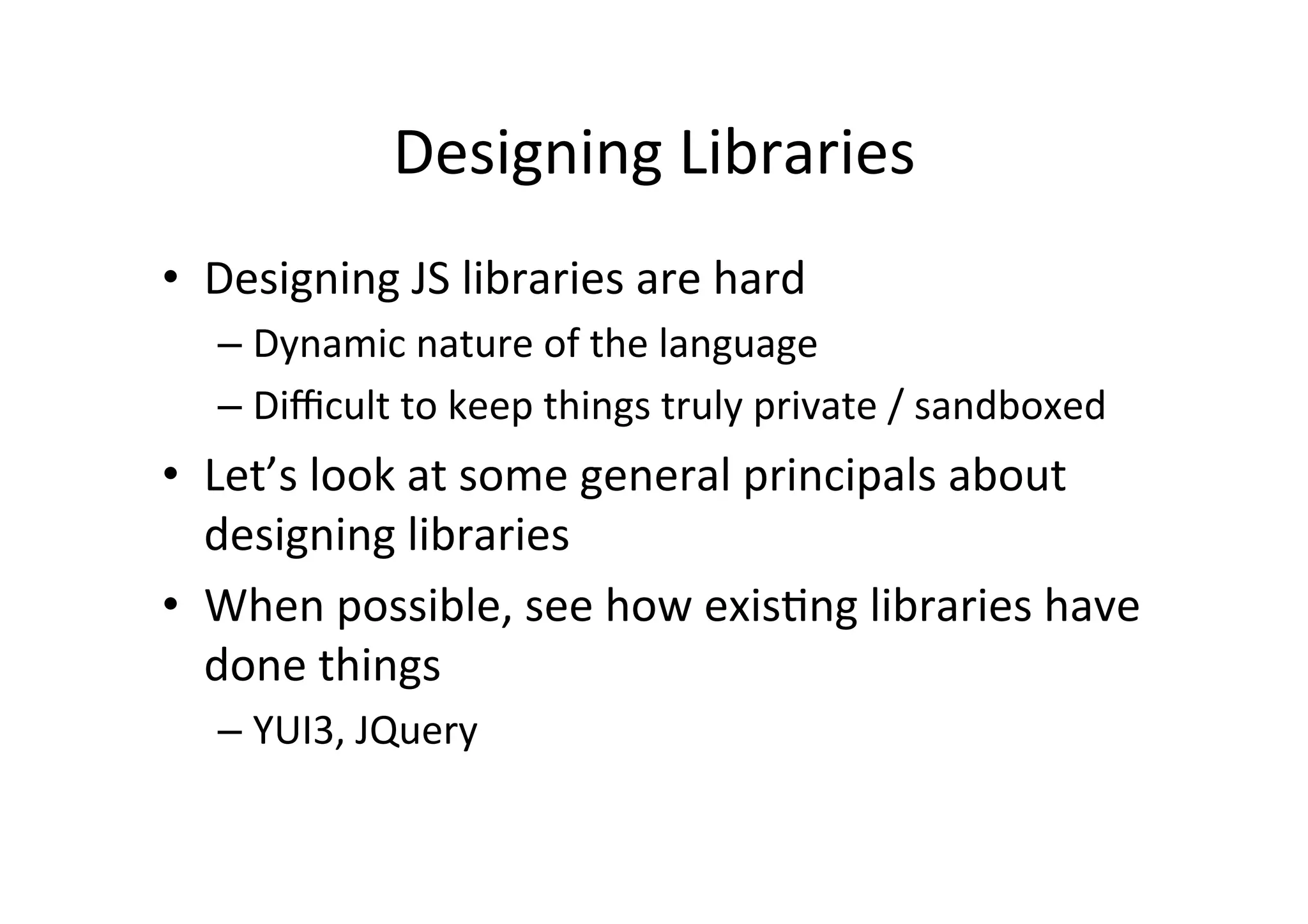
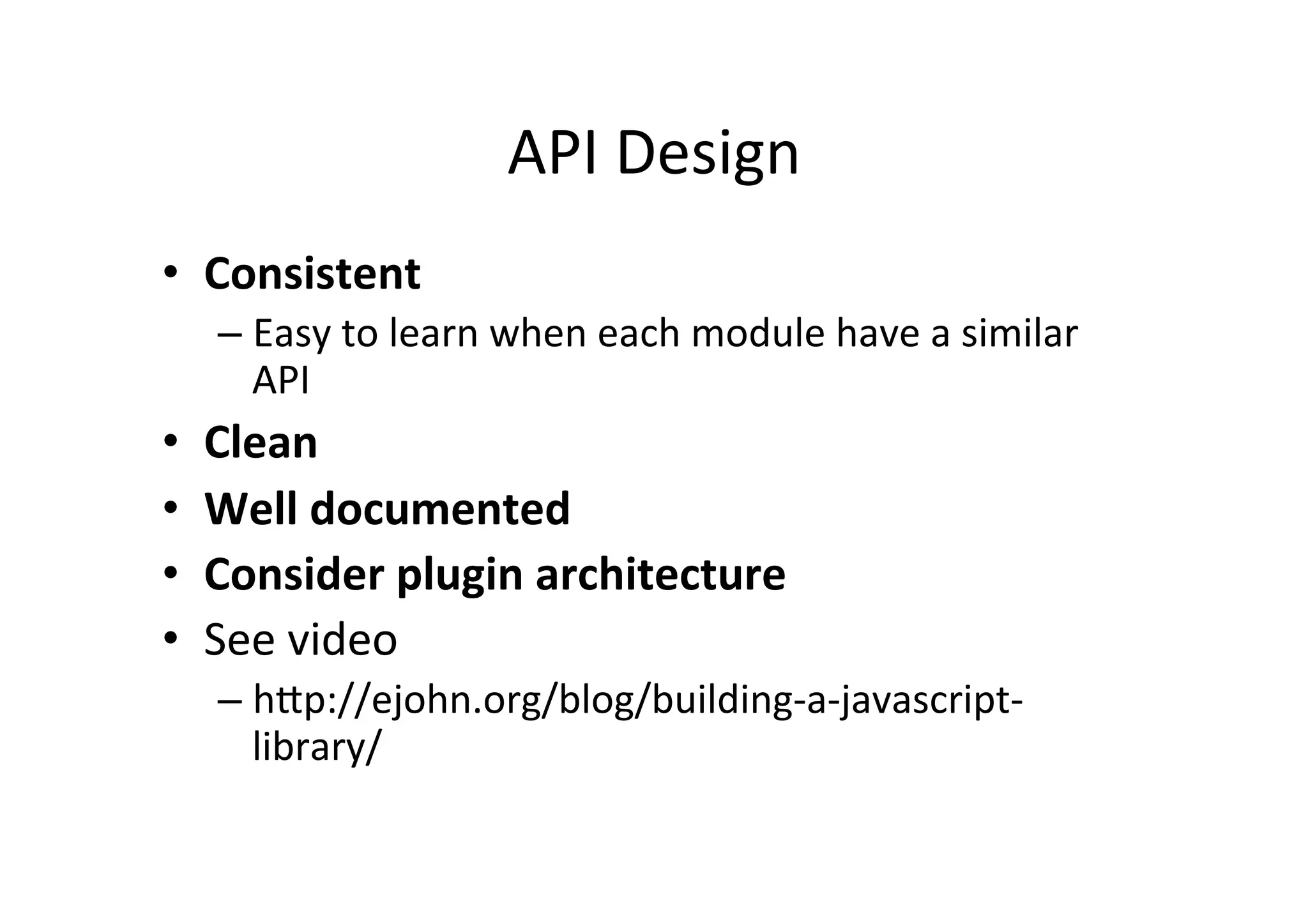
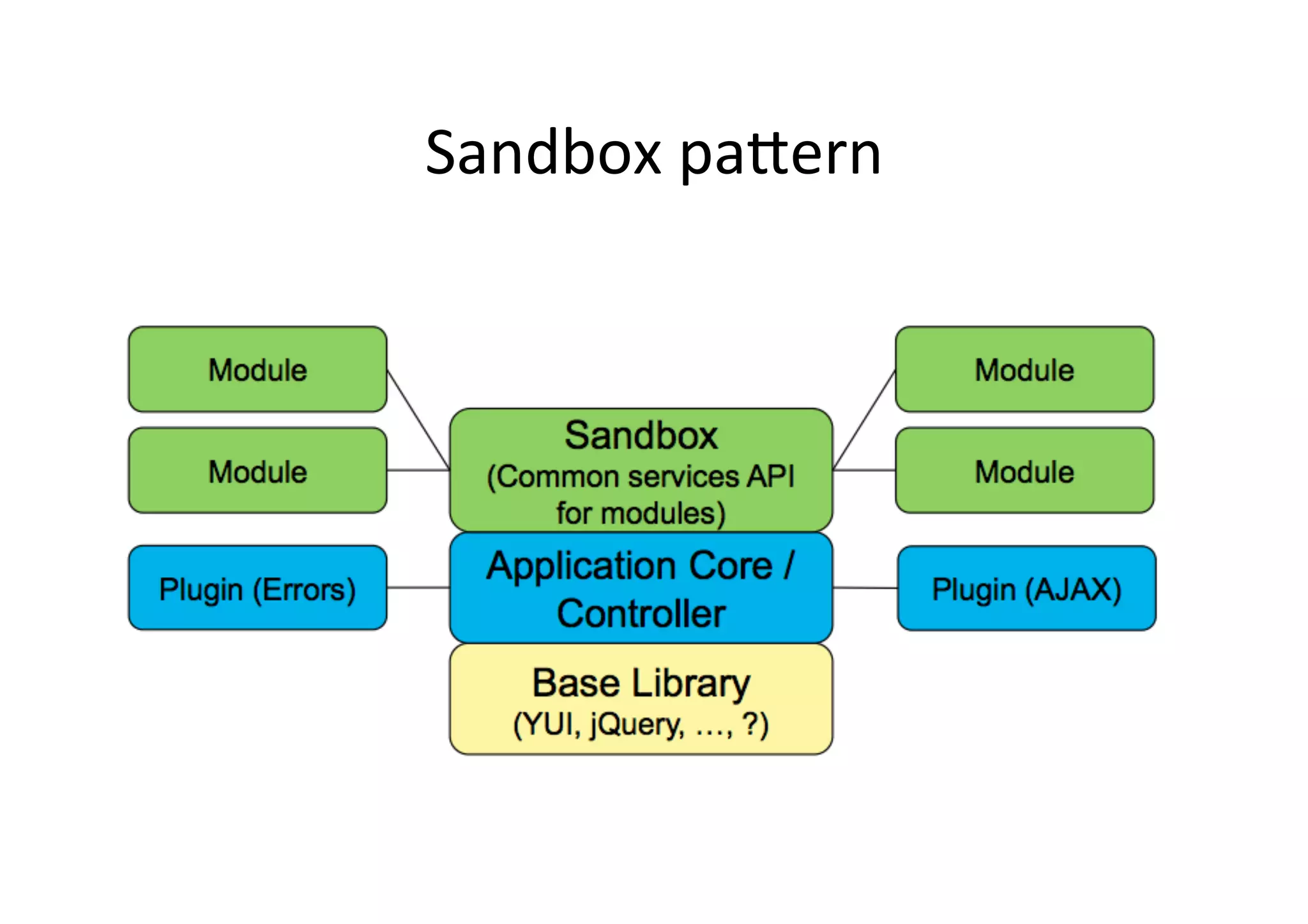
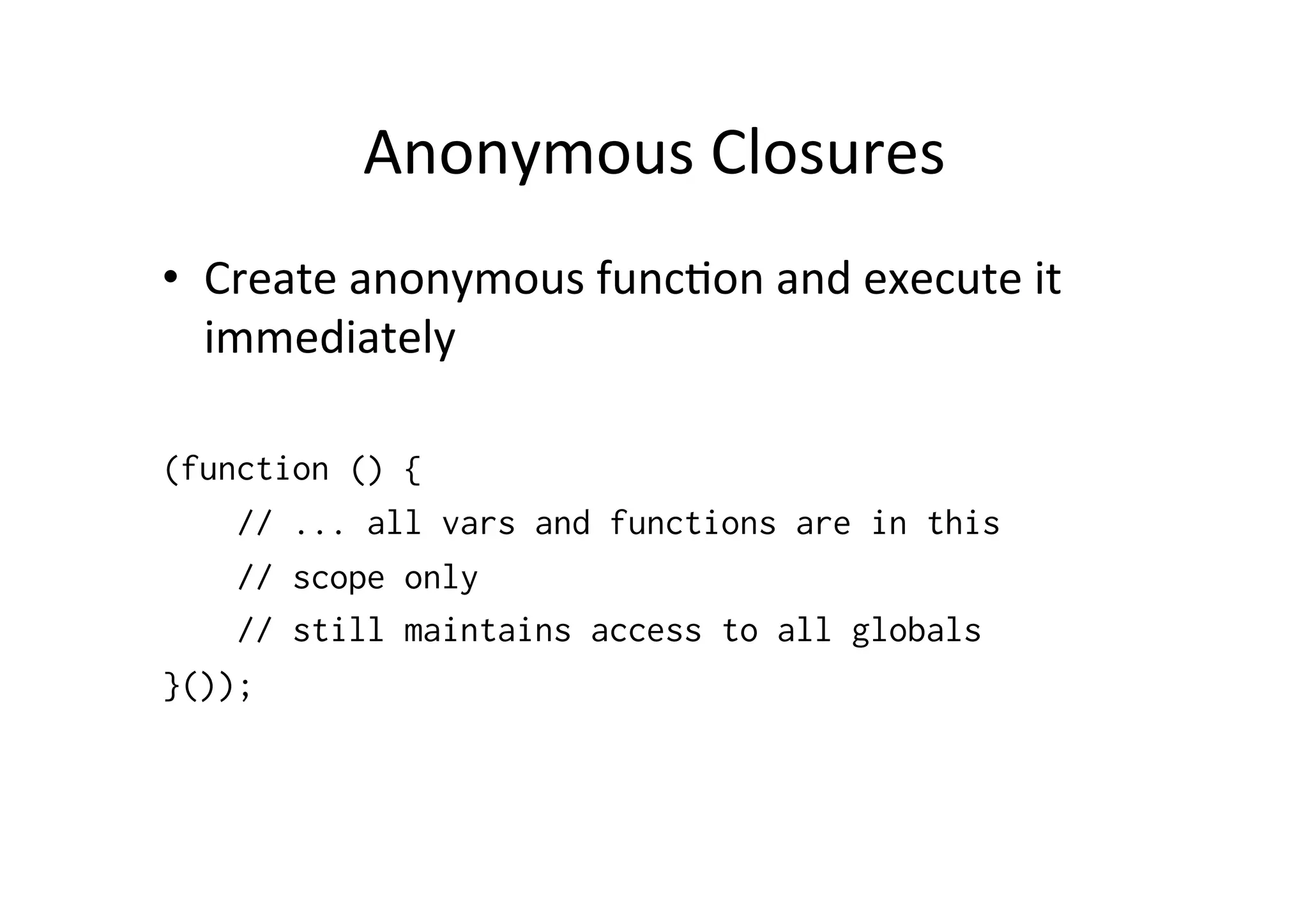
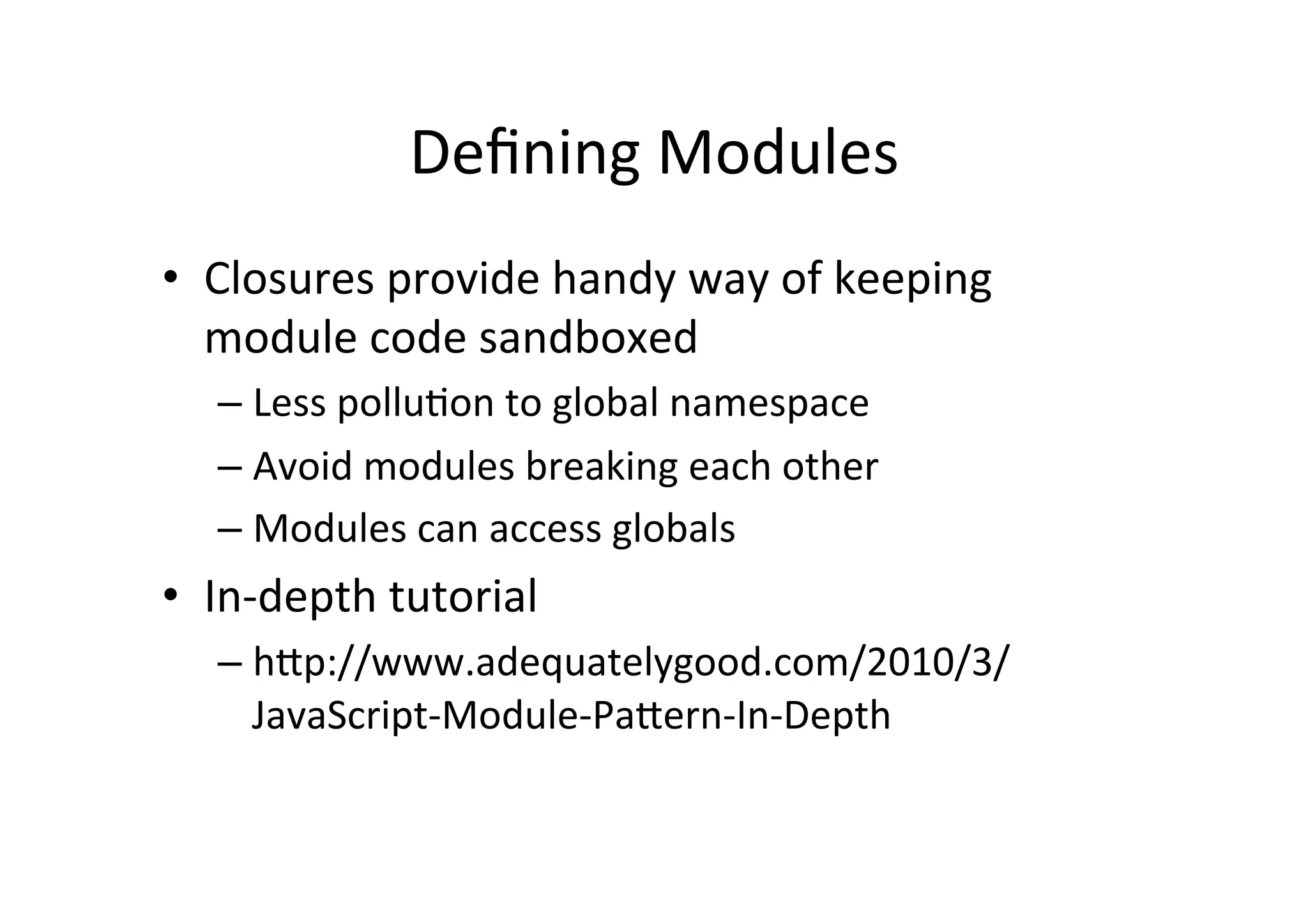
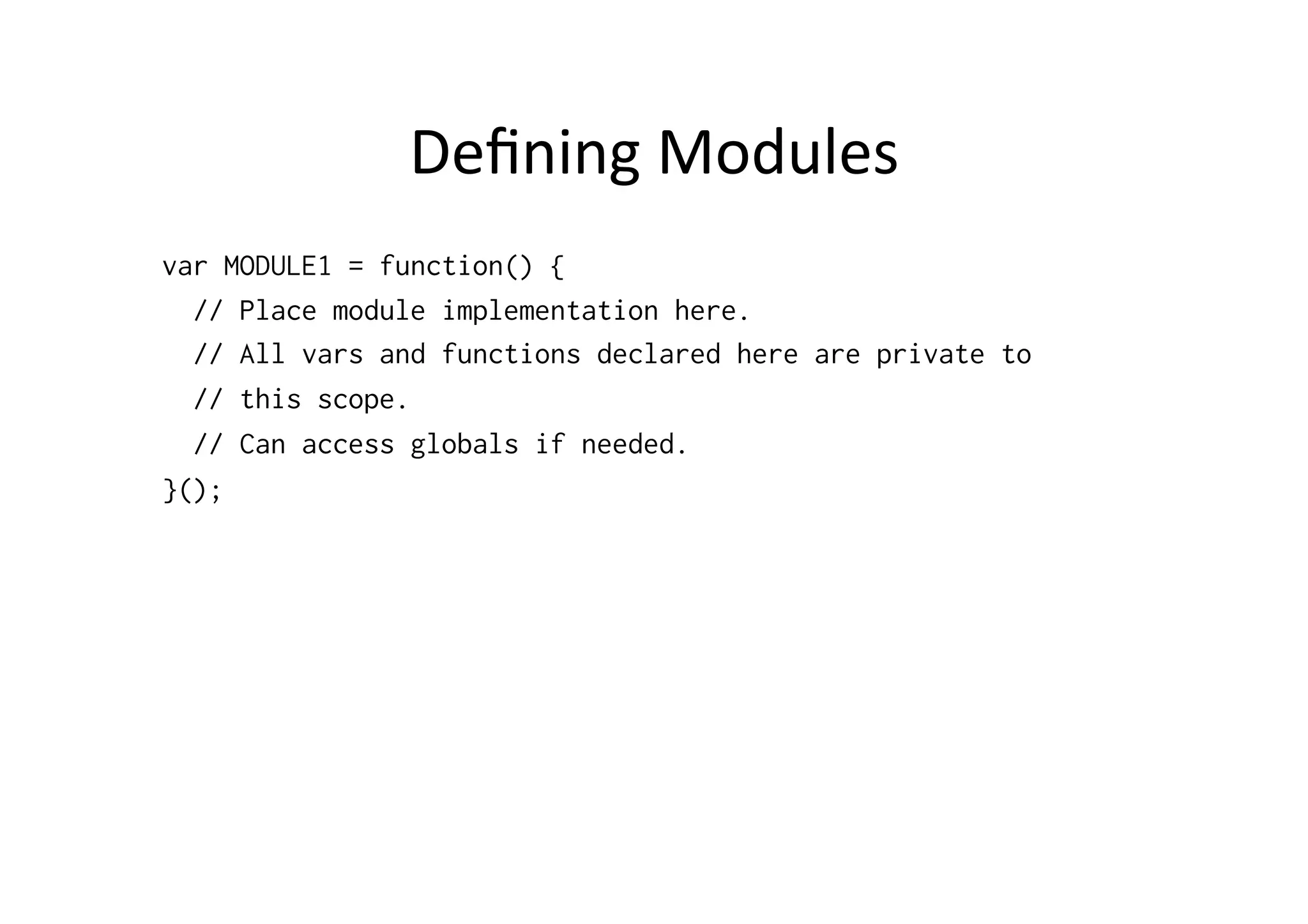
![Defining and using Modules Different modules // modules/number.js define('numberModule', 7); // modules/album.js define('album', { title: 'Haavemaa', artist: 'Tauski Peltonen', year: 1997 }); // modules/counter.js define('counter', function() { var counter = 0; return { increment: function() { counter++; }, getValue: function() { return counter; } }; }); Using module require(['album'], function(album) { console.log(album.title); });](https://image.slidesharecdn.com/00-advanced-intro-to-js-all-recovered-141201020204-conversion-gate02/75/Advanced-JavaScript-Development-209-2048.jpg)
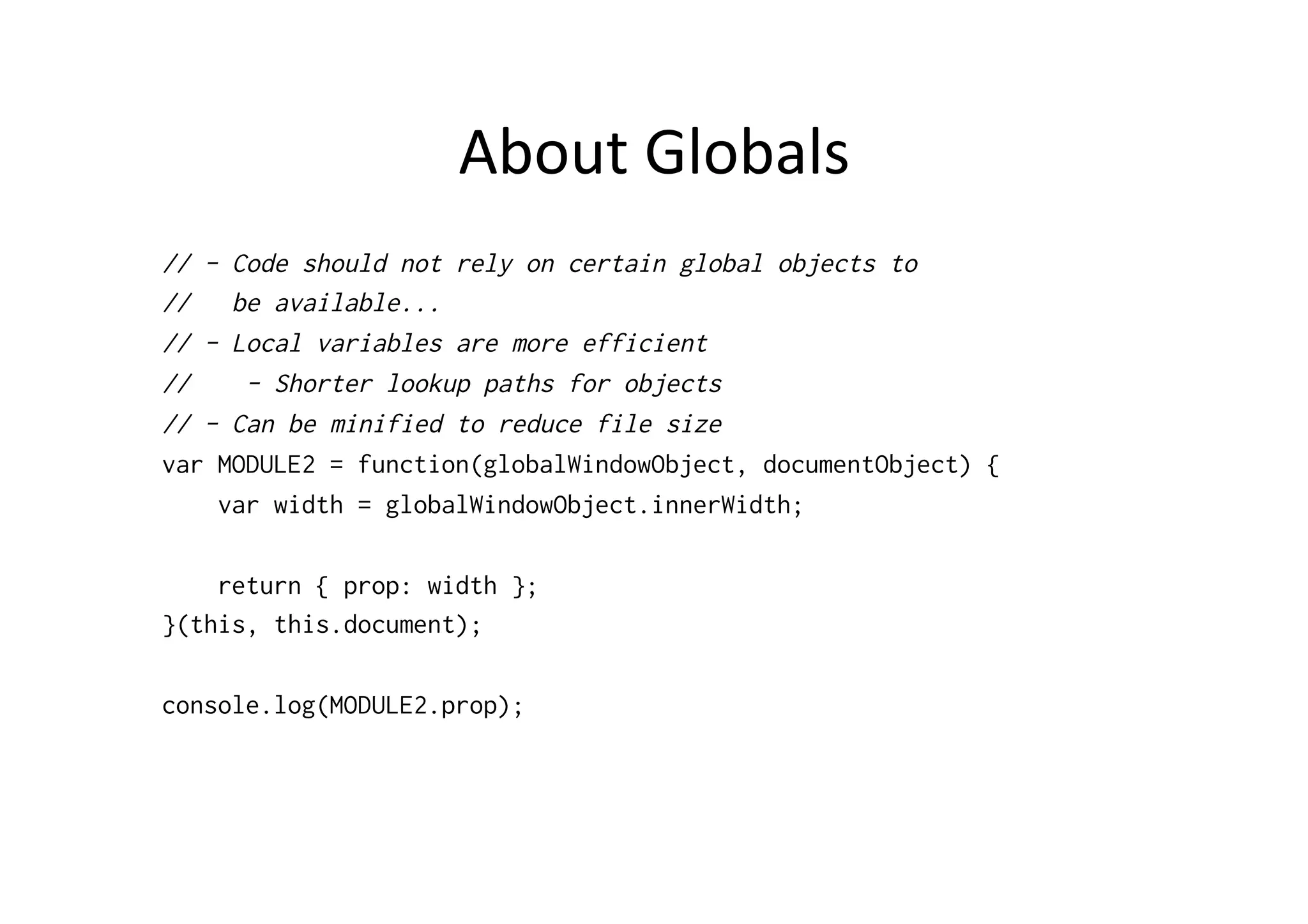

![main.js // Load modules and use them // require() function has two arguments // 1) array of dependencies // 2) callback function to execute once all the dependencies have loaded. // function arguments are the specified dependencies! require(['modules/number', 'modules/counter', 'modules/album'], function(number, counter, album){ // do something with the loaded modules console.log(number) console.log(album.title) counter.increment(); counter.increment(); console.log(counter.getValue()) });](https://image.slidesharecdn.com/00-advanced-intro-to-js-all-recovered-141201020204-conversion-gate02/75/Advanced-JavaScript-Development-212-2048.jpg)
![main.js // Load modules and use them // require() function has two arguments // 1) array of dependencies // 2) callback function to execute once all the dependencies have loaded. // function arguments are the specified dependencies! require(['modules/module1', 'modules/module2'], function(Module1, Module2){ // do something with the loaded modules var module1 = new Module1(); var module2 = new Module2(); console.log(module1.getName()) console.log(module2.getName()) });](https://image.slidesharecdn.com/00-advanced-intro-to-js-all-recovered-141201020204-conversion-gate02/75/Advanced-JavaScript-Development-213-2048.jpg)
![modules/module1+2.js module1.js define([], function () { function returnedModule() { var name = 'Module 1'; this.getName = function () { return name; } }; return returnedModule; }); module2.js define(['modules/module1'], function (Module1) { var module1 = new Module1() function returnedModule() { var name = 'Module 2: '; this.getName = function () { return name + module1.getName(); } }; return returnedModule; });](https://image.slidesharecdn.com/00-advanced-intro-to-js-all-recovered-141201020204-conversion-gate02/75/Advanced-JavaScript-Development-214-2048.jpg)
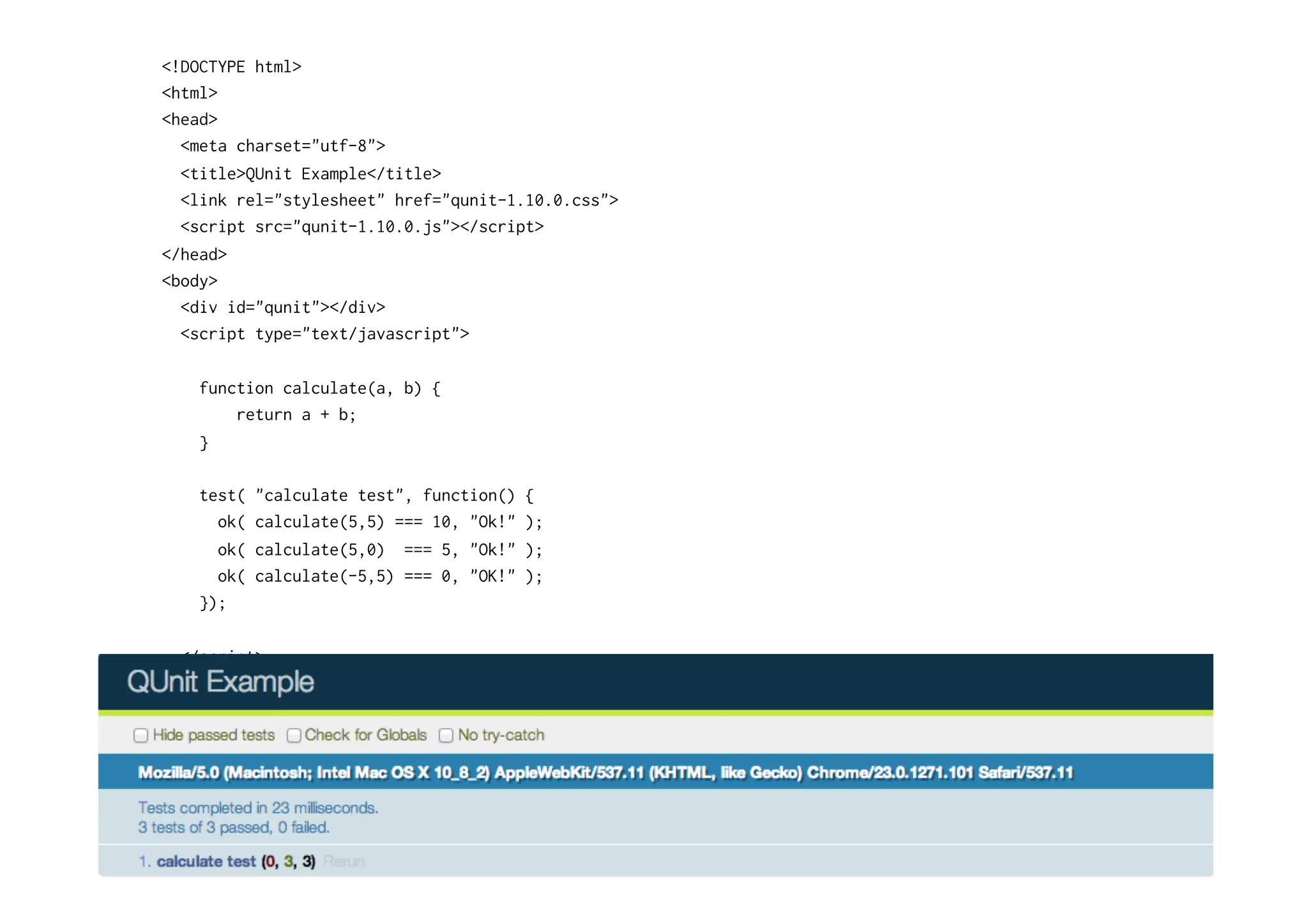
![JQuery and RequireJS require(['jquery'], function(jquery){ // do something with the loaded modules jquery( "#myform" ).submit(function( event ) { ... event.preventDefault(); }); });](https://image.slidesharecdn.com/00-advanced-intro-to-js-all-recovered-141201020204-conversion-gate02/75/Advanced-JavaScript-Development-216-2048.jpg)

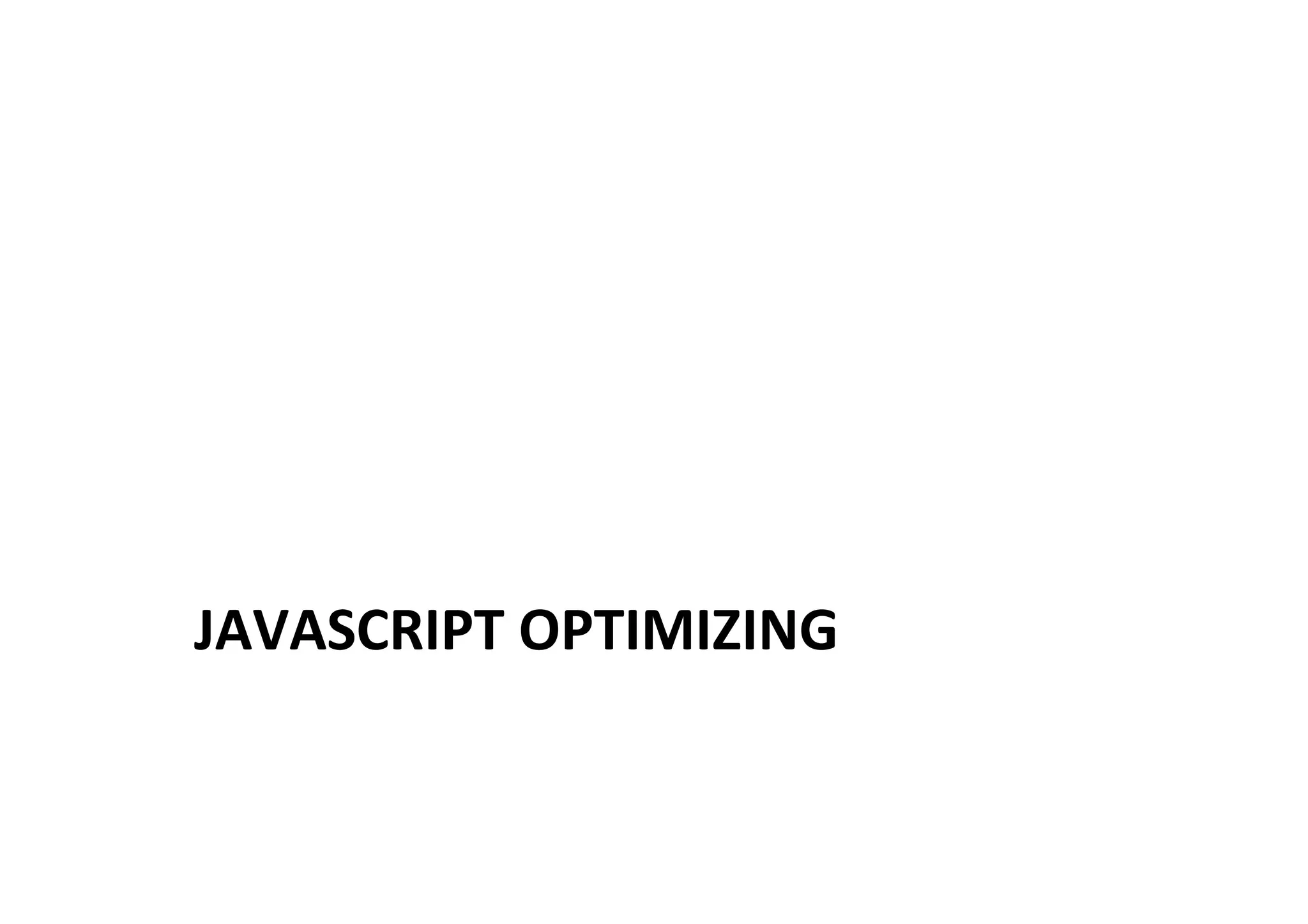
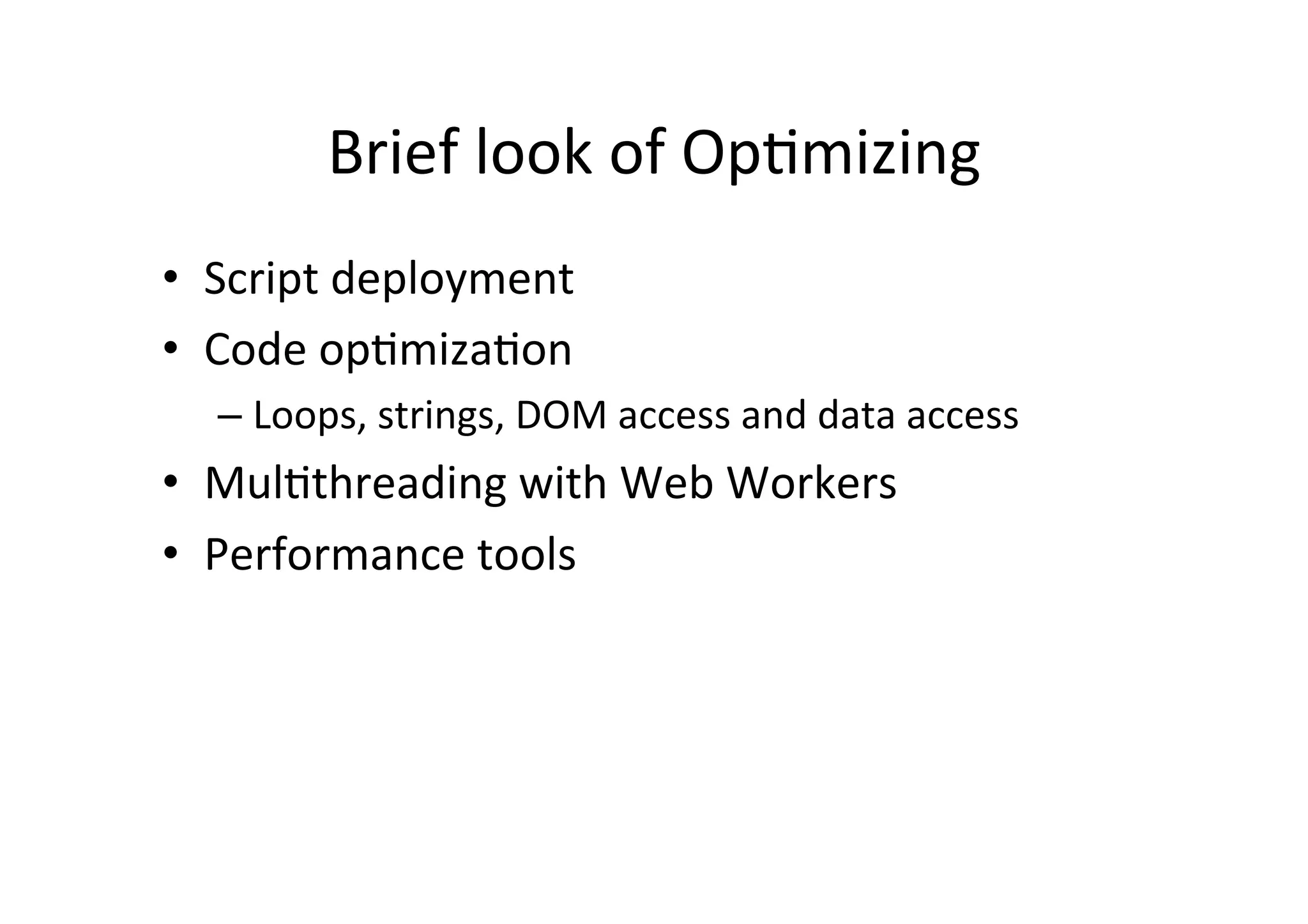
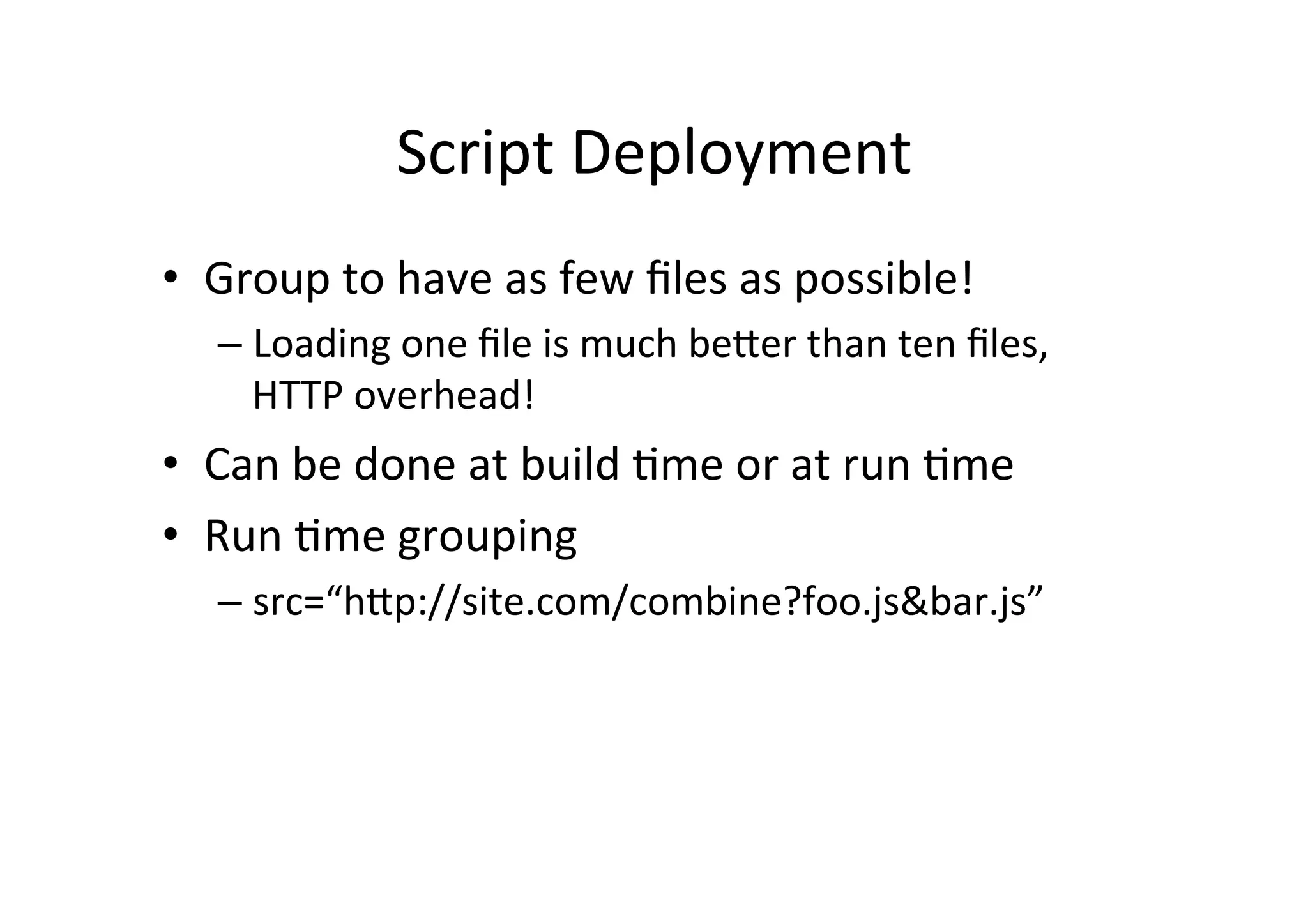
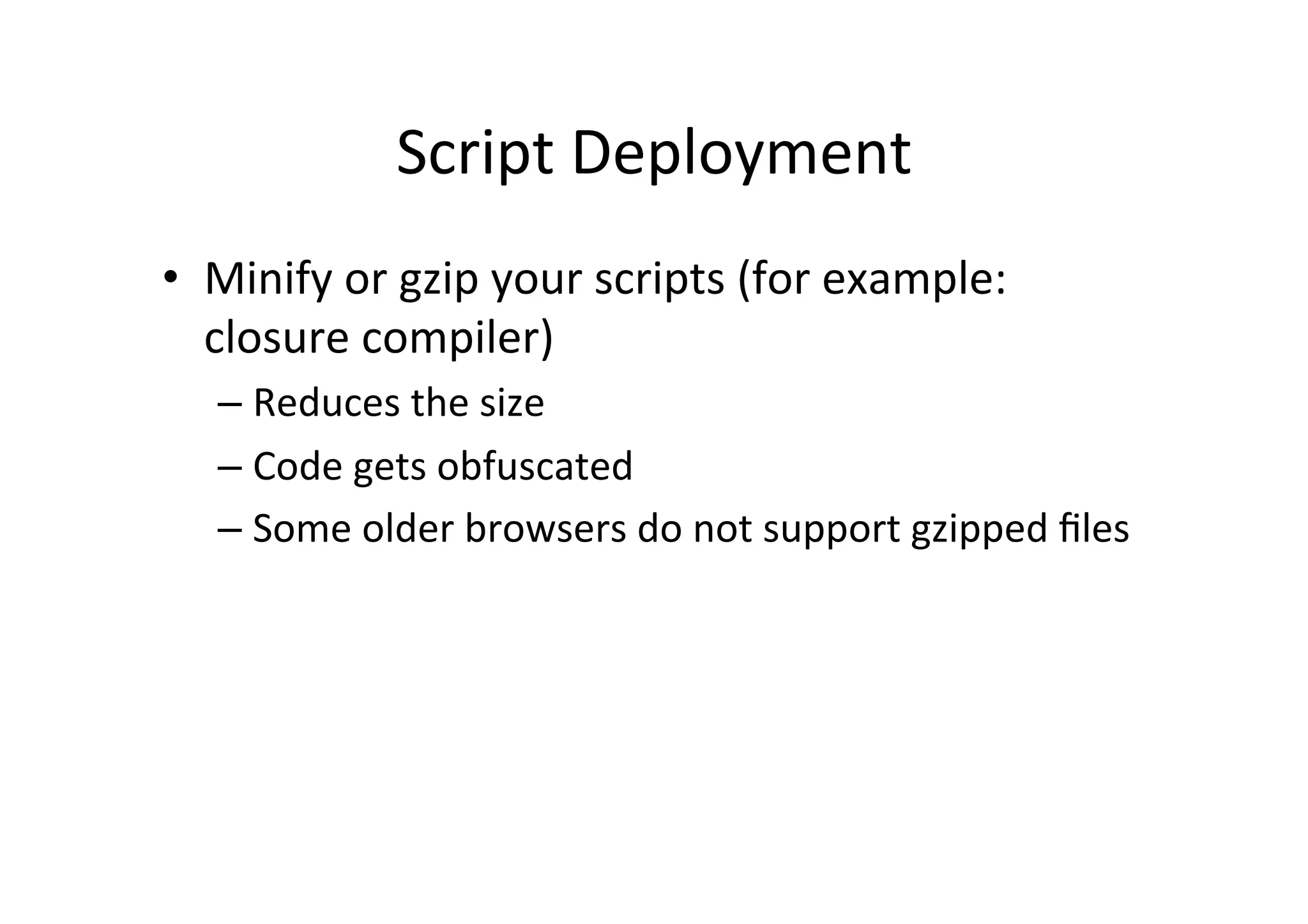
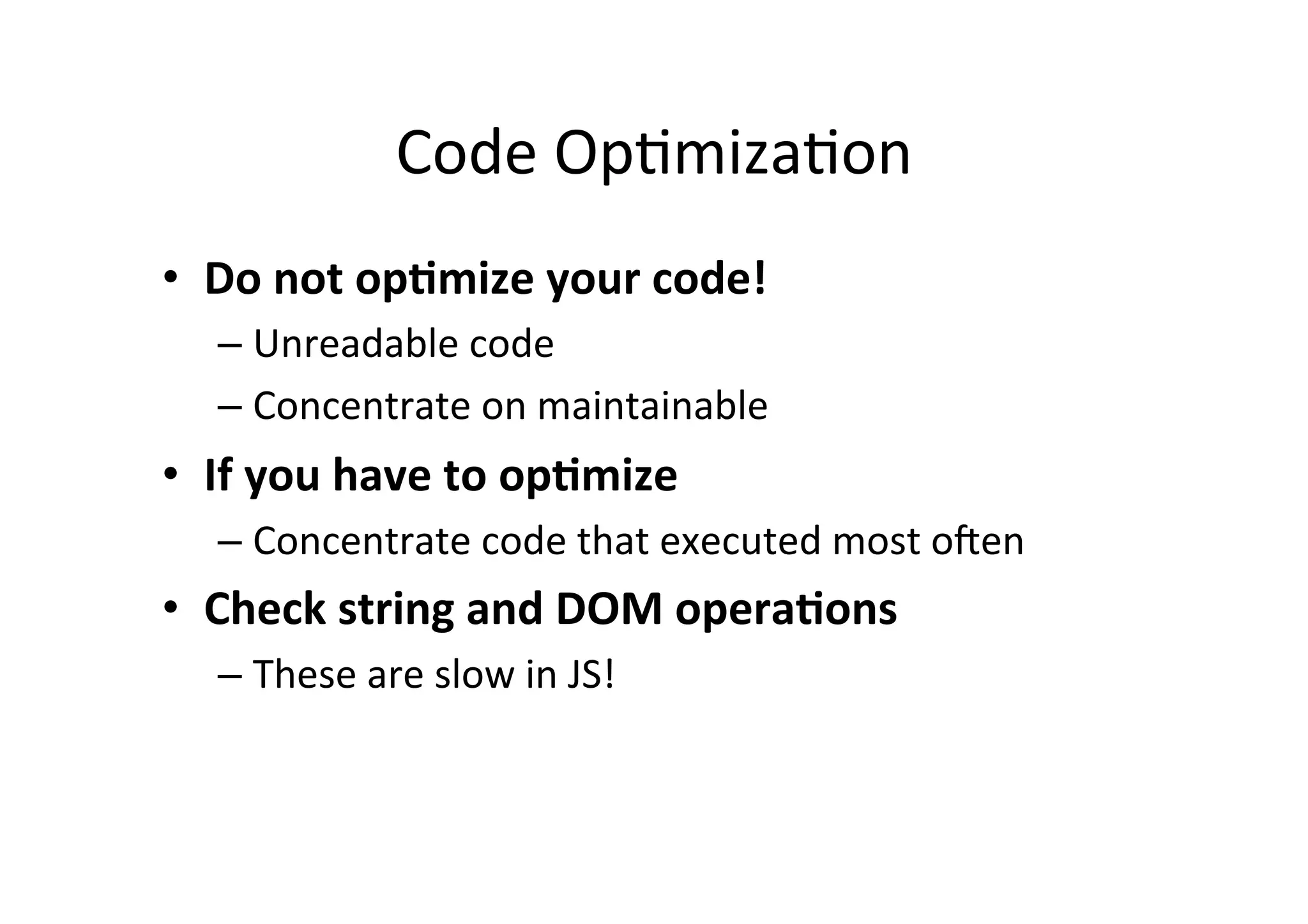
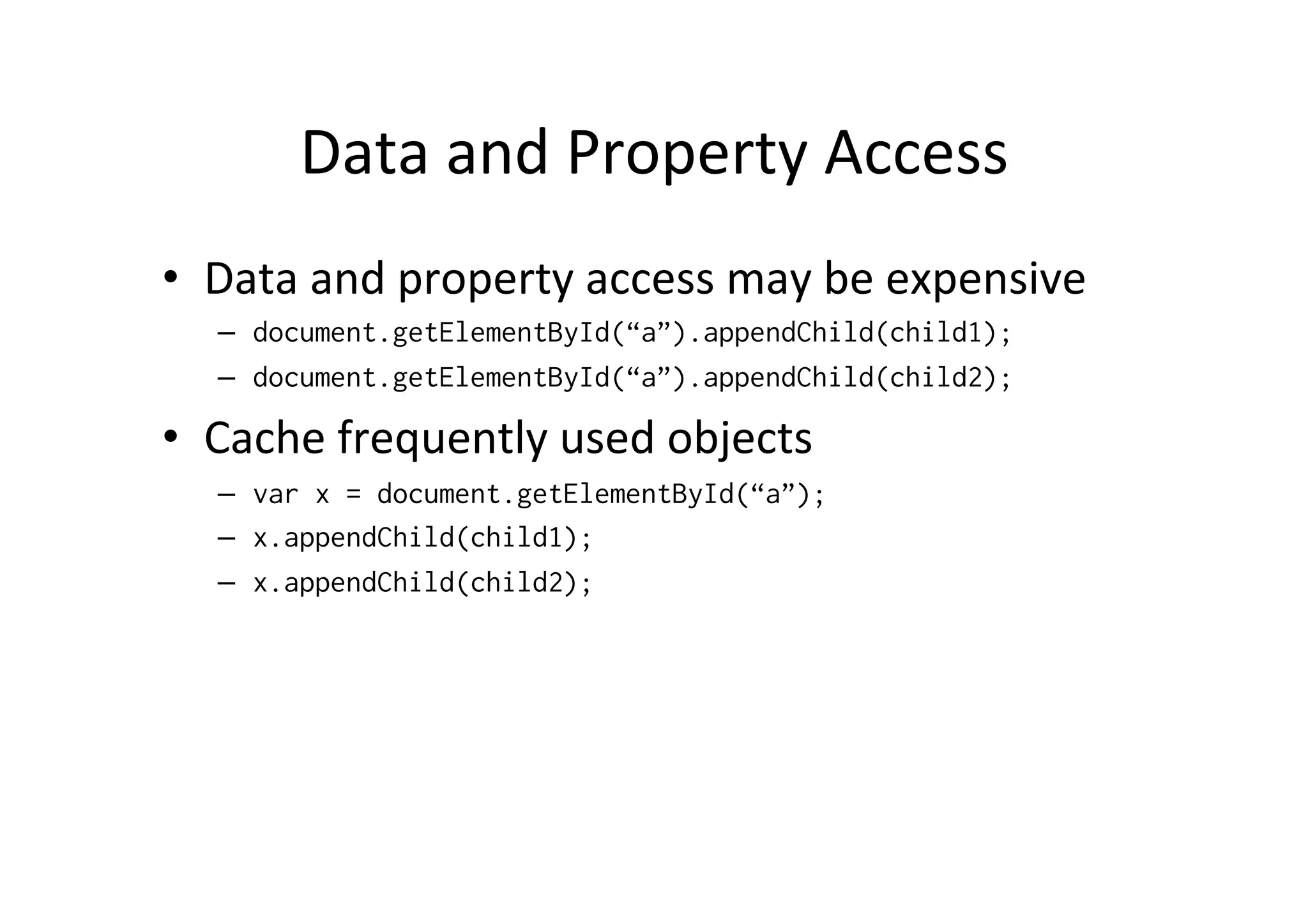
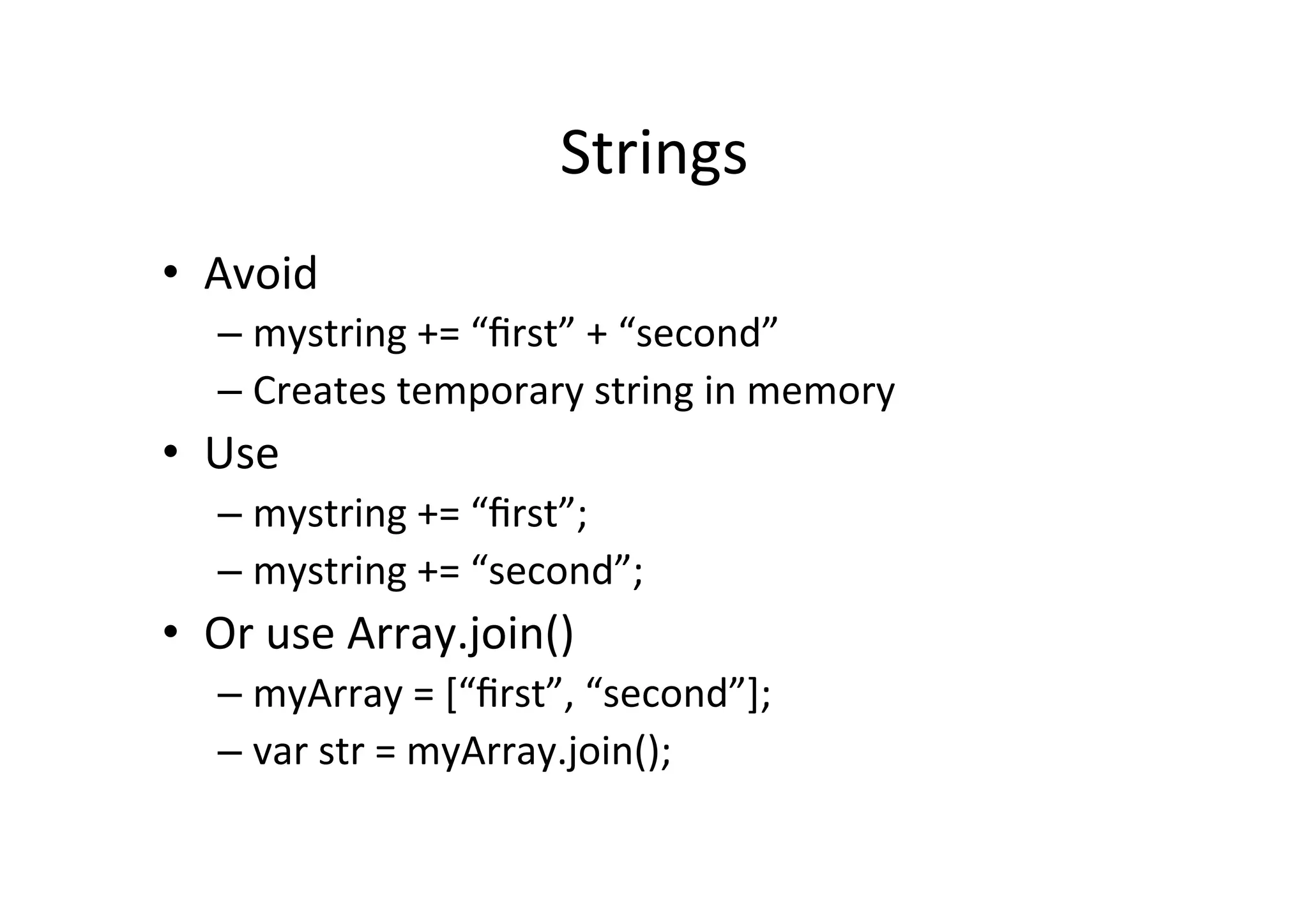
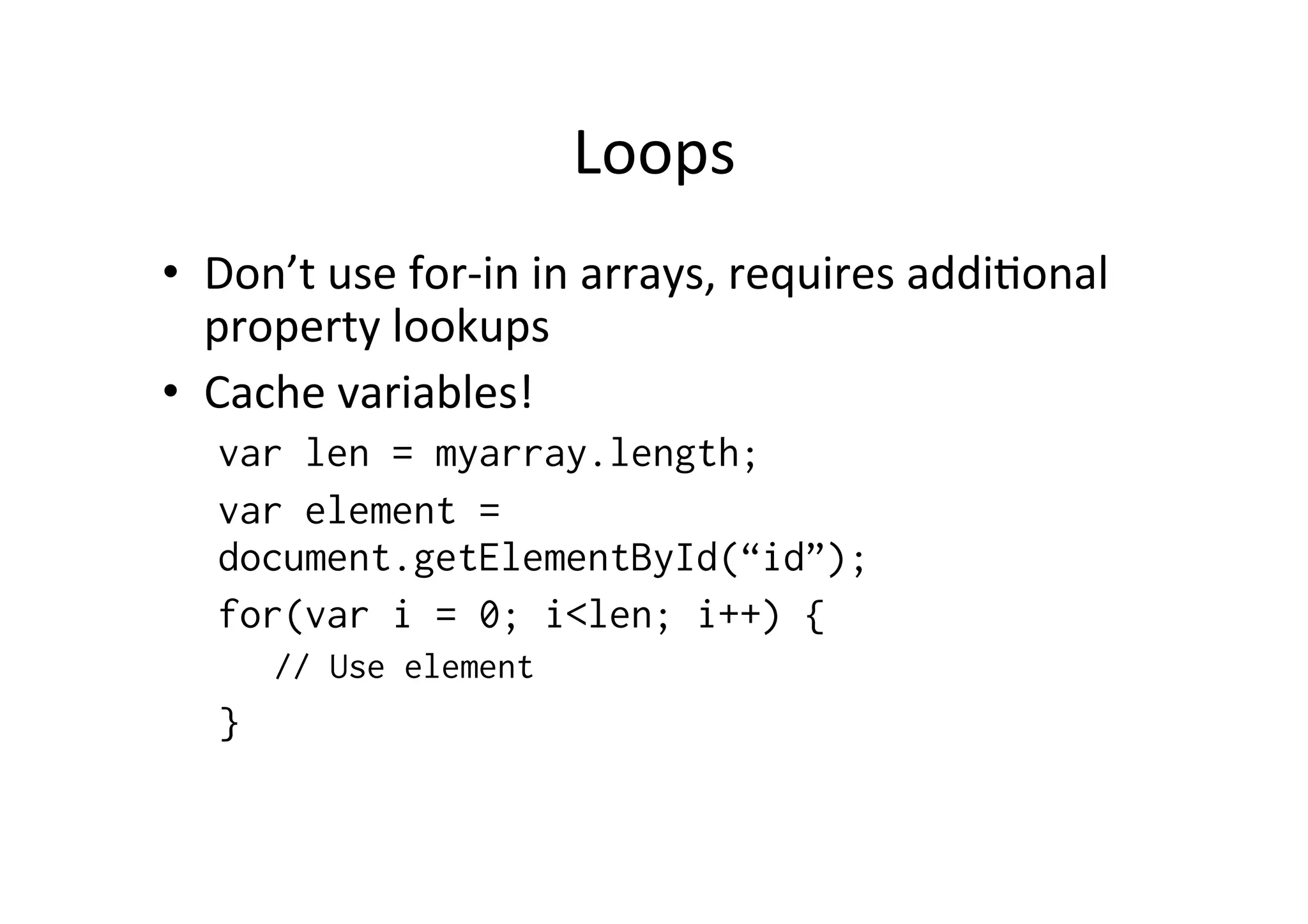
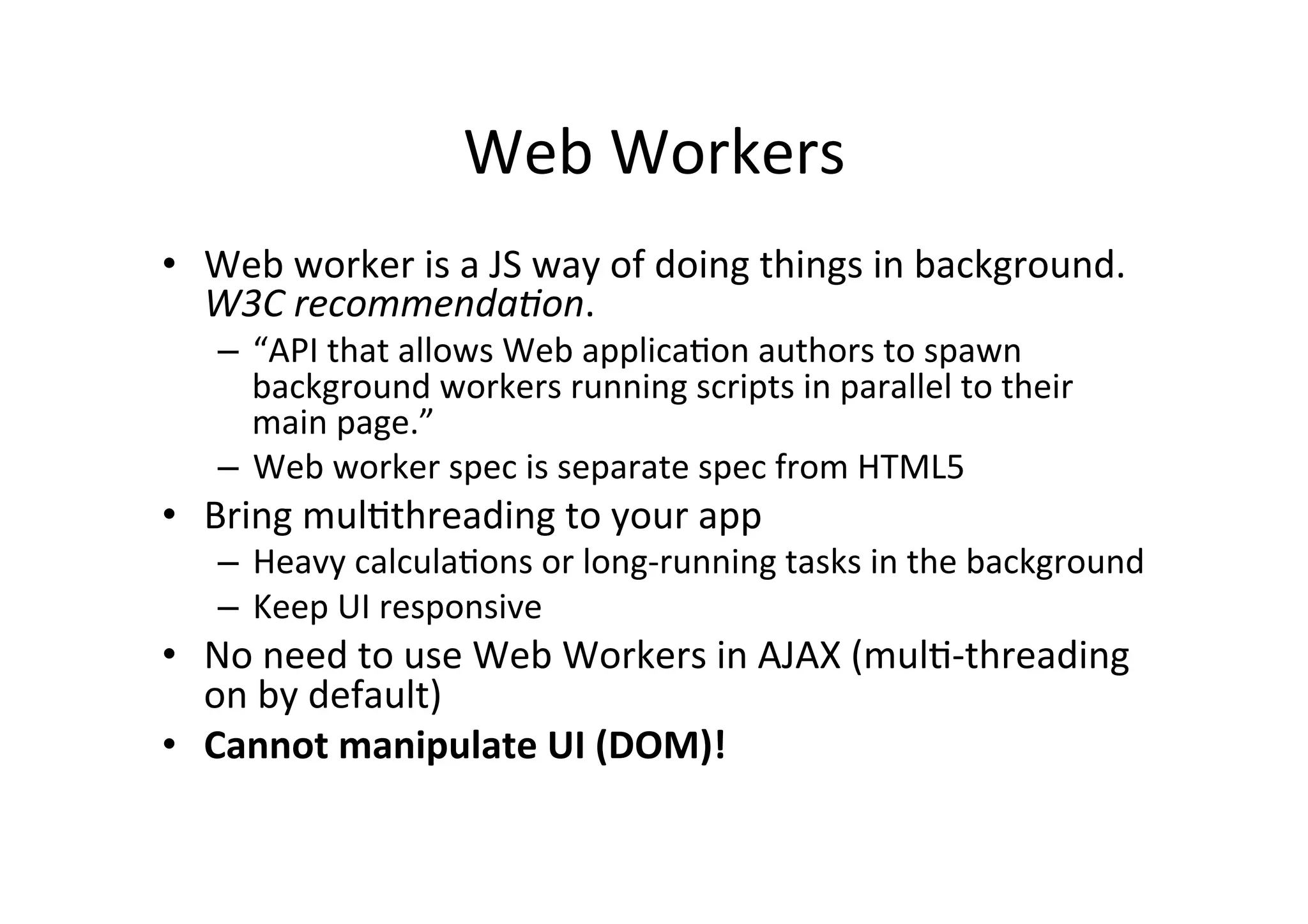
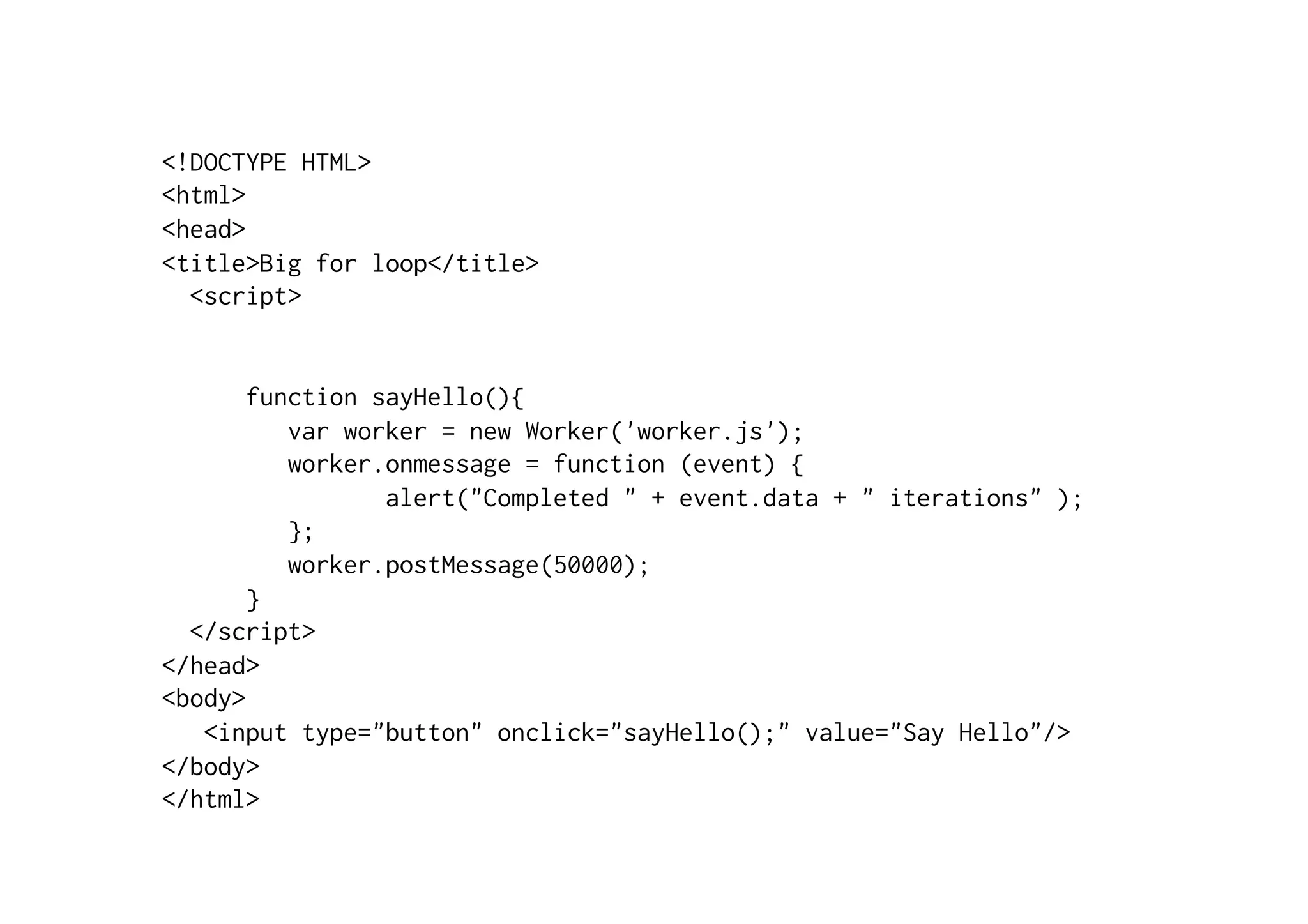
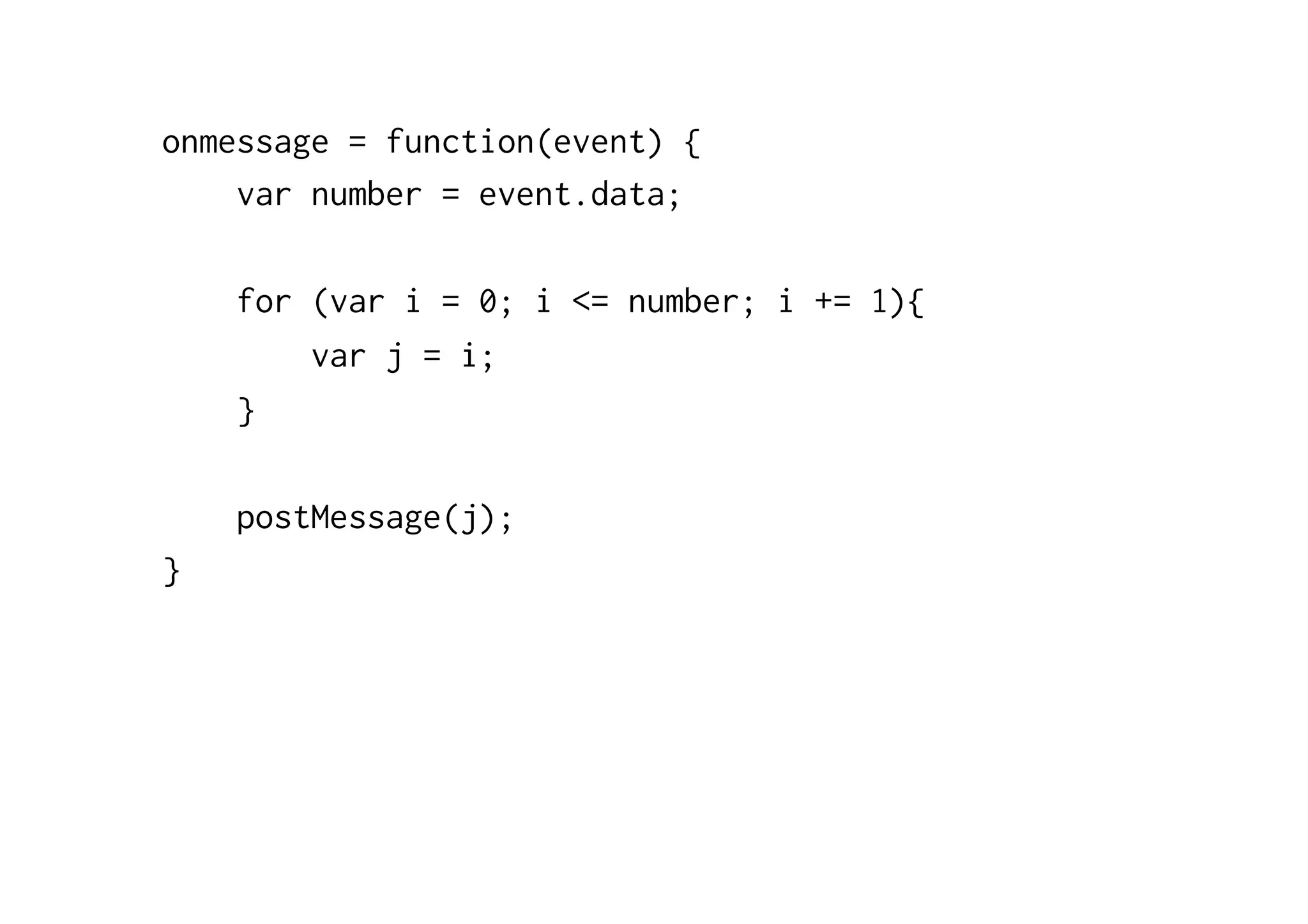
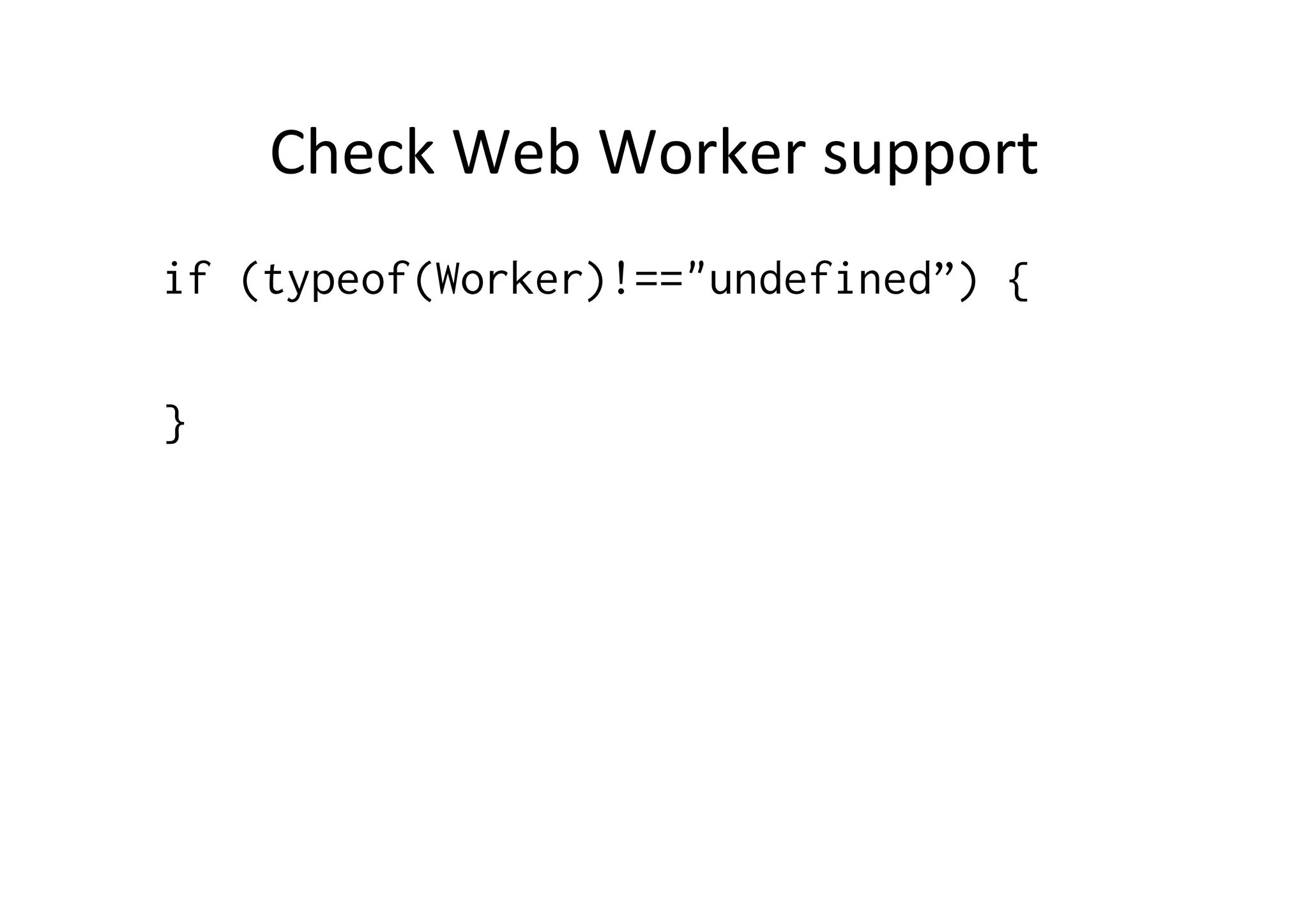


![Three Asser>ons • Basic – ok( boolean [, message]); • If actual == expected – equal( actual, expected [, message]); • if actual === expected – deepEqual( actual, expected [, message)); • Other – http://qunitjs.com/cookbook/#automating- unit-testing](https://image.slidesharecdn.com/00-advanced-intro-to-js-all-recovered-141201020204-conversion-gate02/75/Advanced-JavaScript-Development-232-2048.jpg)







![Strings • Avoid – mystring += “first” + “second” – Creates temporary string in memory • Use – mystring += “first”; – mystring += “second”; • Or use Array.join() – myArray = [“first”, “second”]; – var str = myArray.join();](https://image.slidesharecdn.com/00-advanced-intro-to-js-all-recovered-141201020204-conversion-gate02/75/Advanced-JavaScript-Development-240-2048.jpg)





